Dna-templated Macrocycle Library
Liu; David R. ; et al.
U.S. patent application number 16/968408 was filed with the patent office on 2020-12-24 for dna-templated macrocycle library. This patent application is currently assigned to President and Fellows of Harvard College. The applicant listed for this patent is President and Fellows of Harvard Co. Invention is credited to Alix I. Chan, David R. Liu, Juan Pablo Maianti, Dmitry L. Usanov.
| Application Number | 20200399634 16/968408 |
| Document ID | / |
| Family ID | 1000005116860 |
| Filed Date | 2020-12-24 |

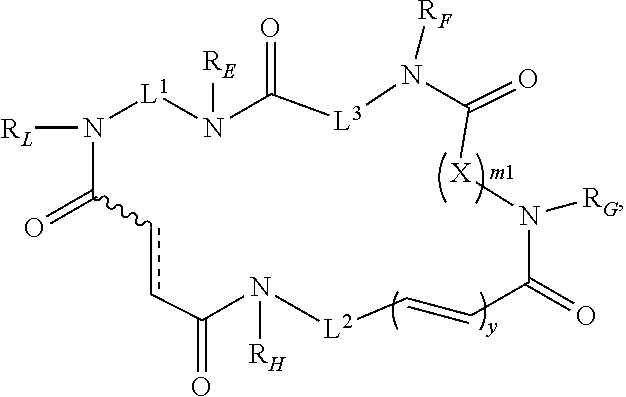
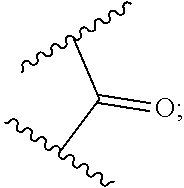


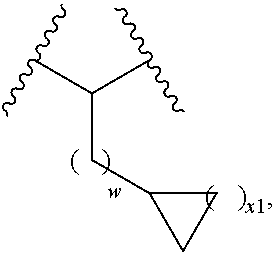
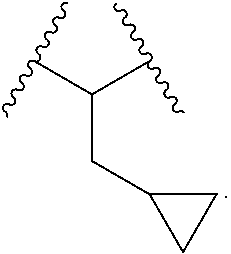





View All Diagrams
| United States Patent Application | 20200399634 |
| Kind Code | A1 |
| Liu; David R. ; et al. | December 24, 2020 |
DNA-TEMPLATED MACROCYCLE LIBRARY
Abstract
The present invention provides nucleic acid templates (e.g., including orthogonal codon sets (e.g., codons from orthogonal codon sets depicted in Tables 5 or 7)) for DNA-templated methods of synthesizing, selecting, and amplifying compounds (e.g., polymers and/or small molecules) described herein. Also provided are novel macrocyclic compounds of Formula (I), and pharmaceutically acceptable salts, solvates, hydrates, polymorphs, co-crystals, tautomers, stereoisomers, isotopically labeled derivatives, prodrugs, libraries, and compositions thereof. Also provided are methods and kits involving the inventive compounds or compositions for treating and/or preventing a disease (e.g., a disease associated with aberrant enzyme activity (e.g., aberrant protease and/or kinase activity (e.g., aberrant IDE activity)), impaired insulin signaling, or insulin resistance in a subject (e.g., a subject having diabetes). Treatment of a subject with a proliferative disease using a compound or composition of the invention may inhibit aberrant protease activity (e.g., aberrant IDE activity).
| Inventors: | Liu; David R.; (Cambridge, MA) ; Usanov; Dmitry L.; (Cambridge, MA) ; Maianti; Juan Pablo; (Cambridge, MA) ; Chan; Alix I.; (Cambridge, MA) | ||||||||||
| Applicant: |
|
||||||||||
|---|---|---|---|---|---|---|---|---|---|---|---|
| Assignee: | President and Fellows of Harvard
College Cambridge MA |
||||||||||
| Family ID: | 1000005116860 | ||||||||||
| Appl. No.: | 16/968408 | ||||||||||
| Filed: | February 8, 2019 | ||||||||||
| PCT Filed: | February 8, 2019 | ||||||||||
| PCT NO: | PCT/US2019/017318 | ||||||||||
| 371 Date: | August 7, 2020 |
Related U.S. Patent Documents
| Application Number | Filing Date | Patent Number | ||
|---|---|---|---|---|
| 62628715 | Feb 9, 2018 | |||
| Current U.S. Class: | 1/1 |
| Current CPC Class: | C07K 7/56 20130101; C12N 15/1068 20130101; A61K 38/00 20130101; A61K 38/12 20130101 |
| International Class: | C12N 15/10 20060101 C12N015/10; C07K 7/56 20060101 C07K007/56; A61K 38/12 20060101 A61K038/12 |
Goverment Interests
GOVERNMENT SUPPORT
[0002] This invention was made with government support under grant number R35 GM118062 awarded by the National Institutes of Health and grant number HR0011-17-2-0049 awarded by the Defense Advanced Research Projects Agency. The government has certain rights in the invention.
Claims
1. A compound of Formula (I): ##STR00112## or a pharmaceutically acceptable salt, solvate, hydrate, stereoisomer, polymorph, tautomer, isotopically enriched form, or prodrug thereof, wherein: is a single or double C--C bond, wherein when is a double C--C bond, then indicates that the adjacent C--C double bond is in a cis or trans configuration; L.sup.1 is substituted or unsubstituted aliphatic, substituted or unsubstituted heteroaliphatic, substituted or unsubstituted carbocyclyene, substituted or unsubstituted arylene, or substituted or unsubstituted heterocyclylene; L.sup.2 is substituted or unsubstituted aliphatic, substituted or unsubstituted heteroaliphatic, substituted or unsubstituted carbocyclyene, substituted or unsubstituted arylene, or substituted or unsubstituted heterocyclylene; L.sup.3 is substituted or unsubstituted aliphatic, substituted or unsubstituted heteroaliphatic, substituted or unsubstituted carbocyclyene, substituted or unsubstituted arylene, or substituted or unsubstituted heterocyclylene; X is --O--C((R.sup.3A)(R.sup.3B)).sub.s--, --C((R.sup.3A)(R.sup.3B)).sub.s--, optionally substituted carbocyclylene, optionally substituted heterocyclylene, or optionally substituted arylene; R.sup.3A is hydrogen; halogen; substituted or unsubstituted aliphatic; substituted or unsubstituted heteroaliphatic; substituted or unsubstituted aryl; substituted or unsubstituted heteroaryl; substituted or unsubstituted acyl; R.sup.3B is hydrogen; halogen; substituted or unsubstituted aliphatic; substituted or unsubstituted heteroaliphatic; substituted or unsubstituted aryl; substituted or unsubstituted heteroaryl; substituted or unsubstituted acyl; or optionally R.sup.3A and R.sup.3B are joined together to form optionally substituted carbocyclyl or ##STR00113## each instance of R.sub.E, R.sub.F, R.sub.G, R.sub.H, and R.sub.L is independently hydrogen; halogen; substituted or unsubstituted acyl; a nitrogen protecting group; substituted or unsubstituted aliphatic; substituted or unsubstituted heteroaliphatic; substituted or unsubstituted aryl; substituted or unsubstituted heteroaryl; substituted or unsubstituted hydroxyl; substituted or unsubstituted thiol; substituted or unsubstituted amino; or optionally R.sub.G and one instance of R.sup.3A or R.sup.3B are joined together with the intervening atoms to form optionally substituted heterocyclyl; m1 is 0, 1, or 2; s is 0, 1, 2, 3, or 4; and y is 0 or 1.
2. The compound of claim 1, wherein L.sup.1 is substituted or unsubstituted C.sub.1-6 aliphatic, substituted or unsubstituted arylene, or substituted or unsubstituted heterocyclylene.
3. The compound of claim 1, wherein L.sup.2 is of the formula: ##STR00114## wherein: R.sub.1 is hydrogen; halogen; substituted or unsubstituted aliphatic; substituted or unsubstituted heteroaliphatic; substituted or unsubstituted aryl; substituted or unsubstituted heteroaryl; substituted or unsubstituted acyl; --OR.sub.A; --N(R.sub.A).sub.2; --SR.sub.A; .dbd.O; --CN; --NO.sub.2; --SCN; --SOR.sub.A; or --SO.sub.2R.sub.A; wherein each occurrence of R.sub.A is independently hydrogen; a protecting group; substituted or unsubstituted aliphatic; substituted or unsubstituted heteroaliphatic; substituted or unsubstituted acyl; substituted or unsubstituted aryl; or substituted or unsubstituted heteroaryl; R.sub.2 is hydrogen; halogen; substituted or unsubstituted aliphatic; substituted or unsubstituted heteroaliphatic; substituted or unsubstituted aryl; substituted or unsubstituted heteroaryl; substituted or unsubstituted acyl; --OR.sub.B; --N(R.sub.B).sub.2; --SR.sub.B; .dbd.O; --CN; --NO.sub.2; --SCN; --SOR.sub.B; or --SO.sub.2R.sub.B; wherein each occurrence of R.sub.B independently hydrogen; a protecting group; substituted or unsubstituted aliphatic; substituted or unsubstituted heteroaliphatic; substituted or unsubstituted acyl; substituted or unsubstituted aryl; or substituted or unsubstituted heteroaryl, or optionally R.sub.1 and R.sub.2 are joined together to form a spiro-linked, optionally substituted carbocyclyl, or optionally R.sub.H and one instance of R.sup.1 or R.sup.2 are joined together with the intervening atoms to form optionally substituted heterocyclyl; and x is 0, 1, 2, or 3.
4. The compound of claim 1, wherein L.sup.2 is of the formula: ##STR00115## wherein R.sub.5 is substituted or unsubstituted aliphatic; substituted or unsubstituted heteroaliphatic; substituted or unsubstituted aryl; substituted or unsubstituted heteroaryl; substituted or unsubstituted amino; --C(.dbd.O)--N(R.sub.J).sub.2; --C(.dbd.O)--OR.sub.J; or --C(.dbd.O)--SR.sub.J, or --CH.sub.2--C(.dbd.O)N(R.sub.J).sub.2, wherein each occurrence of R.sub.J is independently hydrogen; a protecting group; substituted or unsubstituted aliphatic; substituted or unsubstituted heteroaliphatic; substituted or unsubstituted acyl; substituted or unsubstituted aryl; or substituted or unsubstituted heteroaryl; or two R.sub.J groups are joined to form a substituted or unsubstituted heterocyclic group; optionally wherein R.sub.5 further comprises a label, resin, or therapeutic agent attached thereto.
5. The compound of claim 1, wherein L.sup.2 is of the formula: ##STR00116## wherein w is 0, 1, or 2; and x1 is 1 or 2.
6. The compound of claim 1, wherein L.sup.2 is of the formula: ##STR00117##
7. The compound of claim 1, wherein L.sup.2 is substituted or unsubstituted 5- to 7-membered carbocyclyene, substituted or unsubstituted arylene, or substituted or unsubstituted, 4- to 10-membered heterocyclylene.
8. The compound of claim 3, wherein R.sub.1 and R.sub.2 are joined together to form a spiro-linked, optionally substituted carbocyclyl.
9. The compound of claim 3, wherein R.sub.1 is substituted or unsubstituted aryl.
10. The compound of claim 3, wherein R.sub.2 is substituted or unsubstituted aryl.
11. The compound of any one of claims 1-10, wherein y is 1.
12. The compound of claim 1, wherein L.sup.3 is substituted or unsubstituted C.sub.1-6 aliphatic, substituted or unsubstituted carbocyclyene, substituted or unsubstituted arylene, or substituted or unsubstituted heterocyclylene.
13. The compound of claim 1, wherein L.sup.3 is of the formula: ##STR00118## wherein R.sup.4A is hydrogen; halogen; substituted or unsubstituted aliphatic; substituted or unsubstituted heteroaliphatic; substituted or unsubstituted aryl; substituted or unsubstituted heteroaryl; substituted or unsubstituted acyl; R.sup.4B is hydrogen; halogen; substituted or unsubstituted aliphatic; substituted or unsubstituted heteroaliphatic; substituted or unsubstituted aryl; substituted or unsubstituted heteroaryl; substituted or unsubstituted acyl; or optionally R.sub.F and one instance of R.sup.4A or R.sup.4B are joined together with the intervening atoms to form optionally substituted heterocyclyl, and r is 0, 1, or 2.
14. The compound of any one of claims 1-13, wherein R.sup.4A is hydrogen, substituted or unsubstituted C.sub.1-6 aliphatic, substituted or unsubstituted aryl, substituted or unsubstituted heterocyclyl, or substituted or unsubstituted heteroaryl.
15. The compound of claim 13, wherein R.sup.4B is hydrogen, substituted or unsubstituted C.sub.1-6 aliphatic, substituted or unsubstituted aryl, substituted or unsubstituted heterocyclyl, or substituted or unsubstituted heteroaryl.
16. The compound of claim 13, wherein R.sup.4A and R.sup.4B are joined together with the intervening atoms to form optionally substituted carbocyclyl, or optionally substituted heterocyclyl.
17. The compound of claim 13, wherein R.sub.F and one instance of R.sup.4A are joined together with the intervening atoms to form optionally substituted heterocyclyl.
18. The compound of any one of claims 1-17, wherein X is --O--(CH.sub.2).sub.2--, --C((R.sup.3A)(R.sup.3B)).sub.s--, optionally substituted carbocyclylene, optionally substituted heterocyclylene, or optionally substituted arylene.
19. The compound of claim 18, wherein R.sup.3A is hydrogen; substituted or unsubstituted C.sub.1-6 aliphatic; substituted or unsubstituted heteroaliphatic; substituted or unsubstituted aryl; or substituted or unsubstituted acyl.
20. The compound of claim 18, wherein R.sup.3B is hydrogen; substituted or unsubstituted C.sub.1-6 aliphatic; substituted or unsubstituted heteroaliphatic; substituted or unsubstituted aryl; or substituted or unsubstituted acyl.
21. The compound of claim 18, wherein R.sup.3A and R.sup.3B are joined together to form optionally substituted carbocyclyl or ##STR00119##
22. The compound of claim 18, wherein R.sub.G and one instance of R.sup.3A or R.sup.3B are joined together with the intervening atoms to form optionally substituted heterocyclyl.
23. The compound of any one of claims 1-22, wherein the compound is of the formula: ##STR00120## or a pharmaceutically acceptable salt, solvate, hydrate, stereoisomer, polymorph, tautomer, isotopically enriched form, or prodrug thereof, wherein R is --(CH.sub.2).sub.2O(CH.sub.2).sub.2NH.sub.2.
24. The compound of any one of claims 1-23, wherein the compound is synthesized using the scaffold depicted in FIG. 1 and the building blocks depicted in FIGS. 3B and 3C.
25. The compound of any one of claims 1-23, wherein the compound is synthesized using a template based on an orthogonal codon set depicted in Table 5.
26. The compound of any one of claims 1-23, wherein the compound is synthesized using a template with one or more anticodons and/or reagents depicted in Table 6.
27. The compound of any one of claims 1-23, wherein the compound is synthesized using a template based on an orthogonal codon set including one or more codons depicted in Table 7.
28. A method of synthesizing a DNA-templated compound library, wherein each compound is encoded by a covalently associated DNA tag, comprising: creating a template of a combination of orthogonal codons interspaced by constant regions wherein the template is based on codons from the orthogonal codon sets depicted in FIG. 5 or 7; and running templated coupling reactions to assemble a compound based on the orthogonal codons.
29. The method of claim 28, wherein the template of the combination of orthogonal codons comprises: multiple-residue primer-binding sites; at least three building block codons that determine the identity of three building blocks; and at least a fourth building block codon that identifies a compound scaffold at the 5' end of the template.
30. The method of claim 28, wherein the method further comprises: capping unreacted templates by acetylation.
31. The method of claim 30, wherein the method further comprises: purifying the unreacted templates from the reacted templates.
32. The method of claim 31, wherein the purifying comprises capturing reacted templates with streptavidin-linked beads.
33. The method of claim 31, wherein the purifying comprises using a PAGE purification protocol depicted in FIG. 26.
34. The method of claim 31, wherein the method further comprises: macrocyclizing DNA-templated products from the reacted templates.
35. The method of claim 28, wherein the template of the combination of orthogonal codons comprises: multiple-residue primer-binding sites; at least three building block codons that determine the identity of three macrocycle building blocks; and at least a fourth building block codon that identifies a bis-amino acid scaffold at the 5' end of the template.
36. The method of claim 35, wherein the fourth building block codon is a codon that determines the identity of a building block selected from the group consisting of 4A through 4ZZ depicted in FIG. 3B.
37. The method of claim 35, wherein a first one of the at least three building block codons is selected from the codons that determines the identity of building blocks 1A-1T depicted in FIG. 3C; a second one of the at least three building block codons is selected from the codons that determines the identity of building blocks 2A-2T depicted in FIG. 3C; and a third one of the at least three building block codons is selected from the codons that determines the identity of building blocks 3A-3T depicted in FIG. 3C.
38. The method of claim 28, wherein the DNA-templated compound library is synthesized using a chaotropic buffer.
39. The method of claim 38, wherein synthesized template-linked macrocycles and/or intermediates of the DNA-templated compound library are isolated from dilute solution using a chaotropic buffer.
40. The method of any one of claim 28 or 38, wherein the chaotropic buffer comprises saturated aqueous guanidine hydrochloride (4:6 ratio with isopropanol).
41. A template for DNA-templated synthesis of compounds comprising: multiple-residue primer-binding sites; at least one building block codon that determines the identity of a compound building block; and at least a one building block codon that identifies a scaffold at the 5' end of the template, wherein the template comprises codons from the orthogonal codon sets depicted in FIG. 5 or 7.
42. The template of claim 41, wherein the template comprises a combination of orthogonal codons interspaced by constant regions comprising: multiple-residue primer-binding sites; at least three building block codons that determine the identity of three compound building blocks; and at least a fourth building block codon that identifies a bis-amino acid scaffold at the 5' end of the template.
43. The template of claim 41, wherein the building block codons determine the identity of macrocycle building blocks.
44. The template of claim 41, wherein the template is an orthogonal codon set comprising: at least one codon selected from the group consisting of 1A-T, 2A-2T, 3A-3T, 4A-4ZZ, and 4A.sub.2 through 4P.sub.4 depicted in Table 5 or 7.
45. The template of claim 44, wherein the template is an orthogonal codon set comprising: a codon selected from the group consisting of 4A-4ZZ depicted in Table 5; a codon selected from the group consisting of 1A-1T depicted in Table 5; a codon selected from the group consisting of 2A-2T depicted in Table 5; and a codon selected from the group consisting of 3A-3T depicted in Table 5.
46. The template of claim 41, wherein the template is an orthogonal codon set comprising: a codon selected from the group consisting of 4A.sub.2 through 4P.sub.4 depicted in Table 7.
47. The template of claim 41, wherein the template is synthesized using one or more reagents 1, 2, or 3 depicted in Table 6.
48. The template of claim 41, wherein the template is synthesized using anticodons 1A-1T for DTS reagent 5'-3' depicted in Table 6.
49. The template of claim 41, wherein the template is synthesized using anticodons 2A-2T for DTS reagent 5'-3' depicted in Table 6.
50. The template of claim 41, wherein the template is synthesized using anticodons 3A-3T for DTS reagent 5'-3' depicted in Table 6.
51. A pharmaceutical composition comprising a compound of any one of claims 1-27, and optionally a pharmaceutically acceptable excipient.
52. The pharmaceutical composition of claim 51 further comprising an additional pharmaceutical agent.
53. A method of treating a disease, impaired insulin signaling, or insulin resistance, the method comprising administering to a subject in need thereof a therapeutically effective amount of a compound of any one of claims 1-27.
54. The method of claim 53, wherein the disease is associated with aberrant protease activity.
55. The method of claim 54, wherein the aberrant protease activity is aberrant IDE activity.
56. The method of claim 53, wherein the compound is administered in an amount effective to reduce IDE activity in the subject to less than about 50% as compared to the IDE activity in the absence of the compound.
57. The method of claim 56, wherein the IDE activity is plasma IDE activity and/or pancreas IDE activity.
58. The method of claim 53, wherein the subject exhibits impaired insulin signaling or insulin resistance.
59. The method of claim 53, wherein the disease is diabetes.
60. The method of claim 53, wherein the disease is metabolic syndrome.
61. Use of a compound of any one of claims 1-27 or a pharmaceutical composition of claim 51 or 52 to treat a disease in a subject in need thereof.
62. A kit comprising: a compound of any one of claims 1-27 or a pharmaceutical composition of claim 51 or 52; and instructions for administering to a subject or contacting a biological sample with the compound or pharmaceutical composition.
Description
RELATED APPLICATIONS
[0001] This application claims priority under 35 U.S.C. .sctn. 119(e) to U.S. Provisional Application, U.S. Ser. No. 62/628,715, filed Feb. 9, 2018, which is incorporated herein by reference.
BACKGROUND OF THE INVENTION
[0003] The discovery of new bio active small-molecule ligands remains a central endeavor of the life-sciences research community. Common small-molecule discovery approaches rely on screening large collections (libraries) of chemical compounds..sup.1 In a typical screening campaign, library members are individually assayed in separate locations for a desired biological activity, and therefore the time, effort, and expense associated with screening is proportional to the library size. While chemical library screening has yielded many important successes,.sup.2 the development, maintenance, and high-throughput screening of large chemical libraries require infrastructure, resources, and logistics that are unavailable to most research groups..sup.3 Moreover, the discrete nature of screening assays can require prohibitively large quantities of unstable biological materials that need to be scaled up to match the size of the screened library. In contrast, selection methods evaluate an entire library in a single experiment, typically requiring an amount of biological material less than that of a single plate of a microtiter assay. Moreover, selections do not require infrastructure to separate, assay, or manipulate individual library members, and consume resources in a manner that is largely independent of library size.
[0004] DNA-encoded chemical libraries (DELs), mixtures of synthetic molecules that are each encoded by a covalently attached DNA tag, were developed to bring the advantages of selections and DNA sequencing to bear on biomedical targets that are best suited to synthetic small-molecule ligands. DNA encoding of chemical libraries was first proposed as a theoretical solid-phase peptide synthesis encoding strategy in 1992..sup.4 The use of DNA encoding for general solution-phase small-molecule libraries suitable for in vitro selection was conceived and developed over the next decade..sup.5,6 Since then, the field of selectable DNA-encoded libraries has greatly expanded to include a wide variety of small-molecule and synthetic polymer structures, as well as a number of different strategies to ensure the correspondence between a library member's structure and the attached DNA barcode sequence, including DNA-templated synthesis, DNA routing, DNA tagging (ligation of DNA barcodes after each synthesis step), and variants and combinations of these concepts.sup.7-16. Selections using DELs are typically conducted by incubating an immobilized or epitope-tagged target with the library, washing unbound library members away from library members with target affinity, and isolating the latter by eluting or denaturing the target, or by adding an excess of a known ligand or free target.sup.15-17. The DNA sequences encoding enriched library members are typically amplified by PCR and analyzed by high-throughput DNA sequencing to identify the inferred structures of the active library members. DELs therefore enable rapid and inexpensive simultaneous testing of an entire library in one solution for binding to a target of interest and require only small amounts of biological material (.about.5-50 .mu.g of a typical target protein per selection).
[0005] Despite these advantages, the vast majority of DNA-encoded libraries remain confined to pharmaceutical companies, and much of the research progress surrounding their development and use in industry remains undisclosed.sup.8. A number of original strategies to synthesize DNA-encoded libraries have been reported.sup.18-22. In some cases, these approaches enable the construction of libraries with vast theoretical sizes exceeding millions or even billions of compounds, with the trade-off that as library size increases, the fraction of the library components that can be confirmed to undergo anticipated reaction pathways decreases. Importantly, the quality of a DNA-encoded library is determined by the proportion of correctly synthesized molecules that are correctly encoded by their DNA tags, and model studies demonstrated that library quality directly affects the reliability of selections results.sup.23, 24. In most cases, purification of products after each chemical coupling step is not viable, which results in truncated byproducts linked to DNA tags that contaminate or even dominate the finished library.sup.9. This limitation can become especially problematic when challenging chemical transformations such as macrocyclizations or coupling reactions using inefficient building blocks are part of the library design. As a result, the use of conventional approaches to generate high-quality DNA-encoded libraries of macrocycles can be a particular challenge, unless the bulk of the scaffold is pre-formed and combinatorial variation is limited to the introduction of substituents, a strategy that substantially limits library structural diversity.
[0006] The development of approaches that yield highly diverse libraries of DNA-encoded macrocycles.sup.25 represents a challenging goal that can potentially provide access to underexplored chemical space. The potential of such libraries is further highlighted by the favorable biomedical properties of macrocyclic molecules.sup.26-30. Macrocycles are generally known to display better stability in vivo than their linear counterparts.sup.27,30, and to offer a balance between flexibility and pre-organization that allows macrocycles to interact across extended protein binding sites with entropic penalties that are lower than corresponding linear molecules. The latter feature renders them promising in targeting surfaces or protein-protein interactions, which can be difficult to target with conventional small-molecules libraries.sup.31,32. Indeed, approximately 70 macrocyclic drugs have already been approved for human use and more than 35 macrocycles are in various stages of clinical development.sup.33.
[0007] DNA-templated synthesis (DTS) was developed as a strategy to bring the substantial strengths of reactivity programming, in vitro selection, PCR amplification, and DNA sequence analysis to the synthesis and evaluation of synthetic molecules.sup.5,34, 35. DNA-templated synthesis is based on the principle that highly diluted DNA-tagged reactants experience a greatly increased effective molarity upon DNA hybridization.sup.36. This phenomenon allows many independently DNA-programmed reactions to take place simultaneously in the same solution in a highly selective fashion.sup.37, so that products are formed only between reactants linked to complimentary DNA sequences. Our group has applied this concept to create libraries of DNA-templated small molecules.sup.6, in which the DNA tags not only function as barcodes, but also as templates that orchestrate the synthesis of each library member.
[0008] The first discovery-oriented DNA-templated small-molecule library contained up to 13,824 macrocyclic molecules (FIG. 1).sup.38. This DNA-templated macrocycle library was notable for the use of DNA hybridization to assist macrocyclization, the development of a final DNA-templated reaction step that simultaneously results in a one-pot purification of the library, thereby eliminating truncated and uncyclized byproducts, and compatibility with macrocycles of variable sizes and structures. Despite its modest size compared with subsequent industrial DNA-encoded libraries.sup.9,11,39, this initial library was of sufficient quality and diversity to serve as a source of potent and selective inhibitors of proteins including kinases and insulin-degrading enzyme (IDE) protease, ultimately leading to biological discoveries and the validation in vivo of new targets for therapeutic intervention..sup.40-43.
[0009] Even though IDE and its involvement in insulin catabolism is known, the development of small-molecule inhibitors of IDE has been difficult. As a result, there is need for the development of clinically useful enzyme inhibitors (e.g., protease (e.g., IDE) and/or kinase inhibitors), and DNA-plated library technology to identify such protease and/or kinase inhibitors.
SUMMARY OF THE INVENTION
[0010] In the present disclosure, virtually every aspect of DNA-templated library technology was substantially improved and streamlined, and the resulting advances were featured to generate a larger, more diverse, and more drug-like 256,000-membered DNA-templated macrocycle library. As a test of the ability of this second-generation DNA-templated library to enable the discovery of bioactive macrocycles, in vitro selection of the library yielded potent and structurally unique macrocyclic inhibitors of insulin-degrading enzyme (IDE). These methodological advances collectively represent the state-of-the-art in DNA-templated library synthesis and provide improved access to a rich set of diverse, drug-like molecules. The present invention provides nucleic acid templates (e.g., including orthogonal codon sets) for DNA-templated methods of synthesizing, selecting, and amplifying compounds (e.g., polymers and/or small molecules) described herein. The present invention provides compounds of Formula (I), and pharmaceutically acceptable salts, solvates, hydrates, polymorphs, co-crystals, tautomers, stereoisomers, isotopically labeled derivatives, prodrugs, and compositions thereof. In certain embodiments, compounds of Formula (I) are part of a DNA-templated compound library. In certain embodiments, compounds of Formula (I) are enzyme inhibitors (e.g., macrocyclic enzyme inhibitors). In certain embodiments, compounds of Formula (I) are IDE inhibitors (e.g., macrocyclic IDE inhibitors). In certain embodiments, compounds of Formula (I) are kinase inhibitors (e.g., macrocyclic kinase inhibitors).
[0011] In one aspect, the present invention provides compounds of Formula (I):
##STR00001##
and pharmaceutically acceptable salts, solvates, hydrates, polymorphs, co-crystals, tautomers, stereoisomers, isotopically labeled derivatives, and prodrugs thereof, wherein L.sup.1, L.sup.2, L.sup.3, X, R.sub.E, R.sub.F, R.sub.G, R.sub.H, R.sub.L, m1, and y are as defined herein.
[0012] The compounds (e.g., macrocyclic IDE inhibitors) provided herein are useful for treating various diseases as well as for basic research applications. The compounds (e.g., macrocyclic IDE inhibitors) as provided herein are useful for inhibiting IDE activity in vitro or in vivo, for example, in order to increase the stability of insulin in a cell culture or in a subject, e.g., to increase the half-life of insulin in a cell culture or subject. Inhibitors of IDE as provided herein can be used to increase insulin signaling in a subject. For example, IDE inhibitors as provided herein are useful for inhibiting IDE activity in a subject having impaired insulin signaling or exhibiting insulin resistance, for example, a subject having diabetes. IDE inhibitors provided herein are also useful for inhibiting IDE activity in a subject having an aberrant (e.g., lower than normal) level of an IDE substrate other than or in addition to insulin, e.g., of glucagon, amylin, calcitonin-gene related peptide (CGRP), amyloid beta-peptide, TGF-alpha, .beta.-endorphin, somatostatin, or atrial natriuric peptide. According to some aspects of this invention, the IDE inhibitory compounds and methods of their use are for inhibiting IDE-mediated insulin catabolism in a subject, for example, in order to ameliorate one or more symptoms of diabetes in a subject. According to some aspects of this invention, the IDE inhibitory compounds and methods of their use are for inhibiting IDE-mediated insulin, glucagon, amylin, calcitonin-gene related peptide (CGRP), amyloid beta-peptide, TGF-alpha, .beta.-endorphin, somatostatin, and/or atrial natriuric peptide catabolism in a subject, for example, in order to ameliorate one or more symptoms of a disease or disorder associated with an underabundance of one or more of these IDE substrates.
[0013] This disclosure provides in vivo and in vitro methods of inhibiting IDE using the inhibitors described herein. For example, some aspects of the invention provide therapeutic methods using IDE inhibitors in the clinic, e.g., in the context of inhibiting IDE activity in patients having impaired insulin signaling or diabetes. In some embodiments, therapeutic methods using IDE inhibitors in patients having a disease or disorder caused by or associated with an aberrant half-life of a substrate of IDE, or treatable by modulation of the half-life of a substrate of IDE are provided. For example, in some embodiments, the present invention provides therapeutic methods of using IDE inhibitors in patients having an elevated blood pressure or hypertension related to an aberrant level of calcitonin-gene related peptide (CGRP), a potent vasodilator and IDE substrate (see PNAS 2012,109(22), 8523-7, the entire contents of which are incorporated herein by reference). Accordingly, the IDE inhibitors provided herein are useful for treating cardiovascular disease and metabolic disease (e.g., by modulating blood pressure and/or treating hypertension.
[0014] Provided herein are methods and compositions for the DNA template-directed synthesis, amplification, selection, and evolution of molecules, based on templates (e.g., codons from orthogonal codon sets depicted in Tables 5 and/or 7) described herein. In general, these methods use an evolvable nucleic acid template to direct the synthesis of a chemical compound or library of chemical compounds (e.g., the template actually encodes the synthesis of a chemical compound). Based on a library encoded and synthesized using a template such as a nucleic acid, methods are provided for amplifying, evolving, and screening the library. In certain embodiments, the chemical compounds are compounds that are not, or do not resemble, nucleic acids or analogs thereof. In certain embodiments, the chemical compounds are small molecules. In certain embodiments, the chemical compounds of these template-encoded combinatorial libraries are polymers and more preferably are unnatural polymers (e.g., excluding natural peptides, proteins, and polynucleotides).
[0015] In certain embodiments, the method of synthesizing a compound or library of compounds comprises first providing one or more nucleic acid templates described herein (e.g., codons from orthogonal codon sets depicted in Tables 5 and/or 7), which one or more nucleic acid templates optionally have a reactive unit associated therewith. The nucleic acid template is then contacted with one or more transfer units designed to have a first moiety, an anti-codon (e.g., anti-codons depicted in Table 6), which hybridizes to a sequence of the nucleic acid, and is associated with a second moiety, a reactive unit, which includes a building block of the compound to be synthesized. Once these transfer units have hybridized to the nucleic acid template in a sequence-specific manner, the synthesis of the chemical compound can take place due to the interaction of reactive moieties present on the transfer units and/or the nucleic acid template. The sequence of the nucleic acid can later be determined to decode the synthetic history of the attached compound and thereby its structure. The method described herein may be used to synthesize one molecule at a time or may be used to synthesize hundreds to thousands to millions of compounds using combinatorial methods.
[0016] This disclosure provides templates for DNA-templated synthesis of compounds comprising: multiple-residue primer-binding sites; at least one building block codon that determines the identity of a compound building block; and at least a one building block codon that identifies a scaffold at the 5' end of the template. Provided herein are templates for DNA-templated synthesis of compounds comprising: multiple-residue primer-binding sites; at least one building block codon that determines the identity of a compound building block; and at least a one building block codon that identifies a scaffold at the 5' end of the template, wherein the template comprises codons from the orthogonal codon sets depicted in FIG. 5 or 7. In certain embodiments, the templates are for DNA-templated synthesis of small molecules. In certain embodiments, the templates are for DNA-templated synthesis of macrocyclic compounds described herein. In certain embodiments, the templates are for DNA-templated synthesis of polymers.
[0017] In certain embodiments, the template comprises codons from the orthogonal codon sets depicted in FIG. 5 or 7. In certain embodiments, the template comprises codons from the orthogonal codon sets depicted in FIG. 5 or 7, and/or anticodons depicted in Table 6. In certain embodiments, the template comprises a combination of orthogonal codons (e.g., codons from the orthogonal codon sets depicted in Tables 5 and/or 7) interspaced by constant regions comprising: multiple-residue primer-binding sites; at least three building block codons that determine the identity of three compound building blocks; and at least a fourth building block codon that identifies a scaffold (e.g., a bis-amino acid scaffold) at the 5' end of the template. In orthogonal codons, a DNA-templated synthesis reagent's anticodon efficiently anneals only with the corresponding complimentary codon of the template. In certain embodiments, the building block codons determine the identity of small molecule building blocks. In certain embodiments, the building block codons determine the identity of macrocycle building blocks. In certain embodiments, the building block codons determine the identity of polymer building blocks (e.g., monomers).
[0018] In certain embodiments, the template is an orthogonal codon set comprising: a codon selected from the group consisting of 4A-4ZZ depicted in Table 5; a codon selected from the group consisting of 1A-1T depicted in Table 5; a codon selected from the group consisting of 2A-2T depicted in Table 5; and a codon selected from the group consisting of 3A-3T depicted in Table 5. In certain embodiments, the template is an orthogonal codon set comprising: a codon selected from the group consisting of 4A.sub.2 through 4P.sub.4 depicted in Table 7. In certain embodiments, the template is an orthogonal codon set comprising: at least one codon selected from the group consisting of 1A-1T, 2A-2T, 3A-3T, 4A-4ZZ, and 4A.sub.2 through 4P.sub.4 depicted in Table 5 or 7. In certain embodiments, each of the first building block codon, second building block codon, third building block codon, or fourth building block codon, is a codon selected from the group consisting of 1A-1T, 2A-1T, 3A-1T, 4A through 4ZZ, and 4A.sub.2 through 4P.sub.4 depicted in Tables 5 or 7.
[0019] In certain embodiments, provided herein are nucleic acid templates for DNA-templated synthesis of compounds (e.g., codons from orthogonal codon sets depicted in Tables 5 and/or 7), comprising orthogonal codons interspaced by constant regions comprising: multiple-residue primer-binding sites; at least three building block codons that determine the identity of three compound building blocks; and at least a fourth building block codon that identifies a bis-amino acid scaffold at the 5' end of the template.
[0020] In certain embodiments, provided herein are methods of DNA-templated synthesis of compounds, templates for DNA-templated synthesis of compounds, anti-codons attached to functional groups and/or chemical moieties, and/or final compound products attached to templates as described herein using the orthogonal codon set described herein (e.g., codons from codon sets described in Tables 5 and 7).
[0021] Some aspects of this invention provide pharmaceutical compositions comprising a macrocyclic IDE inhibitor described herein, or a pharmaceutically acceptable salt, solvate, hydrate, stereoisomer, polymorph, tautomer, isotopically enriched form, or prodrug thereof, in an amount effective to inhibit IDE in a subject. In some embodiments, the composition further comprises a pharmaceutically acceptable carrier.
[0022] Some embodiments provide an in vitro method of inhibiting the activity of an insulin degrading enzyme (IDE) comprising contacting an IDE with a macrocyclic IDE inhibitor described herein, or a pharmaceutically acceptable salt, solvate, hydrate, stereoisomer, polymorph, tautomer, isotopically enriched form, or prodrug thereof. Some embodiments provide an in vivo method of inhibiting the activity of an insulin degrading enzyme (IDE) comprising contacting an IDE with a macrocyclic IDE inhibitor described herein, or a pharmaceutically acceptable salt, solvate, hydrate, stereoisomer, polymorph, tautomer, isotopically enriched form, or prodrug thereof. In some embodiments, the contacting results in the inhibition of the IDE activity to less than about 50%, less than about 25%, less than about 20%, less than about 10%, less than about 9%, less than about 8%, less than about 7%, less than about 6%, less than about 5%, less than about 4%, less than about 3%, less than about 2%, less than about 1%, less than about 0.1%, less than about 0.01%, or less than about 0.001% of the IDE activity as compared to the activity in the absence of the macrocyclic IDE inhibitor or the composition. The in vivo methods of inhibiting the activity of IDE typically include contacting the IDE with the macrocyclic IDE inhibitor, the pharmaceutically acceptable salt, solvate, hydrate, stereoisomer, polymorph, tautomer, isotopically enriched form, or prodrug thereof, or the composition in a subject. In some embodiments, the subject exhibits impaired insulin signaling or insulin resistance. In some embodiments, the subject has diabetes. In some embodiments, the subject has a disease or disorder that is caused by or associated with an aberrant half-life of a substrate of IDE (e.g., insulin, glucagon, amylin, calcitonin-gene related peptide (CGRP), amyloid beta-peptide, TGF-alpha, .beta.-endorphin, somatostatin, and/or atrial natriuric peptide), or that is treatable by modulation of the half-life of a substrate of IDE. In some embodiments, the contacting comprises administering the compound or the composition to the subject. In some embodiments, the macrocyclic IDE inhibitor or composition is administered in an amount effective to reduce an IDE activity in the subject to less than about 50%, less than about 25%, less than about 20%, less than about 10%, less than about 9%, less than about 8%, less than about 7%, less than about 6%, less than about 5%, less than about 4%, less than about 3%, less than about 2%, less than about 1%, less than about 0.1%, less than about 0.01%, or less than about 0.001% of the IDE activity as compared to the IDE activity in the absence of the compound, the salt thereof, or the composition. In some embodiments, the IDE activity is plasma IDE activity and/or pancreas IDE activity. In some embodiments, the IDE activity is liver IDE activity and/or kidney IDE activity. In some embodiments, the IDE activity is IDE activity in a tissue where IDE is expressed. In some embodiments, the IDE activity is IDE activity in a tissue where catabolism of an IDE substrate takes place. In some embodiments, the IDE activity is IDE activity in a tissue that is reactive to an IDE substrate, e.g., an insulin-reactive tissue, a glue agon-reactive tissue, and so on. In some embodiments, the subject is a mammal. In some embodiments, the subject is a human.
[0023] Some aspects of this invention provide a method of treating a disease (e.g., a disease associated with aberrant enzyme activity (e.g., aberrant protease and/or kinase activity) (e.g., aberrant IDE activity)), impaired insulin signaling, or insulin resistance. In some embodiments, the method comprises administering a therapeutically effective amount of a macrocyclic IDE inhibitor described herein, or a pharmaceutically acceptable salt, solvate, hydrate, stereoisomer, polymorph, tautomer, isotopically enriched form, or prodrug thereof, or a pharmaceutical composition comprising the IDE inhibitor. In some embodiments, the subject exhibits an undesirable IDE activity, an undesirable level of IDE activity, or an undesirable level of a product of a reaction mediated by IDE catalytic activity. In some embodiments, the subject exhibits impaired insulin signaling or insulin resistance. In some embodiments, the macrocyclic IDE inhibitor, or the pharmaceutically acceptable salt, solvate, hydrate, stereoisomer, polymorph, tautomer, isotopically enriched form, or prodrug thereof, or the pharmaceutical composition, is administered to the subject based on the subject exhibiting an undesirable level of IDE activity or an undesirable level of a product of a reaction mediated by IDE catalytic activity. In some embodiments, the macrocyclic IDE inhibitor, or the pharmaceutically acceptable salt, solvate, hydrate, stereoisomer, polymorph, tautomer, isotopically enriched form, or prodrug thereof, or the pharmaceutical composition is administered to the subject based on the subject exhibiting impaired insulin signaling or insulin resistance. In some embodiments, the aberrant IDE activity, or the impaired insulin signaling, is a pathological level of IDE activity, a pathological level of insulin signaling impairment, respectively. In some embodiments, the subject exhibits or has been diagnosed with diabetes. In some embodiments, the subject exhibits or has been diagnosed with metabolic syndrome. In some embodiments, the subject exhibits, has been diagnosed with, or is at risk of developing a neurological disease (e.g., Alzheimer's Disease).
[0024] In another aspect, the present invention provides methods of synthesizing a DNA-templated compound library, wherein each compound is encoded by a covalently associated DNA tag, comprising: creating a template of a combination of orthogonal codons interspaced by constant regions wherein the template is based on codons from the orthogonal codon sets depicted in FIG. 5 or 7; and running templated coupling reactions to assemble a compound based on the orthogonal codons. In certain embodiments, the method further comprises capping unreacted templates (e.g., by acetylation). In certain embodiments, the method further comprises purifying the unreacted templates from the reacted templates. In certain embodiments, the purifying comprises capturing reacted templates with beads linked to a biotin-binder (e.g., streptavidin-linked beads). In certain embodiments, the method further comprises macrocyclizing DNA-templated products from the reacted templates. In another aspect, the present invention provides compounds of Formula (I), and pharmaceutically acceptable salts, solvates, hydrates, polymorphs, co-crystals, tautomers, stereoisomers, isotopically labeled derivatives, prodrugs, and compositions thereof, for use in the treatment of a disease (e.g., a disease associated with aberrant enzyme activity (e.g., aberrant kinase activity (e.g., aberrant IDE activity)) in a subject. In yet another aspect, the present invention provides compounds of Formula (I), and pharmaceutically acceptable salts, solvates, hydrates, polymorphs, co-crystals, tautomers, stereoisomers, isotopically labeled derivatives, prodrugs, and compositions thereof, for use in the treatment of a disease (e.g., a disease associated with aberrant enzyme activity (e.g., aberrant protease and/or kinase activity) (e.g., aberrant IDE activity)) in a subject.
[0025] Another aspect of the present disclosure relates to kits comprising a container with a compound, or pharmaceutical composition thereof, as described herein. The kits described herein may include a single dose or multiple doses of the compound or pharmaceutical composition. The kits may be useful in a method of the disclosure. In certain embodiments, the kit further includes instructions for using the compound or pharmaceutical composition. A kit described herein may also include information (e.g. prescribing information) as required by a regulatory agency, such as the U.S. Food and Drug Administration (FDA).
[0026] The present application refers to various issued patents, published patent applications, journal articles, and other publications, all of which are incorporated herein by reference. The details of one or more embodiments of the disclosure are set forth herein. Other features, objects, and advantages of the disclosure will be apparent from the Detailed Description, the Examples, and the Claims.
Definitions
Chemical Definitions
[0027] Definitions of specific functional groups and chemical terms are described in more detail below. For purposes of this invention, the chemical elements are identified in accordance with the Periodic Table of the Elements, CAS version, Handbook of Chemistry and Physics, 75.sup.th Ed., inside cover, and specific functional groups are generally defined as described therein. Additionally, general principles of organic chemistry, as well as specific functional moieties and reactivity, are described in Organic Chemistry, Thomas Sorrell, University Science Books, Sausalito, 1999; Smith and March, March's Advanced Organic Chemistry, 5.sup.th Edition, John Wiley & Sons, Inc., New York, 2001; Larock, Comprehensive Organic Transformations, VCH Publishers, Inc., New York, 1989; and Carruthers, Some Modern Methods of Organic Synthesis, 3.sup.rd Edition, Cambridge University Press, Cambridge, 1987. The entire contents of each references cited in this paragraph are incorporated by reference.
[0028] Compounds described herein can comprise one or more asymmetric centers, and thus can exist in various isomeric forms, e.g., enantiomers and/or diastereomers. For example, the compounds described herein can be in the form of an individual enantiomer, diastereomer or geometric isomer, or can be in the form of a mixture of stereoisomers, including racemic mixtures and mixtures enriched in one or more stereoisomer. Isomers can be isolated from mixtures by methods known to those skilled in the art, including chiral high pressure liquid chromatography (HPLC) and the formation and crystallization of chiral salts; or preferred isomers can be prepared by asymmetric syntheses. See, for example, Jacques et al., Enantiomers, Racemates and Resolutions (Wiley Interscience, New York, 1981); Wilen et at., Tetrahedron 33:2725 (1977); Eliel, Stereochemistry of Carbon Compounds (McGraw-Hill, N Y, 1962); and Wilen, Tables of Resolving Agents and Optical Resolutions, p. 268 (E. L. Eliel, Ed., Univ. of Notre Dame Press, Notre Dame, Ind. 1972). The invention additionally encompasses compounds described herein as individual isomers substantially free of other isomers, and alternatively, as mixtures of various isomers.
[0029] Where an isomer/enantiomer is preferred, it may, in some embodiments, be provided substantially free of the corresponding enantiomer and may also be referred to as "optically enriched." "Optically enriched," as used herein, means that the compound is made up of a significantly greater proportion of one enantiomer. In certain embodiments, the compound of the present invention is made up of at least about 90% by weight of a preferred enantiomer. In other embodiments the compound is made up of at least about 95%, 98%, or 99% by weight of a preferred enantiomer. Preferred enantiomers may be isolated from racemic mixtures by any method known to those skilled in the art, including chiral high pressure liquid chromatography (HPLC) and the formation and crystallization of chiral salts or prepared by asymmetric syntheses. See, for example, Jacques et al., Enantiomers, Racemates and Resolutions (Wiley Interscience, New York, 1981); Wilen et al., Tetrahedron 33:2725 (1977); Eliel, Stereochemistry of Carbon Compounds (McGraw-Hill, N Y, 1962); Wilen, Tables of Resolving Agents and Optical Resolutions, p. 268 (E. L. Eliel, Ed., Univ. of Notre Dame Press, Notre Dame, Ind. 1972).
[0030] When a range of values is listed, it is intended to encompass each value and sub-range within the range. For example "C.sub.1-6 alkyl" is intended to encompass, C.sub.1, C.sub.2, C.sub.3, C.sub.4, C.sub.5, C.sub.6, C.sub.1-6, C.sub.1-5, C.sub.1-4, C.sub.1-3, C.sub.1-2, C.sub.2-6, C.sub.2-5, C.sub.2-4, C.sub.2-3, C.sub.3-6, C.sub.3-5, C.sub.3-4, C.sub.4-6, C.sub.4-5, and C.sub.5-6 alkyl.
[0031] The term "aliphatic," as used herein, includes both saturated and unsaturated, straight chain (i.e., unbranched), branched, acyclic, and cyclic (i.e., carbocyclic) hydrocarbons, which are optionally substituted with one or more functional groups. It is understood from the above description that the term "aliphatic," whether preceded by the terms substituted or unsubstituted, and unless otherwise specified, encompasses "cyclic or acyclic" and "branched or unbranched" groups. As will be appreciated by one of ordinary skill in the art, "aliphatic" is intended herein to include, but is not limited to, alkyl, alkenyl, alkynyl, and carbocyclyl (cycloalkyl, cycloalkenyl, and cycloalkynyl) moieties. In certain embodiments, as used herein, "aliphatic" is used to indicate those aliphatic groups (cyclic, acyclic, substituted, unsubstituted, branched or unbranched) having 1-20 carbon atoms. Unless otherwise specified, each instance of an aliphatic group is independently unsubstituted or substituted with one or more substituents, as valency permits, and which results in a stable compound. Exemplary substituents are further described herein.
[0032] The term "alkyl" refers to a radical of a straight-chain or branched saturated hydrocarbon group having from 1 to 20 carbon atoms ("C.sub.1-20 alkyl"). In some embodiments, an alkyl group has 1 to 10 carbon atoms ("C.sub.1-10 alkyl"). In some embodiments, an alkyl group has 1 to 9 carbon atoms ("C.sub.1-9 alkyl"). In some embodiments, an alkyl group has 1 to 8 carbon atoms ("C.sub.1-8 alkyl"). In some embodiments, an alkyl group has 1 to 7 carbon atoms ("C.sub.1-7 alkyl"). In some embodiments, an alkyl group has 1 to 6 carbon atoms ("C.sub.1-6 alkyl"). In some embodiments, an alkyl group has 1 to 5 carbon atoms ("C.sub.1-5 alkyl"). In some embodiments, an alkyl group has 1 to 4 carbon atoms ("C.sub.1-4 alkyl"). In some embodiments, an alkyl group has 1 to 3 carbon atoms ("C.sub.1-3 alkyl"). In some embodiments, an alkyl group has 1 to 2 carbon atoms ("C.sub.1-2 alkyl"). In some embodiments, an alkyl group has 1 carbon atom ("C.sub.1 alkyl"). In some embodiments, an alkyl group has 2 to 6 carbon atoms ("C.sub.2-6 alkyl"). Examples of C.sub.1-6 alkyl groups include methyl (C.sub.1), ethyl (C.sub.2), n-propyl (C.sub.3), isopropyl (C.sub.3), n-butyl (C.sub.4), tert-butyl (C.sub.4), sec-butyl (C.sub.4), iso-butyl (C.sub.4), n-pentyl (C.sub.5), 3-pentanyl (C.sub.5), amyl (C.sub.5), neopentyl (C.sub.5), 3-methyl-2-butanyl (C.sub.5), tertiary amyl (C.sub.5), n-hexyl (C.sub.6), and the like, which may bear one or more substituents. Additional examples of alkyl groups include n-heptyl (C.sub.7), n-octyl (C.sub.8) and the like, which may bear one or more substituents. Unless otherwise specified, each instance of an alkyl group is independently unsubstituted or substituted with one or more substituents, as valency permits, and which results in a stable compound. Exemplary substituents are further described herein.
[0033] The term "perhaloalkyl" is a substituted alkyl group as defined herein wherein all of the hydrogen atoms are independently replaced by a halogen, e.g., fluoro, bromo, chloro, or iodo. In some embodiments, the alkyl moiety has 1 to 8 carbon atoms ("C.sub.1-8 perhaloalkyl"). In some embodiments, the alkyl moiety has 1 to 6 carbon atoms ("C.sub.1-6 perhaloalkyl"). In some embodiments, the alkyl moiety has 1 to 4 carbon atoms ("C.sub.1-4 perhaloalkyl"). In some embodiments, the alkyl moiety has 1 to 3 carbon atoms ("C.sub.1-3 perhaloalkyl"). In some embodiments, the alkyl moiety has 1 to 2 carbon atoms ("C.sub.1-2 perhaloalkyl"). In some embodiments, all of the hydrogen atoms are replaced with fluoro. In some embodiments, all of the hydrogen atoms are replaced with chloro. Examples of perhaloalkyl groups include --CF.sub.3, --CF.sub.2CF.sub.3, --CF.sub.2CF.sub.2CF.sub.3, --CCl.sub.3, --CFCl.sub.2, --CF.sub.2Cl, and the like.
[0034] The term "alkenyl" refers to a radical of a straight-chain or branched hydrocarbon group having from 2 to 20 carbon atoms, one or more carbon-carbon double bonds, and no triple bonds ("C.sub.2-20 alkenyl"). In some embodiments, an alkenyl group has 2 to 10 carbon atoms ("C.sub.2-10 alkenyl"). In some embodiments, an alkenyl group has 2 to 9 carbon atoms ("C.sub.2-9 alkenyl"). In some embodiments, an alkenyl group has 2 to 8 carbon atoms ("C.sub.2-8 alkenyl"). In some embodiments, an alkenyl group has 2 to 7 carbon atoms ("C.sub.2-7 alkenyl"). In some embodiments, an alkenyl group has 2 to 6 carbon atoms ("C.sub.2-6 alkenyl"). In some embodiments, an alkenyl group has 2 to 5 carbon atoms ("C.sub.2-5 alkenyl"). In some embodiments, an alkenyl group has 2 to 4 carbon atoms ("C.sub.2-4 alkenyl"). In some embodiments, an alkenyl group has 2 to 3 carbon atoms ("C.sub.2-3 alkenyl"). In some embodiments, an alkenyl group has 2 carbon atoms ("C.sub.2 alkenyl"). The one or more carbon-carbon double bonds can be internal (such as in 2-butenyl) or terminal (such as in 1-butenyl). Examples of C.sub.2-4 alkenyl groups include ethenyl (C.sub.2), 1-propenyl (C.sub.3), 2-propenyl (C.sub.3), 1-butenyl (C.sub.4), 2-butenyl (C.sub.4), butadienyl (C.sub.4), and the like, which may bear one or more substituents. Examples of C.sub.2-6 alkenyl groups include the aforementioned C.sub.2-4 alkenyl groups as well as pentenyl (C.sub.5), pentadienyl (C.sub.5), hexenyl (C.sub.6), and the like, which may bear one or more substituents. Additional examples of alkenyl include heptenyl (C.sub.7), octenyl (C.sub.8), octatrienyl (C.sub.8), and the like, which may bear one or more substituents. Unless otherwise specified, each instance of an alkenyl group is independently unsubstituted or substituted with one or more substituents, as valency permits, and which results in a stable compound. Exemplary substituents are further described herein.
[0035] The term "alkynyl" refers to a radical of a straight-chain or branched hydrocarbon group having from 2 to 20 carbon atoms, one or more carbon-carbon triple bonds, and optionally one or more double bonds ("C.sub.2-20 alkynyl"). In some embodiments, an alkynyl group has 2 to 10 carbon atoms ("C.sub.2-10 alkynyl"). In some embodiments, an alkynyl group has 2 to 9 carbon atoms ("C.sub.2-9 alkynyl"). In some embodiments, an alkynyl group has 2 to 8 carbon atoms ("C.sub.2-8 alkynyl"). In some embodiments, an alkynyl group has 2 to 7 carbon atoms ("C.sub.2-7 alkynyl"). In some embodiments, an alkynyl group has 2 to 6 carbon atoms ("C.sub.2-6 alkynyl"). In some embodiments, an alkynyl group has 2 to 5 carbon atoms ("C.sub.2-5 alkynyl"). In some embodiments, an alkynyl group has 2 to 4 carbon atoms ("C.sub.2-5 alkynyl"). In some embodiments, an alkynyl group has 2 to 3 carbon atoms ("C.sub.2-3 alkynyl"). In some embodiments, an alkynyl group has 2 carbon atoms ("C.sub.2 alkynyl"). The one or more carbon-carbon triple bonds can be internal (such as in 2-butynyl) or terminal (such as in 1-butynyl). Examples of C.sub.2-4 alkynyl groups include, without limitation, ethynyl (C.sub.2), 1-propynyl (C.sub.3), 2-propynyl (C.sub.3), 1-butynyl (C.sub.4), 2-butynyl (C.sub.4), and the like, which may bear one or more substituents. Examples of C.sub.2-6 alkenyl groups include the aforementioned C.sub.2-4 alkynyl groups as well as pentynyl (C.sub.5), hexynyl (C.sub.6), and the like, which may bear one or more substituents. Additional examples of alkynyl include heptynyl (C.sub.7), octynyl (C.sub.8), and the like, which may bear one or more substituents. Unless otherwise specified, each instance of an alkynyl group is independently unsubstituted or substituted with one or more substituents, as valency permits, and which results in a stable compound. Exemplary substituents are further described herein.
[0036] The term "carbocyclyl" or "carbocyclic" refers to a radical of a non-aromatic cyclic hydrocarbon group having from 3 to 10 ring carbon atoms ("C.sub.3-10 carbocyclyl") and zero heteroatoms in the non-aromatic ring system. In some embodiments, a carbocyclyl group has 3 to 8 ring carbon atoms ("C.sub.3-8 carbocyclyl"). In some embodiments, a carbocyclyl group has 3 to 6 ring carbon atoms ("C.sub.3-6 carbocyclyl"). In some embodiments, a carbocyclyl group has 3 to 6 ring carbon atoms ("C.sub.3-6 carbocyclyl"). In some embodiments, a carbocyclyl group has 5 to 10 ring carbon atoms ("C.sub.5-10 carbocyclyl"). Exemplary C.sub.3-6 carbocyclyl groups include, without limitation, cyclopropyl (C.sub.3), cyclopropenyl (C.sub.3), cyclobutyl (C.sub.4), cyclobutenyl (C.sub.4), cyclopentyl (C.sub.5), cyclopentenyl (C.sub.5), cyclohexyl (C.sub.6), cyclohexenyl (C.sub.6), cyclohexadienyl (C.sub.6), and the like. Exemplary C.sub.3-8 carbocyclyl groups include, without limitation, the aforementioned C.sub.3-6 carbocyclyl groups as well as cycloheptyl (C.sub.7), cycloheptenyl (C.sub.7), cycloheptadienyl (C.sub.7), cycloheptatrienyl (C.sub.7), cyclooctyl (C.sub.8), cyclooctenyl (C.sub.8), bicyclo[2.2.1]heptanyl (C.sub.7), bicyclo[2.2.2]octanyl (C.sub.8), and the like. Exemplary C.sub.3-10 carbocyclyl groups include, without limitation, the aforementioned C.sub.3-8 carbocyclyl groups as well as cyclononyl (C.sub.9), cyclononenyl (C.sub.9), cyclodecyl (C.sub.10), cyclodecenyl (C.sub.10), octahydro-1H-indenyl (C.sub.9), decahydronaphthalenyl (C.sub.10), spiro[4.5]decanyl (C.sub.10), and the like. As the foregoing examples illustrate, in certain embodiments, the carbocyclyl group is either monocyclic ("monocyclic carbocyclyl") or contain a fused, bridged or spiro ring system such as a bicyclic system ("bicyclic carbocyclyl") and can be saturated or can be partially unsaturated. "Carbocyclyl" also includes ring systems wherein the carbocyclyl ring, as defined herein, is fused with one or more aryl or heteroaryl groups wherein the point of attachment is on the carbocyclyl ring, and in such instances, the number of carbons continue to designate the number of carbons in the carbocyclic ring system. Unless otherwise specified, each instance of a carbocyclyl group is independently unsubstituted or substituted with one or more substituents, as valency permits, and which results in a stable compound. Exemplary substituents are further described herein.
[0037] In some embodiments, "carbocyclyl" is a monocyclic, saturated carbocyclyl group having from 3 to 10 ring carbon atoms ("C.sub.3-10 cycloalkyl"). In some embodiments, a cycloalkyl group has 3 to 8 ring carbon atoms ("C.sub.3-8 cycloalkyl"). In some embodiments, a cycloalkyl group has 3 to 6 ring carbon atoms ("C.sub.3-6 cycloalkyl"). In some embodiments, a cycloalkyl group has 5 to 6 ring carbon atoms ("C.sub.5-6 cycloalkyl"). In some embodiments, a cycloalkyl group has 5 to 10 ring carbon atoms ("C.sub.5-10 cycloalkyl"). Examples of C.sub.5-6 cycloalkyl groups include cyclopentyl (C.sub.5) and cyclohexyl (C.sub.5). Examples of C.sub.3-6 cycloalkyl groups include the aforementioned C.sub.5-6 cycloalkyl groups as well as cyclopropyl (C.sub.3) and cyclobutyl (C.sub.4). Examples of C.sub.3-8 cycloalkyl groups include the aforementioned C.sub.3-6 cycloalkyl groups as well as cycloheptyl (C.sub.7) and cyclooctyl (C.sub.8). Unless otherwise specified, each instance of a cycloalkyl group is independently unsubstituted or substituted with one or more substituents, as valency permits, and which results in a stable compound. Exemplary substituents are further described herein.
[0038] The term "heteroaliphatic," as used herein, refers to an aliphatic moiety, as defined herein, which includes both saturated and unsaturated, nonaromatic, straight chain (i.e., unbranched), branched, acyclic or cyclic (i.e., heterocyclic) groups which are optionally substituted with one or more substituents, and which contain one or more oxygen, sulfur, nitrogen, phosphorus, or silicon atoms, e.g., in place of carbon atoms. It is understood from the above description that the term "heteroaliphatic," whether preceded by the terms substituted or unsubstituted, and unless otherwise specified, encompasses "cyclic or acyclic" and "branched or unbranched" groups. It is also understood, similar to aliphatic, that "heteroaliphatic" is intended to encompass heteroalkyl, heteroalkenyl, heteroalkynyl, and heterocyclic (heterocycloalkyl, heterocycloalkenyl, and heterocycloalkynyl) moieties. The terms "heteroalkyl," "heteroalkenyl," and "heteroalkynyl" are defined similarly, i.e., respectively refer to an alkyl, alkenyl, and alkynyl group, as defined herein, which are optionally substituted with one or more substituents, and which contain one or more oxygen, sulfur, nitrogen, phosphorus, or silicon atoms, e.g., in place of carbon atoms. Unless otherwise specified, each instance of a heteroaliphatic group is independently unsubstituted or substituted with one or more substituents, as valency permits, and which results in a stable compound. Exemplary substituents are further described herein.
[0039] The term "heterocyclic," "heterocycles," or "heterocyclyl," as used herein, refers to a cyclic heteroaliphatic group. A heterocyclic group refers to a non-aromatic, partially unsaturated or fully saturated, 3- to 10-membered ring system, which includes single rings of 3 to 8 atoms in size, and bi- and tri-cyclic ring systems which may include aromatic five- or six-membered aryl or heteroaryl groups fused to a non-aromatic ring. These heterocyclic rings include those having from one to four heteroatoms independently selected from oxygen, sulfur, and nitrogen, in which the nitrogen and sulfur heteroatoms may optionally be oxidized and the nitrogen heteroatom may optionally be quaternized. In certain embodiments, the term heterocyclic refers to a non-aromatic 5-, 6-, or 7-membered ring or polycyclic group wherein at least one ring atom is a heteroatom selected from O, S, and N (wherein the nitrogen and sulfur heteroatoms may be optionally oxidized), and the remaining ring atoms are carbon, the radical being joined to the rest of the molecule via any of the ring atoms. Heterocycyl groups include, but are not limited to, a bi- or tri-cyclic group, comprising fused five, six, or seven-membered rings having between one and three heteroatoms independently selected from the oxygen, sulfur, and nitrogen, wherein (i) each 5-membered ring has 0 to 2 double bonds, each 6-membered ring has 0 to 2 double bonds, and each 7-membered ring has 0 to 3 double bonds, (ii) the nitrogen and sulfur heteroatoms may be optionally oxidized, (iii) the nitrogen heteroatom may optionally be quaternized, and (iv) any of the above heterocyclic rings may be fused to an aryl or heteroaryl ring. In the instance of ring fusion, it is understood that "heterocyclyl" refers to a ring system wherein the heterocyclyl ring, as defined herein, is fused with one or more carbocyclyl groups wherein the point of attachment is either on the carbocyclyl or heterocyclyl ring, or ring systems wherein the heterocyclyl ring, as defined herein, is fused with one or more aryl or heteroaryl groups, wherein the point of attachment is on the heterocyclyl ring, and in such instances, the number of ring members continue to designate the number of ring members in the heterocyclyl ring system. Unless otherwise specified, each instance of a heterocyclyl group is independently unsubstituted or substituted with one or more substituents, as valency permits, and which results in a stable compound. Exemplary substituents are further described herein.
[0040] In some embodiments, a heterocyclyl group is a 5- to 10-membered non-aromatic ring system having ring carbon atoms and 1-4 ring heteroatoms, wherein each heteroatom is independently selected from nitrogen, oxygen, and sulfur ("5- to 10-membered heterocyclyl"). In some embodiments, a heterocyclyl group is a 5- to 8-membered non-aromatic ring system having ring carbon atoms and 1-4 ring heteroatoms, wherein each heteroatom is independently selected from nitrogen, oxygen, and sulfur ("5- to 8-membered heterocyclyl"). In some embodiments, a heterocyclyl group is a 5- to 6-membered non-aromatic ring system having ring carbon atoms and 1-4 ring heteroatoms, wherein each heteroatom is independently selected from nitrogen, oxygen, and sulfur ("5- to 6-membered heterocyclyl"). In some embodiments, the 5-6 membered heterocyclyl has 1-3 ring heteroatoms selected from nitrogen, oxygen, and sulfur. In some embodiments, the 5- to 6-membered heterocyclyl has 1-2 ring heteroatoms selected from nitrogen, oxygen, and sulfur. In some embodiments, the 5-6 membered heterocyclyl has one ring heteroatom selected from nitrogen, oxygen, and sulfur.
[0041] Exemplary 3-membered heterocyclyl groups containing one heteroatom include, without limitation, azirdinyl, oxiranyl, thiorenyl. Exemplary 4-membered heterocyclyl groups containing one heteroatom include, without limitation, azetidinyl, oxetanyl and thietanyl. Exemplary 5-membered heterocyclyl groups containing one heteroatom include, without limitation, tetrahydrofuranyl, dihydrofuranyl, tetrahydrothiophenyl, dihydrothiophenyl, pyrrolidinyl, dihydropyrrolyl and pyrrolyl-2,5-dione. Exemplary 5-membered heterocyclyl groups containing two heteroatoms include, without limitation, dioxolanyl, oxasulfuranyl, disulfuranyl, and oxazolidin-2-one. Exemplary 5-membered heterocyclyl groups containing three heteroatoms include, without limitation, triazolinyl, oxadiazolinyl, and thiadiazolinyl. Exemplary 6-membered heterocyclyl groups containing one heteroatom include, without limitation, piperidinyl, tetrahydropyranyl, dihydropyridinyl, and thianyl. Exemplary 6-membered heterocyclyl groups containing two heteroatoms include, without limitation, piperazinyl, morpholinyl, dithianyl, dioxanyl. Exemplary 6-membered heterocyclyl groups containing two heteroatoms include, without limitation, triazinanyl. Exemplary 7-membered heterocyclyl groups containing one heteroatom include, without limitation, azepanyl, oxepanyl and thiepanyl. Exemplary 8-membered heterocyclyl groups containing one heteroatom include, without limitation, azocanyl, oxecanyl and thiocanyl. Exemplary 5-membered heterocyclyl groups fused to a C.sub.6 aryl ring (also referred to herein as a 5,6-bicyclic heterocyclic ring) include, without limitation, indolinyl, isoindolinyl, dihydrobenzofuranyl, dihydrobenzothienyl, benzoxazolinonyl, and the like. Exemplary 6-membered heterocyclyl groups fused to an aryl ring (also referred to herein as a 6,6-bicyclic heterocyclic ring) include, without limitation, tetrahydroquinolinyl, tetrahydroisoquinolinyl, and the like.
[0042] The term "aryl" refers to a radical of a monocyclic or polycyclic (e.g., bicyclic or tricyclic) 4n+2 aromatic ring system (e.g., having 6, 10, or 14 n electrons shared in a cyclic array) having 6-14 ring carbon atoms and zero heteroatoms provided in the aromatic ring system ("C.sub.6-14 aryl"). In some embodiments, an aryl group has six ring carbon atoms ("C.sub.6 aryl"; e.g., phenyl). In some embodiments, an aryl group has ten ring carbon atoms ("Cm aryl"; e.g., naphthyl such as 1-naphthyl and 2-naphthyl). In some embodiments, an aryl group has fourteen ring carbon atoms ("C.sub.14 aryl"; e.g., anthracyl). "Aryl" also includes ring systems wherein the aryl ring, as defined herein, is fused with one or more carbocyclyl or heterocyclyl groups wherein the radical or point of attachment is on the aryl ring, and in such instances, the number of carbon atoms continue to designate the number of carbon atoms in the aryl ring system. Unless otherwise specified, each instance of an aryl group is independently unsubstituted or substituted with one or more substituents, as valency permits, and which results in a stable compound. Exemplary substituents are further described herein.
[0043] The term "heteroaryl" refers to a radical of a 5-10 membered monocyclic or bicyclic 4n+2 aromatic ring system (e.g., having 6 or 10 .pi. electrons shared in a cyclic array) having ring carbon atoms and 1-4 ring heteroatoms provided in the aromatic ring system, wherein each heteroatom is independently selected from nitrogen, oxygen and sulfur ("5-10 membered heteroaryl"). In heteroaryl groups that contain one or more nitrogen atoms, the point of attachment can be a carbon or nitrogen atom, as valency permits. Heteroaryl bicyclic ring systems can include one or more heteroatoms in one or both rings. "Heteroaryl" includes ring systems wherein the heteroaryl ring, as defined herein, is fused with one or more carbocyclyl or heterocyclyl groups wherein the point of attachment is on the heteroaryl ring, and in such instances, the number of ring members continue to designate the number of ring members in the heteroaryl ring system. "Heteroaryl" also includes ring systems wherein the heteroaryl ring, as defined herein, is fused with one or more aryl groups wherein the point of attachment is either on the aryl or heteroaryl ring, and in such instances, the number of ring members designates the number of ring members in the fused (aryl/heteroaryl) ring system. Bicyclic heteroaryl groups wherein one ring does not contain a heteroatom (e.g., indolyl, quinolinyl, carbazolyl, and the like) the point of attachment can be on either ring, i.e., either the ring bearing a heteroatom (e.g., 2-indolyl) or the ring that does not contain a heteroatom (e.g., 5-indolyl). Unless otherwise specified, each instance of a heteroaryl group is independently unsubstituted or substituted with one or more substituents, as valency permits, and which results in a stable compound. Exemplary substituents are further described herein.
[0044] In some embodiments, a heteroaryl group is a 5-10 membered aromatic ring system having ring carbon atoms and 1-4 ring heteroatoms provided in the aromatic ring system, wherein each heteroatom is independently selected from nitrogen, oxygen, and sulfur ("5-10 membered heteroaryl"). In some embodiments, a heteroaryl group is a 5-8 membered aromatic ring system having ring carbon atoms and 1-4 ring heteroatoms provided in the aromatic ring system, wherein each heteroatom is independently selected from nitrogen, oxygen, and sulfur ("5-8 membered heteroaryl"). In some embodiments, a heteroaryl group is a 5-6 membered aromatic ring system having ring carbon atoms and 1-4 ring heteroatoms provided in the aromatic ring system, wherein each heteroatom is independently selected from nitrogen, oxygen, and sulfur ("5-6 membered heteroaryl"). In some embodiments, the 5-6 membered heteroaryl has 1-3 ring heteroatoms selected from nitrogen, oxygen, and sulfur. In some embodiments, the 5-6 membered heteroaryl has 1-2 ring heteroatoms selected from nitrogen, oxygen, and sulfur. In some embodiments, the 5-6 membered heteroaryl has 1 ring heteroatom selected from nitrogen, oxygen, and sulfur. Unless otherwise specified, each instance of a heteroaryl group is independently optionally substituted, i.e., unsubstituted ("unsubstituted heteroaryl") or substituted ("substituted heteroaryl") with one or more substituents. In certain embodiments, the heteroaryl group is unsubstituted 5-14 membered heteroaryl. In certain embodiments, the heteroaryl group is substituted 5-14 membered heteroaryl.
[0045] Exemplary 5-membered heteroaryl groups containing one heteroatom include, without limitation, pyrrolyl, furanyl and thiophenyl. Exemplary 5-membered heteroaryl groups containing two heteroatoms include, without limitation, imidazolyl, pyrazolyl, oxazolyl, isoxazolyl, thiazolyl, and isothiazolyl. Exemplary 5-membered heteroaryl groups containing three heteroatoms include, without limitation, triazolyl, oxadiazolyl, and thiadiazolyl. Exemplary 5-membered heteroaryl groups containing four heteroatoms include, without limitation, tetrazolyl. Exemplary 6-membered heteroaryl groups containing one heteroatom include, without limitation, pyridinyl. Exemplary 6-membered heteroaryl groups containing two heteroatoms include, without limitation, pyridazinyl, pyrimidinyl, and pyrazinyl. Exemplary 6-membered heteroaryl groups containing three or four heteroatoms include, without limitation, triazinyl and tetrazinyl, respectively. Exemplary 7-membered heteroaryl groups containing one heteroatom include, without limitation, azepinyl, oxepinyl, and thiepinyl. Exemplary 5,6-bicyclic heteroaryl groups include, without limitation, indolyl, isoindolyl, indazolyl, benzotriazolyl, benzothiophenyl, isobenzothiophenyl, benzofuranyl, benzoisofuranyl, benzimidazolyl, benzoxazolyl, benzisoxazolyl, benzoxadiazolyl, benzthiazolyl, benzisothiazolyl, benzthiadiazolyl, indolizinyl, and purinyl. Exemplary 6,6-bicyclic heteroaryl groups include, without limitation, naphthyridinyl, pteridinyl, quinolinyl, isoquinolinyl, cinnolinyl, quinoxalinyl, phthalazinyl, and quinazolinyl.
[0046] The term "acyl," as used herein, refers to a group having the general formula --C(.dbd.O)R.sup.X5, --C(.dbd.O)OR.sup.X5, --C(.dbd.O)SR.sup.X5, --C(.dbd.O)N(R.sup.X6).sub.2, --C(.dbd.NR.sup.X6)R.sup.X1, --C(.dbd.NR.sup.X6)OR.sup.X5, --C(.dbd.NR.sup.X6)SR.sup.X5, --C(.dbd.NR.sup.X6)N(R.sup.X6).sub.2, --C(.dbd.S)R.sup.X5, --C(.dbd.S)OR.sup.X5, --C(.dbd.S)SR.sup.X5, and --C(.dbd.S)N(R.sup.X6).sub.2, wherein each occurrence of R.sup.X5 is independently hydrogen, substituted or unsubstituted alkyl, substituted or unsubstituted alkenyl, substituted or unsubstituted alkynyl, substituted or unsubstituted carbocyclyl, substituted or unsubstituted heterocyclyl, substituted or unsubstituted aryl, or substituted or unsubstituted heteroaryl; and each occurrence of R.sup.X6 is independently hydrogen, substituted or unsubstituted alkyl, substituted or unsubstituted alkenyl, substituted or unsubstituted alkynyl, substituted or unsubstituted carbocyclyl, substituted or unsubstituted heterocyclyl, substituted or unsubstituted aryl, substituted or unsubstituted heteroaryl, or a nitrogen protecting group, or two R.sup.X6 groups are joined to form an substituted or unsubstituted heterocyclic ring.
[0047] The term "oxo," as used herein, refers to a group of the formula (.dbd.O).
[0048] The term "thiooxo," as used herein, refers to a group of the formula (.dbd.S).
[0049] Aliphatic (alkyl, alkenyl, alkynyl, carbocyclyl), heteroaliphatic (heteroalkyl, heteroalkenyl, heteroalkynyl, heterocyclyl), aryl, and heteroaryl groups, as defined herein, are optionally substituted. "Optionally substituted" refers to a group which may be substituted or unsubstituted. In general, the term "substituted" means that at least one hydrogen present on a group (e.g., a carbon or nitrogen atom) is replaced with a permissible substituent, e.g., a substituent which upon substitution results in a stable moiety or compound, e.g., a compound which does not spontaneously undergo transformation such as by a rearrangement, cyclization, elimination, or other reaction, and preferably possess stability sufficient to allow manufacture, and which maintains its integrity for a sufficient period of time to be useful for the purposes detailed herein. Unless otherwise indicated, a "substituted" group has a substituent at one or more substitutable positions of the group, and when more than one position in any given structure is substituted, the substituent is either the same or different at each position. The term "substituted" is contemplated to include substitution with all permissible substituents of organic compounds, any of the substituents described herein that results in the formation of a stable compound. The present invention contemplates any and all such combinations in order to arrive at a stable compound. For purposes of this invention, heteroatoms may have hydrogen substituents and/or any substituent as described herein which satisfy the valencies of the heteroatom and results in the formation of a stable moiety.
[0050] Exemplary substituents include, but are not limited to, any of the substituents described herein, that result in the formation of a stable moiety (e.g., aliphatic, alkyl, alkenyl, alkynyl, heteroaliphatic, heterocyclic, aryl, heteroaryl, acyl, oxo, imino, thiooxo, cyano, isocyano, amino, azido, nitro, hydroxyl, thiol, halo, and combinations thereof, e.g., aliphaticamino, hetero aliphatic amino, alkylamino, heteroalkylamino, arylamino, heteroarylamino, alkylaryl, arylalkyl, aliphaticoxy, heteroaliphaticoxy, alkyloxy, heteroalkyloxy, aryloxy, heteroaryloxy, aliphaticthioxy, heteroaliphaticthioxy, alkylthioxy, heteroalkylthioxy, arylthioxy, heteroarylthioxy, acyloxy, and the like, each of which may or may not be further substituted). Other exemplary substituents are further described herein.
[0051] Exemplary carbon atom substituents include, but are not limited to, halogen, --CN, --NO.sub.2, --N.sub.3, --SO.sub.2H, --SO.sub.3H, --OH, --OR.sup.aa, --ON(R.sup.bb).sub.2, --NH.sub.4, --NH(R.sup.bb), --N(R.sup.bb).sub.2, --N(R.sup.bb).sub.3.sup.+X.sup.-, --N(OR.sup.cc)R.sup.bb, --SH, --SR.sup.aa, --SSR.sup.CC, --SCN, --NCS, --C(.dbd.O)R.sup.aa, --CO.sub.2H, --CHO, --C(OR.sup.cc).sub.2, --CO.sub.2R.sup.aa, --OC(.dbd.O)R.sup.aa, --OCO.sub.2R.sup.aa, --C(.dbd.O)N(R.sup.bb).sub.2, --OC(.dbd.O)N(R.sup.bb).sub.2, --NR.sup.bbC(.dbd.O)R.sup.aa, --NR.sup.bbCO.sub.2R.sup.aa, --NR.sup.bbC(.dbd.O)N(R.sup.bb).sub.2, --C(.dbd.NR.sup.bb)R.sup.aa, --C(.dbd.NR.sup.bb)OR.sup.aa, --OC(.dbd.NR.sup.bb)R.sup.aa, --OC(.dbd.NR.sup.bb)OR.sup.aa, --C(.dbd.NR.sup.bb)N(R.sup.bb).sub.2, --OC(.dbd.NR.sup.bb)N(R.sup.bb).sub.2, --NR.sup.bbC(.dbd.NR.sup.bb)N(R.sup.bb).sub.2, --C(.dbd.O)NR.sup.bbSO.sub.2R.sup.aa, --NR.sup.bbSO.sub.2R.sup.aa, --SO.sub.2N(R.sup.bb).sub.2, --SO.sub.2R.sup.aa, --SO.sub.2OR.sup.aa, --OSO.sub.2R.sup.aa, --S(.dbd.O)R.sup.aa, --OS(.dbd.O)R.sup.aa, --Si(R.sup.aa).sub.3, --OSi(R.sup.aa).sub.3 --C(.dbd.S)N(R.sup.bb).sub.2, --C(.dbd.O)SR.sup.aa, --C(.dbd.S)SR.sup.aa, --SC(.dbd.S)SR.sup.aa, --SC(.dbd.O)SR.sup.aa, --OC(.dbd.O)SR.sup.aa, --SC(.dbd.O)OR.sup.aa, --SC(.dbd.O)R.sup.aa, --P(.dbd.O).sub.2R.sup.aa, --OP(.dbd.O).sub.2R.sup.aa, --P(.dbd.O)(R.sup.aa).sub.2, --OP(.dbd.O)(R.sup.aa).sub.2, --OP(.dbd.O)(OR.sup.cc).sub.2, --P(.dbd.O).sub.2N(R.sup.bb).sub.2, --OP(.dbd.O).sub.2N(R.sup.bb).sub.2, --P(.dbd.O)(NR.sup.bb).sub.2, --OP(.dbd.O)(NR.sup.bb).sub.2, --NR.sup.bbP(.dbd.O)(OR.sup.cc).sub.2, --NR.sup.bbP(.dbd.O)(NR.sup.bb).sub.2, --P(R.sup.CC).sub.2, --P(R.sup.CC).sub.3, --OP(R.sup.cc).sub.2, --OP(R.sup.cc).sub.3, --B(R.sup.aa).sub.2, --B(OR.sup.cc).sub.2, --BR.sup.aa(OR.sup.cc), C.sub.1-10 alkyl, C.sub.1-10 perhaloalkyl, C.sub.2-10 alkenyl, C.sub.2-10 alkynyl, C.sub.3-10 carbocyclyl, 3-14 membered heterocyclyl, C.sub.6-14 aryl, and 5-14 membered heteroaryl, wherein each alkyl, alkenyl, alkynyl, carbocyclyl, heterocyclyl, aryl, and heteroaryl is independently substituted with 0, 1, 2, 3, 4, or 5 R.sup.dd groups;
[0052] or two geminal hydrogens on a carbon atom are replaced with the group .dbd.O, .dbd.S, .dbd.NN(R.sup.bb).sub.2, .dbd.NNR.sup.bbC(.dbd.O)R.sup.aa, .dbd.NNR.sup.bbC(.dbd.O)OR.sup.aa, .dbd.NNR.sup.bbS(.dbd.O).sub.2R.sup.aa, .dbd.NR.sup.bb, or .dbd.NOR.sup.cc;
[0053] each instance of R.sup.aa is, independently, selected from C.sub.1-10 alkyl, C.sub.1-10 perhaloalkyl, C.sub.2-10 alkenyl, C.sub.2-10 alkynyl, C.sub.3-10 carbocyclyl, 3-14 membered heterocyclyl, C.sub.6-14 aryl, and 5-14 membered heteroaryl, or two R.sup.aa groups are joined to form a 3-14 membered heterocyclyl or 5-14 membered heteroaryl ring, wherein each alkyl, alkenyl, alkynyl, carbocyclyl, heterocyclyl, aryl, and heteroaryl is independently substituted with 0, 1, 2, 3, 4, or 5 R.sup.dd groups;
[0054] each instance of R.sup.bb is, independently, selected from hydrogen, --OH, --OR.sup.aa, --N(R.sup.CC).sub.2, --CN, --C(.dbd.O)R.sup.aa, --C(.dbd.O)N(R.sup.cc).sub.2, --CO.sub.2R.sup.aa, --SO.sub.2R.sup.aa, --C(.dbd.NR.sup.cc)OR.sup.aa, --C(.dbd.NR.sup.CC)N(R.sup.CC).sub.2, --SO.sub.2N(R.sup.cc).sub.2, --SO.sub.2R.sup.cc, --SO.sub.2OR.sup.cc, --SOR.sup.aa, --C(.dbd.S)N(R.sup.CC).sub.2, --C(.dbd.O)SR.sup.cc, --C(.dbd.S)SR.sup.CC, --P(.dbd.O).sub.2R.sup.aa, --P(.dbd.O)(R.sup.aa).sub.2, --P(.dbd.O).sub.2N(R.sup.cc).sub.2, --P(.dbd.O)(NR.sup.cc).sub.2, C.sub.1-10 alkyl, C.sub.1-10 perhaloalkyl, C.sub.2-10 alkenyl, C.sub.2-10 alkynyl, C.sub.3-10 carbocyclyl, 3-14 membered heterocyclyl, C.sub.6-14 aryl, and 5-14 membered heteroaryl, or two R.sup.bb groups are joined to form a 3-14 membered heterocyclyl or 5-14 membered heteroaryl ring, wherein each alkyl, alkenyl, alkynyl, carbocyclyl, heterocyclyl, aryl, and heteroaryl is independently substituted with 0, 1, 2, 3, 4, or 5 R.sup.dd groups;
[0055] each instance of R.sup.cc is, independently, selected from hydrogen, C.sub.1-10 alkyl, C.sub.1-10 perhaloalkyl, C.sub.2-10 alkenyl, C.sub.2-10 alkynyl, C.sub.3-10 carbocyclyl, 3-14 membered heterocyclyl, C.sub.6-14 aryl, and 5-14 membered heteroaryl, or two R.sup.cc groups are joined to form a 3-14 membered heterocyclyl or 5-14 membered heteroaryl ring, wherein each alkyl, alkenyl, alkynyl, carbocyclyl, heterocyclyl, aryl, and heteroaryl is independently substituted with 0, 1, 2, 3, 4, or 5 R.sup.dd groups;
[0056] each instance of R.sup.dd is, independently, selected from halogen, --CN, --NO.sub.2, --N.sub.3, --SO.sub.2H, --SO.sub.3H, --OH, --OR.sup.ee, --ON(R.sup.ff).sub.2, --N(R.sup.ff).sub.2, --N(R.sup.ff).sub.3.sup.+X.sup.-, --N(OR.sup.ee)R.sup.ff, --SH, --SR.sup.ee, --SSR.sup.ee, --C(.dbd.O)R.sup.ee, --CO.sub.2H, --CO.sub.2R.sup.ee, --OC(.dbd.O)R.sup.ee, --OCO.sub.2R.sup.ee, --C(.dbd.O)N(R.sup.ff).sub.2, --OC(.dbd.O)N(R.sup.ff).sub.2, --NR.sup.ffC(.dbd.O)R.sup.ee, --NR.sup.ffCO.sub.2R.sup.ee, --NR.sup.ffC(.dbd.O)N(R.sup.ff).sub.2, --C(.dbd.NR.sup.ff)OR.sup.ee, --OC(.dbd.NR.sup.ff)R.sup.ee, --OC(.dbd.NR.sup.ff)OR.sup.ee, --C(.dbd.NR.sup.ff)N(R.sup.ff).sub.2, --OC(.dbd.NR.sup.ff)N(R.sup.ff).sub.2, --NR.sup.ffC(.dbd.NR.sup.ff)N(R.sup.ff).sub.2, --NR.sup.ffSO.sub.2R.sup.ee, --SO.sub.2N(R.sup.ff).sub.2, --SO.sub.2R.sup.ee, --SO.sub.2OR.sup.ee, --OSO.sub.2R.sup.ee, --S(.dbd.O)R.sup.ee, --Si(R.sup.ee).sub.3, --OSi(R.sup.ee).sub.3, --C(.dbd.S)N(R.sup.ff).sub.2, --C(.dbd.O)SR.sup.ee, --C(.dbd.S)SR.sup.ee, --SC(.dbd.S)SR.sup.ee, --P(.dbd.O).sub.2R.sup.ee, --P(.dbd.O)(R.sup.ee).sub.2, --OP(.dbd.O)(R.sup.ee).sub.2, --OP(.dbd.O)(OR.sup.ee).sub.2, C.sub.1-6 alkyl, C.sub.1-6 perhaloalkyl, C.sub.2-6 alkenyl, C.sub.2-6 alkynyl, C.sub.3-10 carbocyclyl, 3-10 membered heterocyclyl, C.sub.6-10 aryl, 5-10 membered heteroaryl, wherein each alkyl, alkenyl, alkynyl, carbocyclyl, heterocyclyl, aryl, and heteroaryl is independently substituted with 0, 1, 2, 3, 4, or 5 R.sup.gg groups, or two geminal R.sup.dd substituents can be joined to form .dbd.O or .dbd.S;
[0057] each instance of R.sup.ee is, independently, selected from C.sub.1-6 alkyl, C.sub.1-6 perhaloalkyl, C.sub.2-6 alkenyl, C.sub.2-6 alkynyl, C.sub.3-10 carbocyclyl, C.sub.6-10 aryl, 3-10 membered heterocyclyl, and 3-10 membered heteroaryl, wherein each alkyl, alkenyl, alkynyl, carbocyclyl, heterocyclyl, aryl, and heteroaryl is independently substituted with 0, 1, 2, 3, 4, or 5 R.sup.gg groups;
[0058] each instance of R.sup.ff is, independently, selected from hydrogen, C.sub.1-6 alkyl, C.sub.1-6 perhaloalkyl, C.sub.2-6 alkenyl, C.sub.2-6 alkynyl, C.sub.3-10 carbocyclyl, 3-10 membered heterocyclyl, C.sub.6-10 aryl and 5-10 membered heteroaryl, or two R.sup.ff groups are joined to form a 3-14 membered heterocyclyl or 5-14 membered heteroaryl ring, wherein each alkyl, alkenyl, alkynyl, carbocyclyl, heterocyclyl, aryl, and heteroaryl is independently substituted with 0, 1, 2, 3, 4, or 5 R.sup.gg groups; and
[0059] each instance of R.sup.gg is, independently, halogen, --CN, --NO.sub.2, --N.sub.3, --SO.sub.2H, --SO.sub.3H, --OH, --OC.sub.1-6 alkyl, --ON(C.sub.1-6 alkyl).sub.2, --N(C.sub.1-6 alkyl).sub.2, --N(C.sub.1-6 alkyl).sub.3.sup.+X.sup.-, --NH(C.sub.1-6 alkyl).sub.2.sup.+X.sup.-, --NH.sub.2(C.sub.1-6 alkyl).sup.+X.sup.-, --NH.sub.3.sup.+X.sup.-, --N(OC.sub.1-6 alkyl)(C.sub.1-6 alkyl), --N(OH)(C.sub.1-6 alkyl), --NH(OH), --SH, --SC.sub.1-6 alkyl, --SS(C.sub.1-6 alkyl), --C(.dbd.O)(C.sub.1-6 alkyl), --CO.sub.2H, --CO.sub.2(C.sub.1-6 alkyl), --OC(.dbd.O)(C.sub.1-6 alkyl), --OCO.sub.2(C.sub.1-6 alkyl), --C(.dbd.O)NH.sub.2, --C(.dbd.O)N(C.sub.1-6 alkyl).sub.2, --OC(.dbd.O)NH(C.sub.1-6 alkyl), --NHC(.dbd.O)(C.sub.1-6 alkyl), --N(C.sub.1-6 alkyl)C(.dbd.O)(C.sub.1-6 alkyl), --NHCO.sub.2(C.sub.1-6 alkyl), --NHC(.dbd.O)N(C.sub.1-6 alkyl).sub.2, --NHC(.dbd.O)NH(C.sub.1-6 alkyl), --NHC(.dbd.O)NH.sub.2, --C(.dbd.NH)O(C.sub.1-6 alkyl), --OC(.dbd.NH)(C.sub.1-6 alkyl), --OC(.dbd.NH)OC.sub.1-6 alkyl, --C(.dbd.NH)N(C.sub.1-6 alkyl).sub.2, --C(.dbd.NH)NH(C.sub.1-6 alkyl), --C(.dbd.NH)NH.sub.2, --OC(.dbd.NH)N(C.sub.1-6 alkyl).sub.2, --OC(NH)NH(C.sub.1-6 alkyl), --OC(NH)NH.sub.2, --NHC(NH)N(C.sub.1-6 alkyl).sub.2, --NHC(.dbd.NH)NH.sub.2, --NHSO.sub.2(C.sub.1-6 alkyl), --SO.sub.2N(C.sub.1-6 alkyl).sub.2, --SO.sub.2NH(C.sub.1-6 alkyl), --SO.sub.2NH.sub.2, --SO.sub.2C.sub.1-6 alkyl, --SO.sub.2OC.sub.1-6 alkyl, --OSO.sub.2C.sub.1-6 alkyl, --SOC.sub.1-6 alkyl, --Si(C.sub.1-6 alkyl).sub.3, --OSi(C.sub.1-6 alkyl).sub.3-C(.dbd.S)N(C.sub.1-6 alkyl).sub.2, C(.dbd.S)NH(C.sub.1-6 alkyl), C(.dbd.S)NH.sub.2, --C(.dbd.O)S(C.sub.1-6 alkyl), --C(.dbd.S)SC.sub.1-6 alkyl, --SC(.dbd.S)SC.sub.1-6 alkyl, --P(.dbd.O).sub.2(C.sub.1-6 alkyl), --P(.dbd.O)(C.sub.1-6 alkyl).sub.2, --OP(.dbd.O)(C.sub.1-6 alkyl).sub.2, --OP(.dbd.O)(OC.sub.1-6 alkyl).sub.2, C.sub.1-6 alkyl, C.sub.1-6 perhaloalkyl, C.sub.2-6 alkenyl, C.sub.2-6 alkynyl, C.sub.3-10 carbocyclyl, C.sub.6-10 aryl, 3-10 membered heterocyclyl, 5-10 membered heteroaryl; or two geminal R.sup.gg substituents can be joined to form .dbd.O or .dbd.S; wherein X is a counterion.
[0060] A "counterion" or "anionic counterion" is a negatively charged group associated with a cationic quaternary amino group in order to maintain electronic neutrality. Exemplary counterions include halide ions (e.g., F.sup.-, Cl.sup.-, Br.sup.-, I.sup.-), NO.sub.3.sup.-, ClO.sub.4.sup.-, OH.sup.-, H.sub.2PO.sub.4.sup.-, HSO.sub.4.sup.-, sulfonate ions (e.g., methansulfonate, trifluoromethanesulfonate, p-toluenesulfonate, benzenesulfonate, 10-camphor sulfonate, naphthalene-2-sulfonate, naphthalene-1-sulfonic acid-5-sulfonate, ethan-1-sulfonic acid-2-sulfonate, and the like), carboxylate ions (e.g., acetate, ethanoate, propanoate, benzoate, glycerate, lactate, tartrate, glycolate, succinate, maleate, fumarate, and the like), and trifluoroacetate.
[0061] "Halo" or "halogen" refers to fluorine (fluoro, --F), chlorine (chloro, --Cl), bromine (bromo, --Br), or iodine (iodo, --I).
[0062] As used herein, the term "unsubstituted hydroxyl" or "unsubstituted hydroxy" refers to the group --OH. The term "substituted hydroxyl" or "substituted hydroxyl," by extension, refers to a hydroxyl group wherein the oxygen atom directly attached to the parent molecule is substituted with a group other than hydrogen and includes groups selected from --OR.sup.aa, --ON(R.sup.bb).sub.2, --OC(.dbd.O)SR.sup.aa, --OC(.dbd.O)R.sup.aa, --OCO.sub.2R.sup.aa, --OC(.dbd.O)N(R.sup.bb).sub.2, --OC(.dbd.NR.sup.bb)R.sup.aa, --OC(.dbd.NR.sup.bb)OR.sup.aa, --OC(.dbd.NR.sup.bb)N(R.sup.bb).sub.2, --OS(.dbd.O)R.sup.aa, --OSO.sub.2R.sup.aa, --OSi(R.sup.aa).sub.3, --OP(R.sup.cc).sub.2, --OP(R.sup.cc).sub.3, --OP(.dbd.O).sub.2R.sup.aa, --OP(.dbd.O)(R.sup.aa).sub.2, --OP(.dbd.O)(OR.sup.cc).sub.2, --OP(.dbd.O).sub.2N(R.sup.bb).sub.2, and --OP(.dbd.O)(NR.sup.bb).sub.2, wherein R.sup.aa, R.sup.bb, and R.sup.cc are as defined herein.
[0063] As used herein, the term "unsubstituted thiol" or "unsubstituted thio" refers to the group --SH. The term "substituted thiol" or "substituted thio," by extension, refers to a thiol group wherein the sulfur atom directly attached to the parent molecule is substituted with a group other than hydrogen, and includes groups selected from --SR.sup.aa, --S.dbd.SR.sup.CC, --SC(.dbd.S)SR.sup.aa, --SC(.dbd.O)SR.sup.aa, --SC(.dbd.O)OR.sup.aa, and --SC(.dbd.O)R.sup.aa, wherein R.sup.aa and R.sup.cc are as defined herein.
[0064] As used herein, the term "unsubstituted amino" or "amino" refers to the group --NH.sub.2. The term "substituted amino," by extension, refers to a monosubstituted, disubstituted, or trisubstituted amino group.
[0065] As used herein, the term "monosubstituted amino" refers to an amino group wherein the nitrogen atom directly attached to the parent molecule is substituted with one hydrogen and one group other than hydrogen. Exemplary monosubstituted amino groups include, but are not limited to, --NH(R.sup.bb), --NHC(.dbd.O)R.sup.aa, --NHCO.sub.2R.sup.aa, --NHC(.dbd.O)N(R.sup.bb).sub.2, --NHC(.dbd.NR.sup.bb)N(R.sup.bb).sub.2, --NHSO.sub.2R.sup.aa, --NHP(.dbd.O)(OR.sup.cc).sub.2, and --NHP(.dbd.O)(NR.sup.bb).sub.2, wherein R.sup.aa, R.sup.bb and R.sup.cc are as defined herein, and wherein R.sup.bb of the group --NH(R.sup.bb) is not hydrogen.
[0066] As used herein, the term "disubstituted amino" refers to an amino group wherein the nitrogen atom directly attached to the parent molecule is substituted with two groups other than hydrogen. Exemplary disubstituted amino groups include, but are not limited to, --N(R.sup.bb).sub.2, --NR.sup.bb C(.dbd.O)R.sup.aa, --NR.sup.bbCO.sub.2R.sup.aa, --NR.sup.bbC(.dbd.O)N(R.sup.bb).sub.2, --NR.sup.bbC(.dbd.NR.sup.bb)N(R.sup.bb).sub.2, --NR.sup.bbSO.sub.2R.sup.aa, --NR.sup.bbP(.dbd.O)(OR.sup.cc).sub.2, and --NR.sup.bbP(.dbd.O)(NR.sup.bb).sub.2, wherein R.sup.aa, R.sup.bb, and R.sup.cc are as defined herein, with the proviso that the nitrogen atom directly attached to the parent molecule is not substituted with hydrogen.
[0067] As used herein, the term "trisubstituted amino" refers to an amino group wherein the nitrogen atom directly attached to the parent molecule is substituted with three groups. Exemplary trisubstituted amino groups include, but are not limited to, --N(R.sup.bb).sub.3 and --N(R.sup.bb).sub.3.sup.+X.sup.-, wherein R.sup.bb and X.sup.- are as defined herein, with the proviso that R.sup.bb is not H.
[0068] Nitrogen atoms can be substituted or unsubstituted as valency permits, and include primary, secondary, tertiary, and quarternary nitrogen atoms. Exemplary nitrogen atom substitutents include, but are not limited to, hydrogen, --OH, --OR.sup.aa, --N(R.sup.CC).sub.2, --CN, --C(.dbd.O)R.sup.aa, --C(.dbd.O)N(R.sup.cc).sub.2, --CO.sub.2R.sup.aa, --SO.sub.2R.sup.aa, --C(.dbd.NR.sup.bb)R.sup.aa, --C(.dbd.NR.sup.cc)OR.sup.aa, --C(.dbd.NR.sup.CC)N(R.sup.CC).sub.2, --SO.sub.2N(R.sup.cc).sub.2, --SO.sub.2R.sup.cc, --SO.sub.2OR.sup.cc, --SOR.sup.aa, --C(.dbd.S)N(R.sup.CC).sub.2, --C(.dbd.O)SR.sup.cc, --C(.dbd.S)SR.sup.CC, --P(.dbd.O).sub.2R.sup.aa, --P(.dbd.O)(R.sup.aa).sub.2, --P(.dbd.O).sub.2N(R.sup.cc).sub.2, --P(.dbd.O)(NR.sup.cc).sub.2, C.sub.1-10 alkyl, C.sub.1-10 perhaloalkyl, C.sub.2-10 alkenyl, C.sub.2-10 alkynyl, C.sub.3-10 carbocyclyl, 3-14 membered heterocyclyl, C.sub.6-14 aryl, and 5-14 membered heteroaryl, or two R.sup.cc groups attached to a nitrogen atom are joined to form a 3-14 membered heterocyclyl or 5-14 membered heteroaryl ring, wherein each alkyl, alkenyl, alkynyl, carbocyclyl, heterocyclyl, aryl, and heteroaryl is independently substituted with 0, 1,2, 3, 4, or 5 R.sup.dd groups, and wherein R.sup.aa, R.sup.bb, R.sup.cc and R.sup.dd are as defined herein.
[0069] The term "protecting group" as used herein, refers to a chemical modification of a functional group of a compound that prevents the functional group to take part in an undesired chemical reaction. Protecting groups play an important role in multi-step organic compound synthesis, and suitable protecting groups for various functional groups and chemical environments are well known in the art. Examples of protecting groups are nitrogen protecting groups, oxygen protecting groups, sulfur protecting groups, and carboxylic acid protecting groups are described in more detail herein.
[0070] In certain embodiments, the substituent present on a nitrogen atom is a nitrogen protecting group (also referred to as an amino protecting group). Nitrogen protecting groups include, but are not limited to, --OH, --OR.sup.aa, --N(R.sup.CC).sub.2, --C(.dbd.O)R.sup.aa, --C(.dbd.O)N(R.sup.cc).sub.2, --CO.sub.2R.sup.aa, --SO.sub.2R.sup.aa, --C(.dbd.NR.sup.cc)R.sup.aa, --C(.dbd.NR.sup.cc)OR.sup.aa, --C(.dbd.NR.sup.CC)N(R.sup.CC).sub.2, --SO.sub.2N(R.sup.cc).sub.2, --SO.sub.2R.sup.cc, --SO.sub.2OR.sup.cc, --SOR.sup.aa, --C(.dbd.S)N(R.sup.CC).sub.2, --C(.dbd.O)SR.sup.cc, --C(.dbd.S)SR.sup.cc, C.sub.1-10 alkyl (e.g., aralkyl, heteroaralkyl), C.sub.2-10 alkenyl, C.sub.2-10 alkynyl, C.sub.3-10 carbocyclyl, 3-14 membered heterocyclyl, C.sub.6-14 aryl, and 5-14 membered heteroaryl groups, wherein each alkyl, alkenyl, alkynyl, carbocyclyl, heterocyclyl, aralkyl, aryl, and heteroaryl is independently substituted with 0, 1, 2, 3, 4, or 5 R.sup.dd groups, and wherein R.sup.aa, R.sup.bb, R.sup.cc, and R.sup.dd are as defined herein. Nitrogen protecting groups are well known in the art and include those described in detail in Protecting Groups in Organic Synthesis, T. W. Greene and P. G. M. Wuts, 3.sup.rd edition, John Wiley & Sons, 1999, incorporated herein by reference.
[0071] Exemplary amide nitrogen protecting groups (e.g., --C(.dbd.O)R.sup.aa) include, but are not limited to, formamide, acetamide, chloroacetamide, trichloroacetamide, trifluoroacetamide, phenylacetamide, 3-phenylpropanamide, picolinamide, 3-pyridylcarboxamide, N-benzoylphenylalanyl derivative, benzamide, p-phenylbenzamide, o-nitophenylacetamide, o-nitrophenoxyacetamide, acetoacetamide, (N'-dithiobenzyloxyacylamino)acetamide, 3-(p-hydroxyphenyl)propanamide, 3-(o-nitrophenyl)propanamide, 2-methyl-2-(o-nitrophenoxy)propanamide, 2-methyl-2-(o-phenylazophenoxy)propanamide, 4-chlorobutanamide, 3-methyl-3-nitrobutanamide, o-nitrocinnamide, N-acetylmethionine, o-nitrobenzamide, and o-(benzoyloxymethyl)benzamide.
[0072] Exemplary carbamate nitrogen protecting groups (e.g., --C(.dbd.O)OR.sup.aa) include, but are not limited to, methyl carbamate, ethyl carbamante, 9-fluorenylmethyl carbamate (Fmoc), 9-(2-sulfo)fluorenylmethyl carbamate, 9-(2,7-dibromo)fluoroenylmethyl carbamate, 2,7-di-t-butyl-[9-(10,10-dioxo-10,10,10,10-tetrahydrothioxanthyl)]methyl carbamate (DBD-Tmoc), 4-methoxyphenacyl carbamate (Phenoc), 2,2,2-trichloroethyl carbamate (Troc), 2-trimethylsilylethyl carbamate (Teoc), 2-phenylethyl carbamate (hZ), 1-(1-adamantyl)-1-methylethyl carbamate (Adpoc), 1,1-dimethyl-2-haloethyl carbamate, 1,1-dimethyl-2,2-dibromoethyl carbamate (DB-t-BOC), 1,1-dimethyl-2,2,2-trichloroethyl carbamate (TCBOC), 1-methyl-1-(4-biphenylyl)ethyl carbamate (Bpoc), 1-(3,5-di-t-butylphenyl)-1-methylethyl carbamate (t-Bumcoc), 2-(2'- and 4'-pyridyl)ethyl carbamate (Pyoc), 2-(N,N-dicyclohexylcarboxamido)ethyl carbamate, t-butyl carbamate (BOC), 1-adamantyl carbamate (Adoc), vinyl carbamate (Voc), allyl carbamate (Alloc), 1-isopropylallyl carbamate (Ipaoc), cinnamyl carbamate (Coc), 4-nitrocinnamyl carbamate (Noc), 8-quinolyl carbamate, N-hydroxypiperidinyl carbamate, alkyldithio carbamate, benzyl carbamate (Cbz), p-methoxybenzyl carbamate (Moz), p-nitobenzyl carbamate, p-bromobenzyl carbamate, p-chlorobenzyl carbamate, 2,4-dichlorobenzyl carbamate, 4-methylsulfinylbenzyl carbamate (Msz), 9-anthrylmethyl carbamate, diphenylmethyl carbamate, 2-methylthioethyl carbamate, 2-methylsulfonylethyl carbamate, 2-(p-tolucncsulfony 1)ethyl carbamate, [2-(1,3-dithianyl)]methyl carbamate (Dmoc), 4-methylthiophenyl carbamate (Mtpc), 2,4-dimethylthiophenyl carbamate (Bmpc), 2-phosphonioethyl carbamate (Peoc), 2-triphenylphosphonioisopropyl carbamate (Ppoc), 1,1-dimethyl-2-cyanoethyl carbamate, m-chloro-p-acyloxybenzyl carbamate, p-(dihydroxyboryl) benzyl carbamate, 5-benzisoxazolylmethyl carbamate, 2-(trifluoromethyl)-6-chromonylmethyl carbamate (Tcroc), m-nitrophenyl carbamate, 3,5-dimethoxybenzyl carbamate, o-nitrobenzyl carbamate, 3,4-dimethoxy-6-nitrobenzyl carbamate, phenyl(o-nitrophenyl)methyl carbamate, t-amyl carbamate, 5-benzyl thiocarbamate, p-cyanobenzyl carbamate, cyclobutyl carbamate, cyclohexyl carbamate, cyclopentyl carbamate, cyclopropylmethyl carbamate, p-decyloxybenzyl carbamate, 2,2-dimethoxyacylvinyl carbamate, o-(N,N-dimethylcarboxamido)benzyl carbamate, 1, l-dimethyl-3-(M/V-dimethylcarboxamido)propyl carbamate, 1,1-dimethylpropynyl carbamate, di(2-pyridyl)methyl carbamate, 2-furanylmethyl carbamate, 2-iodoethyl carbamate, isoborynl carbamate, isobutyl carbamate, isonicotinyl carbamate, p-(p'-methoxyphenylazo)benzyl carbamate, 1-methylcyclobutyl carbamate, 1-methylcyclohexyl carbamate, 1-methyl-1-cyclopropylmethyl carbamate, 1-methyl-1-(3,5-dimethoxyphenyl)ethyl carbamate, 1-methyl-1-(p-phenylazophenyl)ethyl carbamate, 1-methyl-1-phenylethyl carbamate, l-methyl-1-(4-pyridyl)ethyl carbamate, phenyl carbamate, p-(phenylazo)benzyl carbamate, 2,4,6-tri-t-butylphenyl carbamate, 4-(trimethylammonium)benzyl carbamate, and 2,4,6-trimethylbenzyl carbamate.
[0073] Exemplary sulfonamide nitrogen protecting groups (e.g., --S(.dbd.O).sub.2R.sup.aa) include, but are not limited to, p-toluenesulfonamide (Ts), benzenesulfonamide, 2,3,6,-trimethyl-4-methoxybenzenesulfonamide (Mtr), 2,4,6-trimethoxybenzenesulfonamide (Mtb), 2,6-dimethyl-4-methoxybenzenesulfonamide (Pme), 2,3,5,6-tetramethyl-4-methoxybenzenesulfonamide (Mte), 4-methoxybenzenesulfonamide (Mbs), 2,4,6-trimethylbenzenesulfonamide (Mts), 2,6-dimethoxy-4-methylbenzenesulfonamide (iMds), 2,2,5,7,8-pentamethylchroman-6-sulfonamide (Pmc), methanesulfonamide (Ms), .beta.-trimethylsilylethanesulfonamide (SES), 9-anthracenesulfonamide, 4-(4',8'-dimethoxynaphthylmethyl)benzenesulfonamide (DNMBS), benzylsulfonamide, trifluoromethylsulfonamide, and phenacylsulfonamide.
[0074] Other exemplary nitrogen protecting groups include, but are not limited to, phenothiazinyl-(10)-acyl derivative, N'-p-toluenesulfonylaminoacyl derivative, N'-phenylaminothioacyl derivative, N-benzoylphenylalanyl derivative, N-acetylmethionine derivative, 4,5-diphenyl-3-oxazolin-2-one, N-phthalimide, N-dithiasuccinimide (Dts), N-2,3-diphenylmaleimide, N-2,5-dimethylpyrrole, N-1,1,4,4-tetramethyldisilylazacyclopentane adduct (STABASE), 5-substituted 1,3-dimethyl-1,3,5-triazacyclohexan-2-one, 5-substituted 1,3-dibenzyl-1,3,5-triazacyclohexan-2-one, 1-substituted 3,5-dinitro-4-pyridone, N-methylamine, N-allylamine, N-[2-(trimethylsilyl)ethoxy]methylamine (SEM), N-3-acetoxypropylamine, N-(1-isopropyl-4-nitro-2-oxo-3-pyroolin-3-yl)amine, quaternary ammonium salts, N-benzylamine, N-di(4-methoxyphenyl)methylamine, N-5-dibenzosuberylamine, N-triphenylmethylamine (Tr), N-[(4-methoxyphenyl)diphenylmethyl]amine (MMTr), N-9-phenylfluorenylamine (PhF), N-2,7-dichloro-9-fluorenylmethyleneamine, N-ferrocenylmethylamino (Fcm), N-2-picolylamino N'-oxide, N-1,1-dimethylthiomethyleneamine, N-benzylideneamine, N-p-methoxybenzylideneamine, N-diphenylmethyleneamine, N-[(2-pyridyl)mesityl]methyleneamine, N-(N',N'-dimethylaminomethylene)amine, N,N'-isopropylidenediamine, N-p-nitrobenzylideneamine, N-salicylideneamine, N-5-chlorosalicylideneamine, N-(5-chloro-2-hydroxyphenyl)phenylmethyleneamine, N-cyclohexylideneamine, N-(5,5-dimethyl-3-oxo-1-cyclohexenyl)amine, N-borane derivative, N-diphenylborinic acid derivative, N-[phenyl(pentaacylchromium- or tungsten)acyl]amine, N-copper chelate, N-zinc chelate, N-nitroamine, N-nitrosoamine, amine N-oxide, diphenylphosphinamide (Dpp), dimethylthiophosphinamide (Mpt), diphenylthiophosphinamide (Ppt), dialkyl phosphoramidates, dibenzyl phosphoramidate, diphenyl phosphoramidate, benzenesulfenamide, o-nitrobenzenesulfenamide (Nps), 2,4-dinitrobenzenesulfenamide, pentachlorobenzenesulfenamide, 2-nitro-4-methoxybenzenesulfenamide, triphenylmethylsulfenamide, and 3-nitropyridinesulfenamide (Npys).
[0075] In certain embodiments, the substituent present on an oxygen atom is an oxygen protecting group (also referred to as a hydroxyl protecting group). Oxygen protecting groups include, but are not limited to, --R.sup.aa, --N(R.sup.bb).sub.2, --C(.dbd.O)SR.sup.aa, --C(.dbd.O)R.sup.aa, --CO.sub.2R.sup.aa, --C(.dbd.O)N(R.sup.bb).sub.2, --C(.dbd.NR.sup.bb)R.sup.aa, --C(.dbd.NR.sup.bb)OR.sup.aa, --C(.dbd.NR.sup.bb)N(R.sup.bb).sub.2, --S(.dbd.O)R.sup.aa, --SO.sub.2R.sup.aa, --Si(R.sup.aa).sub.3, --P(R.sup.cc).sub.2, --P(R.sup.aa).sub.3, --P(.dbd.O).sub.2R.sup.aa, --P(.dbd.O)(R.sup.aa).sub.2, --P(.dbd.O)(OR.sup.aa).sub.2, --P(.dbd.O).sub.2N(R.sup.bb).sub.2, and --P(.dbd.O)(NR.sup.bb).sub.2, wherein R.sup.aa, R.sup.bb, and R.sup.cc are as defined herein. Oxygen protecting groups are well known in the art and include those described in detail in Protecting Groups in Organic Synthesis, T. W. Greene and P. G. M. Wuts, 3.sup.rd edition, John Wiley & Sons, 1999, incorporated herein by reference.
[0076] Exemplary oxygen protecting groups include, but are not limited to, methyl, methoxylmethyl (MOM), methylthiomethyl (MTM), t-butylthiomethyl, (phenyldimethylsilyl)methoxymethyl (SMOM), benzyloxymethyl (BOM), p-methoxybenzyloxymethyl (PMBM), (4-methoxyphenoxy)methyl (p-AOM), guaiacolmethyl (GUM), t-butoxymethyl, 4-pentenyloxymethyl (POM), siloxymethyl, 2-methoxyethoxymethyl (MEM), 2,2,2-trichloroethoxymethyl, bis(2-chloroethoxy)methyl, 2-(trimethylsilyl)ethoxymethyl (SEMOR), tetrahydropyranyl (THP), 3-bromotetrahydropyranyl, tetrahydrothiopyranyl, 1-methoxycyclohexyl, 4-methoxytetrahydropyranyl (MTHP), 4-methoxytetrahydrothiopyranyl, 4-methoxytetrahydrothiopyranyl S,S-dioxide, 1-[(2-chloro-4-methyl)phenyl]-4-methoxypiperidin-4-yl (CTMP), 1,4-dioxan-2-yl, tetrahydrofuranyl, tetrahydrothiofuranyl, 2,3,3a,4,5,6,7,7a-octahydro-7,8,8-trimethyl-4,7-methanobenzofuran-2-yl, 1-ethoxyethyl, 1-(2-chloroethoxy)ethyl, 1-methyl-1-methoxyethyl, 1-methyl-1-benzyloxyethyl, 1-methyl-1-benzyloxy-2-fluoroethyl, 2,2,2-trichloroethyl, 2-trimethylsilylethyl, 2-(phenylselenyl)ethyl, t-butyl, allyl, p-chlorophenyl, p-methoxyphenyl, 2,4-dinitrophenyl, benzyl (Bn), p-methoxybenzyl, 3,4-dimethoxybenzyl, o-nitrobenzyl, p-nitrobenzyl, p-halobenzyl, 2,6-dichlorobenzyl, p-cyanobenzyl, p-phenylbenzyl, 2-picolyl, 4-picolyl, 3-methyl-2-picolyl N-oxido, diphenylmethyl, p,p'-dinitrobenzhydryl, 5-dibenzosuberyl, triphenylmethyl, .alpha.-naphthyldiphenylmethyl, p-methoxyphenyldiphenylmethyl, di(p-methoxyphenyl)phenylmethyl, tri(p-methoxyphenyl)methyl, 4-(4'-bromophenacyloxyphenyl)diphenylmethyl, 4,4',4''-tris(4,5-dichlorophthalimidophenyl)methyl, 4,4',4''-tris(levulinoyloxyphenyl)methyl, 4,4',4''-tris(benzoyloxyphenyl)methyl, 3-(imidazol-1-yl)bis(4',4''-dimethoxyphenyl)methyl, 1,1-bis(4-methoxyphenyl)-1'-pyrenylmethyl, 9-anthryl, 9-(9-phenyl)xanthenyl, 9-(9-phenyl-10-oxo)anthryl, 1,3-benzodisulfuran-2-yl, benzisothiazolyl S,S-dioxido, trimethylsilyl (TMS), triethylsilyl (TES), triisopropylsilyl (TIPS), dimethylisopropylsilyl (IPDMS), diethylisopropylsilyl (DEIPS), dimethylthexylsilyl, t-butyldimethylsilyl (TBDMS), t-butyldiphenylsilyl (TBDPS), tribenzylsilyl, tri-p-xylylsilyl, triphenylsilyl, diphenylmethylsilyl (DPMS), t-butylmethoxyphenylsilyl (TBMPS), formate, benzoylformate, acetate, chloroacetate, dichloroacetate, trichloroacetate, trifluoroacetate, methoxyacetate, triphenylmethoxyacetate, phenoxyacetate, p-chlorophenoxyacetate, 3-phenylpropionate, 4-oxopentanoate (levulinate), 4,4-(ethylenedithio)pentanoate (levulinoyldithioacetal), pivaloate, adamantoate, crotonate, 4-methoxycrotonate, benzoate, p-phenylbenzoate, 2,4,6-trimethylbenzoate (mesitoate), alkyl methyl carbonate, 9-fluorenylmethyl carbonate (Fmoc), alkyl ethyl carbonate, alkyl 2,2,2-trichloroethyl carbonate (Troc), 2-(trimethylsilyl)ethyl carbonate (TMSEC), 2-(phenylsulfonyl) ethyl carbonate (Psec), 2-(triphenylphosphonio) ethyl carbonate (Peoc), alkyl isobutyl carbonate, alkyl vinyl carbonate alkyl allyl carbonate, alkyl p-nitrophenyl carbonate, alkyl benzyl carbonate, alkyl p-methoxybenzyl carbonate, alkyl 3,4-dimethoxybenzyl carbonate, alkyl o-nitrobenzyl carbonate, alkyl p-nitrobenzyl carbonate, alkyl S-benzyl thiocarbonate, 4-ethoxy-1-napththyl carbonate, methyl dithiocarbonate, 2-iodobenzoate, 4-azidobutyrate, 4-nitro-4-methylpentanoate, o-(dibromomethyl)benzoate, 2-formylbenzenesulfonate, 2-(methylthiomethoxy)ethyl, 4-(methylthiomethoxy)butyrate, 2-(methylthiomethoxymethyl)benzoate, 2,6-dichloro-4-methylphenoxyacetate, 2,6-dichloro-4-(1,1,3,3-tetramethylbutyl)phenoxyacetate, 2,4-bis(1,1-dimethylpropyl)phenoxyacetate, chlorodiphenylacetate, isobutyrate, monosuccinoate, (E)-2-methyl-2-butenoate, o-(methoxyacyl)benzoate, .alpha.-naphthoate, nitrate, alkyl N,N,N',N'-tetramethylphosphorodiamidate, alkyl N-phenylcarbamate, borate, dimethylphosphinothioyl, alkyl 2,4-dinitrophenylsulfenate, sulfate, methanesulfonate (mesylate), benzylsulfonate, brosylate, and tosylate (Ts).
[0077] In certain embodiments, the substituent present on a sulfur atom is a sulfur protecting group (also referred to as a thiol protecting group). Sulfur protecting groups include, but are not limited to, --R.sup.aa, --N(R.sup.bb).sub.2, --C(.dbd.O)SR.sup.aa, --C(.dbd.O)R.sup.aa, --CO.sub.2R.sup.aa, --C(.dbd.O)N(R.sup.bb).sub.2, --C(.dbd.NR.sup.bb)R.sup.aa--, --C(.dbd.NR.sup.bb)OR.sup.aa, --C(.dbd.NR.sup.bb)N(R.sup.bb).sub.2, --S(.dbd.O)R.sup.aa, --SO.sub.2R.sup.aa, --Si(R.sup.aa).sub.3, --P(R.sup.cc).sub.2, --P(R.sup.cc).sub.3, --P(.dbd.O).sub.2R.sup.aa, --P(.dbd.O)(R.sup.aa).sub.2, --P(.dbd.O)(OR.sup.aa).sub.2, --P(.dbd.O).sub.2N(R.sup.bb).sub.2, and --P(.dbd.O)(NR.sup.bb).sub.2, wherein R.sup.aa, R.sup.bb, and R.sup.cc are as defined herein. Sulfur protecting groups are well known in the art and include those described in detail in Protecting Groups in Organic Synthesis, T. W. Greene and P. G. M. Wuts, 3.sup.rd edition, John Wiley & Sons, 1999, incorporated herein by reference.
[0078] A "carboxylic acid protecting group" or "protected carboxylic acid," as used herein, are well known in the art and include those described in detail in Greene (1999). Examples of protected carboxylic acids further include, but are not limited to, silyl-, alkyl-, alkenyl-, aryl-, and arylalkyl-protected carboxylic acids. Examples of suitable silyl groups include trimethylsilyl, triethylsilyl, t-butyldimethylsilyl, t-butyldiphenylsilyl, triisopropylsilyl, and the like. Examples of suitable alkyl groups include methyl, benzyl, p-methoxybenzyl, 3,4-dimethoxybenzyl, trityl, t-butyl, tetrahydropyran-2-yl. Examples of suitable alkenyl groups include allyl. Examples of suitable aryl groups include optionally substituted phenyl, biphenyl, or naphthyl. Examples of suitable arylalkyl groups include optionally substituted benzyl (e.g., p-methoxybenzyl (MPM), 3,4-dimethoxybenzyl, O-nitrobenzyl, p-nitrobenzyl, p-halobenzyl, 2,6-dichlorobenzyl, p-cyanobenzyl), and 2- and 4-picolyl.
[0079] These and other exemplary substituents and protecting groups are described in more detail in the Detailed Description, Examples, Figures, and Claims. The invention is not intended to be limited in any manner by the above exemplary listing of substituents and protecting groups.
Other Definitions
[0080] As used herein, the term "pharmaceutically acceptable salt" refers to those salts which are, within the scope of sound medical judgment, suitable for use in humans and other animals without undue toxicity, irritation, immunological response, and are commensurate with a reasonable benefit/risk ratio. Pharmaceutically acceptable salts are well known in the art. For example, Berge et al. describe pharmaceutically acceptable salts in detail in J. Pharmaceutical Sciences, 1977, 66, 1-19, incorporated herein by reference. Pharmaceutically acceptable salts of the compounds of this invention include those derived from suitable inorganic and organic acids and bases. Examples of pharmaceutically acceptable, nontoxic acid addition salts are salts of an amino group formed with inorganic acids such as hydrochloric acid, hydrobromic acid, phosphoric acid, sulfuric acid and perchloric acid or with organic acids such as acetic acid, trifluoroacetic acid, oxalic acid, maleic acid, tartaric acid, citric acid, succinic acid or malonic acid or by using other methods used in the art such as ion exchange. Other pharmaceutically acceptable salts include adipate, alginate, ascorbate, aspartate, benzenesulfonate, benzoate, bisulfate, borate, butyrate, camphorate, camphorsulfonate, citrate, cyclopentanepropionate, digluconate, dodecylsulfate, ethanesulfonate, formate, fumarate, glucoheptonate, glycerophosphate, gluconate, hemisulfate, heptanoate, hexanoate, hydroiodide, 2-hydroxy-ethanesulfonate, lactobionate, lactate, laurate, lauryl sulfate, malate, maleate, malonate, methanesulfonate, 2-naphthalenesulfonate, nicotinate, nitrate, oleate, oxalate, palmitate, pamoate, pectinate, persulfate, 3-phenylpropionate, phosphate, picrate, pivalate, propionate, stearate, succinate, sulfate, tartrate, thiocyanate, p-toluenesulfonate, undecanoate, valerate, and the like. Salts derived from appropriate bases include alkali metal, alkaline earth metal, ammonium and N.sup.+(C.sub.1-4alkyl).sub.4 salts. Representative alkali or alkaline earth metal salts include sodium, lithium, potassium, calcium, magnesium, and the like. Further pharmaceutically acceptable salts include, when appropriate, nontoxic ammonium, quaternary ammonium, and amine cations formed using counterions such as halide, hydroxide, carboxylate, sulfate, phosphate, nitrate, loweralkyl sulfonate, and aryl sulfonate.
[0081] A "subject" to which administration is contemplated includes, but is not limited to, humans (i.e., a male or female of any age group, e.g., a pediatric subject (e.g, infant, child, adolescent) or adult subject (e.g., young adult, middle-aged adult, or senior adult)) and/or other non-human animals, for example, mammals (e.g., primates (e.g., cynomolgus monkeys, rhesus monkeys); commercially relevant mammals such as cattle, pigs, horses, sheep, goats, cats, and/or dogs), birds (e.g., commercially relevant birds such as chickens, ducks, geese, and/or turkeys), reptiles, amphibians, and fish. In certain embodiments, the non-human animal is a mammal. The non-human animal may be a male or female at any stage of development. A non-human animal may be a transgenic animal.
[0082] The terms "administer," "administering," or "administration," as used herein, refer to implanting, absorbing, ingesting, injecting, or inhaling a substance, for example, a compound or composition as described herein.
[0083] As used herein the term "inhibit" or "inhibition" in the context of enzymes, for example, in the context of IDE, refers to a reduction in the activity of the enzyme. In some embodiments, the term refers to a reduction of the level of enzyme activity, e.g., IDE activity, to a level that is statistically significantly lower than an initial level, which may, for example, be a baseline level of enzyme activity. In some embodiments, the term refers to a reduction of the level of enzyme activity, e.g., IDE activity, to a level that is less than 75%, less than 50%, less than 40%, less than 30%, less than 25%, less than 20%, less than 10%, less than 9%, less than 8%, less than 7%, less than 6%, less than 5%, less than 4%, less than 3%, less than 2%, less than 1%, less than 0.5%, less than 0.1%, less than 0.01%, less than 0.001%, or less than 0.0001% of an initial level, which may, for example, be a baseline level of enzyme activity.
[0084] As used herein, the term "insulin degrading enzyme" or "IDE" refers to an insulin-degrading enzyme. IDE enzymes (also referred to herein as IDE proteins) and their respective encoding RNA and DNA sequences according to some aspects of this invention include human IDE protein and encoding sequences, as well as, in some embodiments, IDE proteins and encoding sequences from other species, for example, from other mammals (e.g., IDE proteins and encoding sequences from mouse, rat, cat, dog, cattle, goat, sheep, pig, or primate), from other vertebrates, and from insects. In some embodiments, an IDE inhibitor provided herein is specific for an IDE from a species, e.g., for human IDE, mouse IDE, rat IDE, and so on. In some embodiment, an IDE provided herein inhibits IDEs from more than one species, e.g., human IDE and mouse IDE. In some embodiments, an IDE provided herein exhibits equipotent inhibition of IDEs from more than one species, e.g., equipotent inhibition of human and mouse IDEs. The term IDE further includes, in some embodiments, sequence variants and mutations (e.g., naturally occurring or synthetic IDE sequence variants or mutations), and different IDE isoforms. In some embodiments, the term IDE includes protein or encoding sequences that are homologous to an IDE protein or encoding sequence, for example, a protein or encoding sequence having at least 80%, at least 85%, at least 90%, at least 91%, at least 92%, at least 93%, at least 94%, at least 95%, at least 96%, at least 97%, at least 98%, at least 99%, or at least 99.5% sequence identity with an IDE sequence, for example, with an IDE sequence provided herein. In some embodiments, the term IDE refers to a protein exhibiting IDE activity, for example, a protein exhibiting insulin-targeted protease activity, or a nucleic acid sequence encoding such a protein. In some embodiments, the term IDE included proteins that exhibit at least 50%, at least 60%, at least 70%, at least 80%, at least 90%, at least 95%, or at least 100% insulin-targeting protease activity as compared to a known IDE protein or encoding sequence, for example, as compared to an IDE sequence provided herein. IDE protein and encoding gene sequences are well known to those of skill in the art, and exemplary protein sequences include, but are not limited to, the following sequences. Additional IDE sequences will be apparent to those of skill in the art, and the invention is not limited to the exemplary sequences provided herein.
[0085] As used herein, the term "template" refers to a molecular mold for specifying the structure or synthesis of a molecule. In certain embodiments, one or more templates are utilized in DNA-templated synthesis and hybridize to the transfer units to direct the synthesis of the chemical compound. In certain embodiments, the template can vary greatly in the number of bases. For example, in certain embodiments, the template may be 10 to 10,000 bases long, preferably between 10 and 1,000 bases long. The length of the template will depend on the length of the codons, complexity of the library, length of the unnatural polymer to be synthesized, complexity of the small molecule to be synthesized, use of constant regions, etc. The nucleic acid sequence may be prepared using any method known in the art to prepare nucleic acid sequences. These methods include both in vivo and in vitro methods including PCR, plasmid preparation, endonuclease digestion, solid phase synthesis, in vitro transcription, strand separation, etc. In certain embodiments, the nucleic acid template is synthesized using an automated DNA synthesizer. Templates which can be mutated and thereby evolved can be used to guide the synthesis of another chemical compound or library of chemical compounds as described in the present invention. As described in more detail herein, the evolvable template encodes the synthesis of a chemical compound and can be used later to decode the synthetic history of the chemical compound, to indirectly amplify the chemical compound, and/or to evolve (i.e., diversify, select, and amplify) the chemical compound. The evolvable template is, in certain embodiments, a nucleic acid. In certain embodiments of the present invention, the template is based on a nucleic acid.
[0086] The nucleic acid templates used in the present invention are made of DNA, RNA, a hybrid of DNA and RNA, or a derivative of DNA and RNA, and may be single- or double-stranded. The sequence of the template is used in the inventive method to encode the synthesis of a chemical compound, preferably a compound that is not, or does not resemble, a nucleic acid or nucleic acid analog (e.g., an unnatural polymer or a small molecule). In the case of certain unnatural polymers, the nucleic acid template is used to align the monomer units in the sequence they will appear in the polymer and to bring them in close proximity with adjacent monomer units along the template so that they will react and become joined by a covalent bond. In the case of a small molecule, the template is used to bring particular reactants within proximity of the small molecule scaffold in order that they may modify the scaffold in a particular way.
[0087] As used herein, the term "codon" refers to a variable part of a nucleic acid template which participates in DNA-templated synthesis and encode the building blocks of a compound (e.g., a small molecule).
[0088] As used herein, the term "anti-codon" refers to a DNA sequence in a DNA-tagged reagent, which is complimentary to and anneals with the corresponding codon of a nucleic acid template.
[0089] As used herein, the terms "treatment," "treat," and "treating" refer to a clinical intervention aimed to reverse, alleviate, delay the onset of, or inhibit the progress of a disease or disorder, or one or more symptoms thereof, as described herein. As used herein, the terms "treatment," "treat," and "treating" refer to a clinical intervention aimed to reverse, alleviate, delay the onset of, or inhibit the progress of a disease or disorder, or one or more symptoms thereof, as described herein. In some embodiments, treatment may be administered after one or more symptoms have developed and/or after a disease has been diagnosed. In other embodiments, treatment may be administered in the absence of symptoms. For example, treatment may be administered to a susceptible individual prior to the onset of symptoms (e.g., in light of a history of symptoms and/or in light of genetic or other susceptibility factors). Treatment may also be continued after symptoms have resolved, for example to prevent or delay their recurrence. In some embodiments, the disease or disorder being treated is associated with aberrant IDE activity, or can be treated by inhibiting IDE activity. In some embodiments, the disease is a proliferative disease, neurological disease, painful condition, psychiatric disorder, or metabolic disorder. In some embodiments, the disease is metabolic syndrome or diabetes. In some embodiments, the disease is metabolic syndrome, obesity, abdominal obesity, atherogenic dyslipidemia, elevated blood pressure, type II diabetes, insulin resistance, or related disorders characterized by negatively altered metabolism or fat accumulation. In some embodiments, the disease is diabetes or metabolic syndrome in a subject with a neurological disease (e.g., Alzheimer's Disease) or at risk of developing a neurological disease (e.g., Alzheimer's Disease).
[0090] The terms "effective amount" and "therapeutically effective amount," as used herein, refer to the amount or concentration of an inventive compound, that, when administered to a subject, is effective to at least partially treat a condition from which the subject is suffering. In some embodiments, an effective amount of an IDE inhibitor is an amount the administration of which results in inhibition of at least about 50%, at least about 60%, at least about 70%, at least about 75%, at least about 80%, at least about 90%, at least about 95%, at least about 98%, at least about 99%, at least about 99.5%, or about 100% of IDE activity as compared to a baseline level, for example, a level of IDE activity in the absence of the inhibitor.
[0091] A "proliferative disease" refers to a disease that occurs due to abnormal growth or extension by the multiplication of cells (Walker, Cambridge Dictionary of Biology; Cambridge University Press: Cambridge, UK, 1990). A proliferative disease may be associated with: 1) the pathological proliferation of normally quiescent cells; 2) the pathological migration of cells from their normal location (e.g., metastasis of neoplastic cells); 3) the pathological expression of proteolytic enzymes such as the matrix metalloproteinases (e.g., collagenases, gelatinases, and elastases); or 4) the pathological angiogenesis as in proliferative retinopathy and tumor metastasis. Exemplary proliferative diseases include cancers (i.e., "malignant neoplasms"), benign neoplasms, angiogenesis, inflammatory diseases, and autoimmune diseases.
[0092] The term "angiogenesis" refers to the physiological process through which new blood vessels form from pre-existing vessels. Angiogenesis is distinct from vasculogenesis, which is the de novo formation of endothelial cells from mesoderm cell precursors. The first vessels in a developing embryo form through vasculogenesis, after which angiogenesis is responsible for most blood vessel growth during normal or abnormal development. Angiogenesis is a vital process in growth and development, as well as in wound healing and in the formation of granulation tissue. However, angiogenesis is also a fundamental step in the transition of tumors from a benign state to a malignant one, leading to the use of angiogenesis inhibitors in the treatment of cancer. Angiogenesis may be chemically stimulated by angiogenic proteins, such as growth factors (e.g., VEGF). "Pathological angiogenesis" refers to abnormal (e.g., excessive or insufficient) angiogenesis that amounts to and/or is associated with a disease.
[0093] The terms "neoplasm" and "tumor" are used herein interchangeably and refer to an abnormal mass of tissue wherein the growth of the mass surpasses and is not coordinated with the growth of a normal tissue. A neoplasm or tumor may be "benign" or "malignant," depending on the following characteristics: degree of cellular differentiation (including morphology and functionality), rate of growth, local invasion, and metastasis. A "benign neoplasm" is generally well differentiated, has characteristically slower growth than a malignant neoplasm, and remains localized to the site of origin. In addition, a benign neoplasm does not have the capacity to infiltrate, invade, or metastasize to distant sites. Exemplary benign neoplasms include, but are not limited to, lipoma, chondroma, adenomas, acrochordon, senile angiomas, seborrheic keratoses, lentigos, and sebaceous hyperplasias. In some cases, certain "benign" tumors may later give rise to malignant neoplasms, which may result from additional genetic changes in a subpopulation of the tumor's neoplastic cells, and these tumors are referred to as "pre-malignant neoplasms." An exemplary pre-malignant neoplasm is a teratoma. In contrast, a "malignant neoplasm" is generally poorly differentiated (anaplasia) and has characteristically rapid growth accompanied by progressive infiltration, invasion, and destruction of the surrounding tissue. Furthermore, a malignant neoplasm generally has the capacity to metastasize to distant sites. The term "metastasis," "metastatic," or "metastasize" refers to the spread or migration of cancerous cells from a primary or original tumor to another organ or tissue and is typically identifiable by the presence of a "secondary tumor" or "secondary cell mass" of the tissue type of the primary or original tumor and not of that of the organ or tissue in which the secondary (metastatic) tumor is located. For example, a prostate cancer that has migrated to bone is said to be metastasized prostate cancer and includes cancerous prostate cancer cells growing in bone tissue.
[0094] The term "cancer" refers to a class of diseases characterized by the development of abnormal cells that proliferate uncontrollably and have the ability to infiltrate and destroy normal body tissues. See, e.g., Stedman's Medical Dictionary, 25th ed.; Hensyl ed.; Williams & Wilkins: Philadelphia, 1990. Exemplary cancers include, but are not limited to, acoustic neuroma; adenocarcinoma; adrenal gland cancer; anal cancer; angiosarcoma (e.g., lymphangiosarcoma, lymphangioendotheliosarcoma, hemangiosarcoma); appendix cancer; benign monoclonal gammopathy; biliary cancer (e.g., cholangiocarcinoma); bladder cancer; breast cancer (e.g., adenocarcinoma of the breast, papillary carcinoma of the breast, mammary cancer, medullary carcinoma of the breast); brain cancer (e.g., meningioma, glioblastomas, glioma (e.g., astrocytoma, oligodendroglioma), medulloblastoma); bronchus cancer; carcinoid tumor; cervical cancer (e.g., cervical adenocarcinoma); choriocarcinoma; chordoma; craniopharyngioma; colorectal cancer (e.g., colon cancer, rectal cancer, colorectal adenocarcinoma); connective tissue cancer; epithelial carcinoma; ependymoma; endotheliosarcoma (e.g., Kaposi's sarcoma, multiple idiopathic hemorrhagic sarcoma); endometrial cancer (e.g., uterine cancer, uterine sarcoma); esophageal cancer (e.g., adenocarcinoma of the esophagus, Barrett's adenocarcinoma); Ewing's sarcoma; ocular cancer (e.g., intraocular melanoma, retinoblastoma); familiar hypereosinophilia; gall bladder cancer; gastric cancer (e.g., stomach adenocarcinoma); gastrointestinal stromal tumor (GIST); germ cell cancer; head and neck cancer (e.g., head and neck squamous cell carcinoma, oral cancer (e.g., oral squamous cell carcinoma), throat cancer (e.g., laryngeal cancer, pharyngeal cancer, nasopharyngeal cancer, oropharyngeal cancer)); hematopoietic cancers (e.g., leukemia such as acute lymphocytic leukemia (ALL) (e.g., B-cell ALL, T-cell ALL), acute myelocytic leukemia (AML) (e.g., B-cell AML, T-cell AML), chronic myelocytic leukemia (CML) (e.g., B-cell CML, T-cell CML), and chronic lymphocytic leukemia (CLL) (e.g., B-cell CLL, T-cell CLL)); lymphoma such as Hodgkin lymphoma (HL) (e.g., B-cell HL, T-cell HL) and non-Hodgkin lymphoma (NHL) (e.g., B-cell NHL such as diffuse large cell lymphoma (DLCL) (e.g., diffuse large B-cell lymphoma), follicular lymphoma, chronic lymphocytic leukemia/small lymphocytic lymphoma (CLL/SLL), mantle cell lymphoma (MCL), marginal zone B-cell lymphomas (e.g., mucosa-associated lymphoid tissue (MALT) lymphomas, nodal marginal zone B-cell lymphoma, splenic marginal zone B-cell lymphoma), primary mediastinal B-cell lymphoma, Burkitt lymphoma, lymphoplasmacytic lymphoma (i.e., Waldenstrom's macroglobulinemia), hairy cell leukemia (HCL), immunoblastic large cell lymphoma, precursor B-lymphoblastic lymphoma and primary central nervous system (CNS) lymphoma; and T-cell NHL such as precursor T-lymphoblastic lymphoma/leukemia, peripheral T-cell lymphoma (PTCL) (e.g., cutaneous T-cell lymphoma (CTCL) (e.g., mycosis fungoides, Sezary syndrome), angioimmunoblastic T-cell lymphoma, extranodal natural killer T-cell lymphoma, enteropathy type T-cell lymphoma, subcutaneous panniculitis-like T-cell lymphoma, and anaplastic large cell lymphoma); a mixture of one or more leukemia/lymphoma as described above; and multiple myeloma (MM)), heavy chain disease (e.g., alpha chain disease, gamma chain disease, mu chain disease); hemangioblastoma; hypopharynx cancer; inflammatory myofibroblastic tumors; immunocytic amyloidosis; kidney cancer (e.g., nephroblastoma a.k.a. Wilms' tumor, renal cell carcinoma); liver cancer (e.g., hepatocellular cancer (HCC), malignant hepatoma); lung cancer (e.g., bronchogenic carcinoma, small cell lung cancer (SCLC), non-small cell lung cancer (NSCLC), adenocarcinoma of the lung); leiomyosarcoma (LMS); mastocytosis (e.g., systemic mastocytosis); muscle cancer; myelodysplastic syndrome (MDS); mesothelioma; myeloproliferative disorder (MPD) (e.g., polycythemia vera (PV), essential thrombocytosis (ET), agnogenic myeloid metaplasia (AMM) a.k.a. myelofibrosis (MF), chronic idiopathic myelofibrosis, chronic myelocytic leukemia (CML), chronic neutrophilic leukemia (CNL), hypereosinophilic syndrome (HES)); neuroblastoma; neurofibroma (e.g., neurofibromatosis (NF) type 1 or type 2, schwannomatosis); neuroendocrine cancer (e.g., gastroenteropancreatic neuroendoctrine tumor (GEP-NET), carcinoid tumor); osteosarcoma (e.g., bone cancer); ovarian cancer (e.g., cystadenocarcinoma, ovarian embryonal carcinoma, ovarian adenocarcinoma); papillary adenocarcinoma; pancreatic cancer (e.g., pancreatic andenocarcinoma, intraductal papillary mucinous neoplasm (IPMN), Islet cell tumors); penile cancer (e.g., Paget's disease of the penis and scrotum); pinealoma; primitive neuroectodermal tumor (PNT); plasma cell neoplasia; paraneoplastic syndromes; intraepithelial neoplasms; prostate cancer (e.g., prostate adenocarcinoma); rectal cancer; rhabdomyosarcoma; salivary gland cancer; skin cancer (e.g., squamous cell carcinoma (SCC), keratoacanthoma (KA), melanoma, basal cell carcinoma (BCC)); small bowel cancer (e.g., appendix cancer); soft tissue sarcoma (e.g., malignant fibrous histiocytoma (MFH), liposarcoma, malignant peripheral nerve sheath tumor (MPNST), chondrosarcoma, fibrosarcoma, myxosarcoma); sebaceous gland carcinoma; small intestine cancer; sweat gland carcinoma; synovioma; testicular cancer (e.g., seminoma, testicular embryonal carcinoma); thyroid cancer (e.g., papillary carcinoma of the thyroid, papillary thyroid carcinoma (PTC), medullary thyroid cancer); urethral cancer; vaginal cancer; and vulvar cancer (e.g., Paget's disease of the vulva).
[0095] The term "inflammatory disease" refers to a disease caused by, resulting from, or resulting in inflammation. The term "inflammatory disease" may also refer to a dysregulated inflammatory reaction that causes an exaggerated response by macrophages, granulocytes, and/or T-lymphocytes leading to abnormal tissue damage and/or cell death. An inflammatory disease can be either an acute or chronic inflammatory condition and can result from infections or non-infectious causes. Inflammatory diseases include, without limitation, atherosclerosis, arteriosclerosis, autoimmune disorders, multiple sclerosis, systemic lupus erythematosus, polymyalgia rheumatica (PMR), gouty arthritis, degenerative arthritis, tendonitis, bursitis, psoriasis, cystic fibrosis, arthrosteitis, rheumatoid arthritis, inflammatory arthritis, Sjogren's syndrome, giant cell arteritis, progressive systemic sclerosis (scleroderma), ankylosing spondylitis, polymyositis, dermatomyositis, pemphigus, pemphigoid, diabetes (e.g., Type I), myasthenia gravis, Hashimoto's thyroiditis, Graves' disease, Goodpasture's disease, mixed connective tissue disease, sclerosing cholangitis, inflammatory bowel disease, Crohn's disease, ulcerative colitis, pernicious anemia, inflammatory dermatoses, usual interstitial pneumonitis (UIP), asbestosis, silicosis, bronchiectasis, berylliosis, talcosis, pneumoconiosis, sarcoidosis, desquamative interstitial pneumonia, lymphoid interstitial pneumonia, giant cell interstitial pneumonia, cellular interstitial pneumonia, extrinsic allergic alveolitis, Wegener's granulomatosis and related forms of angiitis (temporal arteritis and polyarteritis nodosa), inflammatory dermatoses, hepatitis, delayed-type hypersensitivity reactions (e.g., poison ivy dermatitis), pneumonia, respiratory tract inflammation, Adult Respiratory Distress Syndrome (ARDS), encephalitis, immediate hypersensitivity reactions, asthma, hayfever, allergies, acute anaphylaxis, rheumatic fever, glomerulonephritis, pyelonephritis, cellulitis, cystitis, chronic cholecystitis, ischemia (ischemic injury), reperfusion injury, allograft rejection, host-versus-graft rejection, appendicitis, arteritis, blepharitis, bronchiolitis, bronchitis, cervicitis, cholangitis, chorioamnionitis, conjunctivitis, dacryoadenitis, dermatomyositis, endocarditis, endometritis, enteritis, enterocolitis, epicondylitis, epididymitis, fasciitis, fibrositis, gastritis, gastroenteritis, gingivitis, ileitis, iritis, laryngitis, myelitis, myocarditis, nephritis, omphalitis, oophoritis, orchitis, osteitis, otitis, pancreatitis, parotitis, pericarditis, pharyngitis, pleuritis, phlebitis, pneumonitis, proctitis, prostatitis, rhinitis, salpingitis, sinusitis, stomatitis, synovitis, testitis, tonsillitis, urethritis, urocystitis, uveitis, vaginitis, vasculitis, vulvitis, vulvovaginitis, angitis, chronic bronchitis, osteomyelitis, optic neuritis, temporal arteritis, transverse myelitis, necrotizing fasciitis, and necrotizing enterocolitis. An ocular inflammatory disease includes, but is not limited to, post-surgical inflammation.
[0096] The term "neurological disease" refers to any disease of the nervous system, including diseases that involve the central nervous system (brain, brainstem and cerebellum), the peripheral nervous system (including cranial nerves), and the autonomic nervous system (parts of which are located in both central and peripheral nervous system). Neurodegenerative diseases refer to a type of neurological disease marked by the loss of nerve cells, including, but not limited to, Alzheimer's disease, Parkinson's disease, amyotrophic lateral sclerosis, tauopathies (including frontotemporal dementia), and Huntington's disease. Examples of neurological diseases include, but are not limited to, headache, stupor and coma, dementia, seizure, sleep disorders, trauma, infections, neoplasms, neuro-ophthalmology, movement disorders, demyelinating diseases, spinal cord disorders, and disorders of peripheral nerves, muscle and neuromuscular junctions. Addiction and mental illness, include, but are not limited to, bipolar disorder and schizophrenia, are also included in the definition of neurological diseases. Further examples of neurological diseases include acquired epileptiform aphasia; acute disseminated encephalomyelitis; adrenoleukodystrophy; agenesis of the corpus callosum; agnosia; Aicardi syndrome; Alexander disease; Alpers' disease; alternating hemiplegia; Alzheimer's disease; amyotrophic lateral sclerosis; anencephaly; Angelman syndrome; angiomatosis; anoxia; aphasia; apraxia; arachnoid cysts; arachnoiditis; Arnold-Chiari malformation; arteriovenous malformation; Asperger syndrome; ataxia telangiectasia; attention deficit hyperactivity disorder; autism; autonomic dysfunction; back pain; Batten disease; Behcet's disease; Bell's palsy; benign essential blepharospasm; benign focal; amyotrophy; benign intracranial hypertension; Binswanger's disease; blepharospasm; Bloch Sulzberger syndrome; brachial plexus injury; brain abscess; brain injury; brain tumors (including glioblastoma multiforme); spinal tumor; Brown-Sequard syndrome; Canavan disease; carpal tunnel syndrome (CTS); causalgia; central pain syndrome; central pontine myelinolysis; cephalic disorder; cerebral aneurysm; cerebral arteriosclerosis; cerebral atrophy; cerebral gigantism; cerebral palsy; Charcot-Marie-Tooth disease; chemotherapy-induced neuropathy and neuropathic pain; Chiari malformation; chorea; chronic inflammatory demyelinating polyneuropathy (CIDP); chronic pain; chronic regional pain syndrome; Coffin Lowry syndrome; coma, including persistent vegetative state; congenital facial diplegia; corticobasal degeneration; cranial arteritis; craniosynostosis; Creutzfeldt-Jakob disease; cumulative trauma disorders; Cushing's syndrome; cytomegalic inclusion body disease (CIBD); cytomegalovirus infection; dancing eyes-dancing feet syndrome; Dandy-Walker syndrome; Dawson disease; De Morsier's syndrome; Dejerine-Klumpke palsy; dementia; dermatomyositis; diabetic neuropathy; diffuse sclerosis; dysautonomia; dysgraphia; dyslexia; dystonias; early infantile epileptic encephalopathy; empty sella syndrome; encephalitis; encephaloceles; encephalotrigeminal angiomatosis; epilepsy; Erb's palsy; essential tremor; Fabry's disease; Fahr's syndrome; fainting; familial spastic paralysis; febrile seizures; Fisher syndrome; Friedreich's ataxia; frontotemporal dementia and other "tauopathies"; Gaucher's disease; Gerstmann's syndrome; giant cell arteritis; giant cell inclusion disease; globoid cell leukodystrophy; Guillain-Barre syndrome; HTLV-1 associated myelopathy; Hallervorden-Spatz disease; head injury; headache; hemifacial spasm; hereditary spastic paraplegia; heredopathia atactica polyneuritiformis; herpes zoster oticus; herpes zoster; Hirayama syndrome; HIV-associated dementia and neuropathy (see also neurological manifestations of AIDS); holoprosencephaly; Huntington's disease and other polyglutamine repeat diseases; hydranencephaly; hydrocephalus; hypercortisolism; hypoxia; immune-mediated encephalomyelitis; inclusion body myositis; incontinentia pigmenti; infantile; phytanic acid storage disease; Infantile Refsum disease; infantile spasms; inflammatory myopathy; intracranial cyst; intracranial hypertension; Joubert syndrome; Kearns-Sayre syndrome; Kennedy disease; Kinsbourne syndrome; Klippel Feil syndrome; Krabbe disease; Kugelberg-Welander disease; kuru; Lafora disease; Lambert-Eaton myasthenic syndrome; Landau-Kleffner syndrome; lateral medullary (Wallenberg) syndrome; learning disabilities; Leigh's disease; Lennox-Gastaut syndrome; Lesch-Nyhan syndrome; leukodystrophy; Lewy body dementia; lissencephaly; locked-in syndrome; Lou Gehrig's disease (aka motor neuron disease or amyotrophic lateral sclerosis); lumbar disc disease; lyme disease-neurological sequelae; Machado-Joseph disease; macrencephaly; megalencephaly; Melkersson-Rosenthal syndrome; Menieres disease; meningitis; Menkes disease; metachromatic leukodystrophy; microcephaly; migraine; Miller Fisher syndrome; mini-strokes; mitochondrial myopathies; Mobius syndrome; monomelic amyotrophy; motor neurone disease; moyamoya disease; mucopolysaccharidoses; multi-infarct dementia; multifocal motor neuropathy; multiple sclerosis and other demyelinating disorders; multiple system atrophy with postural hypotension; muscular dystrophy; myasthenia gravis; myelinoclastic diffuse sclerosis; myoclonic encephalopathy of infants; myoclonus; myopathy; myotonia congenital; narcolepsy; neurofibromatosis; neuroleptic malignant syndrome; neurological manifestations of AIDS; neurological sequelae of lupus; neuromyotonia; neuronal ceroid lipofuscinosis; neuronal migration disorders; Niemann-Pick disease; O'Sullivan-McLeod syndrome; occipital neuralgia; occult spinal dysraphism sequence; Ohtahara syndrome; olivopontocerebellar atrophy; opsoclonus myoclonus; optic neuritis; orthostatic hypotension; overuse syndrome; paresthesia; Parkinson's disease; paramyotonia congenita; paraneoplastic diseases; paroxysmal attacks; Parry Romberg syndrome; Pelizaeus-Merzbacher disease; periodic paralyses; peripheral neuropathy; painful neuropathy and neuropathic pain; persistent vegetative state; pervasive developmental disorders; photic sneeze reflex; phytanic acid storage disease; Pick's disease; pinched nerve; pituitary tumors; polymyositis; porencephaly; Post-Polio syndrome; postherpetic neuralgia (PHN); postinfectious encephalomyelitis; postural hypotension; Prader-Willi syndrome; primary lateral sclerosis; prion diseases; progressive; hemifacial atrophy; progressive multifocal leukoencephalopathy; progressive sclerosing poliodystrophy; progressive supranuclear palsy; pseudotumor cerebri; Ramsay-Hunt syndrome (Type I and Type II); Rasmussen's Encephalitis; reflex sympathetic dystrophy syndrome; Refsum disease; repetitive motion disorders; repetitive stress injuries; restless legs syndrome; retrovirus-associated myelopathy; Rett syndrome; Reye's syndrome; Saint Vitus Dance; Sandhoff disease; Schilder's disease; schizencephaly; septo-optic dysplasia; shaken baby syndrome; shingles; Shy-Drager syndrome; Sjogren's syndrome; sleep apnea; Soto's syndrome; spasticity; spina bifida; spinal cord injury; spinal cord tumors; spinal muscular atrophy; stiff-person syndrome; stroke; Sturge-Weber syndrome; subacute sclerosing panencephalitis; subarachnoid hemorrhage; subcortical arteriosclerotic encephalopathy; sydenham chorea; syncope; syringomyelia; tardive dyskinesia; Tay-Sachs disease; temporal arteritis; tethered spinal cord syndrome; Thomsen disease; thoracic outlet syndrome; tic douloureux; Todd's paralysis; Tourette syndrome; transient ischemic attack; transmissible spongiform encephalopathies; transverse myelitis; traumatic brain injury; tremor; trigeminal neuralgia; tropical spastic paraparesis; tuberous sclerosis; vascular dementia (multi-infarct dementia); vasculitis including temporal arteritis; Von Hippel-Lindau Disease (VHL); Wallenberg's syndrome; Werdnig-Hoffman disease; West syndrome; whiplash; Williams syndrome; Wilson's disease; and Zellweger syndrome.
[0097] A "painful condition" includes, but is not limited to, neuropathic pain (e.g., peripheral neuropathic pain), central pain, deafferentiation pain, chronic pain (e.g., chronic nociceptive pain, and other forms of chronic pain such as post-operative pain, e.g., pain arising after hip, knee, or other replacement surgery), pre-operative pain, stimulus of nociceptive receptors (nociceptive pain), acute pain (e.g., phantom and transient acute pain), noninflammatory pain, inflammatory pain, pain associated with cancer, wound pain, burn pain, postoperative pain, pain associated with medical procedures, pain resulting from pruritus, painful bladder syndrome, pain associated with premenstrual dysphoric disorder and/or premenstrual syndrome, pain associated with chronic fatigue syndrome, pain associated with pre-term labor, pain associated with withdrawl symptoms from drug addiction, joint pain, arthritic pain (e.g., pain associated with crystalline arthritis, osteoarthritis, psoriatic arthritis, gouty arthritis, reactive arthritis, rheumatoid arthritis or Reiter's arthritis), lumbosacral pain, musculo-skeletal pain, headache, migraine, muscle ache, lower back pain, neck pain, toothache, dental/maxillofacial pain, visceral pain and the like. One or more of the painful conditions contemplated herein can comprise mixtures of various types of pain provided above and herein (e.g. nociceptive pain, inflammatory pain, neuropathic pain, etc.). In some embodiments, a particular pain can dominate. In other embodiments, the painful condition comprises two or more types of pains without one dominating. A skilled clinician can determine the dosage to achieve a therapeutically effective amount for a particular subject based on the painful condition.
[0098] The term "psychiatric disorder" refers to a disease of the mind and includes diseases and disorders listed in the Diagnostic and Statistical Manual of Mental Disorders--Fourth Edition (DSM-IV), published by the American Psychiatric Association, Washington D. C. (1994). Psychiatric disorders include, but are not limited to, anxiety disorders (e.g., acute stress disorder agoraphobia, generalized anxiety disorder, obsessive-compulsive disorder, panic disorder, posttraumatic stress disorder, separation anxiety disorder, social phobia, and specific phobia), childhood disorders, (e.g., attention-deficit/hyperactivity disorder, conduct disorder, and oppositional defiant disorder), eating disorders (e.g., anorexia nervosa and bulimia nervosa), mood disorders (e.g., depression, bipolar disorder, cyclothymic disorder, dysthymic disorder, and major depressive disorder), personality disorders (e.g., antisocial personality disorder, avoidant personality disorder, borderline personality disorder, dependent personality disorder, histrionic personality disorder, narcissistic personality disorder, obsessive-compulsive personality disorder, paranoid personality disorder, schizoid personality disorder, and schizotypal personality disorder), psychotic disorders (e.g., brief psychotic disorder, delusional disorder, schizoaffective disorder, schizophreniform disorder, schizophrenia, and shared psychotic disorder), substance-related disorders (e.g., alcohol dependence, amphetamine dependence, cannabis dependence, cocaine dependence, hallucinogen dependence, inhalant dependence, nicotine dependence, opioid dependence, phencyclidine dependence, and sedative dependence), adjustment disorder, autism, delirium, dementia, multi-infarct dementia, learning and memory disorders (e.g., amnesia and age-related memory loss), and Tourette's disorder.
[0099] The term "metabolic disorder" refers to any disorder that involves an alteration in the normal metabolism of carbohydrates, lipids, proteins, nucleic acids, or a combination thereof. A metabolic disorder is associated with either a deficiency or excess in a metabolic pathway resulting in an imbalance in metabolism of nucleic acids, proteins, lipids, and/or carbohydrates. Factors affecting metabolism include, and are not limited to, the endocrine (hormonal) control system (e.g., the insulin pathway, the enteroendocrine hormones including GLP-1, PYY or the like), the neural control system (e.g., GLP-1 in the brain), or the like. Examples of metabolic disorders include, but are not limited to, diabetes (e.g., Type I diabetes, Type II diabetes, gestational diabetes), hyperglycemia, hyperinsulinemia, insulin resistance, and obesity.
BRIEF DESCRIPTION OF THE DRAWINGS
[0100] FIG. 1. DNA-templated macrocycle library synthesis scheme. Key aspects of the previously described first-generation (grey) and second-generation (black, color) library syntheses are shown. In the first step, scaffold building block D attached to 5' end of the template undergoes coupling with building block A, which is initially attached to the corresponding "anticodon" DNA via a cleavable bis(2-(succinimidooxycarbonyloxy)ethyl) sulfone (BSOCOES) linker. Unreacted templates are capped with acetic anhydride. The linker is cleaved at high pH, liberating the amino group of building block A, which subsequently undergoes the step 2 coupling with building block B followed by capping and linker cleavage. After coupling to biotin- or PEG-labeled Wittig reagent building block C, pulldown with streptavidin-tagged beads (first-generation procedure) or gel purification (second-generation procedure) enables isolation of those templates that successfully reacted at all three steps. Periodate treatment cleaves the diol fragment of the tartaramide moiety to furnish a glyoxyloyl group, which undergoes Wittig cyclization under mildly basic conditions. Successfully cyclized products are eluted off the beads on cyclization (first-generation procedure) or are purified on a polyacrylamide gel (second-generation procedure).
[0101] FIGS. 2A to 2E. Identification of an orthogonal codon set for second-generation DNA-templated libraries. FIG. 2A, General architecture of second-generation template libraries. Consecutive Ns do not represent randomized sequences but indicate the location of individual codons. FIG. 2B, The coding system for the second-generation library. FIG. 2C, Proposed model of DNA templates used to calculate an orthogonal codon set. FIG. 2D, The ideal outcome of DNA-templated synthesis codon reactivity tables (1). Numbers represent apparent conversions of reactions between the corresponding DNA templates (horizontal) and DNA-linked reagents (vertical). Light gray fields (with a zero inside each field) and dark gray fields (with a zero inside each field) represent apparent conversions and annealing factors, respectively, that are acceptable because they correspond to mismatched reactivity below the 7% threshold. FIG. 2E, Deconvolution approach based on the model of additive annealing factors (7): experimentally obtained reactivity tables (3) are converted into anticipated affinity tables (4), which are refined with additional DTS reactions (5). Geometrical shapes represent various codons and anticodons; equations 2 and 5 denote apparent conversions of the corresponding DTS reactions (.alpha., .beta., .gamma.). See the Supplementary Information for details of the deconvolution process leading to the final codon set.
[0102] FIGS. 3A to 3C. Building blocks for the second-generation DNA-templated macrocycle library. FIG. 3A, Synthetic routes enabling incorporation of new scaffold structures into DNA templates, exemplified with scaffolds 4I and 4L. FIG. 3B, Scaffolds validated and used in the second-generation library of macrocycles. Spheres without and with interior dotted lines represent connectivity with building blocks 1 and 3, respectively. Scaffolds 4A-4H (dashed boxes) were used in the first-generation library. FIG. 3C, Iteratively selected building blocks maximizing overlap of the library with Kihlberg's parameter space for orally bioavailable molecules..sup.52,54
[0103] FIG. 4. Distribution of physical parameters among library members from the second-generation macrocycle library (above the X-axis) and the first-generation library (below the X-axis) Colors represents values that lie within (patterned) or outside (gray shaded) desirable "beyond rule-of-five" (bRo5) parameter space described by Kihlberg and coworkers..sup.52,54
[0104] FIGS. 5A to 5C. Approaches to the assembly of DNA template libraries. FIG. 5A, Assembly of the first-generation library of DNA templates. For each scaffold codon, a sub-library of templates was previously assembled via splint ligation of phosphorylated 33- or 34-mers (generated on a DNA synthesizer in a split-pool manner) and 21-mers chemically modified with the scaffold amino acid. FIG. 5B, Modified version of the splint ligation assembly for the second-generation DTS library. Increasing the number of ligated fragments from two to three reduces the number of required oligonucleotide syntheses. FIG. 5C, Template library assembly strategy via preparative enzymatic primer extensions. An 8,000-membered library of templates with four deoxyinosines at the scaffold codon is prepared by split-pool oligonucleotide synthesis. Each primer extension with one of 32 poly-dA-tagged primers followed by strand separation via PAGE yields a heavy strand sub-library with an individual scaffold codon sequence. Another round of primer extensions with the corresponding chemically modified primers followed by strand separation results in 32 sub-libraries of templates, which are combined to obtain a 256,000-membered template library. A shortened method involves direct preparation of the heavy strands by split-pool oligonucleotide synthesis. Methods for template assembly are described in detail in FIGS. 23A to 23C.
[0105] FIGS. 6A to 6D. In vitro selection of the 256,000-membered DNA-templated macrocycle library for binding to insulin-degrading enzyme (IDE). FIGS. 6A, 6B, Results of the selection against IDE before (FIG. 6A) and after (FIG. 6B) computational filtering of nine promiscuous hydrophobic building blocks. (1J, 1L, 1M, 1N, 1T, 3E, 3H, 3L, 3R) that were unusually represented among hits across multiple unrelated selections. Removal of the substantial non-specific noise revealed an enriched DJP* series of macrocycles. Compounds trans-DJPM and cis-DJIR were chemically synthesized in a DNA-free form and were found to be equipotent to the structurally similar trans-6bK and trans-6bA macrocycles developed from the first-generation DNA-templated library..sup.45 The identified hits also included unrelated CODVV macrocycles of a new structural family. R.dbd.(CH.sub.2).sub.2O(CH.sub.2).sub.2NH.sub.2 FIG. 6C, 6D, Concentration-dependent IDE inhibition profiles of macrocyclic hits determined by fluorogenic decapeptide cleavage assay (see the Supplementary Information). Error bars reflect to standard error of the mean. The plots for a cis- and a trans-isomer of each hit are of the same color and marker shape, with filled markers for trans-isomers, and empty markers for cis-isomers). Whereas DJPM trans isomers were more potent than cis isomers), the opposite trend was observed for other tested hits.
[0106] FIGS. 7A to 7C. Initial reactivity maps for DTS reactions with Reagents 1 (FIG. 7A), 2 (FIG. 7B) and 3 (FIG. 7C), conducted at 25, 25, and 43.degree. C. respectively.
[0107] FIGS. 8A to 8C. Reactivity maps for DTS reactions with Reagents 1 (FIG. 8A), 2 (FIG. 8B) and 3 (FIG. 8C), conducted at 30, 30, and 37.degree. C. respectively.
[0108] FIG. 9. The expanded affinity map of annealing factors after the initial 2.times.2,700 DTS reactions (at the improved temperature regime, 30, 30, 37.degree. C. for reagents 1, 2 and 3 respectively).
[0109] FIG. 10. DTS reactions conducted for the identification of "hidden" interactions (at the improved temperature regime, 30, 30, 37.degree. C. for reagents 1, 2 and 3 respectively).
[0110] FIG. 11. The expanded affinity map after the addition of "hidden" interactions.
[0111] FIG. 12. Corrected values of the concatenated FIG. 11 obtained via deconvolution with additional DTS reactions.
[0112] FIG. 13. The expanded affinity map after carrying out all the DTS reactions.
[0113] FIG. 14. The expanded affinity map after removal of the most promiscuous codons 1g, 1h, 1u, 1w, 1x, 1y, 1zz, 21, 2p, 2x, 2y, 2ww, 3w.
[0114] FIG. 15. The set of problematic codons for brute-force deconvolution.
[0115] FIG. 16. Brute-force identification of the orthogonal codon subset.
[0116] FIG. 17. The maximum subset of the problematic codon set found via brute-force calculation.
[0117] FIG. 18. Affinity map of the computationally identified orthogonal set of codons.
[0118] FIG. 19. Standard (Fmoc/Tr) and novel (Fmoc/Boc) approaches to attachment of scaffold to DNA.
[0119] FIG. 20. Assembly strategies for 8,000-membered 14 libraries.
[0120] FIG. 21. Codon distributions of 8,000-membered 14 libraries prepared via different routes.
[0121] FIG. 22. Library member distributions for 8,000-membered 14 libraries prepared via different routes.
[0122] FIGS. 23A to 23C. Different approaches to the assembly of the second-generation library of DNA templates. FIG. 23A. 8,000-membered universal template library as starting material; preparative PCR and primer extension. FIG. 23B. 8,000-membered universal template library as starting material; two preparative primer extensions. FIG. 23C. Heavy strand as starting material; single preparative primer extension.
[0123] FIG. 24. Codon distribution of the template library.
[0124] FIG. 25. Scaffold distributions of the template library.
[0125] FIG. 26. Fundamental experimental improvements of the assembly of DNA-templated libraries of macrocycles.
[0126] FIG. 27. Codon distribution of the second-generation DNA-templated library of macrocycles.
[0127] FIG. 28. Scaffold distribution of the second-generation DNA-templated library of macrocycles.
[0128] FIG. 29. MALDI spectra of S nuclease-digested 20.times.1.times.1 libraries of macrocycles.
[0129] FIG. 30. Enrichments per codon for the selection of the second-generation DTL against insulin-degrading enzyme.
[0130] FIG. 31. Selection of the second-generation DNA-templated library against insulin-degrading enzyme.
[0131] FIG. 32. Computationally refined selection of the second-generation DTL against insulin-degrading enzyme after the removal of promiscuous building blocks. Removed building blocks: 1J, 1L, 1M, 1N, 1T, 3E, 3H, 3L, 3R. Promiscuous BQ** series was also eliminated.
[0132] FIG. 33. General scheme of solid-phase synthesis of macrocycles.
[0133] FIG. 34. Inhibition assays of insulin-degrading enzyme.
[0134] FIG. 35. Refined selection of recycled library against insulin-degrading enzyme.
[0135] FIG. 36. Reactions conducted for the generation of affinity tables.
[0136] FIG. 37. 10% TBE-urea gel showing regeneration of DNA-encoded and DNA-templated libraries. Lanes 1 and 2 correspond to original and regenerated libraries, respectively.
DETAILED DESCRIPTION OF CERTAIN EMBODIMENTS OF THE INVENTION
[0137] The present invention provides compounds of Formula (I). In certain embodiments, the compounds of Formula (I) are useful for the prevention and/or treatment of a disease in a subject and/or for use in research. In certain embodiments, provided herein are compounds of Formula (I), which inhibit the activity of a protease, for the prevention and/or treatment of a disease (e.g., a disease associated with aberrant enzyme activity (e.g., aberrant protease and/or kinase activity)(e.g., IDE activity)) in a subject. In certain embodiments, compounds of Formula (I) are prepared by DNA-templated synthesis and are part of a DNA-templated compound library. In certain embodiments, the DNA-templated synthesis methods, compounds, systems, kits, and compositions described herein are based on the DNA-templated synthesis methods, compounds, systems, kits, and compositions described in U.S. patent application U.S. Ser. No. 10/101,030, filed Mar. 19, 2002; U.S. Ser. No. 10/744,605, filed Dec. 23, 2003; U.S. Ser. No. 10/949,162, filed Sep. 24, 2004; U.S. Ser. No. 10/949,163, filed Sep. 24, 2004; U.S. Ser. No. 11/141,164, filed May 31, 2005; U.S. Ser. No. 11/141,542, filed May 31, 2005; U.S. Ser. No. 11/351,908, filed Feb. 10, 2006; U.S. Ser. No. 11/586,851, filed Oct. 24, 2006; U.S. Ser. No. 13/173,593, filed Jun. 30, 2011; and U.S. Ser. No. 14/497,976, filed Sep. 26, 2014; each of which is incorporated herein by reference.
[0138] In certain embodiments, compounds of Formula (I) are macrocyclic IDE inhibitors. In another aspect, the present invention provides methods of synthesizing a DNA-templated compound library, and templates for synthesizing a DNA-templated compound library which also act as an associated (e.g., covalently bound) DNA tag to encode each compound in the library. Also provided by the present disclosure are pharmaceutical compositions, kits, methods, and uses of a compound of Formula (I) as described herein.
Compounds
[0139] In certain embodiments, a compound described herein is a compound of any one of Formula (I), or a pharmaceutically acceptable salt, solvate, hydrate, polymorph, co-crystal, tautomer, stereoisomer, isotopically labeled derivative, or prodrug thereof.
[0140] In one aspect of the present invention, provided are compounds of Formula (I):
##STR00002##
or a pharmaceutically acceptable salt, solvate, hydrate, stereoisomer, polymorph, tautomer, isotopically enriched form, or prodrug thereof, wherein:
[0141] is a single or double C--C bond, wherein when is a double C--C bond, then indicates that the adjacent C--C double bond is in a cis or trans configuration;
[0142] L.sup.1 is substituted or unsubstituted aliphatic, substituted or unsubstituted heteroaliphatic, substituted or unsubstituted carbocyclyene, substituted or unsubstituted arylene, or substituted or unsubstituted heterocyclylene;
[0143] L.sup.2 is substituted or unsubstituted aliphatic, substituted or unsubstituted heteroaliphatic, substituted or unsubstituted carbocyclyene, substituted or unsubstituted arylene, or substituted or unsubstituted heterocyclylene;
[0144] L.sup.3 is substituted or unsubstituted aliphatic, substituted or unsubstituted heteroaliphatic, substituted or unsubstituted carbocyclyene, substituted or unsubstituted arylene, or substituted or unsubstituted heterocyclylene;
[0145] X is --O--C((R.sup.3A)(R.sup.3B)).sub.s--, --C((R.sup.3A)(R.sup.3B)).sub.s--, optionally substituted carbocyclylene, optionally substituted heterocyclylene, or optionally substituted arylene;
[0146] R.sup.3A is hydrogen; halogen; substituted or unsubstituted aliphatic; substituted or unsubstituted heteroaliphatic; substituted or unsubstituted aryl; substituted or unsubstituted heteroaryl; substituted or unsubstituted acyl;
[0147] R.sup.3B is hydrogen; halogen; substituted or unsubstituted aliphatic; substituted or unsubstituted heteroaliphatic; substituted or unsubstituted aryl; substituted or unsubstituted heteroaryl; substituted or unsubstituted acyl; or optionally R.sup.3A and R.sup.3B are joined together to form optionally substituted carbocyclyl or
##STR00003##
[0148] each instance of R.sub.E, R.sub.F, R.sub.G, R.sub.H, and R.sub.L is independently hydrogen; halogen; substituted or unsubstituted acyl; a nitrogen protecting group; substituted or unsubstituted aliphatic; substituted or unsubstituted heteroaliphatic; substituted or unsubstituted aryl; substituted or unsubstituted heteroaryl; substituted or unsubstituted hydroxyl; substituted or unsubstituted thiol; substituted or unsubstituted amino; or optionally R.sub.G and one instance of R.sup.3A or R.sup.3B are joined together with the intervening atoms to form optionally substituted heterocyclyl;
[0149] m1 is 0, 1, or 2;
[0150] s is 0, 1, 2, 3, or 4; and
[0151] y is 0 or 1.
[0152] Compounds of Formula (I) include linker L. In certain embodiments, L is substituted or unsubstituted aliphatic, substituted or unsubstituted heteroaliphatic, substituted or unsubstituted carbocyclyene, substituted or unsubstituted arylene, or substituted or unsubstituted heterocyclylene. In certain embodiments, L.sup.1 is substituted or unsubstituted C.sub.1-6 aliphatic, substituted or unsubstituted arylene, or substituted or unsubstituted heterocyclylene.
[0153] Compounds of Formula (I) include linker L.sup.2. In certain embodiments, L.sup.2 is substituted or unsubstituted aliphatic, substituted or unsubstituted heteroaliphatic, substituted or unsubstituted carbocyclyene, substituted or unsubstituted arylene, or substituted or unsubstituted heterocyclylene. In certain embodiments, L.sup.2 is of the formula:
##STR00004##
wherein: R.sub.1 is hydrogen; halogen; substituted or unsubstituted aliphatic; substituted or unsubstituted heteroaliphatic; substituted or unsubstituted aryl; substituted or unsubstituted heteroaryl; substituted or unsubstituted acyl; --OR.sub.A; --N(R.sub.A).sub.2; --SR.sub.A; .dbd.O; --CN; --NO.sub.2; --SCN; --SOR.sub.A; or --SO.sub.2R.sub.A; wherein each occurrence of R.sub.A is independently hydrogen; a protecting group; substituted or unsubstituted aliphatic; substituted or unsubstituted heteroaliphatic; substituted or unsubstituted acyl; substituted or unsubstituted aryl; or substituted or unsubstituted heteroaryl; R.sub.2 is hydrogen; halogen; substituted or unsubstituted aliphatic; substituted or unsubstituted heteroaliphatic; substituted or unsubstituted aryl; substituted or unsubstituted heteroaryl; substituted or unsubstituted acyl; --OR.sub.B; --N(R.sub.B).sub.2; --SR.sub.B; .dbd.O; --CN; --NO.sub.2; --SCN; --SOR.sub.B; or --SO.sub.2R.sub.B; wherein each occurrence of R.sub.B independently hydrogen; a protecting group; substituted or unsubstituted aliphatic; substituted or unsubstituted heteroaliphatic; substituted or unsubstituted acyl; substituted or unsubstituted aryl; or substituted or unsubstituted heteroaryl, or optionally R.sub.1 and R.sub.2 are joined together to form a spiro-linked, optionally substituted carbocyclyl, or optionally R.sub.H and one instance of R.sup.1 or R.sup.2 are joined together with the intervening atoms to form optionally substituted heterocyclyl; and x is 0, 1, 2, or 3. In certain embodiments, x is 0. In certain embodiments, x is 1. In certain embodiments, x is 2. In certain embodiments, x is 3. In certain embodiments, R.sub.1 and R.sub.2 are joined together to form a spiro-linked, optionally substituted carbocyclyl. In certain embodiments, R.sub.1 and R.sub.2 are joined together to form a spiro-linked, optionally substituted, 5- to 7-membered carbocyclyl. In certain embodiments, R.sub.1 is substituted or unsubstituted aryl (e.g., substituted or unsubstituted benzyl or substituted or unsubstituted phenyl). In certain embodiments, R.sub.2 is substituted or unsubstituted aryl (e.g., substituted or unsubstituted benzyl or substituted or unsubstituted phenyl).
[0154] In certain embodiments, L.sup.2 is of the formula:
##STR00005##
wherein R.sub.5 is substituted or unsubstituted aliphatic; substituted or unsubstituted heteroaliphatic; substituted or unsubstituted aryl; substituted or unsubstituted heteroaryl; substituted or unsubstituted amino; --C(.dbd.O)--N(R.sub.J).sub.2; --C(.dbd.O)--OR.sub.J; or --C(.dbd.O)--SR.sub.J, or --CH.sub.2--C(.dbd.O)N(R.sub.J).sub.2, wherein each occurrence of R.sub.J is independently hydrogen; a protecting group; substituted or unsubstituted aliphatic; substituted or unsubstituted heteroaliphatic; substituted or unsubstituted acyl; substituted or unsubstituted aryl; or substituted or unsubstituted heteroaryl; or two R.sub.J groups are joined to form a substituted or unsubstituted heterocyclic group; optionally wherein R.sub.5 further comprises a label, resin, or therapeutic agent attached thereto.
[0155] In certain embodiments, L.sup.2 is of the formula:
##STR00006##
wherein w is 0, 1, or 2; and x1 is 1 or 2. In certain embodiments, w is 0. In certain embodiments, w is 1. In certain embodiments, w is 2. In certain embodiments, x1 is 1. In certain embodiments, x1 is 2. In certain embodiments, L.sup.2 is of the formula:
##STR00007##
In certain embodiments, L.sup.2 is substituted or unsubstituted 5- to 7-membered carbocyclyene, substituted or unsubstituted arylene, or substituted or unsubstituted, 4- to 10-membered heterocyclylene. In certain embodiments, L.sup.2 is substituted or unsubstituted carbocyclyene (e.g., substituted or unsubstituted 5- to 7-membered carbocyclyene). In certain embodiments, L.sup.2 is substituted or unsubstituted arylene (e.g., substituted or unsubstituted phenylene or substituted or unsubstituted benzylene). In certain embodiments, L.sup.2 is substituted or unsubstituted heterocyclylene (e.g., substituted or unsubstituted, 5- to 10-membered monocyclic or bicyclic heterocyclylene, wherein one or two atoms in the heterocyclic ring are independently nitrogen, oxygen, or sulfur). In certain embodiments, L.sup.2 is substituted or unsubstituted, 4- to 10-membered monocyclic or bicyclic heterocyclylene, wherein one or two atoms in the heterocyclic ring are independently nitrogen, oxygen, or sulfur.
[0156] In certain embodiments, y is 0. In certain embodiments, y is 1.
[0157] Compounds of Formula (I) include linker L.sup.3. In certain embodiments, L.sup.3 is substituted or unsubstituted aliphatic, substituted or unsubstituted heteroaliphatic, substituted or unsubstituted carbocyclyene, substituted or unsubstituted arylene, or substituted or unsubstituted heterocyclylene. In certain embodiments, L.sup.3 is substituted or unsubstituted C.sub.1-6 aliphatic. In certain embodiments, L.sup.3 is of the formula:
##STR00008##
wherein R.sup.4A is hydrogen; halogen; substituted or unsubstituted aliphatic; substituted or unsubstituted heteroaliphatic; substituted or unsubstituted aryl; substituted or unsubstituted heteroaryl; substituted or unsubstituted acyl; R.sup.4B is hydrogen; halogen; substituted or unsubstituted aliphatic; substituted or unsubstituted heteroaliphatic; substituted or unsubstituted aryl; substituted or unsubstituted heteroaryl; substituted or unsubstituted acyl; or optionally R.sub.F and one instance of R.sup.4A or R.sup.4B are joined together with the intervening atoms to form optionally substituted heterocyclyl, and r is 0, 1, or 2. In certain embodiments, R.sup.4A is hydrogen, substituted or unsubstituted C.sub.1-6 aliphatic, substituted or unsubstituted aryl, substituted or unsubstituted heterocyclyl, or substituted or unsubstituted heteroaryl. In certain embodiments, R.sup.4A is hydrogen. In certain embodiments, R.sup.4A is substituted or unsubstituted C.sub.1-6 aliphatic. In certain embodiments, R.sup.4A is substituted or unsubstituted aryl. In certain embodiments, R.sup.4A is substituted or unsubstituted heterocyclyl. In certain embodiments, R.sup.4A is substituted or unsubstituted heteroaryl.
[0158] In certain embodiments, R.sup.4B is hydrogen, substituted or unsubstituted C.sub.1-6 aliphatic, substituted or unsubstituted aryl, substituted or unsubstituted heterocyclyl, or substituted or unsubstituted heteroaryl. In certain embodiments, R.sup.4B is hydrogen. In certain embodiments, R.sup.4B is substituted or unsubstituted C.sub.1-6 aliphatic. In certain embodiments, R.sup.4B is substituted or unsubstituted aryl. In certain embodiments, R.sup.4B is substituted or unsubstituted heterocyclyl. In certain embodiments, R.sup.4B is substituted or unsubstituted heteroaryl. In certain embodiments, R.sup.4A and R.sup.4B are joined together with the intervening atoms to form optionally substituted carbocyclyl, or optionally substituted heterocyclyl. In certain embodiments, R.sup.4A and R.sup.4B are joined together with the intervening atoms to form optionally substituted carbocyclyl. In certain embodiments, R.sup.4A and R.sup.4B are joined together with the intervening atoms to form optionally substituted heterocyclyl. In certain embodiments, R.sub.F and one instance of R.sup.4A are joined together with the intervening atoms to form optionally substituted heterocyclyl (e.g., substituted or unsubstituted, 5- to 10-membered monocyclic or bicyclic heterocyclyl ring, wherein one or two atoms in the heterocyclic ring are independently nitrogen, oxygen, or sulfur). In certain embodiments, R.sub.F and one instance of R.sup.4B are joined together with the intervening atoms to form optionally substituted heterocyclyl (e.g., substituted or unsubstituted, 5- to 10-membered monocyclic or bicyclic heterocyclyl ring, wherein one or two atoms in the heterocyclic ring are independently nitrogen, oxygen, or sulfur).
[0159] In certain embodiments, L.sup.3 is substituted or unsubstituted carbocyclyene (e.g., substituted or unsubstituted 5- to 7-membered carbocyclyene). In certain embodiments, L.sup.3 is substituted or unsubstituted arylene (e.g., substituted or unsubstituted phenylene or substituted or unsubstituted benzylene). In certain embodiments, L.sup.3 is substituted or unsubstituted heterocyclylene (e.g., substituted or unsubstituted, 5- to 10-membered monocyclic or bicyclic heterocyclylene, wherein one or two atoms in the heterocyclic ring are independently nitrogen, oxygen, or sulfur).
[0160] Compounds of Formula (I) include linker X. In certain embodiments, X is --O--(CH.sub.2).sub.2--. In certain embodiments, X is --C((R.sup.3A)(R.sup.3B)).sub.s--, wherein s is 0, 1, 2, 3, or 4. In certain embodiments, X is optionally substituted carbocyclyene (e.g., substituted or unsubstituted 5- to 7-membered carbocyclyene). In certain embodiments, X is optionally substituted heterocyclylene (e.g., substituted or unsubstituted, 5- to 10-membered monocyclic or bicyclic heterocyclylene, wherein one or two atoms in the heterocyclic ring are independently nitrogen, oxygen, or sulfur). In certain embodiments, X is optionally substituted arylene (e.g., substituted or unsubstituted phenylene or substituted or unsubstituted benzylene). In certain embodiments, s is 0, 1, 2, 3, or 4. In certain embodiments, R.sup.3A is hydrogen. In certain embodiments, R.sup.3A is substituted or unsubstituted C.sub.1-6 aliphatic. In certain embodiments, R.sup.3A is substituted or unsubstituted heteroaliphatic. In certain embodiments, R.sup.3A is substituted or unsubstituted aryl (e.g., substituted or unsubstituted phenyl or substituted or unsubstituted benzyl). In certain embodiments, R.sup.3A is substituted or unsubstituted acyl (e.g., --C(.dbd.O)Me). In certain embodiments, R.sup.3B is hydrogen. In certain embodiments, R.sup.3B is substituted or unsubstituted C.sub.1-6 aliphatic. In certain embodiments, R.sup.3B is substituted or unsubstituted heteroaliphatic. In certain embodiments, R.sup.3B is substituted or unsubstituted aryl (e.g., substituted or unsubstituted phenyl or substituted or unsubstituted benzyl). In certain embodiments, R.sup.3B is substituted or unsubstituted acyl (e.g., --C(.dbd.O)Me). In certain embodiments, R.sup.3A and R.sup.3B are joined together to form optionally substituted carbocyclyl (e.g., substituted or unsubstituted 5- to 7-membered carbocyclyl). In certain embodiments, R.sup.3A and R.sup.3B are joined together to form
##STR00009##
In certain embodiments, R.sub.G and one instance of R.sup.3A or R.sup.3B are joined together with the intervening atoms to form optionally substituted heterocyclyl.
[0161] Exemplary compounds of Formula (I) include, but are not limited to:
##STR00010##
and pharmaceutically acceptable salts, solvates, hydrates, polymorphs, co-crystals, tautomers, stereoisomers, isotopically labeled derivatives, and prodrugs thereof,
[0162] wherein R is --(CH.sub.2).sub.2O(CH.sub.2).sub.2NH.sub.2.
[0163] In certain embodiments, a compound of Formula (I) is a product synthesized using the scaffold and method depicted in FIG. 1 and the building blocks depicted in FIGS. 3B and 3C. In certain embodiments, a compound of Formula (I) is a product synthesized using the scaffold depicted in FIG. 1 and the building blocks depicted in FIGS. 3B and 3C. In certain embodiments, a compound of Formula (I) is one of the compounds depicted in FIG. 6B. In certain embodiments, a compound of Formula (I) is one of the compounds disclosed in Table 28. In certain embodiments, a compound of Formula (I) is not one of the compounds depicted in FIG. 6A. In certain embodiments, a compound of Formula (I) is synthesized using DNA-templates described herein. In certain embodiments, a compound of Formula (I) is synthesized using DNA-template synthesis methods described herein. In certain embodiments, a compound of Formula (I) is synthesized using a template based on one or more codons from the orthogonal codon sets depicted in Tables 5 and/or 7. In certain embodiments, a compound of Formula (I) is synthesized using a template based on codons from an orthogonal codon set depicted in Table 5. In certain embodiments, a compound of Formula (I) is synthesized using a template based on an orthogonal codon set depicted in Table 5. In certain embodiments, a compound of Formula (I) is synthesized using a template based on an orthogonal codon set including one or more codons depicted in Table 7. In certain embodiments, a compound of Formula (I) is synthesized using a template based on codons from an orthogonal codon set depicted in Tables 5 and/or 7 and anticodons and/or reagents depicted in Table 6. In certain embodiments, a compound of Formula (I) is synthesized using a template with one or more anticodons and/or reagents depicted in Table 6.
[0164] In some embodiments, the macrocyclic IDE inhibitors provided herein include a C.dbd.C double bond in the macrocycle backbone. The position of this double bond is provided as in Formula (I). In some embodiments, the macrocycle backbone C.dbd.C double bond is in the cis-configuration. The respective macrocycles are also referred to herein as cis-olefins. In some embodiments, the macrocycle backbone C.dbd.C double bond is in the trans-olefin configuration. The respective macrocycles are also referred to herein as trans-olefins. In some embodiments, a macrocyclic IDE inhibitor described herein is provided as a cis-olefin, without any significant or any detectable amount of the respective trans-olefin isomer. In some embodiments, an IDE inhibitor described herein is provided as a trans-olefin, without any significant or any detectable amount of the respective cis-olefin isomer. In some embodiments, an IDE inhibitor described herein is provided as a mixture of cis-olefin and trans-olefin isomers.
[0165] In some embodiments, a macrocyclic IDE inhibitor as described herein comprises a tag or label. In some embodiments, the tag is a fluorescent tag, for example, a fluorescent molecule or moiety that is conjugated, for example, covalently via a linker, to the macrocycle. In some embodiments, the fluorescent tag is a fluorescent protein tag, for example, a GFP tag, a YFP tag, an RFP tag, a BFP tag, or a tag comprising an enhanced fluorescent protein, such as eGFP. Other fluorescent proteins and protein tags are well known to those of skill in the art. In some embodiments, the tag is a cyane dye, or CyDye tag, for example, a Cy3 or C5 tag. In some embodiments, the tag is a fluorescein tag. In some embodiments, the tag is conjugated to the macrocycle structure via a linker. Additional suitable fluorescent tags are known to those of skill in the art and the invention is not limited in this respect. In some embodiments, the tag comprises a binding agent. In some embodiments, the binding agent is an antibody or an antigen-binding antibody fragment, a nanobody, an ScFv, an aptamer, or an adnectin. In some embodiments, the binding agent is a ligand, for example, biotin, polyhistidine, or FK506. Other binding agents are known to those of skill in the art and the invention is not limited in this respect. In some embodiments, the binding agent specifically binds an antigen, for example, an antigen immobilized on a solid surface or a cellular antigen, e.g., a cell-surface antigen. In some embodiments, the tag comprising a binding agent specifically binds to a particular cell or cell type, for example, to a pancreatic cell. In some embodiments, such binding-agent-tagged macrocycles target a specific site characterized by expression of the antigen bound by the binding agent, for example, after administration to a subject harboring such a target site. Antigens useful for targeting specific cells, cell types, tissues, or organs, for example, malignant cells, cell types, tissues, or organs, are well known to those of skill in the art and the invention is not limited in this respect.
[0166] The disclosure also embraces pharmaceutically acceptable salts of the macrocyclic IDE inhibitor disclosed herein, whether conjugated to a tag or not, as well as pharmaceutical compositions comprising the IDE inhibitors disclosed herein, or a pharmaceutically acceptable salt thereof. The disclosure also embraces tagged forms of the IDE inhibitors described herein, for example, IDE inhibitors that are covalently associated (e.g., covalently linked) to a DNA tag.
Methods for Preparing and/or Identifying Compounds of Formula (I)
[0167] The present invention provides methods for preparing compounds of Formula (I) described herein. The present invention further provides methods for preparing macrocyclic IDE inhibitors of the present invention, e.g., following the synthetic steps depicted in FIG. 1 and/or FIG. 3A (e.g., according to a synthetic scheme described in Example 1 below). In one aspect, provided are methods of synthesizing a DNA-templated compound library, wherein each compound is encoded by a covalently associated DNA tag, comprising: creating a template of a combination of orthogonal codons interspaced by constant regions wherein the template is based on codons from the orthogonal codon sets depicted in FIG. 5 or 7; and running templated coupling reactions to assemble a compound based on the orthogonal codons. In certain embodiments, the method further comprises capping unreacted templates by acetylation. In certain embodiments, the method further comprises purifying the unreacted templates from the reacted templates. In certain embodiments, the purifying comprises capturing reacted templates with beads linked to a biotin-binder. In certain embodiments, the purifying comprises capturing reacted templates with streptavidin-linked beads. In certain embodiments, the purifying comprises using a solution-phase purification protocol. In certain embodiments, the purifying comprises using a PAGE purification protocol. In certain embodiments, the PAGE purification protocol is depicted in FIG. 26. In certain embodiments, the method further comprises macrocyclizing DNA-templated products from the reacted templates. In one aspect, provided are methods of identifying and/or selecting macrocyclic protease inhibitors (e.g., IDE inhibitors) from a DNA-templated compound library. In certain embodiments, the methods of identifying and/or selecting macrocyclic protease inhibitors comprise high thoroughput screening of a DNA-templated compound library using the DNA tags on the compounds in the library. In certain embodiments, the DNA-templated compound library is synthesized using a chaotropic buffer.
[0168] In certain embodiments, the chaotropic buffer is used in the synthesis step. In certain embodiments, the chaotropic buffer is used in the screening step. In certain embodiments, the synthesized DNA-templated compound library is isolated from dilute solution using a chaotropic buffer. In certain embodiments, synthesized template-linked macrocycles and/or intermediates of the DNA-templated compound library are isolated from dilute solution using a chaotropic buffer. In certain embodiments, the chaotropic buffer comprises saturated aqueous guanidine hydrochloride (4:6 ratio with isopropanol). In certain embodiments, the chaotropic buffer is aqueous guanidine hydrochloride (4:6 ratio with isopropanol). In certain embodiments, the pH of the chaotropic buffer is between 5.0 and 8.0. In certain embodiments, the pH of the chaotropic buffer is between 6.0 and 7.0. In certain embodiments, the pH of the chaotropic buffer is 6.4.
Codon Set
[0169] The present invention provides nucleic acid templates (e.g., codons from orthogonal codon sets depicted in Tables 5 and/or 7), which one or more nucleic acid templates optionally have a reactive unit associated therewith; and 2) contacting the one or more nucleic acid templates with one or more transfer units designed to have a first moiety, an anti-codon which hybridizes to a sequence of the nucleic acid, and is associated with a second moiety, a reactive unit, which includes specific functionality, a building block, reactant, etc. for the compound to be synthesized. In certain embodiments, the transfer unit comprises one moiety incorporating the hybridization capability of the anti-codon unit and the chemical functionality of the reaction unit. In certain embodiments, the templates comprise orthogonal codon sets depicted in Tables 5 and/or 7.
[0170] The nucleic acid templates used in the present invention are made of DNA, RNA, a hybrid of DNA and RNA, or a derivative of DNA and RNA, and may be single- or double-stranded. The sequence of the template is used in the inventive method to encode the synthesis of a chemical compound, preferably a compound that is not, or does not resemble, a nucleic acid or nucleic acid analog (e.g., an unnatural polymer or a small molecule). In certain embodiments, the method described herein does not encode the synthesis of peptides or proteins.
[0171] In the case of certain unnatural polymers, the nucleic acid template is used to align the monomer units in the sequence they will appear in the polymer and to bring them in close proximity with adjacent monomer units along the template so that they will react and become joined by a covalent bond. In the case of a small molecule, the template is used to bring particular reactants within proximity of the small molecule scaffold in order that they may modify the scaffold in a particular way. In certain other embodiments, the template can be utilized to generate non-natural polymers by PCR amplification of a synthetic DNA template library consisting of a random region of nucleotides. In certain embodiments, the templates may be used to synthesize one molecule at a time or may be used to synthesize thousands to millions of compounds using combinatorial methods.
[0172] In certain embodiments, the template is 10 to 10,000 bases long. In certain embodiments, the template is between 10 and 1,000 bases long. The length of the template will of course depend on the length of the codons, complexity of the library, length of the unnatural polymer to be synthesized, complexity of the small molecule to be synthesized, use of constant regions, etc. The nucleic acid sequence may be prepared using any method known in the art to prepare nucleic acid sequences. These methods include both in vivo and in vitro methods including PCR, plasmid preparation, endonuclease digestion, solid phase synthesis, in vitro transcription, strand separation, etc. In certain embodiments, the nucleic acid template is synthesized using an automated DNA synthesizer.
[0173] In certain embodiments, a compound is a product synthesized based on a template using the orthogonal codon set depicted in Table 5 and/or Table 7. In certain embodiments, a compound is a product synthesized based on a template using the codons from the orthogonal codon sets depicted in Table 5 and/or Table 7. In certain embodiments, a compound is a product synthesized based on a template using the codons from the orthogonal codon sets depicted in Table 5 and/or Table 7 and anticodons and/or reagents depicted in Table 6. In certain embodiments, a compound is a product synthesized based on a template using the orthogonal codon set depicted in Table 5. In certain embodiments, a compound of Formula (I) is a product synthesized based on a template using the orthogonal codon set depicted in Table 5. In certain embodiments, the codons are interspaced with constant regions. In certain embodiments, the codons are not interspaced with constant regions.
[0174] In certain embodiments, a compound of Formula (I) is a product synthesized based on a template using the following orthogonal codon set (SEQ ID NO: 1):
##STR00011##
TABLE-US-00001 left primer right primer (SEQ ID constant constant constant codon 4 (SEQ ID NO: 2) codon 3 region 3 codon 2 region 2 codon 1 region 1 (scaffold) NO: 3) CCCTGTACAC NNNNNN AAGTT NNNNNN ATGAT NNNNNN CTA NNNN CATCCCACTC
[0175] In certain embodiments, the template comprises a fourth building block codon that identifies a scaffold at the 5' end of the template. In certain embodiments, the template comprises a fourth building block codon that identifies a bis-amino acid scaffold at the 5' end of the template. In certain embodiments, the fourth building block codon is a codon selected from the group consisting of 1A-1T, 2A-1T, 3A-1T, and 4A through 4ZZ depicted below. In certain embodiments, the fourth building block codon is a codon selected from the group consisting of 4A through 4ZZ depicted below. In certain embodiments, the fourth building block codon is not a codon in the group consisting of 4A through 4H depicted below.
[0176] In certain embodiments, the fourth building block codon is a codon selected from the group consisting of 4U through 4ZZ depicted below. See Table 5.
[0177] In certain embodiments, a compound of Formula (I) is synthesized based on a template using the orthogonal codon set depicted in Table 7. In certain embodiments, the template comprises a fourth building block codon that identifies a bis-amino acid scaffold at the 5' end of the template. In certain embodiments, the fourth building block codon is a codon selected from the group consisting of 4A.sub.2 through 4P.sub.4 depicted below. See Table 7.
[0178] In certain embodiments, a first one of the at least three building block codons is selected from the codons 1A-1T depicted below; a second one of the at least three building block codons is selected from the codons 2A-2T depicted below; and a third one of the at least three building block codons is selected from the codons 3A-3T depicted below. In certain embodiments, the first building block codon is a codon selected from the group consisting of 1A-1T, 2A-1T, 3A-1T, 4A through 4ZZ, and 4A.sub.2 through 4P.sub.4 depicted below. In certain embodiments, the second building block codon is a codon selected from the group consisting of 1A-1T, 2A-1T, 3A-1T, 4A through 4ZZ, and 4A.sub.2 through 4P.sub.4 depicted below. In certain embodiments, the third building block codon is a codon selected from the group consisting of 1A-1T, 2A-1T, 3A-1T, 4A through 4ZZ, and 4A.sub.2 through 4P.sub.4 depicted below. In certain embodiments, the fourth building block codon is a codon selected from the group consisting of 1A-1T, 2A-1T, 3A-1T, 4A through 4ZZ, and 4A.sub.2 through 4P.sub.4 depicted below.
TABLE-US-00002 codon 1A GGCTTT 1B AGGCTT 1C GCCAAA 1D AGGAAC 1E CGTATG 1F CATGAG 1G GAGACA 1H CTGTAG 11 TAGCTG 1J TCTCAG 1K AGAGCT 1L CGAACA 1M GCTCTT 1N TCTGCT 1O TCGATC 1P GACTGA IQ GCAGTA 1R GCGTAT 1S GGAATC 1T GCTTCA 2A GCTGAA 2B GTCGAT 2C GATTGC 2D GGACTT 2E ACGGAT 2F TCGAGT 26 GCAAGA 2H CTTGTG 21 GGCTAA 2J AGGACT 2K TCATGC 2L AGTCTG 2M CTGGAA 2N ATTGCC 2O TCTCGA 2P CCTTAG 2Q TAGCCT 2R CAGTGA 2S GAGCAA 2T GAAGCT 3A ATCGGA 3B TGTGCA 3C AGACTC 3D CTTCAG 3E AGTCGA 3F ATGACG 3G CAACCT 3H TCCGTA 31 GCTTAC 3J TCTACG 3K GTGTCA 3L CACTAC 3M CTGAAC 3N CTAGTC 3O CGGTTT 3P CCCATT 3Q CTCTCT 3R TTACCG 3S TGCTGT 3T CCTTGT 4A TCCA 4B GTTG 4C TTAA 4D TTGT 4E CTCA 4F GGAA 4G TATA 4H ATTT 41 GTAG 4J TAGA 4K GTTT 4L TTTT 4M TTTG 4N AGGT 4O AGGA 4P GTAA 4Q ATTA 4R GTTA 4S GATT 4T ATAG 4U ATCA 4V AAAA 4W AAAG 4X AATT 4Y GATA 4Z GGTT 4UU GTGA 4VV TGTG 4WW AATG 4XX AAGT 4YY AATA 4ZZ AAGA 4A.sub.2 AAAT 4B.sub.2 ACCA 4C.sub.2 AGCT 4D.sub.2 ACGA 4E.sub.2 ACGT 4F.sub.2 ACTA 4G.sub.2 ACTT 4H.sub.2 AGTA 4I.sub.2 AGTT 4J.sub.2 ATAA 4K.sub.2 ATAT 4L.sub.2 ATGA 4M.sub.2 ATGT 4N.sub.2 CACA 4O.sub.2 CAGA 4P.sub.2 CATA 4A.sub.3 CATT 4B.sub.3 CCAA 4C.sub.3 CCTA 4D.sub.3 CCTT 4E.sub.3 CGAA 4F.sub.3 CGTA 4G.sub.3 CGTT 4H.sub.3 CTGA 4I.sub.3 CTGT 4J.sub.3 CTTA 4K.sub.3 CTTT 4L.sub.3 GACA 4M.sub.3 GAGA 4N.sub.3 GCTA 4O.sub.3 GGTA
4P.sub.3 TAAA 4A.sub.4 TAAT 4B.sub.4 TATT 4C.sub.4 TCAA 4D.sub.4 TCCT 4E.sub.4 TCGA 4F.sub.4 TCGT 4G.sub.4 TCTA 4H.sub.4 TCTT 4I.sub.4 TGCA 4J.sub.4 TGGA 4K.sub.4 TGTA 4L.sub.4 TGTT 4M.sub.4 TTAT 4N.sub.4 TTCA 4O.sub.4 TTGA 4P.sub.4 TTTA
[0179] In certain embodiments, the template of the combination of orthogonal codons comprises: multiple-residue primer-binding sites; at least three building block codons that determine the identity of three building blocks; and at least a fourth building block codon that identifies a compound scaffold at the 5' end of the template. In certain embodiments, the template comprises two or more building block codons that determine the identity of two compound building blocks. In certain embodiments, the template comprises two building block codons that determine the identity of two macrocycle building blocks. In certain embodiments, the template comprises three building block codons that determine the identity of three compound building blocks. In certain embodiments, the template comprises three building block codons that determine the identity of three macrocycle building blocks. In certain embodiments, the template comprises a fourth building block codon that identifies a compound scaffold at the 5' end of the template. In certain embodiments, the template comprises a fourth building block codon that identifies a bis-amino acid scaffold at the 5' end of the template.
[0180] In certain embodiments, a compound of Formula (I) is a product synthesized based on a template using one or more anticodons and/or reagents depicted in Table 6. In certain embodiments, the template comprises reagents 1, 2, and 3 depicted below. In certain embodiments, the template comprises reagents 1, 2, and 3 depicted in Table 6. In certain embodiments, the template comprises reagents 1-3 depicted below. In certain embodiments, the template comprises reagents 1-3 depicted in Table 6. In certain embodiments, the template comprises anticodons 1A-1T for DTS reagent 5'-3' depicted below. In certain embodiments, the template comprises anticodons 1A-1T for DTS reagent 5'-3' depicted in Table 6. In certain embodiments, the template comprises anticodons 2A-2T for DTS reagent 5'-3' depicted below. In certain embodiments, the template comprises anticodons 2A-2T for DTS reagent 5'-3' depicted in Table 6. In certain embodiments, the template comprises anticodons 3A-3T for DTS reagent 5'-3' depicted below. In certain embodiments, the template comprises anticodons 3A-3T for DTS reagent 5'-3' depicted in Table 6.
TABLE-US-00003 ##STR00012## DTS reagent 5'-3' DTS reagent 5'-3' (SEQ ID NOs: 4-23) (SEQ ID NOs: 24-43) 1A TAGAAAGCCATAGGG7 2A CATTTCAGCAAAGGG7 1B TAGAAGCCTATAGGG7 2B CATATCGACAAAGGG7 1C TAGTTTGGCATAGGG7 2C CATGCAATCAAAGGG7 1D TAGGTTCCTATAGGG7 2D CATAAGTCCAAAGGG7 1E TAGCATACGATAGGG7 2E CATATCCGTAAAGGG7 1F TAGCTCATGATAGGG7 2F CATACTCGAAAAGGG7 1G TAGTGTCTCATAGGG7 2G CATTCTTGCAAAGGG7 1H TAGCTACAGATAGGG7 2H CATCACAAGAAAGGG7 1I TAGCAGCTAATAGGG7 2I CATTTAGCCAAAGGG7 1J TAGCTGAGAATAGGG7 2J CATAGTCCTAAAGGG7 1K TAGAGCTCTATAGGG7 2K CATGCATGAAAAGGG7 1L TAGTGTTCGATAGGG7 2L CATCAGACTAAAGGG7 1M TAGAAGAGCATAGGG7 2M CATTTCCAGAAAGGG7 1N TAGAGCAGAATAGGG7 2N CATGGCAATAAAGGG7 1O TAGGATCGAATAGGG7 20 CATTCGAGAAAAGGG7 1P TAGTCAGTCATAGGG7 2P CATCTAAGGAAAGGG7 1Q TAGTACTGCATAGGG7 2Q CATAGGCTAAAAGGG7 1R TAGATACGCATAGGG7 2R CATTCACTGAAAGGG7 1S TAGGATTCCATAGGG7 2S CATTTGCTCAAAGGG7 1T TAGTGAAGCATAGGG7 2T CATAGCTTCAAAGGG7 ##STR00013## DTS reagent 5'-3' (SEQ ID NOs: 44-63) 3A 888CTTTCCGATGTAGGG7 3B 888CTTTGCACAGTAGGG7 3C 888CTTGAGTCTGTAGGG7 3D 888CTTCTGAAGGTAGGG7 3E 888CTTTCGACTGTAGGG7 3F 888CTTCGTCATGTAGGG7 3G 888CTTAGGTTGGTAGGG7 3H 888CTTTACGGAGTAGGG7 3I 888CTTGTAAGCGTAGGG7 3J 888CTTCGTAGAGTAGGG7 3K 888CTTTGACACGTAGGG7 3L 888CTTGTAGTGGTAGGG7 3M 888CTTGTTCAGGTAGGG7 3N 888CTTGACTAGGTAGGG7 3O 888CTTAAACCGGTAGGG7 3P 888CTTAATGGGGTAGGG7 3Q 888CTTAGAGAGGTAGGG7 3R 888CTTCGGTAAGTAGGG7 3S 888CTTACAGCAGTAGGG7 3T 888CTTACAAGGGTAGGG7 7 = 3' amino C7 (Glen Research); 8 = spacer-18 (Glen Research, 6 PEG units)
[0181] The present invention provides templates for DNA-templated synthesis of products described herein comprising a combination of orthogonal codons interspaced by constant regions comprising: multiple-residue primer-binding sites; at least three building block codons that determine the identity of three building blocks; and at least a fourth building block codon that identifies a compound scaffold at the 5' end of the template. In certain embodiments, the templates for DNA-templated synthesis of products described herein comprise a combination of orthogonal codons interspaced by constant regions comprising: multiple-residue primer-binding sites; at least three building block codons that determine the identity of three macrocycle building blocks; and at least a fourth building block codon that identifies a bis-amino acid scaffold at the 5' end of the template.
[0182] In certain embodiments, the template of the combination of orthogonal codons comprises: multiple-residue primer-binding sites; at least three building block codons that determine the identity of three macrocycle building blocks; and at least a fourth building block codon that identifies a bis-amino acid scaffold at the 5'-end of the template. In certain embodiments, the template of the combination of orthogonal codons comprises 10-mer to 100-mer primer-binding sites. In certain embodiments, the template of the combination of orthogonal codons comprises 50-mer, 40-mer, 30-mer, 25-mer, 20-mer, 15-mer, or 10-mer primer-binding sites. In certain embodiments, the template of the combination of orthogonal codons comprises 10-mer primer-binding sites. In certain embodiments, the template comprises three building block codons that determine the identity of three macrocycle building blocks. In certain embodiments, the template comprises a fourth building block codon that identifies a bis-amino acid scaffold at the 5' end of the template. In certain embodiments, the fourth building block codon is a codon that determines the identity of a building block selected from the group consisting of 4A through 4ZZ depicted in FIG. 3B.
[0183] In certain embodiments, the fourth building block codon is not a codon in the group that determines the identity of a building block selected from the group consisting of 4A through 4H depicted in FIG. 3B. In certain embodiments, the fourth building block codon is a codon that determines the identity of a building block selected from the group consisting of 4I through 4T depicted in FIG. 3B. In certain embodiments, the fourth building block codon is a codon that determines the identity of a building block selected from the group consisting of 4I through 4ZZ depicted in FIG. 3B. In certain embodiments, the fourth building block codon is a codon that determines the identity of a building block selected from the group consisting of 4U through 4ZZ depicted in FIG. 3B. In certain embodiments, a first one of the at least three building block codons is selected from the codons that determine the identity of building blocks 1A-1T depicted in FIG. 3C; a second one of the at least three building block codons is selected from the codons that determine the identity of building blocks 2A-2T depicted in FIG. 3C; and a third one of the at least three building block codons is selected from the codons that determine the identity of building blocks 3A-3T depicted in FIG. 3C.
[0184] In certain embodiments, a first one of the at least three building block codons is selected from the codons that determine the identity of building blocks 1A-1T depicted in FIG. 3C. In certain embodiments, a second one of the at least three building block codons is selected from the codons that determine the identity of building blocks 2A-2T depicted in FIG. 3C. In certain embodiments, a third one of the at least three building block codons is selected from the codons that determine the identity of building blocks 3A-3T depicted in FIG. 3C.
[0185] In certain embodiments, the template of the combination of orthogonal codons comprises: 10-mer primer-binding sites; three building block codons that determine the identity of three macrocycle building blocks; and a fourth building block codon that identifies a bis-amino acid scaffold at the 5' end of the template.
[0186] In certain embodiments, the template is an orthogonal codon set depicted in Table 5. In certain embodiments, the template is synthesized using one or more anticodons and/or reagents depicted in Table 6. In certain embodiments, the template is synthesized using one or more anticodons attached to reagents depicted in Table 6. In certain embodiments, the template is an orthogonal codon set including one or more codons depicted in Table 7. In certain embodiments, the template is an orthogonal codon set including one or more codons depicted in Tables 5 and/or 7. In certain embodiments, the template is an orthogonal codon set including one or more codons and/or anticodons depicted in Tables 5, 6, and/or 7.
Methods of Using Compounds of Formula (I)
[0187] In one aspect, this invention provides methods of using compounds described herein. In one aspect, this invention provides methods of using compounds described herein (e.g., compounds of Formula (I)). In another aspect, this invention provides methods of treating a disease (e.g., a disease associated with aberrant enzyme activity (e.g., aberrant protease and/or kinase activity (e.g., aberrant activity of an insulin degrading enzyme (IDE)), impaired insulin signaling, or insulin resistance, the method comprising administering to a subject in need thereof a therapeutically effective amount of a compound described herein. In certain embodiments, the aberrant protease activity is aberrant IDE activity. In another aspect, this invention provides in vitro or in vivo methods of inhibiting the activity of an insulin degrading enzyme (IDE). Such methods are useful for inhibiting IDE, for example, in cell culture or in a subject. In some embodiments, inhibition of IDE results in a stabilization (e.g., greater half-life) of insulin and in improved (e.g., increased) insulin signaling. Accordingly, the in vivo methods of using the macrocyclic IDE inhibitors provided herein are useful in improving insulin signaling in subjects having a disease associated with IDE activity, or impaired insulin signaling, for example, in patients exhibiting metabolic syndrome or diabetes (e.g., Type I or Type II diabetes). In certain embodiments, the subject exhibits impaired insulin signaling or insulin resistance. In some embodiments, the disease treated is diabetes. In some embodiments, the disease treated is metabolic syndrome.
[0188] In some embodiments, the in vitro or in vivo methods of inhibiting the activity of IDE comprise contacting an IDE with an IDE inhibitor provided herein in an amount effective to inhibit the activity of the IDE. In some embodiments, an amount of an IDE inhibitor effective to inhibit the activity of IDE comprises an amount that effects a significant decrease, for example, a statistically significant decrease, in IDE activity as compared to IDE activity in the absence of the IDE inhibitor. In some embodiments, an amount of an IDE inhibitor effective to inhibit the activity of IDE comprises an amount that results in an inhibition of IDE activity to less than about 50%, less than about 25%, less than about 20%, less than about 10%, less than about 9%, less than about 8%, less than about 7%, less than about 6%, less than about 5%, less than about 4%, less than about 3%, less than about 2%, less than about 1%, less than about 0.1%, less than about 0.01%, or less than about 0.001% of the IDE activity as compared to the activity in the absence of the compound. In some embodiments, an amount of an IDE inhibitor effective to inhibit the activity of IDE comprises an amount that results in an inhibition of IDE activity to less than about 50% of the IDE activity as compared to the activity in the absence of the compound.
[0189] In some embodiments, an IDE inhibitory macrocyclic compound provided herein is used to inhibit IDE activity in vivo. In such embodiments, the IDE inhibitor is administered to a subject, for example, in the form of a pharmaceutically acceptable salt or as part of a pharmaceutical composition. In some embodiments, the subject is human. In some embodiments, the subject is an animal, for example, an experimental animal, e.g., an animal model of diabetes. In some embodiments, the animal is a mammal, for example, a rodent (e.g., a mouse, a rat, a hamster), a dog, a cat, a cattle, a goat, a sheep, or a horse.
[0190] In some embodiments, an in vivo method of inhibiting IDE is provided that comprises administering an IDE inhibitor provided herein, or a pharmaceutically acceptable composition thereof, to a subject in an amount effective to reduce IDE activity in the subject to less than about 75%, less than about 50%, less than about 25%, less than about 20%, less than about 10%, less than about 9%, less than about 8%, less than about 7%, less than about 6%, less than about 5%, less than about 4%, less than about 3%, less than about 2%, less than about 1%, less than about 0.1%, less than about 0.01%, or less than about 0.001% of the IDE activity as compared to the IDE activity in the absence of the compound.
[0191] The present disclosure also provides pharmaceutical compositions comprising a compound described herein and optionally a pharmaceutically acceptable excipient. In certain embodiments, a compound described herein is a compound of Formula (I), or a pharmaceutically acceptable salt thereof, and a pharmaceutically acceptable excipient.
[0192] Other aspects of this invention provide methods of using a macrocyclic IDE inhibitor as described herein in the production of pharmaceutical compositions, or in the manufacture of a medicament, for the reduction of IDE activity. Some aspects of this invention provide methods of using a macrocyclic IDE inhibitor as described herein in the production of a pharmaceutical composition, or in the manufacture of a medicament, for the treatment, prophylaxis, and/or amelioration of a disease or disorder associated with aberrant IDE activity, impaired insulin signaling, or insulin resistance, for example, diabetes, or metabolic syndrome. In some embodiments, the pharmaceutical composition or the medicament is for the treatment, prophylaxis, and/or amelioration of a disease or disorder associated with aberrant IDE activity, impaired insulin signaling, or insulin resistance, for example, diabetes, or metabolic syndrome, wherein the disease or disorder is exhibited by a subject also exhibiting one or more symptoms of a neurological disease (e.g., Alzheimer's disease). Some aspects of this invention relate to the use of a macrocyclic IDE inhibitor as described herein for the production of pharmaceutical compositions which can be used for treating, preventing, or ameliorating diseases responsive to the inhibition of IDE activity, for example, diabetes or metabolic syndrome.
[0193] The amount of a macrocyclic IDE inhibitor as described herein that is required for effective inhibition of IDE in a subject or in vitro, or for the treatment or amelioration of a disease associated with IDE activity will vary from subject to subject, depending on a variety of factors, including, for example, the disorder being treated and the severity of the disorder, or the level of IDE activity in the subject, the activity of the specific macrocyclic IDE inhibitor administered, the specific composition employed; the age, body weight, general health, sex, and diet of the patient; the time of administration, route of administration, and rate of excretion of the specific compound employed; the duration of the treatment; drugs used in combination or coincidental with the specific compound employed; and like factors well known in the medical arts. The macrocyclic IDE inhibitor described herein are preferably formulated in dosage unit form for ease of administration and uniformity of dosage. It will be understood that in some embodiments involving administration of a macrocyclic IDE inhibitor described herein to a human patient, the total daily dose may be determined by the attending physician based on sound medical judgment.
[0194] In some embodiments, a macrocyclic IDE inhibitor described herein is formulated into a pharmaceutically acceptable composition comprising the IDE inhibitor, or a pharmaceutically acceptable salt thereof, and optionally a pharmaceutically acceptable carrier. In some embodiments, after formulation with an appropriate pharmaceutically acceptable carrier of a desired dosage, the pharmaceutical composition can be administered to a subject, for example, a human subject via any suitable route, for example, orally, rectally, parenterally, intracisternally, intravaginally, intraperitoneally, topically (as by powders, ointments, or drops), bucally, as an oral or nasal spray, or the like.
[0195] In certain embodiments, a macrocyclic IDE inhibitor described herein, for example, in Formula (I), is administered to a subject, for example, orally or parenterally, at a dosage level of about 0.001 mg/kg to about 100 mg/kg, from about 0.01 mg/kg to about 50 mg/kg, from about 0.1 mg/kg to about 40 mg/kg, from about 0.5 mg/kg to about 30 mg/kg, from about 0.01 mg/kg to about 10 mg/kg, from about 0.1 mg/kg to about 10 mg/kg, and from about 1 mg/kg to about 25 mg/kg of the subject's body weight per day, one or more times a day, to obtain the desired therapeutic effect or the desired level of IDE inhibition. In some embodiments, the daily dosage is delivered in three separate doses per day, two separate doses per day, or in a single dose per day. In other embodiments, a macrocyclic IDE inhibitor described herein is administered every other day, every third day, every week, every two weeks, every three weeks, or every four weeks. In certain embodiments, the desired dosage is delivered using multiple administrations (e.g., two, three, four, five, six, seven, eight, nine, ten, or more than ten administrations).
[0196] Liquid dosage forms of the macrocyclic IDE inhibitor described herein, for example, for oral and parenteral administration include, but are not limited to, pharmaceutically acceptable emulsions, microemulsions, solutions, suspensions, syrups, and elixirs. In addition to the active compounds, the liquid dosage forms may contain inert diluents commonly used in the art, such as, for example, water or other solvents, solubilizing agents and emulsifiers such as ethyl alcohol, isopropyl alcohol, ethyl carbonate, ethyl acetate, benzyl alcohol, benzyl benzoate, propylene glycol, 1,3-butylene glycol, dimethylformamide, oils (in particular, cottonseed, groundnut, corn, germ, olive, castor, and sesame oils), glycerol, tetrahydrofurfuryl alcohol, polyethylene glycols and fatty acid esters of sorbitan, and mixtures thereof. Besides inert diluents, the oral compositions can also include adjuvants such as wetting agents, emulsifying and suspending agents, sweetening, flavoring, and perfuming agents. In certain embodiments for parenteral administration, the compounds of the invention are mixed with solubilizing agents such polyethoxylated castor oil, alcohols, oils, modified oils, glycols, polysorbates, cyclodextrins, polymers, and combinations thereof.
[0197] Injectable preparations of the macrocyclic IDE inhibitor described herein, for example, sterile injectable aqueous or oleaginous suspensions may be formulated according to the known art using suitable dispersing or wetting agents and suspending agents. The sterile injectable preparation may also be a sterile injectable solution, suspension or emulsion in a nontoxic parenterally acceptable diluent or solvent, for example, as a solution in 1,3-butanediol. Among the acceptable vehicles and solvents that may be employed are water, Ringer's solution, U.S.P. and isotonic sodium chloride solution. In addition, sterile, fixed oils are conventionally employed as a solvent or suspending medium. For this purpose any bland fixed oil can be employed including synthetic mono- or diglycerides. In addition, fatty acids such as oleic acid are used in the preparation of injectables.
[0198] The injectable formulations can be sterilized, for example, by filtration through a bacterial-retaining filter, or by incorporating sterilizing agents in the form of sterile solid compositions which can be dissolved or dispersed in sterile water or other sterile injectable medium prior to use.
[0199] In order to prolong the effect of a drug, it is often desirable to slow the absorption of the drug from subcutaneous or intramuscular injection. This may be accomplished by the use of a liquid suspension of crystalline or amorphous material with poor water solubility. The rate of absorption of the drug then depends upon its rate of dissolution which, in turn, may depend upon crystal size and crystalline form. Alternatively, delayed absorption of a parenterally administered drug form is accomplished by dissolving or suspending the drug in an oil vehicle. Injectable depot forms are made by forming microencapsule matrices of the drug in biodegradable polymers such as poly(lactide-co-glycolide). Depending upon the ratio of drug to polymer and the nature of the particular polymer employed, the rate of drug release can be controlled. Examples of other biodegradable polymers include poly(orthoesters) and poly(anhydrides). Depot injectable formulations are also prepared by entrapping the drug in liposomes or microemulsions which are compatible with body tissues.
[0200] Compositions for rectal or vaginal administration are preferably suppositories which can be prepared by mixing the macrocyclic IDE inhibitor described herein with suitable non-irritating excipients or carriers such as cocoa butter, polyethylene glycol or a suppository wax which are solid at ambient temperature but liquid at body temperature and therefore melt in the rectum or vaginal cavity and release the active compound.
[0201] Solid dosage forms for oral administration include capsules, tablets, pills, powders, and granules. In such solid dosage forms, a macrocyclic IDE inhibitor described herein is mixed with at least one inert, pharmaceutically acceptable excipient or carrier such as sodium citrate or dicalcium phosphate and/or a) fillers or extenders such as starches, lactose, sucrose, glucose, mannitol, and silicic acid, b) binders such as, for example, carboxymethylcellulose, alginates, gelatin, polyvinylpyrrolidinone, sucrose, and acacia, c) humectants such as glycerol, d) disintegrating agents such as agar-agar, calcium carbonate, potato or tapioca starch, alginic acid, certain silicates, and sodium carbonate, e) solution retarding agents such as paraffin, f) absorption accelerators such as quaternary ammonium compounds, g) wetting agents such as, for example, cetyl alcohol and glycerol monostearate, h) absorbents such as kaolin and bentonite clay, and i) lubricants such as talc, calcium stearate, magnesium stearate, solid polyethylene glycols, sodium lauryl sulfate, and mixtures thereof. In the case of capsules, tablets, and pills, the dosage form may also comprise buffering agents.
[0202] Solid compositions of a similar type may also be employed as fillers in soft and hard-filled gelatin capsules using such excipients as lactose or milk sugar as well as high molecular weight polyethylene glycols and the like. The solid dosage forms of tablets, dragees, capsules, pills, and granules can be prepared with coatings and shells such as enteric coatings and other coatings well known in the pharmaceutical formulating art. They may optionally contain opacifying agents and can also be of a composition that they release the active ingredient(s) only, or preferentially, in a certain part of the intestinal tract, optionally, in a delayed manner. Examples of embedding compositions which can be used include polymeric substances and waxes. Solid compositions of a similar type may also be employed as fillers in soft and hard-filled gelatin capsules using such excipients as lactose or milk sugar as well as high molecular weight polyethylene glycols and the like.
[0203] The macrocyclic IDE inhibitor described herein can also be in micro-encapsulated form with one or more excipients as noted above. The solid dosage forms of tablets, dragees, capsules, pills, and granules can be prepared with coatings and shells such as enteric coatings, release controlling coatings and other coatings well known in the pharmaceutical formulating art. In such solid dosage forms the active protein may be admixed with at least one inert diluent such as sucrose, lactose or starch. Such dosage forms may also comprise, as is normal practice, additional substances other than inert diluents, e.g., tableting lubricants and other tableting aids such a magnesium stearate and microcrystalline cellulose. In the case of capsules, tablets, and pills, the dosage forms may also comprise buffering agents. They may optionally contain opacifying agents and can also be of a composition that they release the active ingredient(s) only, or preferentially, in a certain part of the intestinal tract, optionally, in a delayed manner. Examples of embedding compositions which can be used include polymeric substances and waxes.
[0204] Formulations of the a macrocyclic IDE inhibitor described herein suitable for topical administration include liquid or semi-liquid preparations such as liniments, lotions, gels, applicants, oil-in-water or water-in-oil emulsions such as creams, ointments, or pastes; or solutions or suspensions such as drops. Formulations for topical administration to the skin surface can be prepared by dispersing the drug with a dermatologically acceptable carrier such as a lotion, cream, ointment, or soap. Useful carriers are capable of forming a film or layer over the skin to localize application and inhibit removal. For topical administration to internal tissue surfaces, the agent can be dispersed in a liquid tissue adhesive or other substance known to enhance adsorption to a tissue surface. For example, hydroxypropylcellulose or fibrinogen/thrombin solutions can be used to advantage. Alternatively, tissue-coating solutions such as pectin-containing formulations can be used. Ophthalmic formulation, ear drops, and eye drops are also contemplated as being within the scope of this invention. Additionally, the present invention contemplates the use of transdermal patches, which have the added advantage of providing controlled delivery of a compound to the body. Such dosage forms can be made by dissolving or dispensing the compound in the proper medium. Absorption enhancers can also be used to increase the flux of the compound across the skin. The rate can be controlled by either providing a rate controlling membrane or by dispersing the compound in a polymer matrix or gel.
[0205] Additionally, the carrier for a topical formulation can be in the form of a hydroalcoholic system (e.g., liquids and gels), an anhydrous oil or silicone based system, or an emulsion system, including, but not limited to, oil-in-water, water-in-oil, water-in-oil-in-water, and oil-in-water-in-silicone emulsions. The emulsions can cover a broad range of consistencies including thin lotions (which can also be suitable for spray or aerosol delivery), creamy lotions, light creams, heavy creams, and the like. The emulsions can also include microemulsion systems. Other suitable topical carriers include anhydrous solids and semisolids (such as gels and sticks); and aqueous based mousse systems.
[0206] It will also be appreciated that the macrocyclic IDE inhibitors described herein and pharmaceutical compositions thereof can be employed in combination therapies, that is, the IDE inhibitors and pharmaceutical compositions provided herein can be administered concurrently with, prior to, or subsequent to, one or more other desired therapeutics or medical procedures. For example, in the context of metabolic syndrome or diabetes, a patient may receive a macrocyclic IDE inhibitor described herein and, additionally, a drug or pharmaceutical composition approved for the treatment of or commonly used to ameliorate a symptom associated with metabolic syndrome or diabetes. Similarly, if an IDE inhibitor or a pharmaceutical composition as provided herein is administered to a subject suffering from another disease, for example, from a neurological disease (e.g., Alzheimer's Disease), the subject may receive a macrocyclic IDE inhibitor described herein and, additionally, a drug or pharmaceutical composition approved for the treatment of or commonly used to ameliorate a symptom associated with a neurological disease (e.g., Alzheimer's disease). The particular combination of therapies (therapeutics or procedures) to employ in a combination regimen will take into account compatibility of the desired therapeutics and/or procedures and the desired therapeutic effect to be achieved. It will also be appreciated that the therapies employed may achieve a desired effect for the same disorder (for example, a macrocyclic IDE inhibitor may be administered concurrently with another agent), or they may achieve different effects (e.g., control of any adverse effects).
[0207] In still another aspect, the present invention also provides a pharmaceutical pack or kit comprising one or more containers filled with one or more macrocyclic IDE inhibitor described herein, salts thereof, or with a pharmaceutical composition comprising a macrocyclic IDE inhibitor described herein. In certain embodiments, the pack or kit may also include an additional approved therapeutic agent for use as a combination therapy. Pharmaceutical agents include therapeutically active agents. Pharmaceutical agents also include prophylactically active agents. Pharmaceutical agents include small organic molecules such as drug compounds (e.g., compounds approved for human or veterinary use by the U.S. Food and Drug Administration as provided in the Code of Federal Regulations (CFR)), peptides, proteins, carbohydrates, monosaccharides, oligosaccharides, polysaccharides, nucleoproteins, mucoproteins, lipoproteins, synthetic polypeptides or proteins, small molecules linked to proteins, glycoproteins, steroids, nucleic acids, DNAs, RNAs, nucleotides, nucleosides, oligonucleotides, antisense oligonucleotides, lipids, hormones, vitamins, and cells. In certain embodiments, the additional pharmaceutical agent is a pharmaceutical agent useful for treating and/or preventing a disease (e.g., a disease associated with aberrant enzyme activity (e.g., aberrant protease and/or kinase activity (e.g., aberrant IDE activity)). Optionally associated with such container(s) can be a notice in the form prescribed by a governmental agency regulating the manufacture, use, or sale of pharmaceutical products, which notice reflects approval by the agency of manufacture, use, or sale for human or veterinary administration. Provided herein are kits comprising the compounds described herein, or a pharmaceutical composition thereof, and instructions for administering to a subject or contacting a biological sample with the compound or pharmaceutical composition.
[0208] The present invention also provides uses of the compounds described herein, or a pharmaceutical composition thereof, for treating a disease in a subject in need thereof (e.g., a disease (e.g., a disease associated with aberrant enzyme activity (e.g., aberrant protease and/or kinase activity (e.g., aberrant IDE activity)).
[0209] The function and advantage of these and other embodiments of the present invention will be more fully understood from the Examples below. The following Examples are intended to illustrate the benefits of the present invention and to describe particular embodiments, but are not intended to exemplify the full scope of the invention. Accordingly, it will be understood that the Examples are not meant to limit the scope of the invention.
EXAMPLES
[0210] In order that the present disclosure may be more fully understood, the following examples are set forth. The synthetic and biological examples described in this application are offered to illustrate the compounds, pharmaceutical compositions, and methods provided herein and are not to be construed in any way as limiting their scope.
Example 1
[0211] DNA-encoded libraries have emerged as a widely used resource for discovery of bioactive small molecules and offer substantial advantages compared to conventional small-molecule libraries, including their ability to be evaluated en masse in a single experiment and the minute amounts of library and biological target required for their use. Unfortunately, few research groups have access to these resources and the vast majority of DNA-encoded libraries remain in the private sector. Here, multiple fundamental aspects of DNA-encoded and DNA-templated library synthesis methodology was developed and streamlined, including computational identification and experimental validation of a 20.times.20.times.20.times.80 set of orthogonal codons, chemical and computational tools for enhancing the structural diversity and drug-likeness of library members, a highly efficient polymerase-mediated template library assembly strategy, and library isolation and purification methods. These improvements together enable much more robust, scalable, high-yielding, streamlined, and cost-effective preparation of DNA-encoded libraries. These improved methods were integrated to produce a second-generation DNA-templated library of 256,000 small-molecule macrocycles with improved drug-like physical properties. In vitro selection of this library for insulin-degrading enzyme (IDE) affinity resulted in novel IDE inhibitors including one of unusual potency and novel macrocycle stereochemistry (IC.sub.50=40 nM), demonstrating the ability of this library to support the discovery of inhibitors of proteins of biomedical interest. These developments enable DNA-templated small-molecule libraries to serve as more powerful, accessible, cost-effective, and convenient tools for bioactive small-molecule discovery.
Results
General Design of the DNA-Templated Library Architecture
[0212] The DNA-templated library synthesis is summarized in FIG. 1, with changes compared to the first-generation library shown in grey 3. The template architecture of the library is shown in FIG. 2A. The coding region is flanked with 10-mer primer-binding sites and consists of three building block codons and a scaffold codon interspaced with three constant regions. Codons 1, 2, and 3 determine the identity of three macrocycle building blocks introduced by DTS, while codon 4 identifies the bis-amino acid scaffold at the 5' end of the template. After each templated coupling reaction, unreacted templates are capped by acetylation (FIG. 1). Capture with streptavidin-linked beads separates templates that successfully reacted at all three steps from those that failed to react at any step. During macrocyclization, the library is purified again by a capture-and-release strategy that causes successfully macrocyclized DNA-linked library members to self-elute from beads, whereas uncyclized material remains bound. This capping and macrocycle purification strategy furnishes material of sufficiently high purity to support DNA-encoded library selections and accurate post-selection decoding.sup.9.
Identification of an Orthogonal Codon Set
[0213] One factor that limits the size of DNA-templated libraries is this requirement of codon orthogonality. A DTS reagent's anticodon must efficiently anneal only with the corresponding complimentary codon of the template. Moreover, the template requires a certain degree of secondary structure in order for the hybridized reacting groups to experience optimal effective molarity.sup.44. To design the codon set for the second-generation DNA-templated macrocycle library, a set of 30.times.30.times.30 putatively orthogonal codons was used that was previously derived.sup.38 computationally to impart template folding energies in the range found to be optimal for DNA-templated synthesis.sup.44. The Visual OMP platform (DNA Software, Inc.) was used to identify a set of 30 scaffold codon candidates out of 256 possible sequences of the form NNNN that avoided hairpin formation with the adjacent codons and minimized predicted off-target hybridization to reagent anticodons (FIGS. 2A, 2B). The resulting building block and scaffold codons were arbitrarily assigned number and letter codes (2). Codons involved in DTS steps 1, 2, and 3 were designated codons 1, 2, and 3 respectively, while the scaffold codon was defined as codon 4 (FIG. 2A).
[0214] 90 DNA-linked phenylalanine model reagents were synthesized and purified, each containing one of the 90 different anticodon oligonucleotides (1a . . . 1z, 1ww . . . 1zz, 2a . . . 2z, 2ww . . . 2zz, and 3a . . . 3z, 3ww . . . 3zz), and 30 DNA templates (3a-2a-1a-4a . . . 3zz-2zz-1zz-4zz) that collectively contain codons for all 90 reagents in order to validate all possible codon-anticodon combinations for their ability to support efficient and sequence-specific DTS. 2,700 individual DNA-templated amine acylation reactions were performed between each of the 90 DNA-linked model reagents and each of the 30 test templates that collectively contain all 90 possible building block codons and all 30 possible scaffold codons. Based on previous work.sup.38, a threshold of 7% or greater conversion of non-complementary reagent and template was chosen as being unacceptable. The DTS reactivity tables for codons 1 and 2 obtained at the previously used temperature regimes (25.degree. C. for steps 1 and 2, and 37.degree. C. for step 3).sup.38 resulted in prohibitively high levels of mismatched cross-reactivity, with 31% of mismatched step 1 reagent-template combinations and 22% of mismatched step 2 combinations yielding apparent DTS conversions above the 7% threshold at 25.degree. C. (FIGS. 7A to 7C).
[0215] Therefore, the set of reactions was repeated at elevated temperatures (30.degree. C. for steps 1 and 2), resulting in a substantial reduction in cross-reactive mismatched reagent-template combinations for DTS steps 1 and 2 (23% and 16%, respectively) (FIGS. 8A to 8C). While elevating the temperature of step 3 to 43.degree. C. dramatically reduced the frequency of unacceptable mismatched product formation from 5.3% to 0.1%, the yields of matched reactions also decreased substantially from 92% to 53% average apparent conversion (FIG. 8C). As a result, temperatures of 30.degree. C., 30.degree. C. and 37.degree. C. were chosen for DTS reactions 1, 2, and 3, respectively. Despite these sequence specificity improvements, the remaining number of templates not involved any mismatched conversions provided an insufficient number of codons to support the DTS of 256,000 macrocycles (FIGS. 7A to 7C and 8A to 8C).
[0216] Mismatched product formation likely arises from a single problematic codon:anticodon combination, and thus some codons in excluded templates were likely innocent bystanders that did not contribute to mismatched product formation. It was sought to identify the smallest possible set of problematic codons that, once removed from the codon pool, would enable all remaining reagent-template combinations to satisfy the above orthogonality criteria. To identify the problematic codons, a model in which each template behaves as a chain of four independent codons was assumed (FIG. 2C) and that contributions of DNA hybridization between a given anticodon and each of the four codons to reaction conversion were additive. These assumptions allowed the conversion of experimental reactivity tables (FIGS. 7A to 7C and 8A to 8C) into an anticipated "annealing factor" table that assigns the expected contribution of each individual codon-anticodon hybridization to overall conversion (FIG. 9). This process is summarized in FIG. 2E. For each case of a template-reagent combination that resulted in unacceptable mismatched product formation, new templates were designed and synthesized containing each of the four original codons in a different surrounding codon context and performed new DTS reactions with the original reagent. The resulting iterative deconvolution used 80 templates and 1,890 additional DTS reactions (FIGS. 11-13), and resulted in the refinement of annealing factors for 1,372 codon-anticodon pairs initially identified as potentially problematic. The refined annealing factors confirmed that 813 of these codon-anticodon pairs do not cause .gtoreq.7% mismatched product formation, which substantially contributed to the identification of a maximum set of orthogonal codons (FIG. 12).
[0217] The most promiscuous codons were excluded by inspection from further consideration, resulting in the removal of 7, 5, and 1 codons from reactions 1, 2, and 3, respectively. The least promiscuous codons (12, 15, and 6 codons from reactions 1, 2, and 3, respectively, and all 30 scaffold codons), showing no mismatched reactivity were directly included into the final orthogonal codon set. The remaining 44 "grey-area" codons (FIG. 15) could not be excluded or included by inspection because their suitability was mutually dependent on the inclusion or exclusion of other grey-area codons and instead were further analyzed by a computational approach. A mathematical model was developed in which the presence (1) or absence (0) of each of the remaining 44 codons was represented by a binary digit in a 44-digit binary string. Each of the 244 possible binary strings representing a candidate set of viable codons was scored computationally using the annealing factor table to identify the number of incompatible sequence pairs contained within each codon set (see FIG. 16 for details). The codon set containing the minimum number of problematic reagent-template combinations (those predicted to result in .gtoreq.7% conversion) contained 27 of the 44 grey zone codons (FIG. 17) and was added to the previously accepted subset of 12, 15, and 6 codons for reactions 1, 2, and 3, respectively. The resulting orthogonal codon set contained 20.times.20.times.20.times.30 codons for reactions 1, 2, 3, and the scaffold, respectively. After separate validation of additional two scaffold codons with 2.times.60 DTS reactions, a final orthogonal 20.times.20.times.20.times.32 codon set was obtained (FIG. 18 and Table 4) capable of encoding 256,000 unique DNA-templated reaction products. This final codon set was renamed as 1A . . . 1T; 2A . . . 2T; 3A . . . 3T; and 4A . . . 4Z, 4UU . . . 4ZZ (FIGS. 3A to 3C, FIG. 18, and Table 4).
[0218] To validate the final orthogonal codon set, the results of 4,068 DNA-templated reactions were re-analyzed, performed at the optimized temperatures collectively involving all of these codons and it was tested if the empirical conversion data matched the result predicted by the final annealing factor table. The predicted apparent conversions of only 178 of the 3,929 mismatched reactions (4.5%) were substantially (>50%) different from the observed experimental values, out of which only 108 (2.7%) corresponded to selected codons, suggesting the validity of the codon set and the codon derivation methodology (FIG. 2C). Finally, it was noticed that the scaffold codon is rarely problematic in our DTS architecture due to its distal location. Therefore, the in silico codon analysis described above was repeated including only the 20+20+20 final codons encoding reagents for steps 1, 2, and 3 resulted in the identification of an additional 48 scaffold codons predicted to not interfere with codon orthogonality (Table 4Error! Reference source not found.). These additional scaffold codons expand the theoretical capacity of future DNA-templated libraries of this format to 640,000 members.
Expanding the Diversity of Macrocycle Scaffolds
[0219] It was sought to expand the functional and stereochemical diversity of simple bis-amino acid scaffolds.sup.38, which were previously chosen based on the commercial availability of Fmoc- and trityl-protected derivatives suitable for on-bead DNA conjugation. Previously, Boc-protected bis-amino acids could not be used as scaffolds due to DNA-incompatible deprotection conditions. It was found that DNA-coupled Boc-functionalized scaffolds could be successfully deprotected on-beads upon 1-minute exposure to 50% trifluoroacetic acid in dichloromethane; analysis of the purified products showed no significant decomposition or detectable depurination of DNA (FIGS. 3A and 19). It was confirmed that these conditions did not isomerize a variety of candidate new scaffolds (Table 15Error! Reference source not found.), allowing the addition of 12 aminomethyl phenylalanine scaffolds and four aminoprolines in addition to 8 stereoisomers of previously used scaffolds. These additions expanded the set of scaffolds from 8 used in our original library.sup.38 to 32 (FIG. 3B and Table 8) and also substantially increased the structural diversity of the resulting library.
Selection of Building Blocks to Improve Cell Permeability
[0220] Lipinski and coworkers developed guidelines commonly known as "the rule of 5," which postulates that a molecule is more likely to be orally active (and, by inference, cell-permeable) if molecular weight, octanol/water partition coefficient (LogP), numbers of hydrogen bond donors, and number of hydrogen bond acceptors lie within the ranges listed in Table 1A..sup.45 Additional limitations for the number of rotatable bonds and polar surface area were subsequently introduced.sup.46. Multiple examples of orally bioavailable molecules violating rule-of-5 principles, especially including macrocycles.sup.33,47-51, have led researchers including Kihlberg and co-workers to develop alternative, expanded guidelines (MW.ltoreq.1,000 Da, # of H-bond donors below 6; # of H-bond acceptors below 15, cLogP from -2 to 10, # of rotatable bonds below 20, polar surface area below 250 .ANG..sup.2) that are especially relevant to macrocyclic molecules such as those in our DNA-templated libraries.sup.30-54 (Table 1A).
TABLE-US-00004 TABLE 1A Desirable chemical spaces described by Lipinski.sup.45 and Kihlberg.sup.52, 54. Parameter Lipinski Kihlberg molecular weight <500 Da <1000 Da cLogP 0 < x < 5 -2 < x < 10 # hydrogen bond donors <5 <6 # hydrogen bond acceptors <10 <15 # rotatable bonds <10 <20 polar surface area <140 .ANG..sup.2 <250 .ANG..sup.2
[0221] Building blocks were chosen for the second-generation library such that the resulting macrocycles are consistent with Kihlberg rules.sup.52 in order to increase the likelihood of compatibility with cell-based assays and to facilitate subsequent hit-to-lead optimization. A method was developed to calculate the influence of any building block candidate on the predicted Kihlberg conformity of the resulting library using widely available chemistry software (ChemBioOffice from CambridgeSoft). Code was designed for the VBA platform (an integrated part of Microsoft Office) that generates SDF files, a widely used structure-data file format, containing the building block connectivities of all 256,000 macrocycles. ChemBioDraw was programmed to recognize the letter codes of a given selection of building block candidates and used this software to convert SDF files into drawn chemical structures. A VBA program then exported the resulting files into ChemFinder, which calculated the Kihlberg parameters. The set of building blocks were iteratively optimized to comply with Kihlberg's guidelines through minimization of the number of highly polar functional groups and hydrogen bond donors, as well as liberal use of N-alkylated amino acids (FIG. 3C and Table 9).
[0222] In order to access underexplored macrocycle chemical space, sterically and conformationally challenged structures were also introduced, including fused alicyclic (10, 1R, 1S, 2K, 2N, 2P, 3B, 3C, 3D, 3F, 3G, 3J, 3K, 3M), fused aromatic (1J, 1L, 1M, 1N, 1T, 3E, 3H, 3L, 3R) and spirogenic (1I, 2E, 2Q, 2S, 3N, 3O, 3Q) building blocks. Amino acids with less nucleophilic nitrogen centers were mostly used in reaction 3, since the corresponding amide bond is not formed through DNA-templated amine acylations requiring nucleophilic amines (FIG. 1). To maximize library diversity and take full advantage of DNA-templated macrocyclization, building blocks were chosen that include .alpha. (29 building blocks), .beta. (12), .gamma. (8), .delta. (7) and .epsilon.+ (4) amino acids. Likewise, a comparable number of building blocks were incorporated from both L- and D-amino acid pools for each structural type (13 and 12 amino acids, respectively).
[0223] To maximize the quality of the resulting library, all candidate building blocks not previously tested were validated in model single-macrocycle DNA-templated syntheses and only those that provided at least 30% yield of coupling product (typically 50-80%) and at least 45% yield of cyclization (typically 80-90%) were considered further. The final sets of selected scaffolds and building blocks are shown in FIGS. 3B and 3C.
[0224] The resulting final macrocyclic products were calculated to possess bioavailability-correlated parameters that are greatly improved compared to our first-generation DNA-templated macrocycle library (FIG. 4). The difference is particularly striking for cLogP, polar surface area, and the number of hydrogen bond donors. In addition, the methodology developed here enables rapid generation of large virtual libraries using widely available, economical software and thus could assist the broader small-molecule library research community (see Supporting Information for programming code and detailed protocols).
Novel DNA Template Assembly Methodology
[0225] The previously established strategy of assembling the library of DNA templates used split-pool oligonucleotide synthesis of phosphorylated 3' fragments, followed by enzymatic splint-assisted ligation with chemically modified 5' fragments.sup.38. Applying the same approach to the preparation of a 256,000-membered library would require many more oligonucleotide syntheses and split-pool events; for example, 1,280 vs. 192 oligonucleotide syntheses alone would be required for the preparation of the 3' fragment (FIG. 5A). Splitting the template into three parts rather than two (FIG. 5B) could mitigate the problem, however, it was sought to provide a more convenient template library assembly to popularize application of DNA-templated libraries. It was sought to reduce the number of required manipulations, enable quality control before the final stages of the library assembly, avoid the use of splint ligations, which are inconvenient on preparative scale, and enable template library synthesis components to be reused wherever possible for subsequent library preparation efforts. Furthermore, it was sought to eliminate the need to isolate and characterize complex mixtures of chemically modified oligonucleotides, which is problematic in the case of low-yielding reactions with multiple by-products (such as those involving some of the novel scaffolds). Therefore, a novel approach to template library assembly was developed based on polymerase-mediated extension of chemically modified primers.
[0226] For a 32.times.20.times.20.times.20 library this route would involve separate primer extensions of thirty-two 8,000-membered libraries with different scaffold codons. To avoid synthesizing multiple initial libraries, the ability of deoxyinosine to pair in vitro with all four natural nucleobases.sup.55 was exploited. It was reasoned that a 256,000-membered template library could be generated from a single universal 8,000-membered starting library (tetradeoxyinosine library or I.sub.4 library, FIGS. 20-22) by allowing the 32 scaffold codons to each hybridize to the 14 region of a DNA template containing codons 1, 2, and 3 in a primer extension reaction (FIG. 5C). For each of the 32 primer extensions, the identity of the scaffold on the 5'-scaffold-linked primer is encoded by the sequence information introduced by the other primer (FIG. 5C). After extensive experimentation, it was found that the I.sub.4 template could be successfully converted to the desired library by consecutive primer extensions with Klenow(exo-) fragment of DNA polymerase I and Vent polymerase. It was also found that appending a sufficiently long oligonucleotide tail (e.g. A.sub.30) on one primer allows separation of the two product strands (55-mer light strand and 55-mer+30-mer tail heavy strand) in a library format using denaturing PAGE. These results together provide streamlined access to libraries of single-stranded DNA templates suitable for DTS (FIG. 5C and FIG. 23B).
Improved Synthesis and Recovery of DNA-Templated Libraries
[0227] A solution-phase alternative to the on-bead macrocyclization of immobilized DTS intermediates was developed FIG. 1). Instead of using a biotin group to capture intermediates prior to macrocyclization, each reagent 3 oligonucleotide was equipped with 18 ethylene glycol units and developed an efficient PAGE purification protocol for intermediates that successfully reacted in all three DTS steps (FIG. 26). The macrocyclization step occurs in solution, and macrocyclized products are separated from uncyclized intermediates by PAGE isolation. This strategy allowed more accurate control over library preparation and avoided uncertainties associated with solid-phase capture and heterogeneous on-bead reactions. Moreover, this solution-phase approach enables library syntheses on nmol to .mu.mol scales, which would previously have required prohibitive quantities of expensive streptavidin-conjugated magnetic beads.
[0228] To isolate template-linked macrocycles or intermediates from dilute solutions with minimal losses a simple chaotropic buffer (4 vol. saturated aqueous guanidine hydrochloride+6 vol. isopropanol) was developed that efficiently promotes the association of DNA-linked species with commercially available silica membranes such as Omega HiBind or Qiagen Qiaquick columns. For example, 99% recovery and 50-fold concentration of 4.8 nmol of single-stranded 55-mer oligonucleotide from a dilute (120 nM) solution was achieved. This methodology has proven instrumental for DTS, which requires multiple isolations of dilute short oligonucleotide-linked products that were previously recovered by less reliable alcohol precipitation.sup.38. Importantly, this approach also enables efficient recycling of DNA-templated libraries from in vitro selections, as the vast majority of library members (both target binders and non-binders) end up in dilute flowthrough and wash solutions, from which they can be salvaged using the chaotropic buffer and silica membranes. For example, 867 pmol (51%) of the final DNA-templated macrocycle library described below was recovered from the combined flowthrough volumes of 98 selections (averaging 17 pmol library each). The quality of the recovered material as evaluated by PAGE was very similar to that of freshly made library, and selections for target protein binding described below yielded similar selection results using freshly synthesized or recovered library (FIG. 35). This recycling capability greatly reduces the resources expended in each DNA-templated library selection and should also facilitate the recycling of other DNA-encoded libraries.
DNA-Templated Synthesis of a Library of 256,000 Macrocycles
[0229] To confirm that the second-generation DNA-templated library synthesis methodology and materials generate compounds consistent with the target macrocycles, 20.times.1.times.1.times.1 and a 1.times.1.times.20.times.1 template subsets of the library were subjected to the DNA-templated library synthesis methodology, followed by removal of DNA templates with S1 nuclease to afford macrocycles made conjugates to a guanine nucleotide. MALDI mass spectrometry revealed product masses consistent with the presence of 32/40 expected macrocycles (FIG. 29). These results confirmed the ability of the DNA-templated library synthesis methodology to generate expected macrocycles, as previously shown..sup.38, 40, 42
[0230] The second-generation DTS library of macrocycles was prepared by integrating the above methodologies. The DNA template library was generated by two sequential series of 32 primer extensions/PAGE purifications (FIG. 5C) starting with 32.times.50 nmol of 8,000-membered universal library of I.sub.4 templates and yielding 250 nmol of the 5'-scaffold modified template library. The improved DNA-templated synthesis protocol with two sequential PAGE purifications allowed isolation of the final macrocycle library in a total yield of 1.5% relative to the DNA template library entering the process. Assuming two regeneration cycles per library member, this library synthesis (2.times.1.83 nmol) is sufficient to conduct >300 selections using a validated quantity of 20 pmol library per selection (see below). Importantly, the developed methodology enables facile scale-up of the library synthesis, as well as swapping of building blocks or scaffolds in subsequent library syntheses.
[0231] High-throughput DNA sequencing of the final library revealed the presence of 255,954 (>99%) library member templates. A distribution of DNA sequences were observed in the final library that was consistent with the anticipated reactivities of individual building blocks and the expected efficiency of macrocyclization. For example, large and flexible scaffolds, which are expected to result in the most facile cyclizations (.alpha.-Lys, 4H, 4X) were more highly represented than structures expected to macrocyclize less efficiently (.alpha.-Dap, 4E, 4U; aminoprolines 4O, 4P, 4YY, 4ZZ). Likewise, N-alkylated amino acids and other building blocks predicted to be less reactive also were found in lower representation of the library (FIGS. 27 and 28).
In Vitro Selection and Validation of the Library of 256,000 Macrocycles
[0232] Insulin-degrading enzyme (IDE) was chosen as a protein target for library selection and validation. From our first-generation DNA-encoded macrocycle library.sup.38, macrocycles 6b and 5b were previously identified containing D-4-benzoylphenylalanine and L-3-cyclohexylalanine as potent ligands and inhibitors of IDE (FIGS. 6A to 6D).sup.42. In vitro selections for IDE binding were performed using the 256,000-membered macrocycle library. His-tagged IDE (10 .mu.g) was immobilized on 25 .mu.L of magnetic Dynabeads, treated with yeast total RNA to minimize non-specific binding to DNA templates, and incubated with 1 to 20 pmol macrocycle library in TBST buffer (50 mM Tris-HCl pH 8, 150 mM NaCl, 0.05% Tween-20) for 1 h. Three washes with TBST were followed by elution with 300 mM imidazole in TBST. The eluate was directly used in PCR reactions introducing adapter sequences and barcodes for high-throughput sequencing (Illumina MiSeq and NextSeq). Selections were highly reproducible using 20 pmol of library (FIG. 35), which corresponds to an amount of each library member less than or similar to our previously reported selections using 5 pmol of the 13,824-membered DNA-templated macrocycle library.sup.40,42.
[0233] The initial raw IDE selection results revealed several building blocks (1J, 1L, 1M, 1N, 1T, 3E, 3H, 3L, 3R) that consistently demonstrated unusually high enrichments across all amounts of library tested (FIGS. 30 and 31). It was hypothesized that these building blocks formed excessively hydrophobic macrocycles prone to IDE binding, possibly as promiscuous aggregators.sup.56. Indeed, analysis of multiple in vitro selections of the 256,000-membered library on unrelated proteins revealed that those building blocks introducing fused aromatic rings into the macrocycle backbone were unusually represented among non-specific hits. Plotting the selections results after computational filtering of the nine building blocks highlighted in Table 27Error! Reference source not found. (1J, 1L, 1M, 1N, 1T, 3E, 3H, 3L, 3R) greatly reduced background binding and restored the normal enrichment range and distribution (FIG. 6B). The most strongly enriched macrocycles after this filtering step shared the codon combination of the form DJP(*), which encode structures closely resembling a previously discovered family of IDE-inhibiting macrocycles including 6b and 5b (FIG. 6B).
[0234] To test if these new hits from the in vitro selection of the 256,000-membered library represent bona fide IDE inhibitors, several of the corresponding cis- and trans-macrocycles (DJPR, DJPM, DJPI, DJIR, CODVV) were synthesized in a DNA-free format and assayed their ability to inhibit IDE activity. All tested hits demonstrated inhibition of IDE over a range of concentrations using a fluorogenic decapeptide cleavage assay (FIGS. 6B, 6C and 34). Notably, the 21-membered trans-DJPM macrocycle (FIG. 6B) is comparable in potency to our previously optimized 20-membered inhibitor 6bK.sup.42 (IC.sub.50=50 nM, FIG. 6C) and is more potent than the original lead compound 6b.sup.42. Enrichment of the related macrocycle DJPI was also observed, which features an unusual ortho-substituted backbone (cis/trans IDE IC.sub.50=400 nM/600 nM). Smaller, 18-membered DJPR macrocycles were also less potent (cis/trans IC.sub.50=400 nM/2 .mu.M) than DJPM, consistent with our previous characterization of the crystal structure of IDE bound to related DNA-templated macrocycles.sup.42. Weak inhibition was observed for unrelated 24-membered CODVV macrocycles encoding a new structural family (cis/trans IC.sub.50=30 .mu.M/>100 .mu.M).
[0235] Interestingly, whereas trans-isomers of all previously screened IDE inhibitors.sup.42 were much more potent than their cis-analogs, CODVV and DJ*R families demonstrated the opposite stereochemistry-activity relationship. For the DJIR compounds, changing L-alanine in position 3 to 2-trifluoromethyl-D-phenylalanine preserved the feature of superior inhibitory activity of the cis-isomer but greatly increased potency: in contrast to weakly active trans-DJIR (IC.sub.50=20 .mu.M), cis-DJIR (IC.sub.50=40 nM) was found to be at least as potent that 6bK and thereby serves as the first example of a highly potent macrocyclic IDE inhibitor containing a backbone alkene with cis configuration. Together these results validate the new library and demonstrated the ability of the DTS library of macrocycles to identify new ligands for targets of biomedical interest, as well as to provide new structure-activity insights that facilitate medicinal chemistry efforts.
DISCUSSION
[0236] A second-generation DNA-templated and DNA-encoded library of 256,000 macrocycles suitable for in vitro selection and high-throughput DNA sequencing was developed and synthesized. During the course of this library's synthesis, many fundamental aspects of DNA-encoded and DNA-templated library technology were developed and extensively optimized. These advances include: (1) A new model for identifying orthogonal codons for DTS library syntheses was proposed and experimentally validated, which resulted in a 20.times.20.times.20.times.80 codon set sufficient to support up to 640,000 membered libraries. (2) New chemical tools were developed that substantially expand scaffold and building block diversity of DNA-templated macrocycles. (3) Programs were developed to generate in silico databases of compound libraries and to select building blocks that enhance the predicted bioavailability of the resulting molecules. (4) New isolation and purification methods were developed for DNA-linked small molecules that allow more reliable, scalable, high-yielding, and cost-effective preparation of DTS libraries and also enable the recovery and recycling of libraries after selection. (5) New polymerase-assisted methods were developed to synthesize libraries of DNA templates with 5' chemical modifications. These methods provide more precise control of the library quality, eliminate the necessity of conducting reactions with oligonucleotide mixtures, and minimize material losses through unreliable immobilization on streptavidin-linked beads and poor recovery from standard precipitation methods. (6) Finally, the new library synthesis protocols were validated by in vitro selection against insulin-degrading enzyme (IDE), resulting in the discovery of macrocycle trans-DJPM, which is equipotent to the previously optimized IDE inhibitor 6bK (IC.sub.50=50 nM), and the discovery of cis-DJIR (IC.sub.50=40 nM), an unexpectedly potent IDE inhibitor of cis macrocycle backbone configuration that represents a new class of macrocycles that bind IDE.
[0237] The successful application of DNA-encoded libraries and the development of macrocycles emerging from our first-generation library has already resulted in highly potent and selective macrocycles that modulate the activity of a variety of targets of biomedical interest, in some cases with activity in mammalian cells and in mice.sup.40-42. It is anticipated that this second-generation macrocycle library will prove a fertile source of new bioactive small molecules. An extensive selection campaign against biomedically important targets is underway, and the results will be reported in due course as separate studies focused on the corresponding biological investigations. In addition, it is believed that the comprehensively improved methodology of DNA-templated libraries reported in this work will stimulate the use of this unique, accessible, and convenient tool for molecular discovery.
General Methods
TABLE-US-00005 [0238] TABLE 30 Acronyms acronym definition acronym definition AMA 1:1 mixture of 28% aq. NH.sub.3 and HTS high-throughput sequencing 40% aq. MeNH.sub.2 Boc tert-butyloxycarbonyl IDE insulin-degrading enzyme BSA bovine serum albumin IPA isopropanol BSOCOES bis(2-(succinimidooxy- MES 2-(N-morpholino)ethanesulfonic carbonyloxy)ethyl)sulfone acid CPG controlled-pore glass Mmt 4-methoxytrityl Cy3 Cyanine 3 Ms methanesulfonyl Dab diaminobutyric acid Mtt 4-methyltrityl Dap diaminopropionic acid NEB New England Biolabs (Ipswich, MA) DCC N,N'-Dicyclohexylcarbodiimide Oxyma ethyl (hydroxyimino)cyanoacetate Pure 3849-21-6 DCI 4,5-dicyanoimidazole PAGE polyacrylamide gel electrophoresis DEL DNA-encoded library PBST 50 mM sodium phosphate pH 8.0, 300 mM NaCl, 0.01% Tween-20, .+-.5 mM DTT DIPEA N,N-diisopropylethylamine PCR polymerase chain reaction DMF N,N-dimethylformamide PEG polyethylene glycol DMT 4,4'-dimethoxytrityl qPCR quantitative polymerase chain reaction dNTP deoxynucleotide triphosphate SIA succinimidyl iodoacetate DTL DNA-templated library sNHS N-hydroxysulfosuccinimide sodium salt DTS DNA-templated synthesis SPPS solid-phase peptide synthesis DTT 1,4-dithiothreitol TBE Tris/Borate/EDTA buffer EDC N-(3-Dimethylaminopropyl)-N'- TBST 50 mM Tris-HCl pH 8, 150 mM ethylcarbodiimide NaCl, hydrochloride, 25952-53-8 0.05% Tween-20, .+-.5 mM DTT Fmoc fluorenylmethyloxycarbonyl TCA trichloroacetic acid GuHCl Guanidinium chloride, TCEP tris(2-carboxyethyl)phosphine guanidine hydrochloride HATU O-(7-azabenzotriazol-1-yl)- TEAA triethylammonium acetate N,N,N',N'-tetramethyluronium hexafluorophosphate, 148893- 10-1 HBTU 2-(1H-benzotriazole-1-yl)- TFA trifluoroacetic acid 1,1,3,3-tetramethyluronium hexafluorophosphate, 94790-37- 1 HEPES 4-(2-hydroxyethyl)-1- Tris tris(hydroxymethyl)aminomethane piperazineethanesulfonic acid
General Techniques and Conventions
[0239] Throughout this work the use of common equipment was avoided for any sample containing templates with both primer binding sites to avoid cross-contamination of DNA capable of PCR amplification. A number of procedures described below were designed with this principle in mind.
[0240] All DNA sequences are provided in 5' to 3' representation unless otherwise noted. MilliQ-grade water was used in all experiments. Oxyma Pure (26426) was obtained from Chem-Impex. HBTU (2-(1H-benzotriazole-1-yl)-1,1,3,3-tetramethyluronium hexafluorophosphate) was purchased from EMD Millipore (8510060100). BSOCOES (bis[2-(succinimidooxycarbonyloxy)ethyl] sulfone) was purchased from Toronto Research Chemicals (B585000) or G-Biosciences (BC01). EDC (N-(3-Dimethylaminopropyl)-N'-ethylcarbodiimide hydrochloride) was obtained from Sigma-Aldrich (E1769-10G, BioXtra). sNHS (N-hydroxysulfosuccinimide Sodium Salt) was obtained from Toronto Research Chemicals (H954000). 2 M TEAA pH 7 solution was prepared from acetic acid and triethylamine (see below).
[0241] Functionalized oligonucleotides were purified on an xBridge prep C18 5 .mu.m column (10.times.250 mm) in the gradient of acetonitrile in 0.1 M triethylammonium acetate pH 7 buffer using an Agilent Technologies 1200 Series HPLC purification system with an automatic fraction collector. Purified fractions were desalted using Nap-5, Nap-10, or Nap-25 size-exclusion columns (GE Life Sciences), frozen at -78.degree. C. and lyophilized on a Labconco FreeZone Cascade Console Freeze Dry System. Mass spectrometry analysis of all modified and unmodified oligonucleotides was conducted on a Waters Q-Tof Premier LC-MS mass spectrometer (10-20 pmol injection, ESI, negative mode, 6 mM triethylammonium bicarbonate pH 8.5/acetonitrile).
Spin-Column Isolation of Nucleic Acids
[0242] Buffer UM: 1 volume of the DNA solution is combined with a mixture of 4 volumes of aqueous guanidinium chloride solution (saturated at room temperature, natural pH .about.6.4) and 6 volumes of isopropanol. The buffer enables isolation of at least 55-mer (and longer) single- and double-stranded oligonucleotides from very dilute solutions with minimal losses. For instance, 99% recovery of 4.8 nmol of a single-stranded 55-mer oligonucleotide was achieved from 40 mL of 120 nM solution (400 mL of Buffer UM was used, Omega HiBind Midi column). Guanidinium chloride solution should be mixed with isopropanol immediately before addition to the sample. Prolonged storage (months) of saturated solution of guanidinium chloride should be avoided due to a slight decrease of oligonucleotide recovery efficiency. Retention of single-stranded oligonucleotides shorter than 55-mers decreases with oligonucleotide length (to 5% for a 10-mer).
[0243] Experimentally determined capacities of commercially available silica membrane spin columns: QIAquick (Qiagen): 800 pmol of a single-stranded 85-mer; HiBind DNA Midi columns (Omega): 4.5 nmol of a double-stranded 55-mer or 10 nmol of single-stranded 48-mer; HiBind DNA Maxi columns (Omega): 40 nmol of single-stranded 48-mer.
Oligonucleotide Synthesis
[0244] Oligonucleotides were synthesized on Expedite 8909 DNA synthesizers with helium as a working gas. All synthesis supplies were purchased from Glen Research (Sterling, Va.). Modified methods with prolonged capping times were used and special modifiers were double-coupled (30-min overall exposure to the beads). DNA syntheses were carried out on 1000 .ANG. CPG beads except for the preparation of DTS reagents 3, where only 500 CPG beads can be used (3'-Amino-Modifier C7 CPG 500, 20-2957-10, discontinued, special order from Glen Research). Standard tetrazole was used as the activator, and Ac-dC-CE (10-1015-1C), dT-CE (10-1030-1C), dG-CE (10-1020-1C)/dmf-dG-CE (10-1029-1C), dA-CE (10-1000-1C), and dI-CE (10-1040-90) were used as monomers. 100 .mu.mol modifiers were dissolved in 1.8 mL of dry acetonitrile: 5' amino modifier 5 (10-1905-90), spacer-18 (10-1918-90), Cyanine 3 (10-5913-95), and chemical phosphorylation reagent II (10-1901-90). For split-pool synthesis of the heavy strand the following modifications were introduced: DCI was used instead of tetrazole, def-dA-CE (10-1504-10), and 2000 .ANG. CPG beads.
[0245] Cleavage of oligonucleotides off CPG beads was conducted by heating 1 .mu.mol of the beads with 0.4 mL of AMA solution (1:1 mixture of 28% aqueous ammonia and 40% aqueous methylamine) at 65.degree. C. for 15-20 min in sealed 1.5 mL microcentrifuge tubes. The samples were used directly in Glen-Pak cartridge purification (diluted 1:1 with 100 mg/mL NaCl solution for loading) or concentrated on a speedvac until removal of volatile material (.about.20 min at room temperature) for HPLC purification. In the latter case, samples were diluted with 0.1 M TEAA pH 7 buffer and filtered using EMD Ultrafree-MC GV 0.22 m filter units prior to HPLC.
[0246] 5'-phosphorylated oligonucleotides were prepared with CPRII modifier (Glen Research, 10-1901-90). Lyophilized Glen-Pak cartridge-purified products were dissolved in 0.5 mL of 28% aqueous ammonia, left at room temperature for 2.5 h, loaded on Nap-5 columns equilibrated in water (GE Life Sciences) and eluted with 1 mL of water to afford deprotected oligonucleotides ready for enzymatic ligations.
Analytical and Preparative Polyacrylamide Gel Electrophoresis (PAGE)
[0247] PAGE gels for Criterion cells were purchased from Bio-Rad Laboratories and were typically run in 0.5.times. TBE buffer at 200V. Unless otherwise noted, samples were loaded as 1:1 mixture with formamide solution of Qiagen GelPilot 5.times. loading dye (50 .mu.L of dye per 1 mL of formamide; Orange G+bromophenol blue+xylene cyanol dyes, less than recommended 5.times.). Gels requiring 55.degree. C. temperature were pre-run in the oven for 30 minutes before loading the samples with adjustable Viaflo electronic pipettes.
[0248] Gel extraction. DNA bands were visualized either with a UV lamp or using a transilluminator after exposure to SYBR Gold. In a typical protocol, the bands are excised and placed in 0.5-mL Eppendorf tubes with an orifice at the bottom made with a 27-gauge needle. The tube is placed into a 2-mL centrifuge tube and centrifuged at 20,000 rcf to homogenize the gel. The gel is then subject to three dry ice freeze/thaw cycles followed by the addition of the extraction buffer (usually 1.times. TE pH 7.5). The tubes are rotated on a rotary wheel at 4.degree. C. overnight, then centrifuged at 20,000 rcf. The supernatant is manually removed and the residue is washed with additional amounts of the buffer. For fast extraction of sequencing amplicons the process is conducted in Eppendorf LoBind tubes (022431021) at 40.degree. C. using Eppendorf Thermomixer (2,000 rpm).
On-Bead Chemical Functionalization of Oligonucleotides
[0249] Chemical functionalization of CPG beads was conducted in eppendorf tubes. Washing of the beads in between reactions was achieved by the following sequence (1-mL disposable pipette tips used): 1) air is pumped into the mixture until the pipette tip reaches the bottom of the tube; 2) The tip is held tightly next to the tube bottom; gentle swirling/suction enables removal of most of the solution; 3) the tube is placed on a rack and a second pipette is used to wash down the beads on the outside of the pipette tip with a fresh portion of the solution. After vortexing, the beads can be concentrated at the bottom of the tube by repeated washing/centrifugation.
[0250] Standard peptide coupling reaction vessels with nitrogen bubbling can also be used, however, they are impractical for small loadings (1-4 .mu.mol) of CPG beads. If the reaction sequence has to be interrupted, the beads can be washed with acetonitrile and left in the freezer in eppendorf tubes overnight without any adverse effect on the downstream reactions.
Preparation of Auxiliary Chemical Reagents.
[0251] 2M TEAA pH 7 buffer.
[0252] Acetic acid (458 mL) and water (2.427 L) were mixed in a 4-L bottle with a rod-shaped stir bar (.about.8 cm). Triethylamine (1.115 L) was added at .about.1 drop/s with vigorous stirring over .about.8-12 h. pH of the resulting solution was adjusted to 7.0 by the addition of acetic acid in 1-mL portions and the resulting buffer was diluted with water to the 4-L rim. The buffer was kept at 4.degree. C. and was freshly diluted to 0.1 M concentration for the use in HPLC purifications. It is recommended to desalt lyophilized HPLC-purified DTS components since residual acetic acid can largely affect the yields of DNA-templated reactions. Triethylammonium bicarbonate-based buffer can be considered as an alternative to TEAA.
(2R,3R)-2,3-diacetoxy-4-(benzylamino)-4-oxobutanoic acid (S1).sup.38
##STR00014##
[0254] 10 g (46.2 mmol) of (+)-O,O'-Diacetyl-L-tartaric anhydride was dissolved in 125 mL of dichloromethane in a 250 mL flask sealed with a sleeve stopper and equipped with a powerful stir bar and a balloon as a pressure compensator. 5.05 mL (4.95 g, 46.2 mmol) of benzylamine was added dropwise on stirring (cooling with an ice bath was useful during the addition). The reaction was left at room temperature overnight, the precipitate was filtered, washed three times with 25 mL of dichloromethane and dried to give the pure product as white crystals (12.1 g, 81%). The compound is indefinitely stable at -20.degree. C. and should be stored at this temperature. .sup.1H NMR (500 MHz, DMSO-d.sub.6) .delta. 8.77 (t, J=6.1 Hz, 1H), 7.35-7.28 (m, 2H), 7.28-7.17 (m, 3H), 5.54 (qd, J=2.6, 0.9 Hz, 2H), 4.39 (dd, J=15.2, 6.5 Hz, 1H), 4.22 (dd, J=15.2, 5.6 Hz, 1H), 2.50 (q, J=1.9 Hz, 1H), 2.12 (d, J=1.0 Hz, 3H), 2.00 (d, J=1.0 Hz, 3H). .sup.13C NMR (126 MHz, DMSO-d.sub.6) .delta. 170.03, 169.81, 168.10, 165.79, 139.49, 128.71, 127.35, 127.30, 72.24, 71.67, 42.48, 21.10, 20.66.
Succinimidyl Iodoacetate (S2).sup.57
##STR00015##
[0256] The compound is available from ThermoFisher (22349).
[0257] A 100-mL flask sealed with a sleeve stopper was charged with N-hydroxysuccinimide (1.15 g, 10 mmol) and iodoacetic acid (1.86 g, 10 mmol). 50 mL of ethyl acetate was added and diisopropylcarbodiimide (1.55 mL, 10 mmol) was added dropwise. The reaction was left stirring at room temperature for 24 h. The mixture was then filtered, the precipitate was washed with a minimum amount of ethyl acetate and dried in vacuo. The solids were dissolved in .about.50 mL of boiling isopropanol and the solution was transferred into a beaker to initiate crystallization. The crystals were filtered, washed with isopropanol and dried in vacuo to give 1.72 g (60%) of pure product as white crystals. The compound is indefinitely stable at -20.degree. C. and should be stored at this temperature. .sup.1H NMR (500 MHz, CDCl.sub.3) .delta. 4.02 (s, 2H), 2.95-2.85 (m, 4H).
(E)-4-(allyloxy)-4-oxobut-2-enoic acid/monoallyl fumarate (S3)
##STR00016##
[0259] Maleic anhydride (20 g, 0.2 mol) and allyl alcohol (13.8 mL, 0.2 mol) were mixed in a 500-mL flask and were heated on intensive stirring for 2 h. Then ethyl acetate (200 mL), thiourea (1.24 g, 0.016 mol) and methanesulfonic acid (0.92 mL, 0.014 mol) were added and the mixture was stirred under reflux for 2 h. The mixture was cooled, washed with brine, dried over anhydrous sodium sulfate and concentrated to dryness on a rotovap. Most part of the residue was dissolved in boiling hexanes and the insoluble solid was filtered off. The solvent of the filtrate was removed on a rotovap. The residue was dissolved in a minimum amount of boiling hexanes (.about.50 mL), the solution was cooled down to room temperature and left to crystallize for 1.5 h. The crystals were filtered off, washed with hexanes and dried in vacuo. 11 g of the pure product was isolated, which was sufficient for the downstream applications. The compound should be stored at -20.degree. C. (freezer). .sup.1H NMR (500 MHz, DMSO-d.sub.6) .delta. 6.72 (d, J=0.5 Hz, 2H), 5.95 (ddtd, J=17.2, 10.5, 5.5, 0.5 Hz, 1H), 5.35 (dqd, J=17.2, 1.6, 0.5 Hz, 1H), 5.25 (dqd, J=10.6, 1.4, 0.5 Hz, 1H), 4.71-4.65 (m, 2H). .sup.13C NMR (126 MHz, DMSO-d.sub.6) .delta. 166.09, 164.66, 135.32, 132.75, 132.56, 118.72, 65.74, 40.45, 40.28, 40.12, 39.95, 39.78, 39.62, 39.45.
Identification of the Orthogonal Codon Set
[0260] The architecture of the model templates was simplified with respect to the actual library assembly: no scaffold amino acid or tartaramide groups were installed on the 5' amino 5 linker; the amino group of the linker was itself reacting in DTS (compare FIG. 2A and the graphic part of
[0261] Table 2A). All the model DTS reagents contained D-phenylalanine attached to the 3' amino modification of the oligonucleotide via BSOCOES linker. The reactions were carried out under the conditions identical to those of the actual DTS library assembly with the exception of prolonged reaction times for higher assay stringency (8 hours). The reactions were analyzed by polyacrylamide gel electrophoresis (PAGE, ethidium bromide in the linear range).
[0262] Importantly, for each matched template-anticodon pair, three out of four annealing factors are naturally screened by efficient DNA-templated interaction of matched sequences. In order to obtain the missing data, 30 additional templates were prepared and 270 extra reactions were conducted (FIG. 10) to yield the full affinity map (FIG. 11).
[0263] As a general rule of the proposed refinement procedure, each cell of the integral affinity table contains the minimum DTS reaction conversion value among all the DTS reactions conducted between the corresponding DTS reagent (anticodon) and all the templates containing the corresponding codon.
[0264] In order to enable alignment of the scaffold space of the 1.sup.st generation DTS library (8 scaffolds) with the new codon set, two additional scaffold codons (4UU, 4VV) were validated, thus bringing the number of available scaffolds to 32.
TABLE-US-00006 TABLE 2A Initially calculated set used for experimental identification of the orthogonal codon set. (SEQ ID NO: 1) ##STR00017## anti- anti- anti- codon codon codon codon codon codon (tem- (rea- (tem- (rea- (tem- (rea- plates) gents) plates) gents) plates) gents) name 5'-3' 5'-3' name 5'-3' 5'-3' name 5'-3' 5'-3' 1a GGCTTT AAAGCC 2a GCTGAA TTCAGC 3a TTCCTC GAGGAA 1b AGGCTT AAGCCT 2b AACGGT ACCGTT 3b AGCTCA TGAGCT 1c GCCAAA TTTGGC 2c GTCGAT ATCGAC 3c ATCGGA TCCGAT 1d AGGAAC GTTCCT 2d GATTGC GCAATC 3d TGTGCA TGCACA 1e CGTATG CATACG 2e GGACTT AAGTCC 3e AGACTC GAGTCT 1f CATGAG CTCATG 2f ACGGAT ATCCGT 3f CTTCAG CTGAAG 1g AACCAG CTGGTT 2g CAACAG CTGTTG 3g AGTCGA TCGACT 1h AACTCC GGAGTT 2h TCGAGT ACTCGA 3h ATGACG CGTCAT 1i GAGACA TGTCTC 2i GCAAGA TCTTGC 3i ACTAGC GCTAGT 1j CTGTAG CTACAG 2j CTTGTG CACAAG 3j CAACCT AGGTTG 1k GTCAGT ACTGAC 2k GGCTAA TTAGCC 3k TCCGTA TACGGA 11 TAGCTG CAGCTA 2l CACTTG CAAGTG 3l GCTTAC GTAAGC 1m TCTCAG CTGAGA 2m AGGACT AGTCCT 3m TCTACG CGTAGA 1n AGAGCT AGCTCT 2n TCATGC GCATGA 3n GGCATA TATGCC 1o CGAACA TGTTCG 2o AGTCTG CAGACT 3o GTGTCA TGACAC 1p GCTCTT AAGAGC 2p CTATGG CCATAG 3p CATCTC GAGATG 1q TCTGCT AGCAGA 2q CTGGAA TTCCAG 3q GATACC GGTATC 1r CAATCG CGATTG 2r ATTGCC GGCAAT 3r AATCCG CGGATT 1s TCGATC GATCGA 2s GTATCC GGATAC 3s CACTAC GTAGTG 1t GACTGA TCAGTC 2t TCTCGA TCGAGA 3t CGAGAT ATCTCG 1u TTCACG CGTGAA 2u CCTTAG CTAAGG 3u CTGAAC GTTCAG 1v CTACTG CAGTAG 2v TAGCCT AGGCTA 3v CTAGTC GACTAG 1w CATCCA TGGATG 2w CCAATG CATTGG 3w GTCCAA TTGGAC 1x TTACGC GCGTAA 2x ACTCCT AGGAGT 3x CGGTTT AAACCG 1y ATCCCA TGGGAT 2y ACCCTA TAGGGT 3y CCCATT AATGGG 1z GCAGTA TACTGC 2z TCCCAT ATGGGA 3z GACCTT AAGGTC 1ww GCGTAT ATACGC 2ww AAACCC GGGTTT 3ww CTCTCT AGAGAG 1xx GGAATC GATTCC 2xx CAGTGA TCACTG 3xx TTACCG CGGTAA 1yy GCTTCA TGAAGC 2yy GAGCAA TTGCTC 3yy TGCTGT ACAGCA 1zz ACGCAA TTGCGT 2zz GAAGCT AGCTTC 3zz CCTTGT ACAAGG Note: this is not an orthogonal codon set; for an orthogonal set see Table 2B. codon codon codon codon name 5'-3' name 5'-3' name 5'-3' name 5'-3' 4a TCCA 4f GGAA 4k GTTT 4p GTAA 4b GTTG 4g TATA 4l TTTT 4q ATTA 4c TTAA 4h ATTT 4m TTTG 4r GTTA 4d TTGT 4i GTAG 4n AGGT 4s GATT 4e CTCA 4j TAGA 4o AGGA 4t ATAG codon codon codon name 5'-3' name 5'-3' name 5'-3' 4u ATCA 4z GGTT 4yy AATA 4v AAAA 4uu GTGA 4zz AAGA 4w AAAG 4vv TGTG 4x AATT 4ww AATG 4y GATA 4xx AAGT
TABLE-US-00007 TABLE 3A Synthesized templates used for the identification of an orthogonal codon set. (SEQ ID NO: 1) ##STR00018## sequence sequence sequence(SEQ ID name (SEQ ID NOs: 107-143) name (SEQ ID NOs: 144-180) name NOs: 181-217) TM1 3a-2a-1a-4a TM38 3j-2k-1q-4z TM75 3xx-2ww-1z-4y TM2 3b-2b-1b-4b TM39 3h-2d-1v-41 TM76 3yy-2xx-1ww-4z TM3 3c-2c-1c-4c TM40 3y-2o-1j-4e TM77 3zz-2yy-1xx-4ww TM4 3d-2d-1d-4d TM41 3c-2h-1d-4j TM78 3c-2xx-1n-4zz TM5 3e-2e-1e-4e TM42 3g-2j-1e-4q TM79 3d-2t-1j-4zz TM6 3f-2f-1f-4f TM43 3e-2a-1n-4k TM80 3g-2xx-1j-4t TM7 3g-2g-1g-4g TM44 3u-2yy-1ww-4i TM81 3o-2xx-1j-4zz TM8 3h-2h-1h-4h TM45 3x-2i-1yy-4b TM82 3p-2xx-1c-4zz TM9 3i-2i-1i-4i TM46 3v-2zz-1f-4y TM83 3q-2xx-1j-4zz TM10 3j-2j-1j-4j TM47 3ww-2t-1p-4v TM84 3t-2xx-1v-4zz TM11 3k-2k-1k-4k TM48 3a-2zz-1yy-4xx TM85 3u-2xx-1j-4m TM12 31-21-1l-4l TM49 3b-2a-1zz-4yy TM86 3z-2d-1j-4zz TM13 3m-2m-1m-4m TM50 3c-2b-1a-4zz TM87 3ww-2n-1j-4zz TM14 3n-2n-1n-4n TM51 3d-2c-lb-4a TM88 3a-2m-1o-4b TM15 3o-2o-1o-4o TM52 3e-2d-1c-4b TM89 3b-2o-1f-4c TM16 3p-2p-1p-4p TM53 3f-2e-1d-4c TM90 3e-2u-1j-4p TM17 3q-2q-1q-4q TM54 3g-2f-1e-4d TM91 3h-2xx-1b-4g TM18 3r-2r-1r-4r TM55 3h-2g-1f-4e TM92 3i-2g-1j-4h TM19 3s-2s-1s-4s TM56 3i-2h-1g-4f TM93 3k-2a-1e-4i TM20 3t-2t-1t-4t TM57 3j-2i-1h-4g TM94 3l-2s-1q-4k TM21 3u-2u-1u-4u TM58 3k-2j-1i-4h TM95 3n-2xx-1r-4o TM22 3v-2v-1v-4v TM59 3l-2k-1j-4i TM96 3r-2xx-1j-4s TM23 3w-2w-1w-4w TM60 3m-2l-1k-4j TM97 3s-2xx-1p-4d TM24 3x-2x-1x-4x TM61 3n-2m-1l-4k TM98 3v-2xx-1j-4r TM25 3y-2y-1y-4y TM62 3o-2n-1m-41 TM99 3x-2xx-1s-4q TM26 3z-2z-1z-4z TM63 3p-2o-1n-4m TM100 3y-2q-1j-4u TM27 3ww-2ww-1ww- TM64 3q-2p-1o-4n TM101 3yy-2xx-1m-4v 4ww TM28 3xx-2xx-1xx-4xx TM65 3r-2q-1p-4o TM102 3zz-2r-1j-4x TM29 3yy-2yy-1yy-4yy TM66 3s-2r-1q-4p TM103 3zz-2v-1j-4yy TM30 3zz-2zz-1zz-4zz TM67 3t-2s-1r-4q TM104 3zz-2w-1j-4zz TM31 3k-2b-1l-4yy TM68 3u-2t-1s-4r TM105 3zz-2z-1j-4zz TM32 3r-2q-1b-4n TM69 3v-2u-1t-4s TM106 3zz-2xx-1j-4w TM33 31-2m-1z-4g TM70 3w-2v-1u-4t TM107 3z-2xx-1ww-4zz TM34 31-2u-lm-4o TM71 3x-2w-1v-4u TM108 3zz-2xx-1j-4uu TM35 3z-2r-1k-4a TM72 3y-2x-1w-4v TM109 3zz-2xx-1j-4vv TM36 3o-2c-1a-4m TM73 3z-2y-1x-4w TM110 3m-2a-1p-4uu TM37 3s-2e-1i-4x TM74 3ww-2z-ly-4x TM111 3h-2c-1z-4vv Note that 5' end of the templates was simplified for the codon optimization model reactions. Neither tartaramide S1 nor scaffold fragments were introduced; rather, 5' amino 5 linker served as a reactive group itself.
TABLE-US-00008 TABLE 1B New codon designations and the list of removed codons. old new 3c 3A 3d 3B 3e 3C 3f 3D 3g 3E 3h 3F 3j 3G 3k 3H 3l 3I 3m 3J 3o 3K 3s 3L 3u 3M 3v 3N 3x 3O 3y 3P 3ww 3Q 3xx 3R 3yy 3S 3zz 3T 2a 2A 2c 2B 2d 2C 2e 2D 2f 2E 2h 2F 2i 2G 2j 2H 2k 2I 2m 2J 2n 2K 2o 2L 2q 2M 2r 2N 2t 2O 2u 2P 2v 2Q 2xx 2R 2yy 2S 2zz 2T 1a 1A 1b 1B 1c 1C 1d 1D 1e 1E 1f 1F 1i 1G 1j 1H 1l 1I 1m 1J 1n 1K 1o 1L 1p 1M 1q 1N 1s 1O 1t 1P 1z 1Q 1ww 1R 1xx 1S 1yy 1T Removed codons: 1g, 1h, 1k, 1r, 1u, 1v, 1w, 1x, 1y, 1zz, 2b, 2g, 2l, 2p, 2s, 2w, 2x, 2y, 2z, 2ww, 3a, 3b, 3i, 3n, 3p, 3q, 3r, 3t, 3w, 3z
[0265] Final Orthogonal Codon Set
TABLE-US-00009 TABLE 2B The orthogonal codon set for a 256,000-membered DTS library (SEQ ID NO: 1). ##STR00019## Left primer constant constant constant codon 4 right primer (SEQ ID NO: region region region (scaf- (SEQ ID NO: 2) codon 3 3 codon 2 2 codon 1 1 fold) 3) CCCTGTACAC NNNNNN AAGTT NNNNNN ATGAT NNNNNN CTA NNNN CATCCCACTC codon codon codon 1A GGCTTT 2A GCTGAA 3A ATCGGA 1B AGGCTT 2B GTCGAT 3B TGTGCA 1C GCCAAA 2C GATTGC 3C AGACTC 1D AGGAAC 2D GGACTT 3D CTTCAG 1E CGTATG 2E ACGGAT 3E AGTCGA 1F CATGAG 2F TCGAGT 3F ATGACG 1G GAGACA 2G GCAAGA 3G CAACCT 1H CTGTAG 2H CTTGTG 3H TCCGTA 1I TAGCTG 2I GGCTAA 3I GCTTAC 1J TCTCAG 2J AGGACT 3J TCTACG 1K AGAGCT 2K TCATGC 3K GTGTCA 1L CGAACA 2L AGTCTG 3L CACTAC 1M GCTCTT 2M CTGGAA 3M CTGAAC 1N TCTGCT 2N ATTGCC 3N CTAGTC 1O TCGATC 20 TCTCGA 30 CGGTTT 1P GACTGA 2P CCTTAG 3P CCCATT 1Q GCAGTA 2Q TAGCCT 3Q CTCTCT 1R GCGTAT 2R CAGTGA 3R TTACCG 1S GGAATC 2S GAGCAA 3S TGCTGT 1T GCTTCA 2T GAAGCT 3T CCTTGT codon codon codon codon 4A TCCA 4I GTAG 4Q ATTA 4Y GATA 4B GTTG 4J TAGA 4R GTTA 4Z GGTT 4C TTAA 4K GTTT 4S GATT 4UU GTGA 4D TTGT 4L TTTT 4T ATAG 4VV TGTG 4E CTCA 4M TTTG 4U ATCA 4WW AATG 4F GGAA 4N AGGT 4V AAAA 4XX AAGT 4G TATA 4O AGGA 4W AAAG 4YY AATA 4H ATTT 4P GTAA 4X AATT 4ZZ AAGA
TABLE-US-00010 TABLE 3B Anticodons/reagents for the orthogonal codon set. ##STR00020## DTS reagent 5'-3' DTS reagent 5'-3' (SEQ ID NOs: 4-23) (SEQ ID NOs: 24-43) 1A TAGAAAGCCATAGGG7 2A CATTTCAGCAAAGGG7 1B TAGAAGCCTATAGGG7 2B CATATCGACAAAGGG7 1C TAGTTTGGCATAGGG7 2C CATGCAATCAAAGGG7 1D TAGGTTCCTATAGGG7 2D CATAAGTCCAAAGGG7 1E TAGCATACGATAGGG7 2E CATATCCGTAAAGGG7 1F TAGCTCATGATAGGG7 2F CATACTCGAAAAGGG7 1G TAGTGTCTCATAGGG7 2G CATTCTTGCAAAGGG7 1H TAGCTACAGATAGGG7 2H CATCACAAGAAAGGG7 1I TAGCAGCTAATAGGG7 2I CATTTAGCCAAAGGG7 1J TAGCTGAGAATAGGG7 2J CATAGTCCTAAAGGG7 1K TAGAGCTCTATAGGG7 2K CATGCATGAAAAGGG7 1L TAGTGTTCGATAGGG7 2L CATCAGACTAAAGGG7 1M TAGAAGAGCATAGGG7 2M CATTTCCAGAAAGGG7 1N TAGAGCAGAATAGGG7 2N CATGGCAATAAAGGG7 1O TAGGATCGAATAGGG7 2O CATTCGAGAAAAGGG7 1P TAGTCAGTCATAGGG7 2P CATCTAAGGAAAGGG7 1Q TAGTACTGCATAGGG7 2Q CATAGGCTAAAAGGG7 1R TAGATACGCATAGGG7 2R CATTCACTGAAAGGG7 1S TAGGATTCCATAGGG7 2S CATTTGCTCAAAGGG7 1T TAGTGAAGCATAGGG7 2T CATAGCTTCAAAGGG7 ##STR00021## DTS reagent 5'-3' (SEQ ID NOs: 44-63) 3A 888CTTTCCGATGTAGGG7 3B 888CTTTGCACAGTAGGG7 3C 888CTTGAGTCTGTAGGG7 3D 888CTTCTGAAGGTAGGG7 3E 888CTTTCGACTGTAGGG7 3F 888CTTCGTCATGTAGGG7 3G 888CTTAGGTTGGTAGGG7 3H 888CTTTACGGAGTAGGG7 3I 888CTTGTAAGCGTAGGG7 3J 888CTTCGTAGAGTAGGG7 3K 888CTTTGACACGTAGGG7 3L 888CTTGTAGTGGTAGGG7 3M 888CTTGTTCAGGTAGGG7 3N 888CTTGACTAGGTAGGG7 30 888CTTAAACCGGTAGGG7 3P 888CTTAATGGGGTAGGG7 3Q 888CTTAGAGAGGTAGGG7 3R 888CTTCGGTAAGTAGGG7 3S 888CTTACAGCAGTAGGG7 3T 888CTTACAAGGGTAGGG7 7 = 3' amino C7 (Glen Research); 8 = spacer-18 (Glen Research, 6 PEG units)
TABLE-US-00011 TABLE 4 Additional calculated scaffold codons The suggested macrocycle nomenclature for larger libraries is ABCD1, ABCD2 etc. The number defines the group of scaffold codons (which determines the other 60 building blocks) codon 4A.sub.2 AAAT 4B.sub.2 ACCA 4C.sub.2 ACCT 4D.sub.2 ACGA 4E.sub.2 ACGT 4F.sub.2 ACTA 4G.sub.2 ACTT 4H.sub.2 AGTA 4I.sub.2 AGTT 4J.sub.2 ATAA 4K.sub.2 ATAT 4L.sub.2 ATGA 4M.sub.2 ATGT 4N.sub.2 CACA 4O.sub.2 CAGA 4P.sub.2 CATA 4A.sub.3 CATT 4B.sub.3 CCAA 4C.sub.3 CCTA 4D.sub.3 CCTT 4E.sub.3 CGAA 4F.sub.3 CGTA 4G.sub.3 CGTT 4H.sub.3 CTGA 4I.sub.3 CTGT 4J.sub.3 CTTA 4K.sub.3 CTTT 4L.sub.3 GACA 4M.sub.3 GAGA 4N.sub.3 GCTA 4O.sub.3 GGTA 4P.sub.3 TAAA 4A.sub.4 TAAT 4B.sub.4 TATT 4C.sub.4 TCAA 4D.sub.4 TCCT 4E.sub.4 TCGA 4F.sub.4 TCGT 4G.sub.4 TCTA 4H.sub.4 TCTT 4I.sub.4 TGCA 4J.sub.4 TGGA 4K.sub.4 TGTA 4L.sub.4 TGTT 4M.sub.4 TTAT 4N.sub.4 TTCA 4O.sub.4 TTGA 4P.sub.4 TTTA
Building Blocks Selected for the Second-Generation Library of Macrocycles
TABLE-US-00012 [0266] TABLE 5 Scaffolds for the second-generation DNA-templated libraries of macrocycles ##STR00022## 4a ##STR00023## 4B ##STR00024## 4C ##STR00025## 4D ##STR00026## 4E ##STR00027## 4F ##STR00028## 4G ##STR00029## 4H ##STR00030## 4I ##STR00031## 4J ##STR00032## 4K ##STR00033## 4L ##STR00034## 4M ##STR00035## 4N ##STR00036## 4O ##STR00037## 4P ##STR00038## 4Q ##STR00039## 4R ##STR00040## 4S ##STR00041## 4T ##STR00042## 4U ##STR00043## 4V ##STR00044## 4W ##STR00045## 4X ##STR00046## 4Y ##STR00047## 4Z ##STR00048## 4UU ##STR00049## 4VV ##STR00050## 4WW ##STR00051## 4XX ##STR00052## 4YY ##STR00053## 4ZZ
TABLE-US-00013 TABLE 6 Building blocks 1-3 for the second-generation DNA-templated library of macrocycles ##STR00054## 1A ##STR00055## 1B ##STR00056## 1C ##STR00057## 1D ##STR00058## 1E ##STR00059## 1F ##STR00060## 1G ##STR00061## 1H ##STR00062## 1I ##STR00063## 1J ##STR00064## 1K ##STR00065## 1L ##STR00066## 1M ##STR00067## 1N ##STR00068## 1O ##STR00069## 2A ##STR00070## 2B ##STR00071## 2C ##STR00072## 2D ##STR00073## 2E ##STR00074## 2F ##STR00075## 2G ##STR00076## 2H ##STR00077## 2I ##STR00078## 2J ##STR00079## 2K ##STR00080## 2L ##STR00081## 2M ##STR00082## 2N ##STR00083## 2O ##STR00084## 2P ##STR00085## 2Q ##STR00086## 2R ##STR00087## 2S ##STR00088## 2T ##STR00089## 3A ##STR00090## 3B ##STR00091## 3C ##STR00092## 3D ##STR00093## 3E ##STR00094## 3F ##STR00095## 3G ##STR00096## 3H ##STR00097## 3I ##STR00098## 3J ##STR00099## 3K ##STR00100## 3L ##STR00101## 3M ##STR00102## 3N ##STR00103## 3O ##STR00104## 3P ##STR00105## 3Q ##STR00106## 3R ##STR00107## 3S ##STR00108## 3T
Preparation of DNA-Tagged Library Components
Preparation of DTS Reagents, Groups 1 and 2
##STR00109##
[0267] Oligonucleotides were synthesized trityl-on and purified on Glen-pak cartridges (Glen Research) according to the standard procedure for amino-modified oligonucleotides (4% TFA, vide supra). 100 .mu.L of .about.2 mM DNA solution in water was mixed with 100 .mu.L of 100 mM amino acid solution (see Table 4) in 1 M sodium phosphate pH 7 buffer (for hydrophilic acids-250 mM: 1B, 1F, 1K, 1M, 1N, 1Q, 2B, 2C, 2E, 2F, 2H, 2L, 2M, 2Q, 2S, 2T). 50 .mu.L of 100 mg/mL BSOCOES (G-Biosciences, Pierce or Toronto Research Chemicals) solution in DMF was added. The mixtures were sonicated until clear (1D, 1E, 1G, 1J, 2D, 2F, 2, 2J never cleared, and reactions with them were carried out in a heterogeneous mode) and were agitated at room temperature for 1 h. Each mixture was loaded on a Nap-5 column (GE Life Sciences) equilibrated in 0.1 M triethylammonium acetate (TEAA) pH 7, equilibrated with 250 .mu.L of 0.1M TEAA and eluted with 700 .mu.L of the same buffer. The eluate was filtered using EMD Ultrafree-MC GV 0.22 m filter units and purified by HPLC (3-30 min: 5-32% acetonitrile in 0.1 M TEAA, pH 7). Lyophilized fractions were redissolved in 500 .mu.L of 5 mM phosphate buffer pH 7 and used for DTS reactions.
TABLE-US-00014 TABLE 4 Chemical building blocks (1) used for the second-generation library CAS parent amino acid number commercial source 1A hexanoic acid, 3-amino-5- 22818-43-5 Astatech 52006 methyl-,(3S)- 1B N-methyl-D-alanine (HCl) 29475-64-7 Chem-Impex 04405 1C D-beta-homophenylalanine (HCl) 131270-08- Peptech BD733-1 1 1D D-4-benzoylphenylalanine 201466-03- Chem-Impex 05111 7 1E 2-cyclohexyl-D-glycine 14328-52-0 Oakwood 040199-1g 1F D-cyclopropylglycine 49607-01-4 Chem-Impex 16797 1G 1-methyl-L-tryptophan 21339-55-9 Sigma 447439-1G 1H L-neopentylglycine 57224-50-7 Chem-Impex 06234 1I gabapentin 60142-96-3 Chem-Impex 16983 1J 2-aminomethylphenylacetic Acid 40851-65-8 TCI America A2199 1K N-methyl-L-serine (HCl) 2480-26-4 Chem-Impex 06357 1L 4-(aminomethyl)benzeneacetic 1200-05-1 Astatech 75935 acid 1M 2-[(methylamino)methyl]benzoic 527705-23- Matrix Scientific acid 3 077672 1N 4-[(methylamino)methyl]benzoic 96084-38-7 Matrix Scientific acid 065416 1O L-beta-Proline 72580-53-1 Alfa Aesar H57895 1P 3-(2-pyridyl)-D-alanine 37535-52-7 Peptech AD185-1 1Q glycine 56-40-6 Sigma-Aldrich 1R tranexamic acid 1197-18-8 Chem-Impex 06911 1S (1R,2R)-boc-2-aminocyclo- 245115-25- Chem-Impex 14468 pentane carboxylic acid 7 1T 3-aminomethylbenzoic acid 2393-20-6 Chem-Impex 28733
TABLE-US-00015 TABLE 8 Chemical building blocks (2) used for the second-generation library parent amino acid CAS number commercial source 2A D-isoglutamine (HCl) 19522-40-8 Chem-Impex 05966 2B O-methyl-L-serine 32620-11-4 Astatech F10843 2C 4-(methylamino)butanoic acid 1119-48-8 Astatech AB7427 2D D-2-carbamoylphenylalanine 1217613-52-9 Chem-Impex 16773 2E 1-(aminomethyl)cyclopropanecarboxylic acid 139126-45-7 AldrichCPR CDS015451-100MG 2F N-methyl-D-phenylalanine 56564-52-4 Alfa Aesar H65675 2G L-aspartic acid .alpha.-methyl ester 17812-32-7 Chem-Impex 02695 2H (2-methylamino-ethoxy)-acetic acid 98137-58-7 Oakwood 095219-1g 2I D-3-cyclobutylalanine 174266-00-3 Astatech 59421 2J 3-cyclohexyl-L-alanine 27527-05-5 Chem-Impex 02560 2K D-proline 344-25-2 Sigma-Aldrich 858919 2L N-methyl-L-threonine (HCl) 2812-28-4 Chem-Impex 09616 2M N-methyl-D-Valine (HCl) 88930-14-7 Chem-Impex 04461 2N (1R,3S)-3-aminocyclopentane carboxylic acid 71830-08-5 Chem-Impex 15488 2O L-2-furylalanine 121786-31-0 Chem-Impex 07442 2P trans-L-4-hydroxyproline 51-35-4 Chem-Impex 00185 2Q 1-aminocyclobutanecarboxylic acid 22264-50-2 Oakwood 066472-1g 2R 5-amino-4-oxopentanoic acid 106-60-5 Astatech 27973 2S 1-aminocyclopropane-1-carboxylic acid 22059-21-8 Chem-Impex 07075 2T N-methylglycine 107-97-1 Chem-Impex 01319
TABLE-US-00016 TABLE 9 Analytical data of DTS reagents 1. sequence 5'-3' HPLC ret. calc. found (SEQ ID NOs: 4-23) time yield formula (z = 3) (z = 3) 1A TAGAAAGCCATAGGG7 17.9 min 12% C.sub.168H.sub.220N.sub.67O.sub.96P.sub.15S 1735.0 1735.2 1B TAGAAGCCTATAGGG7 12.3 min 15% C.sub.165H.sub.215N.sub.64O.sub.98P.sub.15S 1718.0 1718.2 1C TAGTTTGGCATAGGG7 18.5 min 15% C.sub.172H.sub.221N.sub.60O.sub.102P.sub.15S 1750.7 1750.8 1D TAGGTTCCTATAGGG7 22.5 min 12% C.sub.177H.sub.223N.sub.58O.sub.103P.sub.15S 1767.3 1767.5 1E TAGCATACGATAGGG7 18.8 min 12% C.sub.169H.sub.221N.sub.64O.sub.98P.sub.15S 1736.0 1736.2 1F TAGCTCATGATAGGG7 14.9 min 14% C.sub.166H.sub.216N.sub.61O.sub.100P.sub.15S 1719.0 1719.2 1G TAGTGTCTCATAGGG7 20.2 min 13% C.sub.173H.sub.222N.sub.59O.sub.102P.sub.15S 1750.3 1750.5 1H TAGCTACAGATAGGG7 18.6 min 17% C.sub.168H.sub.221N.sub.64O.sub.98P.sub.15S 1732.0 1732.2 1I TAGCAGCTAATAGGG7 19 min 16% C.sub.170H.sub.223N.sub.64O.sub.98P.sub.15S 1740.7 1740.9 1J TAGCTGAGAATAGGG7 16.8 min 15% C.sub.171H.sub.217N.sub.66O.sub.98P.sub.15S 1752.0 1752.2 1K TAGAGCTCTATAGGG7 13.4 min 15% C.sub.165H.sub.216N.sub.61O.sub.101P.sub.15S 1720.3 1720.6 1L TAGTGTTCGATAGGG7 15.9 min 7% C.sub.171H.sub.219N.sub.60O.sub.102P.sub.15S 1746.0 1746.2 1M TAGAAGAGCATAGGG7 16.8 min 17% C.sub.171H.sub.216N.sub.69O.sub.96P.sub.15S 1755.0 1755.2 1N TAGAGCAGAATAGGG7 16.3 min 17% C.sub.171H.sub.216N.sub.69O.sub.96P.sub.15S 1755.0 1755.2 1O TAGGATCGAATAGGG7 14.1 min 8% C.sub.167H.sub.215N.sub.66O.sub.98P.sub.15S 1735.3 1735.6 1P TAGTCAGTCATAGGG7 15.3 min 17% C.sub.169H.sub.217N.sub.62O.sub.100P.sub.15S 1736.0 1736.3 1Q TAGTACTGCATAGGG7 13.7 min 9% C.sub.163H.sub.212N.sub.61O.sub.100P.sub.15S 1705.6 1705.9 1R TAGATACGCATAGGG7 15.5 min 16% C.sub.169H.sub.221N.sub.64O.sub.98P.sub.15S 1736.0 1736.2 1S TAGGATTCCATAGGG7 15.15 min 14% C.sub.167H.sub.218N.sub.61O.sub.100P.sub.15S 1723.6 1723.9 1T TAGTGAAGCATAGGG7 15.9 min 13% C.sub.170H.sub.215N.sub.66O.sub.98P.sub.15S 1747.3 1747.6
TABLE-US-00017 TABLE 10 Analytical data of DTS reagents 2 sequence 5'-3' HPLC ret. calc. found (SEQ ID NOs: 24-43) time yield formula (z = 2) (z = 2) 2A CATTTCAGCAAAGGG7 12.9 min 16% C.sub.165H.sub.216N.sub.63O.sub.99P.sub.15S 1719.0 1719.2 2B CATATCGACAAAGGG7 13.8 min 11% C.sub.164H.sub.214N.sub.65O.sub.97P.sub.15S 1713.0 1713.3 2C CATGCAATCAAAGGG7 14.4 min 23% C.sub.165H.sub.216N.sub.65O.sub.96P.sub.15S 1712.3 1712.6 2D CATAAGTCCAAAGGG7 15.2 min 11% C.sub.170H.sub.217N.sub.66O.sub.97P.sub.15S 1742.7 1742.9 2E CATATCCGTAAAGGG7 14.6 min 7% C.sub.165H.sub.215N.sub.62O.sub.98P.sub.15S 1708.6 1708.9 2F CATACTCGAAAAGGG7 18.7 min 13% C.sub.170H.sub.218N.sub.65O.sub.96P.sub.15S 1733.0 1733.2 2G CATTCTTGCAAAGGG7 14.2 min 11% C.sub.165H.sub.216N.sub.59O.sub.102P.sub.15S 1716.3 1716.6 2H CATCACAAGAAAGGG7 14.1 min 10% C.sub.165H.sub.215N.sub.68O.sub.95P.sub.15S 1720.7 1720.9 2I CATTTAGCCAAAGGG7 17.8 min 16% C.sub.167H.sub.219N.sub.62O.sub.98P.sub.15S 1718.0 1718.2 2J CATAGTCCTAAAGGG7 21.0 min 12% C.sub.169H.sub.223N.sub.62O.sub.98P.sub.15S 1727.3 1727.6 2K CATGCATGAAAAGGG7 13.9 min 16% C.sub.166H.sub.214N.sub.67O.sub.96P.sub.15S 1725.0 1725.2 2L CATCAGACTAAAGGG7 13.5 min 12% C.sub.165H.sub.216N.sub.65O.sub.97P.sub.15S 1717.7 1717.9 (middle peak) 2M CATTTCCAGAAAGGG7 16.5 min 3% C.sub.166H.sub.219N.sub.62O.sub.98P.sub.15S 1714.0 1714.3 2N CATGGCAATAAAGGG7 14.5 min 14% C.sub.167H.sub.216N.sub.67O.sub.96P.sub.15S 1729.7 1729.9 2O CATTCGAGAAAAGGG7 16.1 min 16% C.sub.168H.sub.214N.sub.67O.sub.97P.sub.15S 1738.3 1738.6 2P CATCTAAGGAAAGGG7 12.8 min 15% C.sub.166H.sub.214N.sub.67O.sub.97P.sub.15S 1730.3 1730.6 2Q CATAGGCTAAAAGGG7 14.7 min 22% C.sub.166H.sub.214N.sub.67O.sub.96P.sub.15S 1725.0 1725.2 2R CATTCACTGAAAGGG7 13.7 min 15% C.sub.165H.sub.215N.sub.62O.sub.99P.sub.15S 1714.0 1714.2 2S CATTTGCTCAAAGGG7 14 min 19% C.sub.164H.sub.214N.sub.59O.sub.100P.sub.15S 1701.0 1701.2 2T CATAGCTTCAAAGGG7 13.7 min 9% C.sub.163H.sub.213N.sub.62O.sub.98P.sub.15S 1700.0 1700.2
Preparation of DTS Reagents 3
[0268] Each product was prepared from 2 mol of CPG-bound oligonucleotide. Importantly, only 500 .ANG. 3' amino C7 CPG beads can be used (Glen Research cat. no. 20-2957-10, discontinued item, custom order needed), very low yields were observed with a 1000 .ANG. analog. The products are prone to oxidation, and the corresponding solutions should be immediately frozen on dry ice until needed.
##STR00110##
Final Orthogonal Codon Set
[0269] After 5'-detritylation on the DNA synthesizer, CPG beads were washed with 20% piperidine in DMF (3.times.1 mL, 5 minutes agitation on a rotary each time), then 2.times.0.7 mL of DMF and 2.times.0.7 mL of MeCN.
[0270] 4-(diphenylphosphino)benzoic acid (61 mg, 200 .mu.mol), dicyclohexylcarbodiimide (41 mg, 200 .mu.mol) and Oxyma Pure (28 mg, 200 .mu.mol) were dissolved in 0.8 mL of dry DMF and 35 .mu.L (200 .mu.mol) of diisopropylethylamine was added. The mixture was left at room temperature without agitation for 2 h. The crystals were filtered off using EMD Ultrafree-MC GV 0.22 m filter units and the solution was added to CPG beads in a 1.5 mL eppendorf tube. The reaction was agitated on a rotary for 3 h. The liquid phase was removed and the beads were washed with 3.times.0.7 mL of DMF and 2.times.0.7 mL of MeCN. 400 .mu.L of AMA solution containing 1 mg of TCEP was added and the mixture was heated to 65.degree. C. for precisely 10 min. The samples were concentrated for 10-15 min using a speedvac to remove ammonia and methylamine and were diluted with 0.1 M TEAA pH 7 to the 600 .mu.L mark. The beads were filtered off using EMD Ultrafree-MC GV 0.22 m filter units and the filtrate was immediately frozen on dry ice. The samples were stored at -20.degree. C. until HPLC purification in 0.1 M TEAA pH 7/acetonitrile (0-3 min: 5% MeCN; 3-25 min: 5-40%; 25-25.5 min: 40-100%; 25.5-27 min: 100%; 27-27.1 min: 100-10%; 27.1-30 min: 10%). Fractions containing peaks at .about.26 min were frozen on dry ice immediately after each chromatography run. After lyophilization, the residue was dissolved in 400 .mu.L of 10 mM sodium phosphate buffer pH 7 and immediately frozen until the follow-up reaction. 13-29% yields.
TABLE-US-00018 TABLE 11 Chemical building blocks (3) used for the second-generation library parent amino acid used in CAS number commercial source 3A L-cyclopropylalanine 1M phosphate pH 102735-53-5 Chem-Impex 07175 7 3B (R)-2-(piperidin-3-yl)acetic acid (HCl) 1M phosphate pH 1334509-89- Astatech 56293 7 5 3C L-beta-homoproline (HCl) 1M phosphate pH 53912-85-9 Peptech BL712-1 7 3D 1-piperazineacetic acid 1M phosphate pH 37478-58-3 Sigma, 728144 7 3E anthranilic acid 500 mM NaOH 118-92-3 Sigma A89855-25G 3F isonipecotic acic 1M phosphate pH 498-94-2 Chem-Impex 06897 7 3G cis-4-aminocyclohexanecarboxylic acid 1M phosphate pH 3685-23-2 Oakwood 047831-1g 7 3H 3-aminobenzoic acid 500 mM NaOH 99-05-8 Oakwood 078487- 10 g 3I 2-(trifluoromethyl)-D-phenylalanine 500 mM NaOH 130930-49-3 Chem-Impex 07435 3J D-proline 1M phosphate pH 344-25-2 Chem-Impex 00355 7 3K (1S,2S)-2-aminocyclohexanecarboxylic 1M phosphate pH 24716-93-6 Alfa Aesar H52779 acid 7 3L 4-aminobenzoic acid 500 mM NaOH 150-13-0 Sigma A9878-5G 3M (R)-nipecotic acid 1M phosphate pH 25137-00-2 Chem-Impex 28509 7 3N cycloleucine 1M phosphate pH 52-52-8 Chem-Impex 03534 7 3O 3-azetidinecarboxylic acid 1M phosphate pH 36476-78-5 Oakwood 035210-1g 7 3P L-alanine 1M phosphate pH 56-41-7 7 3Q L-azetidine-2-carboxylic acid 1M phosphate pH 2133-34-8 Chem-Impex 04462 7 3R (2E)-3-(4-aminophenyl)-2-propenoic acid 500 mM NaOH 17570-30-8 AldrichCPR CD5000175-250MG 3S N-benzylglycine 1M phosphate pH 17136-36-6 Chem-Impex 17126 7 3T N-methyl-.beta.-Alanine 1M phosphate pH 2679-14-3 Astatech 29150 7
[0271] Each amino acid was dissolved in 100 .mu.L of either 1 M sodium phosphate buffer pH 7 or 0.5 M NaOH (see Table). In a few cases some sonication was needed. 100 .mu.L of 50 mg/mL SIA (succinimidyl iodoacetate, S2) was added and the mixture was agitated for 30 minutes for the phosphate buffer solutions and for 5 minutes for alkaline solutions. Alkaline solutions were diluted with 100 .mu.L of 1 M sodium phosphate buffer pH 7. The corresponding 3'-4-(diphenylphosphino)benzoic acid amide-linked oligonucleotide solution was added to each solution, the mixtures were agitated at room temperature for 2 h and then desalted using Nap-5 columns (GE Life Sciences, elution with 1 mL of water). 50 .mu.L of 2 M TEAA buffer pH 7 was added to each sample followed by filtration with EMD Ultrafree-MC GV 0.22 m filter units. The samples were purified by HPLC (3-25 min: 5-40% MeCN in 0.1M TEAA pH 7 unless otherwise noted, see Table 15), pure fractions were lyophilized and the residues were dissolved in 500 .mu.L of 5 mM sodium phosphate buffer pH 7 to be used in DNA-templated reactions.
TABLE-US-00019 TABLE 12 Analytical data for DTS reagents 3 ##STR00111## HPLC ret. time yield formula calc. (z = 3) found (z = 3) 3A 16.1 min 32% C.sub.217H.sub.302N.sub.56O.sub.126P.sub.19 2097.8 2097.7 3B 15.8 min 30% C.sub.218H.sub.303N.sub.59O.sub.124P.sub.19 2105.5 2105.4 3C 36 min, 1.sup.st peak.sup.1 29% C.sub.218H.sub.302N.sub.58O.sub.126P.sub.19 2111.1 2111.0 3D 15.1 min 41% C.sub.218H.sub.302N.sub.62O.sub.124P.sub.19 2119.1 2119.1 3E 18.1 min 59% C.sub.218H.sub.298N.sub.56O.sub.126P.sub.19 2100.4 2100.3 3F 15.3 min 44% C.sub.217H.sub.302N.sub.56O.sub.126P.sub.19 2097.8 2097.7 3G 15.6 min 20% C.sub.220H.sub.304N.sub.60O.sub.126P.sub.19 2129.1 2129.0 3H 16.0 min 49% C.sub.219H.sub.297N.sub.61O.sub.124P.sub.19 2116.8 2116.7 3I 19.1 min 45% C.sub.222H.sub.300F.sub.3N.sub.61O.sub.124P.sub.19 2148.8 2148.7 3J 15.2 min.sup.2 18% C.sub.217H.sub.299N.sub.61O.sub.124P.sub.19 2109.5 2109.3 3K 16.3 min 24% C.sub.218H.sub.303N.sub.59O.sub.124P.sub.19 2105.5 2105.4 3L 55.8-56.7 min.sup.3 14% C.sub.220H.sub.298N.sub.60O.sub.126P.sub.19 2127.1 2127.0 3M 15.6 min 44% C.sub.218H.sub.302N.sub.58O.sub.126P.sub.19 2111.1 2111.0 3N 18.4 min 20% C.sub.218H.sub.301N.sub.61O.sub.124P.sub.19 2114.1 2114.0 3O 14.7 min 56% C.sub.215H.sub.296N.sub.62O.sub.122P.sub.19 2094.5 2094.4 3P 15.0 min 59% C.sub.216H.sub.297N.sub.63O.sub.124P.sub.19 2114.1 2114.0 3Q 15 min.sup.2 40% C.sub.217H.sub.296N.sub.66O.sub.122P.sub.19 2121.1 2121.0 3R 15.8 min 48% C.sub.221H.sub.299N.sub.61O.sub.124P.sub.19 2125.5 2125.4 3S 67.6 min.sup.4 12% C.sub.220H.sub.300N.sub.62O.sub.122P.sub.19 2115.8 2115.7 3T 15.1 min 33% C.sub.216H.sub.298N.sub.64O.sub.122P.sub.19 2108.5 2108.4 Acetonitrile in 0.1 M TEAA pH 7; .sup.13-80 min: 5-32% MeCN. .sup.23-60 min: 5-40% MeCN. .sup.33-80 min: 5-22% MeCN, 0.1 min fractions. .sup.43-120 min; 5-32% MeCN.
Preparation of Chemically Modified Primers
TABLE-US-00020 [0272] TABLE 13 Sources of scaffold building blocks code parent amino acid CAS number commercial source A L-Dap-s Fmoc-L-Dap(Mtt)-OH 654670-89-0 EMD Millipore 04121204 B L-Dab-s Boc-L-Dab(Fmoc)-OH 117106-21-5 Chem-Impex 04963 C L-Orn-s Fmoc-L-Orn(Mtt)-OH 343770-23-0 Chem-Impex 03729 D L-Lys-s Fmoc-L-Lys(Mmt)-OH 159857-60-0 Chem-Impex 11187 E L-Dap-a Fmoc-L-Dap(Mtt)-OH 654670-89-0 EMD Millipore 04121204 F L-Dab-a Fmoc-L-Dab(Boc)-OH 125238-99-5 Chem-Impex 03762 G L-Orn-a Fmoc-L-Orn(Mtt)-OH 343770-23-0 Chem-Impex 03729 H L-Lys-a Fmoc-L-Lys(Mmt)-OH 159857-60-0 Chem-Impex 11187 I L-o-NHCH.sub.2-Phe-s Fmoc-2-(Boc-aminomethyl)-L-Phe-OH 1217808-42-8 Peptech FL552 J L-m-NHCH.sub.2-Phe-s Fmoc-3-(Boc-aminomethyl)-L-Phe-OH 266999-24-0 Chem-Impex 16862 K L-p-NHCH.sub.2-Phe-s Fmoc-4-(Boc-aminomethyl)-L-Phe-OH 204715-91-3 Chem-Impex 07408 L L-o-NHCH.sub.2-Phe-a Boc-2-(Fmoc-aminomethyl)-L-Phe-OH 959573-16-1 Peptech BL550 M L-m-NHCH.sub.2-Phe-a Boc-3-(Fmoc-aminomethyl)-L-Phe-OH 959573-13-8 Peptech BL554 N L-p-NHCH.sub.2-Phe-a Boc-4-(Fmoc-aminomethyl)-L-Phe-OH 170157-61-6 Peptech BL300 O S,S-NH.sub.2-Pro Boc-(2S,4S)-4-amino-1-Fmoc- 221352-74-5 Chem-Impex 07324 pyrrolidine-2-carboxylic acid P S,R-NH.sub.2-Pro (2S,4R)-Boc-4-amino-1-Fmoc- 273222-06-3 Chem-Impex 29660 pyrrolidine-2-carboxylic acid Q D-Dap-s Fmoc-D-Dap(Mtt)-OH 1263046-35-0 Chem-Impex 16190 R D-Dab-s Boc-D-Dab(Fmoc)-OH 131570-57-5 Chem-Impex 06297 S D-Orn-s Fmoc-D-Orn(Mtt)-OH 198545-20-9 Chem-Impex 03731 T D-Dys-s Fmoc-D-Lys(Mtt)-OH 198544-94-4 Chem-Impex 03924 U D-Dap-a Fmoc-D-Dap(Mtt)-OH 1263046-35-0 Chem-Impex 16190 V D-Dab-a Fmoc-D-Dab(Mtt)-OH 1217809-38-5 Chem-Impex 16187 W D-Orn-a Fmoc-D-Orn(Mtt)-OH 198545-20-9 Chem-Impex 03731 X D-Dys-a Fmoc-D-Lys(Mtt)-OH 198544-94-4 Chem-Impex 03924 Y D-o-NHCH.sub.2-Phe-s Fmoc-2-(Boc-aminomethyl)-D-Phe-OH 1217729-44-6 Peptech FD553 Z D-m-NHCH.sub.2-Phe-s Fmoc-3-(Boc-aminomethyl)-D-Phe-OH 1217665-54-7 Peptech FD557 UU D-p-NHCH.sub.2-Phe-s Fmoc-4-(Boc-aminomethyl)-D-Phe-OH 268731-06-2 Peptech FD304 VV D-o-NHCH.sub.2-Phe-a Boc-2-(Fmoc-aminomethyl)-D-Phe-OH 1212895-19-6 Peptech BD551 WW D-m-NHCH.sub.2-Phe-a Boc-3-(Fmoc-aminomethyl)-D-Phe-OH 1213080-68-2 Peptech BD555 XX D-p-NHCH.sub.2-Phe-a Boc-4-(Fmoc-aminomethyl)-D-Phe-OH 215302-77-5 Peptech BD302 YY R,S-NH.sub.2-Pro (2R,4S)-Boc-4-amino-1-Fmoc- 1253791-18-2 Chem-Impex 29664 pyrrolidine-2-carboxylic acid ZZ R,R-NH.sub.2-Pro (2R,4R)-Boc-4-amino-1-Fmoc- 1253790-74-7 Chem-Impex 29663 pyrrolidine-2-carboxylic acid
[0273] All primers were prepared on-beads from CCCTGTACAC (SEQ ID NO: 2) primer modified with 5' Amino Modifier 5 (Glen Research) synthesized on 1000 .ANG. Ac-dC CPG beads.
Primers A, C, D, Q, S, T
[0274] 4 .mu.mol of CPG beads was detritylated on the DNA synthesizer, split between two 1.5 mL eppendorf tubes and each batch was washed with 0.6 mL of dry DMF. The corresponding amino acid (200 .mu.mol), HBTU (68 mg, 180 .mu.mol) and Oxyma Pure (29 mg, 200 .mu.mol) were dissolved in 1.2 mL of dry DMF followed by the addition of 70 .mu.L of DIPEA (400 .mu.mol). The solution was split in two halves, which were added to the CPG beads. The reaction mixtures were agitated on a rotary for 3 h. The beads were washed with 3.times.0.6 mL of DMF and 2.times.0.6 mL of MeCN and moved into empty Expedite-type DNA synthesis columns for detritylation on a DNA synthesizer with 3% trichloroacetic acid in dichloromethane followed by washing with ample amounts of MeCN. Detritylation is slow, ample washing with TCA is needed; 4% TFA can be used instead; however, connectivity swapping verification should be conducted. The beads were split between two 1.5 mL eppendorf tubes and each batch was washed with 0.6 mL of dry DMF. Tartaramide S1 (65 mg, 200 .mu.mol), HBTU (68 mg, 180 .mu.mol) and Oxyma Pure (29 mg, 200 .mu.mol) were dissolved in 1.2 mL of dry DMF followed by the addition of 70 .mu.L of DIPEA (400 .mu.mol), which led to the development of a dark-green color within few minutes. The solution was split in two halves which were added to the CPG beads. The reaction mixtures were agitated on a rotary for 3 h. Each batch of the beads was washed with 3.times.0.6 mL of DMF and 2.times.0.6 mL of MeCN followed by the addition of 400 .mu.L of AMA solution. After heating to 65.degree. C. for 15 min, the samples were concentrated for 30 min using a speedvac to remove ammonia/methylamine and were diluted with 300 .mu.L of 0.1 M TEAA pH 7 buffer. The beads were filtered off using EMD Ultrafree-MC GV 0.22 m filter units and the samples were purified by HPLC under conditions individual for each primer (see
[0275] Table for conditions and retention times). Lyophilized HPLC fractions were redissolved in 500 .mu.L of water and desalted with Nap-5 columns (GE Life Sciences, elution with 1 mL of water).
Primers G, H, W, X
[0276] 4 mol of CPG beads was detritylated on the DNA synthesizer, split between two 1.5 mL eppendorf tubes and each batch was washed with 0.6 mL of dry DMF. The corresponding amino acid (200 .mu.mol), HBTU (68 mg, 180 .mu.mol) and Oxyma Pure (29 mg, 200 .mu.mol) were dissolved in 1.2 mL of dry DMF followed by the addition of 70 .mu.L of DIPEA (400 .mu.mol). The solution was split in two halves, which were added to the CPG beads. The reaction mixtures were agitated on a rotary for 3 h. Each batch of the beads was washed with 3.times.0.6 mL of DMF. Fmoc-protection was cleaved by 3.times.1 mL washes with 20% piperidine in DMF (5 min agitation on a rotary each time). Each batch was then washed with 2.times.0.6 mL of DMF and 2.times.0.6 mL of MeCN. Tartaramide S1 (65 mg, 200 .mu.mol), HBTU (68 mg, 180 .mu.mol) and Oxyma Pure (29 mg, 200 .mu.mol) were dissolved in 1.2 mL of dry DMF followed by the addition of 70 .mu.L of DIPEA (400 .mu.mol), which led to the development of a dark-green color within few minutes. The solution was split in two halves, which were added to the CPG beads. The reaction mixtures were agitated on a rotary for 3 h. Each batch of the beads was washed with 3.times.0.6 mL of DMF and 2.times.0.6 mL of MeCN and then moved into empty Expedite-type DNA synthesis columns for detritylation on a DNA synthesizer with 3% trichloroacetic acid in dichloromethane followed by washing with ample amounts of MeCN. Each half of the beads was mixed with 400 .mu.L of AMA solution. After heating to 65.degree. C. for 15 min, the samples were concentrated for 30 min using a speedvac to remove ammonia/methylamine and were diluted with 300 .mu.L of 0.1 M TEAA pH 7 buffer. The beads were filtered off using EMD Ultrafree-MC GV 0.22 m filter units and the samples were purified by HPLC under conditions individual for each primer (see
[0277] Table for conditions and retention times). Lyophilized HPLC fractions were redissolved in 500 .mu.L of water and desalted with Nap-5 columns (GE Life Sciences, elution with 1 mL of water).
Primers E, U
[0278] Due to connectivity swapping issues (undesired partial conversion of .alpha.-functionalized products E and U into the corresponding isomers with side-chain tartaramide, primers A and Q), for primers E and U the trityl protection is kept throughout the synthesis. 4 mol of CPG beads was detritylated on the DNA synthesizer, split between two 1.5 mL eppendorf tubes and each batch was washed with 0.6 mL of dry DMF. The corresponding amino acid (200 .mu.mol), HBTU (68 mg, 180 .mu.mol) and Oxyma Pure (29 mg, 200 .mu.mol) were dissolved in 1.2 mL of dry DMF followed by the addition of 70 .mu.L of DIPEA (400 .mu.mol). The solution was split in two halves, which were added to the CPG beads. The reaction mixtures were agitated on a rotary for 3 h. Each batch of the beads was washed with 3.times.0.6 mL of DMF. Fmoc-protection was cleaved by 3.times.1 mL washes with 20% piperidine in DMF (5 min agitation on a rotary each time). Each batch was then washed with 2.times.0.6 mL of DMF and 2.times.0.6 mL of MeCN. Tartaramide S1 (65 mg, 200 .mu.mol), HBTU (68 mg, 180 .mu.mol) and Oxyma Pure (29 mg, 200 .mu.mol) were dissolved in 1.2 mL of dry DMF followed by the addition of 70 .mu.L of DIPEA (400 .mu.mol), which led to the development of a dark-green color within few minutes. The solution was split in two halves which were added to the CPG beads. The reaction mixtures were agitated on a rotary for 3 h. Each batch of the beads was washed with 4.times.0.6 mL of DMF and 2.times.0.6 mL of MeCN. Each half of the beads was mixed with 400 L of AMA solution. After heating to 65.degree. C. for 15 min, the samples were concentrated for 30 min using a speedvac to remove ammonia/methylamine and were diluted with 300 .mu.L of 0.1 M TEAA pH 7 buffer to bring the amount of the solvent to 500 .mu.L. The beads were filtered off using EMD Ultrafree-MC GV 0.22 m filter units and desalted (important!) with Nap-5 columns (GE Life Sciences) equilibrated in 0.1 M TEAA pH 7 (elution with 1 mL of 0.1 M TEAA pH 7). The resulting samples were combined and purified by HPLC (5-15% MeCN in 0.1 M TEAA pH 7 over 60 min, see Table 17 for retention times). Lyophilized fractions were redissolved in 500 .mu.L of water and filtered using EMD Ultrafree-MC GV 0.22 m filter units. 72 .mu.L of 24% aqueous TFA was added; after 10 min, the reaction was carefully quenched with 72 .mu.L of 28% ammonia and filtered again through a 0.22 m frit. The filtrate was split between two Nap-5 columns, each column was equilibrated with 180 .mu.L of water and the product was eluted with 0.7 mL of water. MS (ESI): Primer E, C.sub.113H.sub.150N.sub.38O.sub.67P.sub.10 calc. 1709.8, found 1710.2. Primer U, C.sub.113H.sub.150N.sub.38O.sub.67P.sub.10 calc. 1709.8, found 1710.1.
Primers B, F, R
[0279] 5 mol of CPG beads was detritylated on the DNA synthesizer, split between two 1.5 mL eppendorf tubes and each batch was washed with 0.6 mL of dry DMF. The corresponding amino acid (250 .mu.mol), HBTU (85 mg, 225 .mu.mol) and Oxyma Pure (35.5 mg, 250 .mu.mol) were dissolved in 1 mL of dry DMF followed by the addition of 87 .mu.L of DIPEA (500 .mu.mol). The solution was split in two halves, which were added to the CPG beads. The reaction mixtures were agitated on a rotary for 3 h. Each batch of the beads was washed with 3.times.0.6 mL of DMF. Fmoc-protection was cleaved by washing with 3.times.1 mL of 20% piperidine in DMF (5 min agitation on a rotary each time). Each batch was then washed with 3.times.0.6 mL of DMF. Tartaramide S1 (81 mg, 250 .mu.mol), HBTU (85 mg, 225 .mu.mol) and Oxyma Pure (35.5 mg, 250 .mu.mol) were dissolved in 1 mL of dry DMF followed by the addition of 87 .mu.L of DIPEA (500 .mu.mol), which led to the development of a dark-green color within few minutes. The solution was split in two halves, which were added to the CPG beads. The reaction mixtures were agitated on a rotary for 3 h. Each batch of the beads was washed with 3.times.0.6 mL of DMF and 2.times.0.6 mL of dichloromethane. Boc-protection was cleaved by washing with 500 .mu.L of 50% TFA in dichloromethane (1 minute). Each batch was then washed with 1.times.0.6 mL of dichloromethane followed by the addition of 600 .mu.L of AMA solution (small amounts of dichloromethane on the bottom of the tube were manually removed with a pipette). After heating to 65.degree. C. for 15 min, the samples were concentrated for 30 min using a speedvac to remove ammonia/methylamine. The beads were washed with 0.1 M TEAA pH 7 buffer and filtered off using EMD Ultrafree-MC GV 0.22 m filter units. The samples were purified by HPLC under conditions individualized for each primer (see Table 17 for conditions and retention times). Importantly, due to connectivity swapping, extra effort is needed in order to separate the isomeric product. Lyophilized HPLC fractions were redissolved in 500 .mu.L of water and desalted with Nap-5 columns (GE Life Sciences, elution with 1 mL of water).
Primer V
[0280] The reaction was conducted using standard SPPS filter columns with vacuum suction. The oligonucleotide (20 .mu.mol) was synthesized trityl-on; the CPG beads were detritylated with 3% trichloroacetic acid until the disappearance of the yellow color and washed with dry DMF. The beads were then transferred into two 5-mL eppendorf tubes. The corresponding amino acid (298 mg, 500 .mu.mol), HBTU (171 mg, 450 .mu.mol) and Oxyma Pure (71 mg, 500 .mu.mol) were dissolved in 3 mL of dry DMF followed by the addition of 174 .mu.L of DIPEA (1 mmol). The solution was split in two halves, which were added to the CPG beads. The reaction mixtures were agitated on a rotary for 3 h. Each half was then split between three 1.5 mL eppendorf tubes and each of six batches was washed with 3.times.0.6 mL of DMF. Fmoc-protection was cleaved by washing with 3.times.1 mL of 20% piperidine in DMF (5 min agitation on a rotary each time). The beads were combined in a filter column, washed with ample amount of DMF and split between two 5-mL eppendorf tubes. Tartaramide S1 (162 mg, 500 .mu.mol), HBTU (171 mg, 450 .mu.mol) and Oxyma Pure (71 mg, 500 .mu.mol) were dissolved in 3 mL of dry DMF followed by the addition of 174 .mu.L of DIPEA (1 mmol), which led to the development of dark-green color within few minutes. The solution was split in two halves which were added to the CPG beads. The reaction mixtures were agitated on a rotary for 2 h. The beads were combined in a filter column, and washed with DMF and MeCN and split between four 1.5 mL eppendorf tubes followed by the addition of 400 .mu.L of AMA to each tube. After heating to 55.degree. C. for 15 min, the samples were concentrated for 30 min using a speedvac to remove ammonia/methylamine and were diluted with 0.1 M TEAA pH 7 buffer to bring the amount of the solvent to 500 .mu.L. The beads were filtered off using EMD Ultrafree-MC GV 0.22 m filter units and desalted (important!) with Nap-5 columns (GE Life Sciences) equilibrated in 0.1 M TEAA pH 7 (elution with 1 mL of 0.1 M TEAA pH 7). The resulting samples were combined and purified by HPLC in 0.1 M TEAA pH 7/acetonitrile (0-3 min: 5% MeCN; 3-25 min: 5-40%; 25-25.5 min: 40-100%; 25.5-27 min: 100%; 27-27.1 min: 100-10%; 27.1-30 min: 10%). Fractions corresponding to the peak at 28.5 min were lyophilized, then resuspended in 500 .mu.L of water. 72 .mu.L of 24% TFA was added, the mixture was left for 30 min and filtered using EMD Ultrafree-MC GV 0.22 m filter units. The mixture was quenched with 72 .mu.L of 28% aqueous ammonia, desalted on Nap-5 columns equilibrated in 0.1M TEAA pH 7 and purified by HPLC (9-11.5% MeCN in 0.1 M TEAA pH 7 over 35 min). The fractions corresponding to the peak at 30 min were lyophilized, the residue was dissolved in 500 .mu.L of water and desalted using a Nap-5 column (elution with 1 mL of water).
Primers I, J, K, L, M, N, Y, Z, UU, VV, WW, XX
[0281] 5 .mu.mol of CPG beads was detritylated on the DNA synthesizer, split between two 1.5 mL eppendorf tubes and each batch was washed with 0.6 mL of dry DMF. The corresponding amino acid (250 .mu.mol), HBTU (85 mg, 225 .mu.mol) and Oxyma Pure (35.5 mg, 250 .mu.mol) were dissolved in 1 mL of dry DMF followed by the addition of 87 .mu.L of DIPEA (500 .mu.mol). The solution was split in two halves which were added to the CPG beads. The reaction mixtures were agitated on a rotary for 3 h. Each batch of the beads was washed with 4.times.0.6 mL of DMF, 2.times.0.6 mL of MeCN and 0.6 mL of dichloromethane. Boc-protection was cleaved by washing with 500 .mu.L of 50% TFA in dichloromethane (1 minute). Each batch was then washed with 2.times.0.6 mL of dichloromethane and 3.times.0.6 mL of DMF. Tartaramide S1 (81 mg, 250 .mu.mol), HBTU (85 mg, 225 .mu.mol) and Oxyma Pure (35.5 mg, 250 .mu.mol) were dissolved in 1 mL of dry DMF followed by the addition of 87 .mu.L of DIPEA (500 .mu.mol), which led to the development of a dark-green color within few minutes. The solution was split in two halves, which were added to the CPG beads. The reaction mixtures were agitated on a rotary for 3 h. Each batch of the beads was washed with 4.times.0.6 mL of DMF and 2.times.0.6 mL of MeCN. The two batches were combined and mixed with 600 .mu.L of AMA solution. After heating to 65.degree. C. for 15 min, the samples were concentrated for 30 min using a speedvac to remove ammonia/methylamine and were diluted with 400 .mu.L of 0.1 M TEAA pH 7 buffer. The beads were filtered off using EMD Ultrafree-MC GV 0.22 m filter units and the samples were purified by HPLC under conditions individual for each primer (see
[0282] Table for conditions and retention times). Lyophilized HPLC fractions were redissolved in 500 .mu.L of water and desalted with Nap-5 columns (GE Life Sciences, elution with 1 mL of water).
Primers O, P, YY, ZZ
[0283] 5 .mu.mol of CPG beads was detritylated on the DNA synthesizer, split between two 1.5 mL eppendorf tubes and each batch was washed with 0.6 mL of dry DMF. The corresponding amino acid (250 .mu.mol), HBTU (85 mg, 225 .mu.mol) and Oxyma Pure (35.5 mg, 250 .mu.mol) were dissolved in 1 mL of dry DMF followed by the addition of 87 .mu.L of DIPEA (500 .mu.mol). The solution was split in two halves, which were added to the CPG beads. The reaction mixtures were agitated on a rotary for 3 h. Each batch of the beads was washed with 3.times.0.6 mL of DMF. Fmoc-protection was cleaved by washing with 3.times.1 mL of 20% piperidine in DMF (5 min agitation on a rotary each time). Each batch was then washed with 3.times.0.6 mL of DMF. Tartaramide S1 (81 mg, 250 .mu.mol), HBTU (85 mg, 225 .mu.mol) and Oxyma Pure (35.5 mg, 250 .mu.mol) were dissolved in 1 mL of dry DMF followed by the addition of 87 .mu.L of DIPEA (500 .mu.mol), which led to the development of a dark-green color within few minutes. The solution was split in two halves which were added to the CPG beads. The reaction mixtures were agitated on a rotary for 3 h. Each batch of the beads was washed with 3.times.0.6 mL of DMF and 2.times.0.6 mL of dichloromethane. Boc-protection was cleaved by washing with 500 .mu.L of 50% TFA in dichloromethane (1 minute). Each batch was then washed with 1.times.0.6 mL of dichloromethane followed by the addition of 600 .mu.L of AMA solution (small amount of dichloromethane on the bottom of the tube was manually removed with a pipette). After heating to 65.degree. C. for 15 min, the samples were concentrated for 30 min using a speedvac to remove ammonia/methylamine. The beads were washed with 0.1 M TEAA pH 7 buffer and filtered off using EMD Ultrafree-MC GV 0.22 m filter units. The samples were purified by HPLC, 5-11.5% MeCN in 0.1 M TEAA pH 7 over 35 min (see
[0284] Table for retention times). Lyophilized HPLC fractions were redissolved in 500 .mu.L of water and desalted with Nap-5 columns (elution with 1 mL of water). For better yields, it's recommended to conduct the second coupling at 40.degree. C. (Eppendorf Thermomixer).
TABLE-US-00021 TABLE 14 Analytical data for chemically modified primers calc. found ret. time HPLC method.sup.a yield formula (z = 2) (z = 2) A 12 min 0-3 min: 5%; 3-25 min: 5- 12.4% C.sub.113 H.sub.150 N.sub.38 O.sub.67 1709.3 1709.6 40% P.sub.10 B 29.5 0-35 min: 5-11.5% 2.1% C.sub.114 H.sub.152 N.sub.38 O.sub.67 1716.3 1716.6 min P.sub.10 C 12 min 0-3 min: 5%; 3-25 min: 5- 9.0% C.sub.115 H.sub.154 N.sub.38 O.sub.67 1723.4 1723.6 40% P.sub.10 D 21 min 0-3 min: 5%; 3-40 min: 5- 3.5% C.sub.116 H.sub.156 N.sub.38 O.sub.67 1730.4 1730.6 20% P.sub.10 E* 27.6 0-60 min: 5-15% (pre-detr.) 7.7% C.sub.133 H.sub.166 N.sub.38 O.sub.67 1709.3 1709.6 min P.sub.10 F 31.0 0-35 min: 5-11.5% 2.4% C.sub.114 H.sub.152 N.sub.38 O.sub.67 1716.3 1716.6 min P.sub.10 G 20 min 0-3 min: 5%; 3-40 min: 5- 9.1% C.sub.115 H.sub.154 N.sub.38 O.sub.67 1723.4 1723.6 20% P.sub.10 H 20 min 0-3 min: 5%; 3-40 min: 5- 10.5% C.sub.116 H.sub.156 N.sub.38 O.sub.67 1730.4 1730.6 20% P.sub.10 I 40 min 0-42 min: 5-12% 7.0% C.sub.120 H.sub.156 N.sub.38 O.sub.67 1754.4 1754.6 P.sub.10 J ~36 min 0-42 min: 5-12% 9.3% C.sub.120 H.sub.156 N.sub.38 O.sub.67 1754.4 1754.6 P.sub.10 K 34.5 0-42 min: 5-12% 6.8% C.sub.120 H.sub.156 N.sub.38 O.sub.67 1754.4 1754.6 min P.sub.10 L 37 min 0-42 min: 5-12% 7.2% C.sub.120 H.sub.156 N.sub.38 O.sub.67 1754.4 1754.6 P.sub.10 M 35 min 0-42 min: 5-12% 7.5% C.sub.120 H.sub.156 N.sub.38 O.sub.67 1754.4 1754.6 P.sub.10 N 33 min 0-42 min: 5-12% 7.7% C.sub.120 H.sub.156 N.sub.38 O.sub.67 1754.4 1754.7 P.sub.10 O 27.0 0-35 min: 5-11.5% 0.5% C.sub.115 H.sub.152 N.sub.38 O.sub.67 1722.3 1722.6 min P.sub.10 P 29.0 0-35 min: 5-11.5% 1.6% C.sub.115 H.sub.152 N.sub.38 O.sub.67 1722.3 1722.6 min P.sub.10 Q 19.5 0-3 min: 5%; 3-60 min: 5- 9.6% C.sub.113 H.sub.150 N.sub.38 O.sub.67 1709.3 1709.6 min 30% P10 R 20.8 0-3 min: 5%; 3-40 min: 5- 3.0% C.sub.114 H.sub.152 N.sub.38 O.sub.67 1716.3 1716.6 min 20% P.sub.10 S 20 min 0-3 min: 5%; 3-40 min: 5- 9.5% C.sub.115 H.sub.154 N.sub.38 O.sub.67 1723.4 1723.6 20% P.sub.10 T 21 min 0-3 min: 5%; 3-40 min: 5- 10.9% C.sub.116 H.sub.156 N.sub.38 O.sub.67 1730.4 1730.6 20% P.sub.10 U* 28.4 0-60 min: 5-15% (pre-detr.) 6.6% C.sub.133 H.sub.166 N.sub.38 O.sub.67 1709.3 1709.6 min P.sub.10 V 30 min 0-35 min: 5-11.5% 0.1% C.sub.114 H.sub.152 N.sub.38 O.sub.67 1716.3 1716.6 P.sub.10 W 20 min 0-3 min: 5%; 3-40 min: 5- 5.8% C.sub.115 H.sub.154 N.sub.38 O.sub.67 1723.4 1723.6 20% P.sub.10 X 20 min 0-3 min: 5%; 3-40 min: 5- 6.8% C.sub.116 H.sub.156 N.sub.38 O.sub.67 1730.4 1730.6 20% P.sub.10 Y 38 min 0-42 min: 5-12% 8.2% C.sub.120 H.sub.156 N.sub.38 O.sub.67 1754.4 1754.6 P.sub.10 Z 36 min 0-42 min: 5-12% 8.3% C.sub.120 H.sub.156 N.sub.38 O.sub.67 1754.4 1754.7 P.sub.10 UU 34 min 0-42 min: 5-12% 8.0% C.sub.120 H.sub.156 N.sub.38 O.sub.67 1754.4 1754.6 P.sub.10 VV 36.5 0-42 min: 5-12% 3.5% C.sub.120 H.sub.156 N.sub.38 O.sub.67 1754.4 1754.6 min P.sub.10 WW 33.5 0-42 min: 5-12% 3.9% C.sub.120 H.sub.156 N.sub.38 O.sub.67 1754.4 1754.6 min P.sub.10 XX 32.5 0-42 min: 5-12% 3.8% C.sub.120 H.sub.156 N.sub.38 O.sub.67 1754.4 1754.6 min P.sub.10 YY 29.8 0-35 min: 5-11.5% 0.6% C.sub.115 H.sub.152 N.sub.38 O.sub.67 1722.3 1722.6 min P.sub.10 ZZ 27.9 0-35 min: 5-11.5% 0.6% C.sub.115 H.sub.152 N.sub.38 O.sub.67 1722.3 1722.6 min P.sub.10 .sup.aAcetonitrile percentage in 0.1M TEAA pH 7. Concentration ranges correspond to linear gradient.
TABLE-US-00022 TABLE 15 HPLC conditions for connectivity swapping verification of chemically modified primers primer pairs HPLC conditions for 200 pmol.sup.a 4A/4E, 4Q/4U 0-45 mm: 9-12.5% 4B/4F, 4R/4V 0-35 mm: 5-11.5% 4C/4G, 4S/4W 0-30 mm: 9-11% 4D/4H, 4T/4X 0-30 mm: 9-11% 4I/4L, 4Y/4VV 0-40 mm: 9-12% 4J/4M, 4Z/4WW 0-30 mm: 9-11% 4K/4N, 4UU/4XX 0-30 mm: 9-11% .sup.aAcetonitrile percentage in 0.1 M TEAA pH 7. Concentration ranges correspond to linear gradient.
Assembly and Analysis of the Template Library
Assembly of 8,000-Membered I.sub.4 Library
[0285] Typical procedure of preparative split ligation. (See FIG. 5A). Desalted aqueous solutions (858 .mu.L overall) of the Left Fragment (5' chemically modified, 21-mer, 100 nmol), the Right Fragment (5' chemically phosphorylated, 34-mer, 100 nmol) and the splint (22-mer, 100 nmol) were mixed together and heated to 55.degree. C. for 10 min, then left at ambient temperature for 15 min. 2.times. T3 DNA ligase buffer (875 .mu.L) was added followed by the addition of T3 DNA ligase (16.6 .mu.L, NEB M0317S, 3,000,000 units/mL, 50,000 units). The mixture was left at room temperature in the absence of light for 90 hours and then split between five 2 mL eppendorf tubes. 35 .mu.L of 3M NaOAc pH 5.2 solution was added to each tube followed by 1.05 mL of freezer-cold ethanol. After cooling at -20.degree. C. for 1.5 hours, the tubes were centrifuged at 4.degree. C. at 20,000 rcf for 45 min. The pellets were washed with 400 .mu.L of 70% aqueous ethanol (centrifugation at 4.degree. C. at 20,000 rcf for 30 min), dried in vacuo for 30 min and dissolved in 400 .mu.L overall amount of water. 30-40% yields.
[0286] Large-scale preparative splint ligation. (FIG. 20), diluted twofold compared to the standard protocol). Desalted aqueous solutions (42 mL overall) of the Left Fragments (30-mer, 2 .mu.mol combined), the Right Fragments (5' chemically phosphorylated, 25-mer, 2 .mu.mol combined) and the splint (25-mer, 2 .mu.mol combined) were mixed together and split between two 50 mL conical tubes. The solutions were heated to 55.degree. C. for 30 min in a microhybridization incubator, then left to cool to ambient temperature over the course of several hours. 19 mL of 2.times. T3 DNA ligase buffer and 333 .mu.L of T3 DNA ligase (2.times. standard amount) were added to each conical. The mixtures were left at room temperature in the absence of light for 5 days, after which they were split between eight 50 mL conicals (.about.9.5 mL each). 1 mL of 3 M NaOAc pH 5.2 solution was added to each tube followed by 30 mL of freezer-cold ethanol. After cooling at -20.degree. C. for 1 hour, the tubes were centrifuged at 4.degree. C. at 4,500 rcf for 30 min. Each pellet was washed with 15 mL of 70% aqueous ethanol and dried in vacuo. The pellets were dissolved in 4.5 mL overall amount of water, mixed with 4.5 mL of formamide containing GelPilot dye and purified using 30 TBE-Urea gels (5%, 200V, 0.5.times. TBE buffer, 55.degree. C.). The samples were heated to 95.degree. C. with rapid cooling on ice before loading on the gel. The gels were run for .about.20 min until the bromophenol blue band reached the end of the gel. The upper bands were cut out, combined in two 50-mL conicals, centrifuged down at 4,400 rcf and subject to three dry ice freeze/thaw cycles. 20 mL of 1.times. TE buffer pH 7.5 was added to each conical, the mixtures were agitated on a rotary in the absence of light at room temperature for 3 days, after which they were spinned at 4,400 rcf, the supernatants were isolated and filtered using 0.22 m sterile-filtration devices (VWR, Corning 430320 or 430314). The combined filtrates were desalted with 14 Nap-25 columns (GE Life Sciences, 2.5-mL loadings, 3.5-mL elutions). 49 mL of 14.8 M solution was obtained (.about.725 nmol, 36% yield).
[0287] Split-pool oligonucleotide synthesis. After the synthesis of the initial fragment, CPG beads in each Expedite-type column were moved towards one of the two frits by vacuum suction. The columns were cut with a razor blade on the other end and placed into 1.5-mL eppendorf tubes. After centrifugation, all the beads were quantitatively transferred with acetonitrile to a 50-mL conical, and the suspension of the beads in acetonitrile was mixed on a rotary for 30 min. The beads were then manually split between 200-.mu.L PCR wells so that the bead level was as even as possible across all the wells. Each well was then loaded into an empty Expedite-type column with excess amount of acetonitrile/vacuum suction. The resulting columns were subject to the next step of oligonucleotide synthesis. This procedure enables highly consistent results for independently conducted split-pool campaigns. The 14 library for the preparation of the DTS macrocycle library was synthesized via a 4-step split-pool process starting from 22 columns of 1 .mu.mol Ac-dC CPG.
Different Enzymatic Methods for Template Library Assembly
[0288] For each of the methods, Cy3-labeled primers can be used, which enable unambiguous band identification after PAGE purifications. In PCR amplifications of I.sub.4 library isolated yields of PAGE-purified amplicons above 3-6% could not be achieved even at a very high concentration of primers (5 .mu.M). To address this challenge, we optimized a stoichiometric variant of the assembly scheme based on primer extensions without PCR amplification (FIG. 5C, 23B), which was used for the preparation of the second-generation DTS library of macrocycles. A further improved scheme for the library assembly was also proposed (FIG. 5C, 23C). Instead of primer extension of the amplifiable light strand, direct split-pool oligonucleotide synthesis of the complimentary heavy strand was considered, which would undergo primer extension to yield the desired library of templates. In the classical approach, the proximity of the scaffold codon to the 3' end required a separate split-pool campaign for each scaffold, which implied working with hundreds of oligonucleotide synthesis columns (FIGS. 5A, 5B). On the contrary, convenient location of the scaffold anticodon near 5' end of the heavy strand enables starting with merely 12 or 20 synthesis columns which are split into the number of scaffolds (8 or 32) at the very end of the split-pool campaign. Importantly, whereas precious chemically modified components previously had to be ligated with the split-pool material of unknown quality (FIGS. 5A, 5B), the novel protocol enables HTS analysis of the heavy strand prior to primer extension steps, which eliminates the problems associated with reliability of oligonucleotide synthesis.
[0289] Since the PCR method (FIG. 23A) was developed first, the poly-A-tagged primers used for the macrocycle library preparation were synthesized with a Cy3 label for better identification of the amplicon strand. The primers were synthesized and cleaved of CPG beads via standard procedures and were purified on Glen-Pak cartridges (Glen Research).
TABLE-US-00023 TABLE 16 Analytical data of Cy3-labeled poly-A-tagged primers SEQ ID calc. found Sequence NO: formula (z = 5) (z = 5) A (A).sub.6-Cy3-(A).sub.25-sp18- 21864 C511H630N225O263P48 3121.2 3121.2 GAGTGGGATGTGGATAG B (A).sub.6-Cy3-(A).sub.25-sp18- 21865 C509H629N224O261P48 3107.0 3107.0 GAGTGGGATGCAACTAG C (A).sub.6-Cy3-(A).sub.25-sp18- 21866 C511H631N222O263P48 3113.0 3113.0 GAGTGGGATGTTAATAG D (A).sub.6-Cy3-(A).sub.25-sp18- 21867 C510H629N226O260P48 3111.8 3111.9 GAGTGGGATGACAATAG E (A).sub.6-Cy3-(A).sub.25-sp18- 21868 C511H630N225O263P48 3121.2 3121.2 GAGTGGGATGTGAGTAG F (A).sub.6-Cy3-(A).sub.25-sp18- 21869 C509H631N218O265P48 3103.4 3103.6 GAGTGGGATGTTCCTAG G (A).sub.6-Cy3-(A).sub.25-sp18- 21870 C511H631N222O263P48 3113.0 3113.1 GAGTGGGATGTATATAG H (A).sub.6-Cy3-(A).sub.25-sp18- 21871 C511H630N225O261P48 3114.8 3114.9 GAGTGGGATGAAATTAG I (A).sub.6-Cy3-(A).sub.25-sp18- 21872 C509H630N221O263P48 3105.2 3105.4 GAGTGGGATGCTACTAG J (A).sub.6-Cy3-(A).sub.25-sp18- 21873 C510H631N220O264P48 3108.2 3108.4 GAGTGGGATGTCTATAG K (A).sub.6-Cy3-(A).sub.25-sp18- 21874 C510H629N226O260P48 3111.8 3112.0 GAGTGGGATGAAACTAG L (A).sub.6-Cy3-(A).sub.25-sp18- 21875 C511H629N228O259P48 3116.6 3116.7 GAGTGGGATGAAAATAG M (A).sub.6-Cy3-(A).sub.25-sp18- 21876 C510H629N226O260P48 3111.8 3112.0 GAGTGGGATGCAAATAG N (A).sub.6-Cy3-(A).sub.25-sp18- 21877 C509H630N221O263P48 3105.2 3105.3 GAGTGGGATGACCTTAG O (A).sub.6-Cy3-(A).sub.25-sp18- 21878 C509H631N218O265P48 3103.4 3103.6 GAGTGGGATGTCCTTAG P (A).sub.6-Cy3-(A).sub.25-sp18- 21879 C510H631N220O264P48 3108.2 3108.3 GAGTGGGATGTTACTAG Q (A).sub.6-Cy3-(A).sub.25-sp18- 21880 C511H631N222O263P48 3113.0 3113.3 GAGTGGGATGTAATTAG R (A).sub.6-Cy3-(A).sub.25-sp18- 21881 C510H630N223O262P48 3110.0 3110.0 GAGTGGGATGTAACTAG S (A).sub.6-Cy3-(A).sub.25-sp18- 21882 C510H630N223O262P48 3110.0 3110.0 GAGTGGGATGAATCTAG T (A).sub.6-Cy3-(A).sub.25-sp18- 21883 C510H631N220O264P48 3108.2 3108.3 GAGTGGGATGCTATTAG U (A).sub.6-Cy3-(A).sub.25-sp18- 21884 C511H631N222O264P48 3116.2 3116.4 GAGTGGGATGTGATTAG V (A).sub.6-Cy3-(A).sub.25-sp18- 21885 C511H633N216O267P48 3109.4 3109.6 GAGTGGGATGTTTTTAG W (A).sub.6-Cy3-(A).sub.25-sp18- 21886 C510H632N217O266P48 3106.4 3106.6 GAGTGGGATGCTTTTAG X (A).sub.6-Cy3-(A).sub.25-sp18- 21887 C511H631N222O263P48 3113.0 3113.0 GAGTGGGATGAATTTAG Y (A).sub.6-Cy3-(A).sub.25-sp18- 21888 C510H631N220O264P48 3108.2 3108.3 GAGTGGGATGTATCTAG Z (A).sub.6-Cy3-(A).sub.25-sp18- 21889 C509H629N224O261P48 3107.0 3107.2 GAGTGGGATGAACCTAG UU (A).sub.6-Cy3-(A).sub.25-sp18- 21890 C509H630N221O263P48 3105.2 3105.3 GAGTGGGATGTCACTAG VV (A).sub.6-Cy3-(A).sub.25-sp18- 21891 C509H629N224O261P48 3107.0 3107.0 GAGTGGGATGCACATAG WW (A).sub.6-Cy3-(A).sub.25-sp18- 21892 C510H631N220O264P48 3108.2 3108.4 GAGTGGGATGCATTTAG XX (A).sub.6-Cy3-(A).sub.25-sp18- 21893 C510H631N220O264P48 3108.2 3108.3 GAGTGGGATGACTTTAG YY (A).sub.6-Cy3-(A).sub.25-sp18- 21894 C511H632N219O265P48 3111.2 3111.2 GAGTGGGATGTATTTAG ZZ (A).sub.6-Cy3-(A).sub.25-sp18- 21895 C510H632N217O266P48 3106.4 3106.6 GAGTGGGATGTCTTTAG Cy3 = cyanine 3 (Glen Research); sp18 = spacer-18 (Glen Research)
TABLE-US-00024 TABLE 17 Reaction compositions for the preparative PCR route towards the heavy strand of the template library (see FIGs. 23A to 23C, method A) [Stock] .mu.M [Final] .mu.M volume (.mu.l) polyA primer 100 2 4.0 dNTPs 1000 1.33 6.65 Water 161.35 10.times. NEB buffer 2 10.times. 1.times. 20.0 Klenow exo- 5000 U/mL 5 U/.mu.L 0.1 U/.mu.L 4.0 Template 2.5 0.05 4.0 Total 200.00 Thermopol buffer 10.times. 10.times. 1.times. 480 dNTPs 10000 200 96 Forward primer 100 5 240 Reverse primer 100 5 240 Water 3504 Vent 2000 U/mL 2 U/.mu.L 0.02 U/.mu.L 48 Template (from Klenow extension) 0.05 0.002 192 Total 4800
[0290] Preparative PCR Amplification
[0291] Water, I.sub.4 template, Cy3-labeled poly-A-tagged primer (for better identification of the amplicon band on a polyacrylamide gel), dNTPs and 10.times. NEB buffer 2 were mixed with Klenow(exo-) enzyme (New England Biolabs, M0212L, 5000 u/mL), the reaction mixture was split between PCR tube wells, heated at 37.degree. C. for 30 min and at 75.degree. C. for 20 min (for enzyme inactivation). The resulting solution was used as a template source for the mastermix for Vent-amplification, which was prepared at 0.degree. C. The thermocycler was pre-heated to 95.degree. C. prior to loading of the PCR tubes. After 18 cycles (determined by qPCR, end of exponential amplification phase), the reaction mixture was combined with 500 .mu.L of 3 M NaOAc pH 5.3 buffer and split between two 50-mL conical tubes. 15 mL of saturated guanidinium chloride solution and 22.5 mL of isopropanol were added to each conical, and each mixture was passed through a separate Omega HiBind Midi spin column (maximum capacities of the columns were almost reached). Each column was washed with 3 mL of DNA wash buffer (Omega), centrifuged at 3,200 rcf for 10 min, hydrated with 1 mL of water for 10 min and eluted by centrifugation at 3,200 rcf for 10 min. The resulting combined solution (1.7 mL) was split evenly between four Amicon Ultra 0.5 mL 10K, UFC501096 regenerated cellulose filter units and centrifuged at 14,000 rcf for 2 min. The resulting concentrated solution (560 .mu.L) was combined with 520 .mu.L of formamide containing GelPilot dye (Qiagen) and loaded on two 5% TBE-Urea gels, 30 .mu.L/well without heating denaturation (which would be conducted in a library format). The gels were run at 200V at room temperature (55.degree. C. would be needed for the library format to separate the bands) until the primer band, which runs almost synchronously with bromophenol blue, was at the very bottom of the gel. Faint pink bands of the amplicon between the bromophenol blue and xylene cyanol were cut out, split between eight 2-mL eppendorf tubes, gently crushed and subject to three dry ice freeze/thaw cycles prior to addition of 0.4 mL of 1.times. TE buffer pH 7.5 to each tube. After overnight extraction on a rotary at 4.degree. C., the maximum possible volume of the solution was separated from the gel, filtered through EMD Ultrafree-MC GV 0.22 .mu.m filter unit, mixed with 40 .mu.L of 3M NaOAc pH 5.2 buffer and 1.2 mL of freezer-cold ethanol. After 1 h at -20.degree. C., the tubes were centrifuged at 20,000 rcf at 4.degree. C. for 40 min, the pellets were dried in vacuo for 0.5 h, dissolved in the overall amount of 200 .mu.L of water and desalted on a Nap-5 column (GE Life Sciences). 792 pmol of the double-stranded amplicon was obtained, 3.3% yield.
Preparative Primer Extension with Klenow(Exo-) Polymerase
TABLE-US-00025 TABLE 18 Reaction composition for the first primer extension step of the template library assembly [Stock] .mu.M [Final] .mu.M volume (.mu.l) polyA primer 100 2.5 500 dNTPs 10000 200 400 Water 16667 10.times. NEB buffer 2 10.times. 1.times. 2000 Klenow exo- 5000 U/mL 5 U/.mu.L 0.025 U/.mu.L 100 Template 150 2.5 333 Total 20000
[0292] For 50 nmol reactions: Water, the template, the primer, dNTPs and 10.times. NEB buffer 2 were mixed in a 50-mL conical tube and were left at 37.degree. C. for 1 h. Klenow(exo-) enzyme (New England Biolabs, 5000 u/mL) was added, and the reaction was left at 37.degree. C. for 2 days. The reaction was split between two 50-mL conical tubes. Each solution was mixed with 1 mL of 3 M NaOAc pH 5.2 buffer followed by 30 mL of freezer-cold absolute ethanol. The mixture was left at -20.degree. C. for 6 hours. The tubes were spun at 15,000 g for 30 minutes, the supernatant was discarded and the pellets were dried in vacuo for a few hours. Each pellet was dissolved in 500 .mu.L of water, the resulting solutions were desalted with a Nap-5 column (GE Life Sciences, elution with 1 mL of water). Combined solutions were concentrated to 540 .mu.L using 10K Amicon Ultra 0.5 mL regenerated cellulose filter units. 540 .mu.L of formamide containing GelPilot dye (Qiagen) was added. The mixture was moved into PCR strips (60 .mu.l per well), heated to 95.degree. C. for 3 minutes and then rapidly cooled on ice for 20-30 seconds. The samples were quickly loaded on the gel using Integra Viaflo electronic pipette to minimize cooling of the gel. Purification was conducted on two 10% TBE-Urea gels at 55.degree. C. (the gel was pre-equilibrated at 55.degree. C. for 30 minutes before loading the sample; 0.5.times. TBE, 200V, run until xylene cyanol band was right at the bottom, .about.55 min). The product band of each of the two gels was cut out, split between three 2-mL tubes, manually crushed and subject to three dry ice freeze/thaw cycles. 1 mL of 10 mM Tris pH 8 buffer was added to each tube, followed by rotation at room temperature in the absence of light for 24 hours. The gel was centrifuged down, as much supernatant as possible was manually separated. The gels were washed with 0.5 mL of 10 mM Tris pH 8 buffer. Combined supernatants were centrifuged down, the clear supernatant was separated, the gel-containing residue was filtered through EMD Ultrafree-MC GV 0.22 m filter units. The resulting solution (8 mL) was moved to a 50 mL conuical tube, followed by the addition of 800 .mu.L of 3 M NaOAc pH 5.2 buffer and 24 mL of freezer-cold absolute ethanol. The mixture was left at -20.degree. C. overnight and centrifuged at 15,000 g for 30 minutes. The supernatant was discarded and the pellet was dried in vacuo for a few hours. The product was dissolved in 500 .mu.L of water and desalted with a Nap-5 column (GE Life Sciences, elution with 1 mL of water). Concentrations were determined based on UV absorption at 260 nm (calculated as equimolar mixtures of 8,000 oligonucleotides). The purity of the products was confirmed by analytical PAGE analysis (10% TBE-Urea gel).
TABLE-US-00026 TABLE 19 Yields of heavy strands of template sublibraries, Klenow(exo-) primer extension. nmol % 4A 23.9 48% 4B 21.2 42% 4C 25.2 50% 4D 23.4 47% 4E 18.2 36% 4F 25.4 51% 4G 21.9 44% 4H 22.2 44% 4I 21.7 43% 4J 25.8 52% 4K 21.4 43% 4L 21.6 43% 4M 22.5 45% 4N 23.4 47% 4O 23.5 47% 4P 22.2 44% 4Q 23.1 46% 4R 22.5 45% 4S 20.0 40% 4T 20.5 41% 4U 21.1 42% 4V 17.5 35% 4W 21.6 43% 4X 19.4 39% 4Y 20.7 41% 4Z 21.8 44% 4UU 22.3 45% 4VV 18.1 36% 4WW 22.3 45% 4XX 20.9 42% 4YY 19.6 39% 4ZZ 20.1 40%
Preparative Primer Extension with Vent Polymerase
TABLE-US-00027 TABLE 20 Reaction composition for the second primer extension step of the template library assembly [Stock] .mu.M [Final] .mu.M volume (.mu.l) Thermopol buffer 10.times. 10.times. 1.times. 240 dNTPs 10000 1000 240 Modified primer varied varied varied, 1.2 eq. Water 824-(primer) Vent 2000 U/mL 2 U/.mu.L 0.08 U/.mu.L 96 Template varied varied 1000 Total 2400
[0293] Klenow-extended product (1 mL, see above) was directly used for the next step. 1.2 equivalents of the chemically-modified primers were used. All the components except the enzyme were mixed in a 5-mL tube and the solution was heated to 46.degree. C. for 30 min (Southwest Science SH1002 digital dry bath). After the addition of the enzyme, the reaction mixture was left at 46.degree. C. for 24 hours and was then moved to a 50-mL conical tube containing 250 .mu.L of 3M NaOAc pH 5.2 buffer. After the addition of 7.5 mL of freezer-cold absolute ethanol the mixture was left at -20.degree. C. for 3 h and centrifuged at 15,000 g for 30 min. The supernatant was discarded and the pellet was dried in vacuo. The product was dissolved in 500 .mu.L of water and desalted using a Nap-5 column (GE Life Sciences, elution with 1 mL of water). The eluate was concentrated to 450 .mu.L using 10K Amicon Ultra 0.5 mL regenerated cellulose filter units. 450 .mu.L of formamide containing GelPilot dye (Qiagen) was added. The mixture was moved into PCR strips (50 .mu.l per well), heated to 95.degree. C. for 3 minutes and then rapidly cooled on ice for 20-30 seconds. The samples were quickly loaded on the gel using Integra Viaflo electronic pipette to minimize cooling of the gel. Purification was conducted on two 10% TBE-Urea gels at 55.degree. C. (the gel was pre-equilibrated at 55.degree. C. for 30 minutes before loading the sample; 0.5.times. TBE, 200V, run until xylene cyanol band was .about.1 cm away from the bottom of the gel, .about.45 min). The product band of each of the two gels was cut out, split between three 2-mL tubes, manually crushed and subject to three dry ice freeze/thaw cycles. 1 mL of 10 mM Tris pH 8 buffer was added to each tube, followed by rotation at room temperature in the absence of light for 24 hours. The gel was centrifuged down and as much supernatant as possible was manually separated. The gels were washed with 0.5 mL of 10 mM Tris pH 8 buffer. Combined supernatants were centrifuged down, the clear supernatant was separated, the gel-containing residue was filtered through EMD Ultrafree-MC GV 0.22 m filter units. The resulting solution (.about.9 mL) was split between two 50 mL conical tubes. 45 mL of Buffer UM (vide supra) was added to each conical and each of the resulting solutions was passed through a HiBind DNA Midi column (Omega Bio-tek). The columns were washed with 3.times.1 mL of Omega DNA Wash buffer (or Buffer PE, or 4:1 mixture of ethanol with 10 mM Tris-HCl pH 7.5) and centrifuged at 3,000 g for 10 minutes. After hydration with 1 mL of water for 10 min, the columns were centrifuged again at 3,000 g for 10 minutes. Combined eluates (1.7 mL) were mixed with 17 .mu.L of 1M Tris pH 8 and stored at -20.degree. C. Concentrations were determined based on UV absorption at 260 nm (calculated as equimolar mixtures of 8,000 oligonucleotides). The purity of the products was confirmed by analytical PAGE analysis (10% TBE-Urea gel).
TABLE-US-00028 TABLE 21 Yields of the template sublibraries, Vent primer extension. nmol % 4A 6.8 29% 4B 7.3 34% 4C 4.7 19% 4D 6.0 26% 4E 3.2 18% 4F 8.4 33% 4G 5.5 25% 4H 7.5 34% 4I 6.8 31% 4J 7.0 27% 4K 7.7 36% 4L 7.1 33% 4M 6.4 29% 4N 10.1 43% 4O 10.0 43% 4P 9.8 44% 4Q 8.2 35% 4R 8.5 38% 4S 8.8 44% 4T 8.7 42% 4U 4.8 23% 4V 5.7 32% 4W 8.3 38% 4X 9.0 46% 4Y 8.4 40% 4Z 10.6 48% 4UU 7.6 34% 4VV 9.6 53% 4WW 10.7 48% 4XX 10.4 50% 4YY 6.7 34% 4ZZ 9.7 48%
DTS Library Assembly and Analysis
Library Assembly
[0294] All reagents were used in the amounts proportional to the relative ratios of the corresponding codons obtained from high-throughput sequencing data.
[0295] It was found that instead of using buffer UM (4:6 saturated aqueous guanidinium chloride-isopropanol, 10 volumes), isolation of DNA from the 3.sup.rd step DTS reaction mixture on silica membranes (spin columns) is possible after simple dilution of the reaction mixture with isopropanol in 1:1 ratio. The observed recovery exceeded 95%, yet the remaining 5% could be isolated from the filtrate using buffer UM. Dilution of DTS reaction media with isopropanol can therefore be considered as a simpler alternative to buffer UM. For the DTS library preparation, this protocol was applied only to the more sensitive step 3; one can choose to use either buffer UM or isopropanol dilution after each of the three DTS steps. Therefore, steps 1 and 2 require the use of Buffer UM.
[0296] Each of two 50-mL conical tubes was charged with 13.6 mL of the template library solution (125 nmol combined), 2.6 mL of 1 M MES buffer pH 6.0, 5.2 mL of 5 M NaCl solution, DTS reagents (1.024 mL), sulfo-NHS solution (85 mg of 1 mL of water) and 2.076 mL of water (to bring the overall volume to 26 mL). The solutions were heated to 55.degree. C. in a Southwest Science SH1002 digital dry bath for 1 h and then cooled in another identical dry bath at 30.degree. C. over 1 h. EDC (100 mg) solution in 500 .mu.L of water was added, and the reaction was left at 30.degree. C. for 3 hours. 130 .mu.L of acetic anhydride (1 .mu.L per 200 .mu.L) was added to each conical. After 2 h at 30.degree. C., each batch was mixed with 6.5 mL (25% v/v) of 1 M NaOH solution, which was quenched with the same volume (6.5 mL) of 3 M NaOAc buffer pH 5.2. The reaction was poured into 800 mL of buffer UM (see General Methods) and passed through 14 HiBind DNA Midi columns (Omega Bio-tek). Each column was washed with 3.times.1 mL of Omega DNA Wash buffer (or Buffer PE, or 4:1 mixture of ethanol with 10 mM Tris-HCl pH 7.5) and centrifuged at 3,000 g for 10 minutes. After hydration with 1 mL of water for 10 min, the columns were centrifuged again at 3,000 g for 10 minutes. Combined eluates (11.9 mL) were split between two 50 mL conical tubes. The second DTS step was conducted in an identical manner (keep in mind different volumes).
[0297] For the third step, the combined spin-column eluates (11.9 mL) were split between two 50-mL conical tubes. Each of two tubes was charged with 2.6 mL of 1 M MES buffer pH 6.0, 5.2 mL of 5 M NaCl solution, DTS reagents (0.64 mL), sulfo-NHS solution (85 mg of 1 mL of water) and 10.11 mL of water (to bring the overall volume to 26 mL). The solutions were heated to 55.degree. C. in a Southwest Science SH1002 digital dry bath for 1 h and then cooled in another identical dry bath at 37.degree. C. over 1 h. EDC (100 mg) solution in 500 .mu.L of water was added, and the reaction was left at 37.degree. C. for 3 hours. The solution in each conical was diluted just with 25 mL of isopropanol and passed through 14 HiBind DNA Midi columns (Omega Bio-tek). Each column was washed with 3.times.1 mL of Omega DNA Wash buffer (or Buffer PE, or 4:1 mixture of ethanol with 10 mM Tris-HCl pH 7.5) and centrifuged at 3,000 g for 10 minutes. After hydration with 1 mL of water for 10 min, the columns were centrifuged again at 3,000 g for 10 minutes. Combined eluates were concentrated to 900 .mu.L (combined) in four 10K Amicon Ultra 0.5 mL regenerated cellulose filter units.
[0298] 360 .mu.L of formamide containing GelPilot dye (Qiagen) was added. The sample was loaded on two 10% TBE-Urea gels without heating (35 .mu.L/well, 0.5.times. TBE, 200V, run until xylene cyanol band was 0.5 cm away from the end of the gel). The upper band of each of the two gels was cut out, split between four 0.5 mL tubes and centrifuged down into 2-mL tubes through 27-gauge holes. 1 mL of 10 mM phosphate buffer pH 7 was added to each tube, followed by rotation at 4.degree. C. in the absence of light for 15 hours (important: extraction at room temperature leads to some degree of product decomposition). The gel was centrifuged down to separate the supernatant. Each gel residue was washed with 2.times.1 mL of cold 10 mM phosphate buffer (all solutions from this point on were kept on ice). Combined solutions were filtered through a 50-mL tube sterile filtration unit and the membrane was washed with ample amount of the buffer to give 36 mL of the filtrate.
[0299] 150 mL of saturated GuHCl and 225 mL of isopropanol were added and the resulting solution was passed through a single Omega HiBind Midi column, which was then washed with 3 mL of Omega DNA Wash Buffer, centrifuged for 10 min at 3,200 rcf, hydrated for 10 min with 10 mM phosphate buffer pH 7.4 and centrifuged again for 10 min at 3200 rcf. Eppendorf DNA Lobind tubes were used from this point on.
[0300] The solution was diluted with 0.15 .mu.L of water to 1 mL and split into two portions. Each portion was mixed with 500 .mu.L of 100 mM sodium periodate in 1 M NaOAc pH 3.5. After 5 minutes, the combined reaction mixture was passed through four Nap-5 columns (GE Life Sciences) equilibrated in water (loading in 500 .mu.L, elution with 1 mL of water). 111 .mu.L of 1 M HEPES pH 8.5 was added to each of the four eluates, and the reactions were left for 4 hours at room temperature in the absence of light. Combined solutions were mixed with 16 mL of saturated GuHCl and 24 mL of isopropanol and passed through an Omega HiBind Midi column, which was washed with 3 mL of Omega DNA wash buffer, centrifuged for 10 min at 3,200 rcf, hydrated with 1 mL of water for 10 min and centrifuged again for 10 min at 3,200 rcf. The eluate was concentrated in a 10K Amicon filter unit to 100 .mu.L. 50 .mu.L of formamide/GelPilot dye solution was added and the sample was loaded without heating on a 5% TBE-Urea gel (5 wells), 200 V, room temperature. The gel was run until bromophenol blue was at the very end of the gel. The lower band was cut out, split between two 0.5 mL microcentrifuge tubes and centrifuged down to 2 mL tubes through a 27-gauge orifice (20,000 rcf). The gel was subject to three dry ice freeze-thaw cycles, then 1 mL of 1.times. TE pH 7.5 was added and the product was extracted with rotation at room temperature in the absence of light for 24 h. The supernatant was separated, and filtered through a 0.22 um frit. The gel was extracted again in the same manner. The extracts (6 mL) were combined in two 50 conicals. Each half was mixed with 15 mL of sat. GuHCl and 22.5 mL of IPA and the combined solution was passed through a single Omega HiBind Midi column, which was washed with 5 mL of Omega DNA wash buffer, centrifuged at 3,200 rcf for 10 min, hydrated with 1 mL of 10 mM phosphate buffer pH 7.4 for 10 min and centrifuged again at 3,200 rcf for 10 min. After determination of the concentration the solution was aliquoted in 60 pmol portions and stored at -80.degree. C.
Library Characterization
[0301] MALDI analysis of DTS-prepared macrocycles. 100 .mu.L of .about.1 M sample of the library in water was mixed with 5 .mu.L of 1 M ammonium acetate pH 4.5, 200 units of S1 nuclease (Thermo, in 2 .mu.L) and was incubated at 37.degree. C. for 30 min. The sample was lyophilized, redissolved in 0.1% formic acid solution and desalted with a Millipore ZipTip (the tip was washed with 2.times.10 .mu.L of 0.1% TFA in 50% aqueous acetonitrile, then 2.times.10 .mu.L of 0.1% aqueous formic acid, the sample was loaded with multiple cycles of aspiration/dispensing followed by elution into 3 .mu.L of 0.1% TFA in 50% aqueous acetonitrile with multiple cycles of aspiration/dispensing). 0.5 .mu.L of the sample was mixed with 0.5 .mu.L of CHCA matrix/0.1% TFA in 50% aqueous acetonitrile, dried on a MALDI plate and analyzed in a standard negative mode on a ultrafleXtreme MALDI-TOF/TOF Mass Spectrometer (Bruker) with 60-80% laser power.
Selections and High-Throughput Sequencing
General Procedure for Selections and High-Throughput Sequencing
[0302] Eppendorf LoBind microcentrifuge tubes (1.5 mL, 022431021) and MagJet magnetic rack (ThermoFisher, MR02) were used for all the operations with magnetic beads. All solutions were cooled to 0.degree. C. All incubations were conducted via sideways rotation on a tiltable tube rotator, so that the top of the microcentrifuge tube never touches the solution). For the bead washing/elution steps, after each removal of the supernatant on the magnetic rack the beads were resuspended in the next portion of washing/eluting solution and transferred to a new microcentrifuge tube (to minimize contamination). All flow-throughs are usually saved and kept at -80.degree. C.
[0303] For a His-tagged protein, 25 .mu.L of Dynabeads (His-Tag Isolation and Pulldown, 10103D) were washed with 2.times.300 .mu.L PBST (50 mM sodium phosphate pH 8.0, 300 mM NaCl, 0.01% Tween-20, .+-.5 mM DTT depending on whether the target needs reductive media). 5-40 g of the protein was diluted into 300 .mu.L PBST and incubated with the beads at 4.degree. C. for 30 min. The flow-through was immediately frozen at -78.degree. C. The beads were washed with 2.times.200 .mu.L TBST (50 mM Tris-HCl pH 8, 150 mM NaCl, 0.05% Tween-20, .+-.5 mM DTT) followed by a 15-minute incubation with the blocking solution at 4.degree. C. (100 .mu.L TBST, 0.6 mg/mL yeast total RNA). The required amount of the DNA-encoded library (e.g. 20 pmol) was then incubated with the beads in 50 .mu.L TBST w/RNA for 60 min at 4.degree. C. The flow-throughs from this point on are saved for the library regeneration. The beads are washed with 3.times.200 TBST. Elution was accomplished by exposure of the beads to 50 .mu.L of TBST containing 300 mM imidazole (5 min). Note: whereas BSA was previously used as a blocking agent in addition to yeast RNA, it was found that conducting selections without BSA gives cleaner results. For targets prone to covalently bind macrocycles, much shorter incubation with the library (5 min) can be recommended. The eluate is directly used for qPCR with adaptor primers for HTS barcoding in order to find the maximum number of cycles within the exponential amplification range. Preparative PCR is then run with the identified number of cycles without addition of SYBR Green.
TABLE-US-00029 TABLE 22 Primers used for the DTS library amplification Primer Primer sequence 5'-3' Re_DTL_primer2 TGG AGT TCA GAC GTG TGC TCT TCC GAT CTC CCT GTA CAC (SEQ ID NO: 96) Fw_DTL_primer2 ACA CTC TTT CCC TAC ACG ACG CTC TTC CGA TCT GAG TGG GAT G (SEQ ID NO: 97) Fw_DTL_T_primer2 ACA CTC TTT CCC TAC ACG ACG CTC TTC CGA TCT TGA GTG GGA TG (SEQ ID NO: 98) Fw_DTL_CT_primer2 ACA CTC TTT CCC TAC ACG ACG CTC TTC CGA TCT CTG AGT GGG ATG (SEQ ID NO: 99) Fw DTL_ACT_primer2 ACA CTC TTT CCC TAC ACG ACG CTC TTC CGA TCT ACT GAG TGG GAT G (SEQ ID NO: 100) Fw_DTL_CACT_primer2 ACA CTC TTT CCC TAC ACG ACG CTC TTC CGA TCT CAC TGA GTG GGA TG (SEQ ID NO: 101) Fw_DTL_TCACT_primer2 ACA CTC TTT CCC TAC ACG ACG CTC TTC CGA TCT TCA CTG AGT GGG ATG (SEQ ID NO: 102)
TABLE-US-00030 TABLE 23 Reaction composition for the first post-selection qPCR amplification [Stock] .mu.M [Final] .mu.M volume (.mu.l) 2.times. Q5 mastermix NEB M0494L 2.times. 1.times. 12.5 Forward primer 10 0.5 1.25 Reverse primer 10 0.5 1.25 SYBR Green I 10 1 2.5 Water 6.5 Selection eluate 1.0 Total 25.0
[0304] The PCR reaction is then diluted with 75 .mu.L of water and 500 .mu.L of PB buffer (Qiagen, 5 M GuHCl, 30% 2-propanol) and passed through a Qiaquick spin column (1 min at 6,000 rcf).
[0305] The column was washed with 0.7 mL of Omega DNA wash buffer (or Qiagen buffer PE, 10 mM Tris-HCl pH 7.5, 80% ethanol, 1 min, 17900 rcf). After removal of the flow-through the column was centrifuged at 17,900 rcf for 1 min, hydrated with 50 .mu.L of water for 1 min, then centrifuged again for 1 min at 17,900 rcf. The resulting sample was diluted 100 times for the next amplification. The second amplification is carried out in an identical manner with standard Illumina barcoding primers.
Selections Against Insulin-Degrading Enzyme
Macrocycle Synthesis
General Procedures of Solid-Phase Macrocycle Synthesis
[0306] Boc/Alloc protecting group exchange..sup.58,59 A number of scaffold building blocks (4E,4F,4G,4I-4P,4U-4ZZ) are not commercially available in Fmoc,Alloc-protected form. Typically, 2.5-3.0 g of N-Boc,N-Fmoc amino acid were dissolved in trifluoroacetic acid (15 mL). After stirring for one hour at room temperature the solvent was removed by rotary evaporation. The resulting product was dissolved in THF and water (1:1, 200 mL) with sodium carbonate (3 eq.) at 0.degree. C. Diallyl dicarbonate (TCI America P1277, 1.5 eq.) was added dropwise and the solution stirred for 2 hours at room temperature. THF was removed by rotary evaporation. The aqueous solution was washed with diethyl ether (100 mL), then acidified (10% HCl, 15 mL) and extracted with ethyl acetate (3.times.100 mL). The combined organic layers were extracted with brine, dried with anhydrous sodium sulfate, and concentrated by rotary evaporation to yield the N-Alloc,N-Fmoc product as either a white solid or pale viscous oil, in 90-99% yield.
[0307] Installation of the scaffold and building blocks. Bis-(2-aminoethyl)-ether trityl resin (EMD Millipore, 0.3 mmol/g loading, typically 0.10 mmol scale per macrocycle for initial selections follow-up) was placed into a peptide synthesis vessel and swollen in 5 mL of dry DMF for 30 m. Constant bubbling of dry nitrogen was maintained throughout the synthesis. In a separate flask, scaffold building block D (Fmoc,Alloc-protected, 5 equiv.) and 2-(1H-7-azabenzotriazol-1-yl)-1,1,3,3-tetramethyl uronium hexafluorophosphate (HATU, 4.75 equiv.) were dissolved in anhydrous DMF (.about.4 mL) followed by the addition of N,N'-diisopropylethylamine (DIPEA, 10 equiv.). After 5 min at room temperature the resulting solution was combined with the pre-swollen resin and mixed with nitrogen bubbling for 30-60 min. The vessel was then eluted and the resin washed three times with N-methyl-2-pyrrolidone (NMP, 10 vol. each time). Following each coupling step, Fmoc deprotection was effected with 20% piperidine in NMP (.about.10 vol.) for 5 min, repeated three times, followed by washing three times with NMP (.about.10 vol.) and twice with DMF (.about.10 vol.).
[0308] The general procedure for amide coupling of building blocks A, B and C involved treatment of the resin with DMF solutions of HATU-activated N.alpha.-Fmoc amino acids (5 equiv.) at room temperature for 30-60 minutes, mixing with dry nitrogen bubbling. The general procedure for HATU-activation is treating a solution of N.alpha.-Fmoc amino acid (5 equiv.) and HATU (4.75 equiv.) in anhydrous DMF (10 vol.) with DIPEA (10 equiv.) for 5 min at room temperature. For cis-alkene macrocycles, the Fmoc group is not cleaved immediately after C-amino acid coupling. If both cis- and trans-isomers are synthesized, the resin is split in two halves at this point.
[0309] Trans-alkene (fumarate) installation. Following the final Fmoc deprotection procedure, the .alpha.-amine of building block C is coupled with allyl fumarate monoester (10 equiv.) using activation conditions as previously described with HATU (9.5 equiv.) and DIPEA (20 equiv.) in anhydrous DMF (.about.10 vol.). N-hydroxysuccinimide (NHS) (10 equiv.) may also be added to this coupling. Allyl fumarate coupling is accomplished by 1 hr mixing with dry nitrogen bubbling, followed by washing five times with NMP (10 vol.) and three times with CHCl.sub.3 (.about.10 vol.).
[0310] Allyl deprotections for cis and trans macrocycles. Simultaneous allyl ester and N-allyloxycarbonyl group cleavage were effected with three consecutive treatments with a solution of tetrakis(triphenylphosphine)palladium(0) (0.5 equiv. per allyl/alloc group) dissolved in degassed CHCl.sub.3 containing acetic acid and N-methylmorpholine (40:2:1 ratio, .about.20 vol.), mixing by nitrogen bubbling for 1 hour. The resin was then washed twice with .about.20 vol. of 5% DIPEA in DMF, twice with a 5% solution of sodium diethyldithiocarbamate trihydrate in DMF (.about.20 vol.), twice with a 5% solution of hydroxybenzotriazole monohydrate in DMF, and finally washed with 50% CH.sub.2Cl.sub.2 in DMF and re-equilibrated with anhydrous DMF (.about.10 vol.).
[0311] Cis-alkene (maleic anhydride) coupling. Maleic anhydride (10 equiv.) was mixed with DIPEA (20 eq) in DMF and added to the Alloc-deprotected resin to couple to the side-chain amine of the scaffold (D) amino acid. After 1 hour, the resin is washed with DMF three times. The C-amino acid Fmoc group was then removed using 1% DBU in DMF (1,8-diazabicyclo[5.4.0]undec-7-ene), three washes of 1 min (it is necessary to use a non-nucleophilic base at this step, to prevent coupling to the free acid). The resin was then washed three times with 20% DIPEA/DMF for salt exchange.
[0312] Cyclization. The resin was treated with pentafluorophenyl diphenylphosphinate (FDPP, 5 equiv.) and DIPEA (10 equiv.) in anhydrous DMF (10 vol.), mixing by nitrogen bubbling (3 hrs--overnight). The resin was then washed with NMP (.about.20 vol.), CH.sub.2Cl.sub.2 (.about.20 vol.) and dried.
[0313] Cleavage. The macrocyclized product was cleaved from the resin by two 5-minute treatments of the macrocycle-bound resin with 95% TFA containing 2.5% water and 2.5% triisopropylsilane (.about.20 vol.), followed by TFA washes (.about.5 vol.) until the solvent runs clear (.about.2-4 washes). The TFA solution was dried on a rotary evaporator, and the peptide was precipitated into cold (-80.degree. C.), dry Et.sub.2O. The ethereal supernatant as decanted, the remaining solid dried and dissolved in a minimum volume of 3:1 DMF-water prior (.about.1 mL) to filtration and purification. HPLC purification was performed on an Agilent 1260 Infinity LC system with a C18 column (Kinetex, 150.times.30 mm, 5 .mu.m particle, 100 .ANG. pore size) using a gradient of 10-60% acetonitrile/water (0.1% TFA) over 27 minutes (15 mL/min). Fractions containing the desired macrocyclic peptide were freeze-dried to produce a white powder. Typical yields were 5-10% based on theoretical resin loading.
IDE Selection Hits
TABLE-US-00031 [0314] TABLE 5 High-resolution mass spectrometry data for the prepared macrocycles. compound calculated observed cis-DJPM 836.4341 836.4372 trans-DJPM 836.4341 836.4372 trans-DJPM-amide 749.3657 749.3664 cis-DJPR 760.4028 760.4054 trans-DJPR 760.4028 760.4O67 trans-DJLysM 806.4236 806.4258 cis-DJQR 772.4028 772.4033 trans-DJQR 772.4028 772.4058 cis-DJIR 904.4215 904.4231 trans-DJIR 904.4215 904.4254 cis-CODVV 785.3981 785.3973 trans-CODVV 785.3981 785.4003 cis-DJPI 836.4341 836.4368 trans-DJPI 836.4341 836.4356
[0315] trans-DJPM (IDE IC.sub.50=50 nM)
[0316] ESI-Tof HRMS calculated for [MH].sup.+836.4341, found 836.4372. .sup.1H NMR (500 MHz, DMSO-d.sub.6) .delta. 8.85 (d, J=5.0 Hz, 1H), 8.42 (d, J=7.3 Hz, 1H), 8.22 (t, J=6.0 Hz, 1H), 8.04-7.89 (m, 2H), 7.89-7.75 (m, 4H), 7.75-7.60 (m, 5H), 7.56 (t, J=8.0 Hz, 2H), 7.47 (d, J=7.1 Hz, 2H), 7.24 (t, J=7.4 Hz, 1H), 7.17 (t, J=8.6 Hz, 2H), 6.92 (d, J=15.5 Hz, 1H), 6.89-6.79 (m, 1H), 6.67 (d, J=15.5 Hz, 1H), 4.47-3.74 (m+water signal), 3.59 (t, J=5.1 Hz, 2H), 3.48 (t, J=6.0 Hz, 2H), 3.39-3.23 (m, 2H), 3.23-3.07 (m, 2H), 3.07-2.87 (m, 3H), 1.73-1.44 (m, 5H), 1.34 (d, J=7.3 Hz, 4H)..sup.13C NMR (126 MHz, DMSO-d.sub.6) .delta. 195.85, 172.69, 172.52, 171.73, 170.65, 166.54, 164.68, 144.37, 139.41, 139.11, 137.73, 135.38, 133.39, 132.93, 132.29, 130.20, 130.14, 129.87, 129.64, 128.97, 128.56, 128.03, 127.28, 69.30, 66.75, 56.90, 55.72, 51.42, 50.53, 43.48, 40.46, 40.29, 40.12, 39.96, 39.79, 39.62, 39.46, 39.16, 38.90, 38.15, 37.47, 34.84, 33.88, 33.41, 32.01, 26.42, 26.10, 25.94, 17.38.
[0317] cis-DJIR (IDE IC.sub.50=40 nM)
[0318] ESI-Tof HRMS calculated for [MH].sup.+836.4341, found 836.4368. .sup.1H NMR (500 MHz, DMSO-d.sub.6) .delta. 8.87 (d, J=8.3 Hz, 1H), 8.46 (d, J=8.7 Hz, 1H), 8.41-8.30 (m, 1H), 7.90 (d, J=8.1 Hz, 1H), 7.86 (d, J=8.6 Hz, 1H), 7.81-7.61 (m, 8H), 7.61-7.50 (m, 2H), 7.49-7.42 (m, 1H), 7.40 (d, J=8.0 Hz, 2H), 6.29 (d, J=12.0 Hz, 1H), 6.08 (d, J=12.0 Hz, 1H), 4.71-4.60 (m, 1H), 4.60-4.48 (m, 1H), 4.36-4.22 (m, 2H), 3.9-1.3 (mm, 27H+water signal). .sup.13C NMR (126 MHz, DMSO-d.sub.6) .delta. 195.91, 172.15, 171.67, 170.96, 170.56, 166.90, 164.79, 164.79, 158.71 (q, J=32.3 Hz, trifluoroacetate), 143.90, 137.8-137.6 (m), 137.26, 135.41, 135.32, 133.52, 132.97, 132.68, 131.78, 130.22, 130.04, 129.94, 129.90, 129.85, 129.31, 129.0-128.9 (m), 128.34, 127.99, 127.75, 127.36, 126.5-126.2 (m), 126.13, 123.95, (118.49, 116.12-part of trifluoroacetate q), 69.25, 66.79, 53.83, 53.23, 50.72, 50.41, 39.09, 38.74, 36.67, 34.60, 33.81, 33.63, 32.69, 32.07, 31.04, 26.45, 26.10, 25.90.
TABLE-US-00032 TABLE 6 Sources of scaffold amino acids for solid-phase macrocycle synthesis. code amino acid CAS number Chem-Impex # A L-Dap-s Fmoc-L-Dap(Alloc)-OH 188970-92-5 04973 B L-Dab-s Fmoc-L-Dab(Alloc)-OH 204316-32-5 04964 C L-Orn-s Fmoc-L-Orn(Alloc)-OH 147290-11-7 04994 D L-Lys-s Fmoc-L-Lys(Alloc)-OH 146982-27-6 03616 E L-Dap-a Boc-L-Dap(Fmoc)-OH 122235-70-5 06305 F L-Dab-a Boc-L-Dab(Fmoc)-OH 117106-21-5 04963 G L-Orn-a Boc-L-Orn(Fmoc)-OH 150828-96-9 02719 H L-Lys-a Aloc-L-Lys(Fmoc)-OH 186350-56-1 14363 I L-o-NHCH.sub.2-Phe-s Fmoc-2-(Boc-aminomethyl)-L- 1217808-42-8 16861 Phe-OH J L-m-NHCH.sub.2-Phe- Fmoc-3-(Boc-aminomethyl)-L- 266999-24-0 16862 s Phe-OH K L-p-NHCH.sub.2-Phe-s Fmoc-4-(Boc-aminomethyl)-L- 204715-91-3 07408 Phe-OH L L-o-NHCH.sub.2-Phe-a Boc-2-(Fmoc-aminomethyl)-L- 959573-16-1 16857 Phe-OH M L-m-NHCH.sub.2-Phe- Boc-3-(Fmoc-aminomethyl)-L- 959573-13-8 16858 a Phe-OH N L-p-NHCH.sub.2-Phe-a Boc-4-(Fmoc-aminomethyl)-L- 170157-61-6 07406 Phe-OH O S,S-NH.sub.2-Pro Fmoc-ABPC(2S,4S)-OH 174148-03-9 04942 P S,R-NH.sub.2-Pro Fmoc-ABPC(2S,4R)-OH 176486-63-8 04941 Q D-Dap-s Fmoc-D-Dap(Alloc)-OH 178924-05-5 12403 R D-Dab-s Fmoc-D-Dab(Alloc)-OH 387824-78-4 12402 S D-Orn-s Fmoc-D-Orn(Alloc)-OH 214750-74-0 05704 T D-Lys-s Fmoc-D-Lys(Alloc)-OH 214750-75-1 05702 U D-Dap-a Boc-D-Dap(Fmoc)-OH 131570-56-4 06304 V D-Dab-a Boc-D-Dab(Fmoc)-OH 131570-57-5 06297 W D-Orn-a Boc-D-Orn(Fmoc)-OH 163336-15-0 05511 X D-Lys-a Boc-D-Lys(Fmoc)-OH 115186-31-7 05505 Y D-o-NHCH.sub.2-Phe-s Fmoc-2-(Boc-aminomethyl)-D- 1217729-44-6 16863 Phe-OH Z D-m-NHCH.sub.2-Phe-s Fmoc-3-(Boc-aminomethyl)-D- 1217665-54-7 16864 Phe-OH UU D-p-NHCH.sub.2-Phe-s Fmoc-4-(Boc-aminomethyl)-D- 268731-06-2 07409 Phe-OH VV D-o-NHCH.sub.2-Phe-a Boc-2-(Fmoc-aminomethyl)-D- 1212895-19-6 16859 Phe-OH WW D-m-NHCH.sub.2-Phe-a Boc-3-(Fmoc-aminomethyl)-D- 1213080-68-2 16860 Phe-OH XX D-p-NHCH.sub.2-Phe-a Boc-4-(Fmoc-aminomethyl)-D- 215302-77-5 07407 Phe-OH YY R,S-NH.sub.2-Pro (2R,4S)-Fmoc-4-amino-1-Boc- 1018332-23-4 29662 pyrrolidine-2-carboxylic acid ZZ R,R-NH.sub.2-Pro (2R,4R)-Fmoc-4-amino-1-Boc- 1018332-24-5 29661 pyrrolidine-2-carboxylic acid
Biological Activity Assays
[0319] IDE Assays with Fluorogenic Decapeptide Substrate.
[0320] Recombinant human N-His.sub.6-IDE.sub.42-1019 (R&D Systems) was assayed using the fluorophore/quencher-tagged peptide substrate Mca-RPPGFSAFK(Dnp)-OH (R&D) according to the manufacturer's instructions and using the recommended buffer 50 mM Tris, pH 7.5, 1 M NaCl (fluorophore Mca=(7-methoxycounnarin-4-yl)acetyl and quencher Dnp=2,4-dinitrophenyl). The enzyme mixture (48 .mu.L) was transferred to a 96-well plate and combined with 2 .mu.L of inhibitor in DMSO solutions, as 3-fold dilution series. The mixtures were allowed to equilibrate for 5 minutes and the enzymatic reaction was started by addition of substrate peptide in assay buffer (50 .mu.L), immediately mixed by orbital shaking, and monitored on a fluorescence plate reader (excitation at 320 nm, emission at 405 nm). Concentration-dependent IDE inhibition profiles were obtained in triplicate for DJPM and DJIR analogs, and in duplicate for less active hits. Inhibitor 6bK was used as a positive control in each assay, and error bars correspond to the standard error.
Regeneration of DNA-Encoded and DNA-Templated Libraries
[0321] Regeneration of DNA-encoded libraries can be achieved by using Buffer UM (vide supra). See FIG. 37. First flow-throughs of 98 selections (corresponding to 1.706 nmol of the library) were combined and filtered through EMD Ultrafree-MC GV 0.22 m filter units. 4.75 mL of the resulting solution was concentrated with three 10K Amicon Ultra 0.5 mL regenerated cellulose filter units to 3.times.50 .mu.L. RNAse A (Qiagen, 10 mg/mL) was diluted with P1 buffer (Qiagen). Each filter unit was exposed to 450 .mu.L of the RNAse solution for 5 min at room temperature, then concentrated to 50 .mu.L. 400 .mu.L of P1 buffer was added to each filter unit, the solutions were combined and added to the mixture of 15 mL of saturated guanidinium chloride and 22.5 mL of isopropanol (Buffer UM). The solution was passed through a single Omega HiBind Midi spin column with vacuum suction. The column was washed with 5.times.1 mL of Omega DNA wash buffer, centrifuged at 3,200 rcf for 10 min, hydrated with 1 mL of 10 mM phosphate buffer pH 7 for 10 min and centrifuged into a clean tube at 3,200 rcf for 10 min. Concentration of the regenerated library was determined by comparison with the original library sample PAGE/densitometry, SYBR Gold with calibration curve). 867 pmol (51% recovery). The library was aliquoted and stored at -80.degree. C. On the 10% TBE-urea gel shown, lanes 1 and 2 correspond to original and regenerated libraries, respectively. See FIG. 37.
[0322] Note: the precise yield of the regeneration protocol is higher than the apparent one, since the initial flow-throughs did not contain 100% of the library used for each selection.
Computer Scripts
[0323] All the computer programs developed for this project were written and executed in the Visual Basic for Applications framework (Microsoft).
Generation of Electronic Databases of Compounds
[0324] The sequence for generation of a ChemFinder library of macrocycles is as follows: [0325] 1) VBA generation of sdf files (sub sdf_file_generator) in MS Excel. [0326] 2) Saving of each spreadsheet as an individual sdf file (tab-delimited text). [0327] 3) Creation of ChemDraw nicknames for building blocks (1A to 4ZZ). [0328] 4) Opening and saving of each sdf file in CambridgeSoft ChemDraw (works well in no later than v.14). [0329] 5) Processing of each sdf file with the script which restores names of macrocycles. [0330] 6) Import of the files to ChemFinder (works well in no later than v.14). A MolfileName field has to be created before import. [0331] 7) Automatic cleanup of imported structures: call a .cfs file with a four-line script: [0332] LOOP [0333] RECORD NEXT [0334] CLEAN DENOVO [0335] ENDLOOP [0336] 8) Calculation & export of parameters to a spreadsheet
Generation of SDF Files:
[0337] Sub sdf_file_generator( )
`by Usanov
[0338] For dd=1 To 16 `Two files are generated for each scaffold codons, each defined by variables dd and ch. Each file is written in a new Excel spreadsheet and is supposed to be manually saved with .sdf extension thereafter. Only first 16 scaffolds were used for bulk calculation of parameters (the other half contains epimeric analogues, which are identical to the first half for these calculations) For ch=1 To 2 n=0 `Line # If ch=1 Then iii=1 `definition of which half of codons 3 is included in a given spreadsheet. If ch=1 Then jjj=10 If ch=2 Then iii=11 If ch=2 Then jjj=20 If dd=1 Then ddd="4A" If dd=2 Then ddd="4B" `[and so on-fill the lines] If dd=26 Then ddd="4Z" If dd=27 Then ddd="4UU" If dd=28 Then ddd="4VV" If dd=29 Then ddd="4WW" If dd=30 Then ddd="4XX" If dd=31 Then ddd="4YY" If dd=32 Then ddd="4ZZ" Sheets.Add after:=Sheets(Sheets.Count)
Sheets(ActiveSheet.Name).Name=Mid(ddd, 2, 2) & ch
[0339] For aa=1 To 20 For bb=1 To 20 For cc=iii To jjj If aa=1 Then aaa="1A" If aa=2 Then aaa="1B" `[and so on-fill the lines] If aa=20 Then aaa="1T" If bb=1 Then bbb="2A" If bb=2 Then bbb="2B" `[and so on-fill the lines] If bb=20 Then bbb="2T" If cc=1 Then ccc="3A" If cc=2 Then ccc="3B" `[and so on-fill the lines] If cc=20 Then ccc="3T" `writing the SDF code n=n+1
ActiveSheet.Range("a" & n).Value=aaa & "-" & bbb & "-" & ccc & "-" & ddd
[0340] n=n+1
ActiveSheet.Range("a" & n).Value="name"
[0341] n=n+2
ActiveSheet.Range("a" & n).Value="10 10 0 0 0 0 0 0 0 0999 V2000"
[0342] n=n+1
ActiveSheet.Range("a"& n).Value="-1.4475 0.1141 0.0000 C 0 0 0 0 0 0 0 0 0 0 0 0"
[0343] n=n+1
ActiveSheet.Range("a" & n).Value="-1.4681-0.5871 0.0000 C 0 0 0 0 0 0 0 0 0 0"
[0344] n=n+1
ActiveSheet.Range("a"& n).Value="-0.7875 0.6504 0.0000 C 0 0 0 0 0 0 0 0 0 0 0 0"
[0345] n=n+1
ActiveSheet.Range("a" & n).Value="-0.7296 1.2544 0.0000 0 0 0 0 0 0 0 0 0 0 0 0 0"
[0346] n=n+1
ActiveSheet.Range("a" & n).Value="0.0953 0.4294 0.0000 "& ccc & "0 0 0 0 0 0 0 0 0 0 0 0"
[0347] n=n+1
ActiveSheet.Range("a" & n).Value="-2.1281-1.0409 0.0000 C 0 0 0 0 0 0 0 0 0 0"
[0348] n=n+1
ActiveSheet.Range("a"& n).Value="-2.9250-1.2544 0.0000 O 0 0 0 0 0 0 0 0 0 0 0 0"
[0349] n=n+1
ActiveSheet.Range("a" & n).Value="1.9969 0.6504 0.0000" & bbb & "0 0 0 0 0 0 0 0 0 0"
[0350] n=n+1
ActiveSheet.Range("a" & n).Value="0.3056-1.1027 0.0000" & ddd & "0 0 0 0 0 0 0 0 0 0 0 0"
[0351] n=n+1
ActiveSheet.Range("a" & n).Value="2.9250-0.8140 0.0000" & aaa & "0 0 0 0 0 0 0 0 0 0 0 0"
[0352] n=n+1
ActiveSheet.Range("a" & n).Value="1 2 2 0"
[0353] n=n+1
ActiveSheet.Range("a" & n).Value="1 3 1 0"
[0354] n=n+1
ActiveSheet.Range("a" & n).Value="3 4 2 0"
[0355] n=n+1
ActiveSheet.Range("a" & n).Value="3 5 1 0"
[0356] n=n+1
ActiveSheet.Range("a" & n).Value="2 6 1 0"
[0357] n=n+1
ActiveSheet.Range("a" & n).Value="6 7 2 0"
[0358] n=n+1
ActiveSheet.Range("a" & n).Value="6 9 1 0"
[0359] n=n+1
ActiveSheet.Range("a" & n).Value="5 8 1 0"
[0360] n=n+1
ActiveSheet.Range("a" & n).Value="8 10 1 0"
[0361] n=n+1
ActiveSheet.Range("a" & n).Value="10 9 1 0"
[0362] n=n+1
ActiveSheet.Range("a" & n).Value="M END"
[0363] n=n+1
ActiveSheet.Range("a" & n).Value="$$$$"
Next cc
Next bb
Next aa
Next ch
Next dd
End Sub
Restoring Names in the SDF File:
Sub InsertMacrocycleName( )
`by Usanov
[0364] nachalo=1 `line # of the file, beginning of each sdf file record Dim per(4) `macrocycle building blocks, extracted in random order Dim perr(4) `renumbered building blocks in the right order
Do
[0365] If ActiveSheet.Range("a" & nachalo).Value='''' Then Exit Sub `checks if the end of the file is reached aa=nachalo `current cell no, the beginning line # of the record x=1 `to be used with per( ) cc=0 `exit while auxiliary variable Do While cc=0 `scans each record for lines containing information of the library member building blocks curr=ActiveSheet.Range("a" & aa).Value If curr="$$$$" Then cc=1 `exits loop if the end of a record is reached If InStr(1, curr, "SMT")< >0 Then per(x)=Right(curr, 3) `extraction of building block names, not ordered in any record If InStr(1, curr, "SMT")< >0 Then x=x+1 aa=aa+1
Loop
[0366] konec=aa-1 `the end line # of the record For k=1 To 4 `trimming the macrocycle elements per(k)=Replace(per(k), "{circumflex over ( )}", '''') per(k)=Replace(per(k), " ",''''
Next k
[0367] For k=1 To 4 `reordering and reformatting building blocks If InStr(1, per(k), "1")< >0 Then per(k)=Mid(per(k), InStr(1, per(k), "1"), Len(per(k))-InStr(1, per(k), "1")+1) If InStr(1, per(k), "1")< >0 Then perr(1)=per(k) If InStr(1, per(k), "2")< >0 Then per(k)=Mid(per(k), InStr(1, per(k), "2"), Len(per(k))-InStr(1, per(k), "2")+1) If InStr(1, per(k), "2")< >0 Then perr(2)=per(k) If InStr(1, per(k), "3")< >0 Then per(k)=Mid(per(k), InStr(1, per(k), "3"), Len(per(k))-InStr(1, per(k), "3")+1) If InStr(1, per(k), "3")< >0 Then perr(3)=per(k) If InStr(1, per(k), "4")< >0 Then per(k)=Mid(per(k), InStr(1, per(k), "4"), Len(per(k))-InStr(1, per(k), "4")+1) If InStr(1, per(k), "4")< >0 Then perr(4)=per(k)
Next k
[0368] ActiveSheet.Range("a" & nachalo).Value=perr(1) & perr(2) & perr(3) & perr(4) `name in the right format nachalo=konec+1 `beginning line for the next record For k=1 To 4 `clearing variables per(k)=" " perr(k)=
Next k
Loop
End Sub
Analysis of Selections
[0369] The array and auxiliary variable are declared as follows: Dim r(256000) As Double `an array of values where values correspond to the number of counts and each index reflext a unique number assigned to each macrocycle (vide infra) Dim ReadData As String For each of the files the initial fastq file is split in, the following subroutine:
Do Until EOF(1)
Line Input #1, ReadData
[0370] pp=WTMrev(ReadData) `checking the reverse (complementary) sequence If pp< >0 And pp< >'''' Then r(pp)=r(pp)+1 `r(pp) If pp=0 Or pp='''' Then qq=WTMforw(ReadData) `checking the direct sequence If pp=0 And qq< >0 And qq< > '''' Then r(qq)=r(qq)+1 If pp='''' And qq< >0 And qq< > '''' Then r(qq)=r(qq)+1
Loop
Close #1
[0371] Called Functions are defined as follows: Function WTMrev(f As String) As String `checking the reverse (complementary) sequence `the selection is very stringent, only perfect sequences are counted, no mutations allowed
RP=InStr(1, f, "GAGTGGGATG"(SEQ ID NO: 103))
If RP=0 Then Exit Function
[0372] ff=Mid(f, RP, 55)
RP=1
LP=InStr(1, ff, "GTGTACAGGG" (SEQ ID NO: 104))
If LP=0 Then Exit Function
[0373] const1=InStr(1, ff, "AACTT") If const1=0 Then Exit Function const2=InStr(1, ff, "ATCAT") If const2=0 Then Exit Function const3=InStr(1, ff, "TAG") If const3=0 Then Exit Function codon3=Mid(ff, const1+5, 6) If codon3="TCCGAT" Then sc3=1 If codon3="TGCACA" Then sc3=2 `[and so on-fill the lines] If codon3="ACAAGG" Then sc3=20 If sc3=0 Then Exit Function codon2=Mid(ff, const2+5, 6) If codon2="TTCAGC" Then sc2=1 If codon2="ATCGAC" Then sc2=2 `[and so on-fill the lines] If codon2="AGCTTC" Then sc2=20 If sc2=0 Then Exit Function codon1=Mid(ff, RP+17, 6) If codon1="AAAGCC" Then sc1=1 If codon1="AAGCCT" Then sc1=2 `[and so on-fill the lines] If codon1="TGAAGC" Then sc1=20 If sc1=0 Then Exit Function codon4=Mid(ff, RP+10, 4) If codon4="TGGA" Then sc4=1 If codon4="CAAC" Then sc4=2 `[and so on-fill the lines] If codon4="TATC" Then sc4=25 If codon4="AACC" Then sc4=26 If codon4="TCAC" Then sc4=27 If codon4="CACA" Then sc4=28 If codon4="CATT" Then sc4=29 If codon4="ACTT" Then sc4=30 If codon4="TATT" Then sc4=31 If codon4="TCTT" Then sc4=32 If sc4=0 Then Exit Function WTMrev=8000*(sc4-1)+400*(sc3-1)+20*(sc2-1)+sc1 `generation of the unique number # of the macrocycle
End Function
[0374] Function WTMforw(f As String) As String `checking the direct sequence
LP=InStr(1, f, "CCCTGTACAC"(SEQ ID NO: 105))
If LP=0 Then Exit Function
[0375] ff=Mid(f, LP, 55)
LP=1
[0376] const1=InStr(1, ff, "AAGTT") If const1=0 Then Exit Function const2=InStr(1, ff, "ATGAT") If const2=0 Then Exit Function const3=InStr(1, ff, "CTA") If const3=0 Then Exit Function
RP=InStr(1, ff, "CATCCCACTC"(SEQ ID NO: 106))
If RP=0 Then Exit Function
[0377] codon3=Mid(ff, LP+10, 6) If codon3="ATCGGA" Then sc3=1 If codon3="TGTGCA" Then sc3=2 `[and so on-fill the lines] If codon3="CCTTGT" Then sc3=20 If sc3=0 Then Exit Function codon2=Mid(ff, const1+5, 6) If codon2="GCTGAA" Then sc2=1 If codon2="GTCGAT" Then sc2=2 `[and so on-fill the lines] If codon2="GAAGCT" Then sc2=20 If sc2=0 Then Exit Function codon1=Mid(ff, const2+5, 6) If codon1="GGCTTT" Then sc1=1 If codon1="AGGCTT" Then sc1=2 `[and so on-fill the lines] If codon1="GCTTCA" Then sc1=20 If sc1=0 Then Exit Function codon4=Mid(ff, RP-4, 4) If codon4="TCCA" Then sc4=1 If codon4="GTTG" Then sc4=2 `[and so on-fill the lines] If codon4="GATA" Then sc4=25 If codon4="GGTT" Then sc4=26 If codon4="GTGA" Then sc4=27 If codon4="TGTG" Then sc4=28 If codon4="AATG" Then sc4=29 If codon4="AAGT" Then sc4=30 If codon4="AATA" Then sc4=31 If codon4="AAGA" Then sc4=32 If sc4=0 Then Exit Function WTMforw=8000*(sc4-1)+400*(sc3-1)+20*(sc2-1)+sc1 `generation of the unique number # of the macrocycle
End Function
[0378] The results are then exported to a .csv file: Open fpathway & fname & ".csv" For Output As # For n=1 To 256000 Print #7, r(n)
Next n
Close #7
REFERENCES
[0379] 1. Huser, J., Mannhold, R., Kubinyi, H. & Folkers, G. High-throughput screening in drug discovery. (Wiley, 2006). [0380] 2. Macarron, R. et al. Impact of high-throughput screening in biomedical research. Nat. Rev. Drug Discov. 10, 188-195 (2011). [0381] 3. Dandapani, S. & Marcaurelle, L. A. Grand Challenge commentary: accessing new chemical space for `undruggable` targets. Nat. Chem. Biol. 6, 861-863 (2010). [0382] 4. Brenner, S. & Lerner, R. A. Encoded combinatorial chemistry. Proc. Nat. Acad. Sci. U.S.A. 89, 5381-5383 (1992). [0383] 5. Gartner, Z. J. & Liu, D. R. The generality of DNA-templated synthesis as a basis for evolving non-natural small molecules. J. Am. Chem. Soc. 123, 6961-6963 (2001). [0384] 6. Gartner, Z. J. et al. DNA-templated organic synthesis and selection of a library of macrocycles. Science 305, 1601-1605 (2004). [0385] 7. Zimmermann, G. & Neri, D. DNA-encoded chemical libraries: foundations and applications in lead discovery. Drug Discov. Today 21, 1828-1834 (2016). [0386] 8. Goodnow, R. A. A handbook for DNA-encoded chemistry: theory and applications for exploring chemical space and drug discovery. (Wiley, 2014). [0387] 9. Franzini, R. M., Neri, D. & Scheuermann, J. DNA-encoded chemical libraries: advancing beyond conventional small-molecule libraries. Acc. Chem. Res. 47, 1247-1255 (2014). [0388] 10. Krall, N., Scheuermann, J. & Neri, D. Small targeted cytotoxics: current state and promises from DNA-encoded chemical libraries. Angew. Chem. Int. Ed. 52, 1384-1402 (2013). [0389] 11. Mannocci, L., Leimbacher, M., Wichert, M., Scheuermann, J. & Neri, D. 20 Years of DNA-encoded chemical libraries. Chem. Commun. 47, 12747-12753 (2011). [0390] 12. Kleiner, R. E., Dumelin, C. E. & Liu, D. R. Small-molecule discovery from DNA-encoded chemical libraries. Chem. Soc. Rev. 40, 5707-5717 (2011). [0391] 13. Scheuermann, J. & Neri, D. DNA-encoded chemical libraries: a tool for drug discovery and for chemical biology. ChemBioChem 11, 931-937 (2010). [0392] 14. Clark, M. A. Selecting chemicals: the emerging utility of DNA-encoded libraries. Curr. Opin. Chem. Biol. 14, 396-403 (2010). [0393] 15. Buller, F., Mannocci, L., Scheuermann, J. & Neri, D. Drug discovery with DNA-encoded chemical libraries. Bioconjugate Chem. 21, 1571-1580 (2010). [0394] 16. Clark, M. A. et al. Design, synthesis and selection of DNA-encoded small-molecule libraries. Nat. Chem. Biol. 5, 647-654 (2009). [0395] 17. Doyon, J. B., Snyder, T. M. & Liu, D. R. Highly Sensitive in Vitro Selections for DNA-Linked Synthetic Small Molecules with Protein Binding Affinity and Specificity. J. Am. Chem. Soc. 125, 12372-12373 (2003). [0396] 18. Scheuermann, J. & Neri, D. Dual-pharmacophore DNA-encoded chemical libraries. Curr. Opin. Chem. Biol. 26, 99-103 (2015). [0397] 19. Wrenn, S. J., Weisinger, R. M., Halpin, D. R. & Harbury, P. B. Synthetic ligands discovered by in vitro selection. J. Am. Chem. Soc. 129, 13137-13143 (2007). [0398] 20. Li, Y., Zhao, P., Zhang, M., Zhao, X. & Li, X. Multistep DNA-templated synthesis using a universal template. J. Am. Chem. Soc. 135, 17727-17730 (2013). [0399] 21. Hansen, M. H. et al. A yoctoliter-scale DNA reactor for small-molecule evolution. J. Am. Chem. Soc. 131, 1322-1327 (2009). [0400] 22. Chan, A. I., McGregor, L. M. & Liu, D. R. Novel selection methods for DNA-encoded chemical libraries. Curr. Opin. Chem. Biol. 26, 55-61 (2015). [0401] 23. Satz, A. L. DNA encoded library selections and insights provided by computational simulations. ACS Chem. Biol. 10, 2237-2245 (2015). [0402] 24. Satz, A. L. Simulated screens of DNA encoded libraries: the potential influence of chemical synthesis fidelity on interpretation of structure-activity relationships. ACS Comb. Sci. 18, 415-424 (2016). [0403] 25. Connors, W. H., Hale, S. P. & Terrett, N. K. DNA-encoded chemical libraries of macrocycles. Curr. Opin. Chem. Biol. 26, 42-47 (2015). [0404] 26. Levin, J. I. Macrocycles in drug discovery. (Royal Society of Chemistry, 2014). [0405] 27. Driggers, E. M., Hale, S. P., Lee, J. & Terrett, N. K. The exploration of macrocycles for drug discovery-an underexploited structural class. Nat. Rev. Drug. Discov. 7, 608-624 (2008). [0406] 28. Marsault, E. & Peterson, M. L. Macrocycles are great cycles: applications, opportunities, and challenges of synthetic macrocycles in drug discovery. J. Med. Chem. 54, 1961-2004 (2011). [0407] 29. White, C. J. & Yudin, A. K. Contemporary strategies for peptide macrocyclization. Nat. Chem. 3, 509-524 (2011). [0408] 30. Yudin, A. K. Macrocycles: lessons from the distant past, recent developments, and future directions. Chem. Sci. 6, 30-49 (2015). [0409] 31. Villar, E. A. et al. How proteins bind macrocycles. Nat. Chem. Biol. 10, 723-731 (2014). [0410] 32. Dougherty, P. G., Qian, Z. & Pei, D. Macrocycles as protein-protein interaction inhibitors. Biochem. J. 474, 1109 (2017). [0411] 33. Giordanetto, F. & Kihlberg, J. Macrocyclic drugs and clinical candidates: what can medicinal chemists learn from their properties? J. Med. Chem. 57, 278-295 (2014). [0412] 34. Gartner, Z. J., Kanan, M. W. & Liu, D. R. Expanding the reaction scope of DNA-templated synthesis. Angew. Chem. Int. Ed. 41, 1796-1800 (2002). [0413] 35. Gartner, Z. J., Kanan, M. W. & Liu, D. R. Multistep small-molecule synthesis programmed by DNA templates. J. Am. Chem. Soc. 124, 10304-10306 (2002). [0414] 36. Li, X. & Liu, D. R. DNA-templated organic synthesis: Nature's strategy for controlling chemical reactivity applied to synthetic molecules. Angew. Chem. Int. Ed. 43, 4848-4870 (2004). [0415] 37. Calderone, C. T., Puckett, J. W., Gartner, Z. J. & Liu, D. R. Directing otherwise incompatible reactions in a single solution by using DNA-templated organic synthesis. Angew. Chem. Int. Ed. 41, 4104-4108 (2002). [0416] 38. Tse, B. N., Snyder, T. M., Shen, Y. & Liu, D. R. Translation of DNA into a library of 13 000 synthetic small-molecule macrocycles suitable for in vitro selection. J. Am. Chem. Soc. 130, 15611-15626 (2008). [0417] 39. Mullard, A. DNA tags help the hunt for drugs. Nature 530, 367-369 (2016). [0418] 40. Kleiner, R. E., Dumelin, C. E., Tiu, G. C., Sakurai, K. & Liu, D. R. In vitro selection of a DNA-templated small-molecule library reveals a class of macrocyclic kinase inhibitors. J. Am. Chem. Soc. 132, 11779-11791 (2010). [0419] 41. Georghiou, G., Kleiner, R. E., Pulkoski-Gross, M., Liu, D. R. & Seeliger, M. A. Highly specific, bisubstrate-competitive Src inhibitors from DNA-templated macrocycles. Nat. Chem. Biol. 8, 366-374 (2012). [0420] 42. Maianti, J. P. et al. Anti-diabetic activity of insulin-degrading enzyme inhibitors mediated by multiple hormones. Nature 511, 94-98 (2014). [0421] 43. Aleem, Saadat U. et al. Structural and Biochemical Basis for Intracellular Kinase Inhibition by Src-specific Peptidic Macrocycles. Cell Chem. Biol. 23, 1103-1112 (2016). [0422] 44. Snyder, T. M., Tse, B. N. & Liu, D. R. Effects of template sequence and secondary structure on DNA-templated reactivity. J. Am. Chem. Soc. 130, 1392-1401 (2008). [0423] 45. Lipinski, C. A., Lombardo, F., Dominy, B. W. & Feeney, P. J. Experimental and computational approaches to estimate solubility and permeability in drug discovery and development settings. Adv. Drug Deliv. Rev. 23, 3-25 (1997). [0424] 46. Veber, D. F. et al. Molecular properties that influence the oral bioavailability of drug candidates. J. Med. Chem. 45, 2615-2623 (2002). [0425] 47. Pye, C. R. et al. Nonclassical size dependence of permeation defines bounds for passive adsorption of large drug molecules. J. Med. Chem. 60, 1665-1672 (2017). [0426] 48. Bockus, A. T. et al. Probing the physicochemical boundaries of cell permeability and oral bioavailability in lipophilic macrocycles inspired by natural products. J. Med. Chem. 58, 4581-4589 (2015). [0427] 49. Hewitt, W. M. et al. Cell-permeable cyclic peptides from synthetic libraries inspired by natural products. J. Am. Chem. Soc. 137, 715-721 (2015). [0428] 50. Matsson, P. & Kihlberg, J. How big is too big for cell permeability? J. Med. Chem. 60, 1662-1664 (2017). [0429] 51. Over, B. et al. Structural and conformational determinants of macrocycle cell permeability. Nat. Chem. Biol. 12, 1065-1074 (2016). [0430] 52. Doak, B. C., Over, B., Giordanetto, F. & Kihlberg, J. Oral druggable space beyond the rule of 5: insights from drugs and clinical candidates. Chem. Biol. 21, 1115-1142 (2014). [0431] 53. Doak, B. C., Zheng, J., Dobritzsch, D. & Kihlberg, J. How beyond rule of 5 drugs and clinical candidates bind to their targets. J. Med. Chem. 59, 2312-2327 (2016). [0432] 54. Matsson, P., Doak, B. C., Over, B. & Kihlberg, J. Cell permeability beyond the rule of [0433] 5. Adv. Drug Deliv. Rev. 101, 42-61 (2016). [0434] 55. Watkins, J. N. E. & SantaLucia, J. J. Nearest-neighbor thermodynamics of deoxyinosine pairs in DNA duplexes. Nucleic Acids Res. 33, 6258-6267 (2005). [0435] 56. Irwin, J. J. et al. An Aggregation Advisor for Ligand Discovery. J. Med. Chem. 58, 7076-7087 (2015). [0436] 57. Berti, L., D'Agostino, P. S., Boeneman, K. & Medintz, I. L. Improved peptidyl linkers for self-assembly of semiconductor quantum dot bioconjugates. Nano Res. 2, 121-129 (2009). [0437] 58. Ahmed, S., Beleid, R., Sprules, T. & Kaur, K. Solid-Phase Synthesis and CD Spectroscopic Investigations of Novel .beta.-Peptides from 1-Aspartic Acid and .beta.-Amino-1-alanine. Org. Lett. 9, 25-28 (2007). [0438] 59. Demmer, O., Dijkgraaf, I., Schottelius, M., Wester, H. J. & Kessler, H. Introduction of Functional Groups into Peptides via N-Alkylation. Org. Lett. 10, 2015-2018 (2008).
EQUIVALENTS AND SCOPE
[0439] In the claims articles such as "a," "an," and "the" may mean one or more than one unless indicated to the contrary or otherwise evident from the context. Claims or descriptions that include "or" between one or more members of a group are considered satisfied if one, more than one, or all of the group members are present in, employed in, or otherwise relevant to a given product or process unless indicated to the contrary or otherwise evident from the context. The disclosure includes embodiments in which exactly one member of the group is present in, employed in, or otherwise relevant to a given product or process. The disclosure includes embodiments in which more than one, or all of the group members are present in, employed in, or otherwise relevant to a given product or process.
[0440] Furthermore, the disclosure encompasses all variations, combinations, and permutations in which one or more limitations, elements, clauses, and descriptive terms from one or more of the listed claims is introduced into another claim. For example, any claim that is dependent on another claim can be modified to include one or more limitations found in any other claim that is dependent on the same base claim. Where elements are presented as lists, e.g., in Markush group format, each subgroup of the elements is also disclosed, and any element(s) can be removed from the group. It should it be understood that, in general, where the disclosure, or aspects described herein, is/are referred to as comprising particular elements and/or features, certain embodiments described herein or aspects described herein consist, or consist essentially of, such elements and/or features. For purposes of simplicity, those embodiments have not been specifically set forth in haec verba herein. It is also noted that the terms "comprising" and "containing" are intended to be open and permits the inclusion of additional elements or steps. Where ranges are given, endpoints are included. Furthermore, unless otherwise indicated or otherwise evident from the context and understanding of one of ordinary skill in the art, values that are expressed as ranges can assume any specific value or sub-range within the stated ranges in different embodiments described herein, to the tenth of the unit of the lower limit of the range, unless the context clearly dictates otherwise.
[0441] This application refers to various issued patents, published patent applications, journal articles, and other publications, all of which are incorporated herein by reference. If there is a conflict between any of the incorporated references and the instant specification, the specification shall control. In addition, any particular embodiment of the present disclosure that falls within the prior art may be explicitly excluded from any one or more of the claims. Because such embodiments are deemed to be known to one of ordinary skill in the art, they may be excluded even if the exclusion is not set forth explicitly herein. Any particular embodiment described herein can be excluded from any claim, for any reason, whether or not related to the existence of prior art.
[0442] Those skilled in the art will recognize or be able to ascertain using no more than routine experimentation many equivalents to the specific embodiments described herein. The scope of the present embodiments described herein is not intended to be limited to the above Description, but rather is as set forth in the appended claims. Those of ordinary skill in the art will appreciate that various changes and modifications to this description may be made without departing from the spirit or scope of the present disclosure, as defined in the following claims.
Sequence CWU 1
1
245155DNAArtificial SequenceSynthetic
polynucleotidemisc_feature(11)..(16)n is a, c, g, t or
umisc_feature(22)..(27)n is a, c, g, t or umisc_feature(33)..(38)n
is a, c, g, t or umisc_feature(42)..(45)n is a, c, g, t or u
1ccctgtacac nnnnnnaagt tnnnnnnatg atnnnnnnct annnncatcc cactc
55210DNAArtificial SequenceSynthetic polynucleotide 2ccctgtacac
10310DNAArtificial SequenceSynthetic polynucleotide 3catcccactc
10415DNAArtificial SequenceSynthetic
polynucleotidemisc_feature(15)..(15)may be modified by a 3' c7
amino modifier 4tagaaagcca taggg 15515DNAArtificial
SequenceSynthetic polynucleotidemisc_feature(15)..(15)may be
modified by a 3' c7 amino modifier 5tagaagccta taggg
15615DNAArtificial SequenceSynthetic
polynucleotidemisc_feature(15)..(15)may be modified by a 3' c7
amino modifier 6tagtttggca taggg 15715DNAArtificial
SequenceSynthetic polynucleotidemisc_feature(15)..(15)may be
modified by a 3' c7 amino modifier 7taggttccta taggg
15815DNAArtificial SequenceSynthetic
polynucleotidemisc_feature(15)..(15)may be modified by a 3' c7
amino modifier 8tagcatacga taggg 15915DNAArtificial
SequenceSynthetic polynucleotidemisc_feature(15)..(15)may be
modified by a 3' c7 amino modifier 9tagctcatga taggg
151015DNAArtificial SequenceSynthetic
polynucleotidemisc_feature(15)..(15)may be modified by a 3' c7
amino modifier 10tagtgtctca taggg 151115DNAArtificial
SequenceSynthetic polynucleotidemisc_feature(15)..(15)may be
modified by a 3' c7 amino modifier 11tagctacaga taggg
151215DNAArtificial SequenceSynthetic
polynucleotidemisc_feature(15)..(15)may be modified by a 3' c7
amino modifier 12tagcagctaa taggg 151315DNAArtificial
SequenceSynthetic polynucleotidemisc_feature(15)..(15)may be
modified by a 3' c7 amino modifier 13tagctgagaa taggg
151415DNAArtificial SequenceSynthetic
polynucleotidemisc_feature(15)..(15)may be modified by a 3' c7
amino modifier 14tagagctcta taggg 151515DNAArtificial
SequenceSynthetic polynucleotidemisc_feature(15)..(15)may be
modified by a 3' c7 amino modifier 15tagtgttcga taggg
151615DNAArtificial SequenceSynthetic
polynucleotidemisc_feature(15)..(15)may be modified by a 3' c7
amino modifier 16tagaagagca taggg 151715DNAArtificial
SequenceSynthetic polynucleotidemisc_feature(15)..(15)may be
modified by a 3' c7 amino modifier 17tagagcagaa taggg
151815DNAArtificial SequenceSynthetic
polynucleotidemisc_feature(15)..(15)may be modified by a 3' c7
amino modifier 18taggatcgaa taggg 151915DNAArtificial
SequenceSynthetic polynucleotidemisc_feature(15)..(15)may be
modified by a 3' c7 amino modifier 19tagtcagtca taggg
152015DNAArtificial SequenceSynthetic
polynucleotidemisc_feature(15)..(15)may be modified by a 3' c7
amino modifier 20tagtactgca taggg 152115DNAArtificial
SequenceSynthetic polynucleotidemisc_feature(15)..(15)may be
modified by a 3' c7 amino modifier 21tagatacgca taggg
152215DNAArtificial SequenceSynthetic
polynucleotidemisc_feature(15)..(15)may be modified by a 3' c7
amino modifier 22taggattcca taggg 152315DNAArtificial
SequenceSynthetic polynucleotidemisc_feature(15)..(15)may be
modified by a 3' c7 amino modifier 23tagtgaagca taggg
152415DNAArtificial SequenceSynthetic
polynucleotidemisc_feature(15)..(15)may be modified by a 3' c7
amino modifier 24catttcagca aaggg 152515DNAArtificial
SequenceSynthetic polynucleotidemisc_feature(15)..(15)may be
modified by a 3' c7 amino modifier 25catatcgaca aaggg
152615DNAArtificial SequenceSynthetic
polynucleotidemisc_feature(15)..(15)may be modified by a 3' c7
amino modifier 26catgcaatca aaggg 152715DNAArtificial
SequenceSynthetic polynucleotidemisc_feature(15)..(15)may be
modified by a 3' c7 amino modifier 27cataagtcca aaggg
152815DNAArtificial SequenceSynthetic
polynucleotidemisc_feature(15)..(15)may be modified by a 3' c7
amino modifier 28catatccgta aaggg 152915DNAArtificial
SequenceSynthetic polynucleotidemisc_feature(15)..(15)may be
modified by a 3' c7 amino modifier 29catactcgaa aaggg
153015DNAArtificial SequenceSynthetic
polynucleotidemisc_feature(15)..(15)may be modified by a 3' c7
amino modifier 30cattcttgca aaggg 153115DNAArtificial
SequenceSynthetic polynucleotidemisc_feature(15)..(15)may be
modified by a 3' c7 amino modifier 31catcacaaga aaggg
153215DNAArtificial SequenceSynthetic
polynucleotidemisc_feature(15)..(15)may be modified by a 3' c7
amino modifier 32catttagcca aaggg 153315DNAArtificial
SequenceSynthetic polynucleotidemisc_feature(15)..(15)may be
modified by a 3' c7 amino modifier 33catagtccta aaggg
153415DNAArtificial SequenceSynthetic
polynucleotidemisc_feature(15)..(15)may be modified by a 3' c7
amino modifier 34catgcatgaa aaggg 153515DNAArtificial
SequenceSynthetic polynucleotidemisc_feature(15)..(15)may be
modified by a 3' c7 amino modifier 35catcagacta aaggg
153615DNAArtificial SequenceSynthetic
polynucleotidemisc_feature(15)..(15)may be modified by a 3' c7
amino modifier 36catttccaga aaggg 153715DNAArtificial
SequenceSynthetic polynucleotidemisc_feature(15)..(15)may be
modified by a 3' c7 amino modifier 37catggcaata aaggg
153815DNAArtificial SequenceSynthetic
polynucleotidemisc_feature(15)..(15)may be modified by a 3' c7
amino modifier 38cattcgagaa aaggg 153915DNAArtificial
SequenceSynthetic polynucleotidemisc_feature(15)..(15)may be
modified by a 3' c7 amino modifier 39catctaagga aaggg
154015DNAArtificial SequenceSynthetic
polynucleotidemisc_feature(15)..(15)may be modified by a 3' c7
amino modifier 40cataggctaa aaggg 154115DNAArtificial
SequenceSynthetic polynucleotidemisc_feature(15)..(15)may be
modified by a 3' c7 amino modifier 41cattcactga aaggg
154215DNAArtificial SequenceSynthetic
polynucleotidemisc_feature(15)..(15)may be modified by a 3' c7
amino modifier 42catttgctca aaggg 154315DNAArtificial
SequenceSynthetic polynucleotidemisc_feature(15)..(15)may be
modified by a 3' c7 amino modifier 43catagcttca aaggg
154415DNAArtificial SequenceSynthetic
polynucleotidemisc_feature(15)..(15)may be modified by a 3' c7
amino modifier 44ctttccgatg taggg 154515DNAArtificial
SequenceSynthetic polynucleotidemisc_feature(15)..(15)may be
modified by a 3' c7 amino modifier 45ctttgcacag taggg
154615DNAArtificial SequenceSynthetic
polynucleotidemisc_feature(15)..(15)may be modified by a 3' c7
amino modifier 46cttgagtctg taggg 154715DNAArtificial
SequenceSynthetic polynucleotidemisc_feature(15)..(15)may be
modified by a 3' c7 amino modifier 47cttctgaagg taggg
154815DNAArtificial SequenceSynthetic
polynucleotidemisc_feature(15)..(15)may be modified by a 3' c7
amino modifier 48ctttcgactg taggg 154915DNAArtificial
SequenceSynthetic polynucleotidemisc_feature(15)..(15)may be
modified by a 3' c7 amino modifier 49cttcgtcatg taggg
155015DNAArtificial SequenceSynthetic
polynucleotidemisc_feature(15)..(15)may be modified by a 3' c7
amino modifier 50cttaggttgg taggg 155115DNAArtificial
SequenceSynthetic polynucleotidemisc_feature(15)..(15)may be
modified by a 3' c7 amino modifier 51ctttacggag taggg
155215DNAArtificial SequenceSynthetic
polynucleotidemisc_feature(15)..(15)may be modified by a 3' c7
amino modifier 52cttgtaagcg taggg 155315DNAArtificial
SequenceSynthetic polynucleotidemisc_feature(15)..(15)may be
modified by a 3' c7 amino modifier 53cttcgtagag taggg
155415DNAArtificial SequenceSynthetic
polynucleotidemisc_feature(15)..(15)may be modified by a 3' c7
amino modifier 54ctttgacacg taggg 155515DNAArtificial
SequenceSynthetic polynucleotidemisc_feature(15)..(15)may be
modified by a 3' c7 amino modifier 55cttgtagtgg taggg
155615DNAArtificial SequenceSynthetic
polynucleotidemisc_feature(15)..(15)may be modified by a 3' c7
amino modifier 56cttgttcagg taggg 155715DNAArtificial
SequenceSynthetic polynucleotidemisc_feature(15)..(15)may be
modified by a 3' c7 amino modifier 57cttgactagg taggg
155815DNAArtificial SequenceSynthetic
polynucleotidemisc_feature(15)..(15)may be modified by a 3' c7
amino modifier 58cttaaaccgg taggg 155915DNAArtificial
SequenceSynthetic polynucleotidemisc_feature(15)..(15)may be
modified by a 3' c7 amino modifier 59cttaatgggg taggg
156015DNAArtificial SequenceSynthetic
polynucleotidemisc_feature(15)..(15)may be modified by a 3' c7
amino modifier 60cttagagagg taggg 156115DNAArtificial
SequenceSynthetic polynucleotidemisc_feature(15)..(15)may be
modified by a 3' c7 amino modifier 61cttcggtaag taggg
156215DNAArtificial SequenceSynthetic
polynucleotidemisc_feature(15)..(15)may be modified by a 3' c7
amino modifier 62cttacagcag taggg 156315DNAArtificial
SequenceSynthetic polynucleotidemisc_feature(15)..(15)may be
modified by a 3' c7 amino modifier 63cttacaaggg taggg
156417DNAArtificial SequenceSynthetic
polynucleotidemisc_feature(6)..(7)may be modified by cyanine 3
64gagtgggatg tggatag 176517DNAArtificial SequenceSynthetic
polynucleotidemisc_feature(6)..(7)may be modified by cyanine 3
65gagtgggatg caactag 176617DNAArtificial SequenceSynthetic
polynucleotidemisc_feature(6)..(7)may be modified by cyanine 3
66gagtgggatg ttaatag 176717DNAArtificial SequenceSynthetic
polynucleotidemisc_feature(6)..(7)may be modified by cyanine 3
67gagtgggatg acaatag 176817DNAArtificial SequenceSynthetic
polynucleotidemisc_feature(6)..(7)may be modified by cyanine 3
68gagtgggatg tgagtag 176917DNAArtificial SequenceSynthetic
polynucleotidemisc_feature(6)..(7)may be modified by cyanine 3
69gagtgggatg ttcctag 177017DNAArtificial SequenceSynthetic
polynucleotidemisc_feature(6)..(7)may be modified by cyanine 3
70gagtgggatg tatatag 177117DNAArtificial SequenceSynthetic
polynucleotidemisc_feature(6)..(7)may be modified by cyanine 3
71gagtgggatg aaattag 177217DNAArtificial SequenceSynthetic
polynucleotidemisc_feature(6)..(7)may be modified by cyanine 3
72gagtgggatg ctactag 177317DNAArtificial SequenceSynthetic
polynucleotidemisc_feature(6)..(7)may be modified by cyanine 3
73gagtgggatg tctatag 177417DNAArtificial SequenceSynthetic
polynucleotidemisc_feature(6)..(7)may be modified by cyanine 3
74gagtgggatg aaactag 177517DNAArtificial SequenceSynthetic
polynucleotidemisc_feature(6)..(7)may be modified by cyanine 3
75gagtgggatg aaaatag 177617DNAArtificial SequenceSynthetic
polynucleotidemisc_feature(6)..(7)may be modified by cyanine 3
76gagtgggatg caaatag 177717DNAArtificial SequenceSynthetic
polynucleotidemisc_feature(6)..(7)may be modified by cyanine 3
77gagtgggatg accttag 177817DNAArtificial SequenceSynthetic
polynucleotidemisc_feature(6)..(7)may be modified by cyanine 3
78gagtgggatg tccttag 177917DNAArtificial SequenceSynthetic
polynucleotidemisc_feature(6)..(7)may be modified by cyanine 3
79gagtgggatg ttactag 178017DNAArtificial SequenceSynthetic
polynucleotidemisc_feature(6)..(7)may be modified by cyanine 3
80gagtgggatg taattag 178117DNAArtificial SequenceSynthetic
polynucleotidemisc_feature(6)..(7)may be modified by cyanine 3
81gagtgggatg taactag 178217DNAArtificial SequenceSynthetic
polynucleotidemisc_feature(6)..(7)may be modified by cyanine 3
82gagtgggatg aatctag 178317DNAArtificial SequenceSynthetic
polynucleotidemisc_feature(6)..(7)may be modified by cyanine 3
83gagtgggatg ctattag 178417DNAArtificial SequenceSynthetic
polynucleotidemisc_feature(6)..(7)may be modified by cyanine 3
84gagtgggatg tgattag
178517DNAArtificial SequenceSynthetic
polynucleotidemisc_feature(6)..(7)may be modified by cyanine 3
85gagtgggatg tttttag 178617DNAArtificial SequenceSynthetic
polynucleotidemisc_feature(6)..(7)may be modified by cyanine 3
86gagtgggatg cttttag 178717DNAArtificial SequenceSynthetic
polynucleotidemisc_feature(6)..(7)may be modified by cyanine 3
87gagtgggatg aatttag 178817DNAArtificial SequenceSynthetic
polynucleotidemisc_feature(6)..(7)may be modified by cyanine 3
88gagtgggatg tatctag 178917DNAArtificial SequenceSynthetic
polynucleotidemisc_feature(6)..(7)may be modified by cyanine 3
89gagtgggatg aacctag 179017DNAArtificial SequenceSynthetic
polynucleotidemisc_feature(6)..(7)may be modified by cyanine 3
90gagtgggatg tcactag 179117DNAArtificial SequenceSynthetic
polynucleotidemisc_feature(6)..(7)may be modified by cyanine 3
91gagtgggatg cacatag 179217DNAArtificial SequenceSynthetic
polynucleotidemisc_feature(6)..(7)may be modified by cyanine 3
92gagtgggatg catttag 179317DNAArtificial SequenceSynthetic
polynucleotidemisc_feature(6)..(7)may be modified by cyanine 3
93gagtgggatg actttag 179417DNAArtificial SequenceSynthetic
polynucleotidemisc_feature(6)..(7)may be modified by cyanine 3
94gagtgggatg tatttag 179517DNAArtificial SequenceSynthetic
polynucleotidemisc_feature(6)..(7)may be modified by cyanine 3
95gagtgggatg tctttag 179639DNAArtificial SequenceSynthetic
polynucleotide 96tggagttcag acgtgtgctc ttccgatctc cctgtacac
399742DNAArtificial SequenceSynthetic polynucleotide 97acactctttc
cctacacgac gctcttccga tctgagtggg at 429844DNAArtificial
SequenceSynthetic polynucleotide 98acactctttc cctacacgac gctcttccga
tcttgagtgg gatg 449945DNAArtificial SequenceSynthetic
polynucleotide 99acactctttc cctacacgac gctcttccga tctctgagtg ggatg
4510046DNAArtificial SequenceSynthetic polynucleotide 100acactctttc
cctacacgac gctcttccga tctactgagt gggatg 4610147DNAArtificial
SequenceSynthetic polynucleotide 101acactctttc cctacacgac
gctcttccga tctcactgag tgggatg 4710248DNAArtificial
SequenceSynthetic polynucleotide 102acactctttc cctacacgac
gctcttccga tcttcactga gtgggatg 4810310DNAArtificial
SequenceSynthetic polynucleotide 103gagtgggatg 1010410DNAArtificial
SequenceSynthetic polynucleotide 104gtgtacaggg 1010510DNAArtificial
SequenceSynthetic polynucleotide 105ccctgtacac 1010610DNAArtificial
SequenceSynthetic polynucleotide 106catcccactc 1010755DNAArtificial
SequenceSynthetic polynucleotide 107ccctgtacac ttcctcaagt
tgctgaaatg atggctttct atccacatcc cactc 5510855DNAArtificial
SequenceSynthetic polynucleotide 108ccctgtacac agctcaaagt
taacggtatg ataggcttct agttgcatcc cactc 5510955DNAArtificial
SequenceSynthetic polynucleotide 109ccctgtacac atcggaaagt
tgtcgatatg atgccaaact attaacatcc cactc 5511055DNAArtificial
SequenceSynthetic polynucleotide 110ccctgtacac tgtgcaaagt
tgattgcatg ataggaacct attgtcatcc cactc 5511155DNAArtificial
SequenceSynthetic polynucleotide 111ccctgtacac agactcaagt
tggacttatg atcgtatgct actcacatcc cactc 5511255DNAArtificial
SequenceSynthetic polynucleotide 112ccctgtacac cttcagaagt
tacggatatg atcatgagct aggaacatcc cactc 5511355DNAArtificial
SequenceSynthetic polynucleotide 113ccctgtacac agtcgaaagt
tcaacagatg ataaccagct atatacatcc cactc 5511455DNAArtificial
SequenceSynthetic polynucleotide 114ccctgtacac atgacgaagt
ttcgagtatg ataactccct aatttcatcc cactc 5511555DNAArtificial
SequenceSynthetic polynucleotide 115ccctgtacac actagcaagt
tgcaagaatg atgagacact agtagcatcc cactc 5511655DNAArtificial
SequenceSynthetic polynucleotide 116ccctgtacac caacctaagt
tcttgtgatg atctgtagct atagacatcc cactc 5511755DNAArtificial
SequenceSynthetic polynucleotide 117ccctgtacac tccgtaaagt
tggctaaatg atgtcagtct agtttcatcc cactc 5511855DNAArtificial
SequenceSynthetic polynucleotide 118ccctgtacac gcttacaagt
tcacttgatg attagctgct attttcatcc cactc 5511955DNAArtificial
SequenceSynthetic polynucleotide 119ccctgtacac tctacgaagt
taggactatg attctcagct atttgcatcc cactc 5512055DNAArtificial
SequenceSynthetic polynucleotide 120ccctgtacac ggcataaagt
ttcatgcatg atagagctct aaggtcatcc cactc 5512155DNAArtificial
SequenceSynthetic polynucleotide 121ccctgtacac gtgtcaaagt
tagtctgatg atcgaacact aaggacatcc cactc 5512255DNAArtificial
SequenceSynthetic polynucleotide 122ccctgtacac catctcaagt
tctatggatg atgctcttct agtaacatcc cactc 5512355DNAArtificial
SequenceSynthetic polynucleotide 123ccctgtacac gataccaagt
tctggaaatg attctgctct aattacatcc cactc 5512455DNAArtificial
SequenceSynthetic polynucleotide 124ccctgtacac aatccgaagt
tattgccatg atcaatcgct agttacatcc cactc 5512555DNAArtificial
SequenceSynthetic polynucleotide 125ccctgtacac cactacaagt
tgtatccatg attcgatcct agattcatcc cactc 5512655DNAArtificial
SequenceSynthetic polynucleotide 126ccctgtacac cgagataagt
ttctcgaatg atgactgact aatagcatcc cactc 5512755DNAArtificial
SequenceSynthetic polynucleotide 127ccctgtacac ctgaacaagt
tccttagatg atttcacgct aatcacatcc cactc 5512855DNAArtificial
SequenceSynthetic polynucleotide 128ccctgtacac ctagtcaagt
ttagcctatg atctactgct aaaaacatcc cactc 5512955DNAArtificial
SequenceSynthetic polynucleotide 129ccctgtacac gtccaaaagt
tccaatgatg atcatccact aaaagcatcc cactc 5513055DNAArtificial
SequenceSynthetic polynucleotide 130ccctgtacac cggtttaagt
tactcctatg atttacgcct aaattcatcc cactc 5513155DNAArtificial
SequenceSynthetic polynucleotide 131ccctgtacac cccattaagt
taccctaatg atatcccact agatacatcc cactc 5513255DNAArtificial
SequenceSynthetic polynucleotide 132ccctgtacac gaccttaagt
ttcccatatg atgcagtact aggttcatcc cactc 5513355DNAArtificial
SequenceSynthetic polynucleotide 133ccctgtacac ctctctaagt
taaacccatg atgcgtatct aaatgcatcc cactc 5513455DNAArtificial
SequenceSynthetic polynucleotide 134ccctgtacac ttaccgaagt
tcagtgaatg atggaatcct aaagtcatcc cactc 5513555DNAArtificial
SequenceSynthetic polynucleotide 135ccctgtacac tgctgtaagt
tgagcaaatg atgcttcact aaatacatcc cactc 5513655DNAArtificial
SequenceSynthetic polynucleotide 136ccctgtacac ccttgtaagt
tgaagctatg atacgcaact aaagacatcc cactc 5513755DNAArtificial
SequenceSynthetic polynucleotide 137ccctgtacac tccgtaaagt
taacggtatg attagctgct aaatacatcc cactc 5513855DNAArtificial
SequenceSynthetic polynucleotide 138ccctgtacac aatccgaagt
tctggaaatg ataggcttct aaggtcatcc cactc 5513955DNAArtificial
SequenceSynthetic polynucleotide 139ccctgtacac gcttacaagt
taggactatg attcccatct atatacatcc cactc 5514055DNAArtificial
SequenceSynthetic polynucleotide 140ccctgtacac actagcaagt
tccttagatg attctcagct aaggacatcc cactc 5514155DNAArtificial
SequenceSynthetic polynucleotide 141ccctgtacac gaccttaagt
tattgccatg atgtcagtct atccacatcc cactc 5514255DNAArtificial
SequenceSynthetic polynucleotide 142ccctgtacac gtgtcaaagt
tgtcgatatg atggctttct atttgcatcc cactc 5514355DNAArtificial
SequenceSynthetic polynucleotide 143ccctgtacac cactacaagt
tggacttatg atgagacact aaattcatcc cactc 5514455DNAArtificial
SequenceSynthetic polynucleotide 144ccctgtacac caacctaagt
tggctaaatg attctgctct aggttcatcc cactc 5514555DNAArtificial
SequenceSynthetic polynucleotide 145ccctgtacac atgacgaagt
tgattgcatg atctactgct attttcatcc cactc 5514655DNAArtificial
SequenceSynthetic polynucleotide 146ccctgtacac cccattaagt
tagtctgatg atctgtagct actcacatcc cactc 5514755DNAArtificial
SequenceSynthetic polynucleotide 147ccctgtacac atcggaaagt
ttcgagtatg ataggaacct atagacatcc cactc 5514855DNAArtificial
SequenceSynthetic polynucleotide 148ccctgtacac agtcgaaagt
tcttgtgatg atcgtatgct aattacatcc cactc 5514955DNAArtificial
SequenceSynthetic polynucleotide 149ccctgtacac agactcaagt
tgctgaaatg atagagctct agtttcatcc cactc 5515055DNAArtificial
SequenceSynthetic polynucleotide 150ccctgtacac ctgaacaagt
tgagcaaatg atgcgtatct agtagcatcc cactc 5515155DNAArtificial
SequenceSynthetic polynucleotide 151ccctgtacac cggtttaagt
tgcaagaatg atgcttcact agttgcatcc cactc 5515255DNAArtificial
SequenceSynthetic polynucleotide 152ccctgtacac ctagtcaagt
tgaagctatg atcatgagct agatacatcc cactc 5515355DNAArtificial
SequenceSynthetic polynucleotide 153ccctgtacac ctctctaagt
ttctcgaatg atgctcttct aaaaacatcc cactc 5515455DNAArtificial
SequenceSynthetic polynucleotide 154ccctgtacac ttcctcaagt
tgaagctatg atgcttcact aaagtcatcc cactc 5515555DNAArtificial
SequenceSynthetic polynucleotide 155ccctgtacac agctcaaagt
tgctgaaatg atacgcaact aaatacatcc cactc 5515655DNAArtificial
SequenceSynthetic polynucleotide 156ccctgtacac atcggaaagt
taacggtatg atggctttct aaagacatcc cactc 5515755DNAArtificial
SequenceSynthetic polynucleotide 157ccctgtacac tgtgcaaagt
tgtcgatatg ataggcttct atccacatcc cactc 5515855DNAArtificial
SequenceSynthetic polynucleotide 158ccctgtacac agactcaagt
tgattgcatg atgccaaact agttgcatcc cactc 5515955DNAArtificial
SequenceSynthetic polynucleotide 159ccctgtacac cttcagaagt
tggacttatg ataggaacct attaacatcc cactc 5516055DNAArtificial
SequenceSynthetic polynucleotide 160ccctgtacac agtcgaaagt
tacggatatg atcgtatgct attgtcatcc cactc 5516155DNAArtificial
SequenceSynthetic polynucleotide 161ccctgtacac atgacgaagt
tcaacagatg atcatgagct actcacatcc cactc 5516255DNAArtificial
SequenceSynthetic polynucleotide 162ccctgtacac actagcaagt
ttcgagtatg ataaccagct aggaacatcc cactc 5516355DNAArtificial
SequenceSynthetic polynucleotide 163ccctgtacac caacctaagt
tgcaagaatg ataactccct atatacatcc cactc 5516455DNAArtificial
SequenceSynthetic polynucleotide 164ccctgtacac tccgtaaagt
tcttgtgatg atgagacact aatttcatcc cactc 5516555DNAArtificial
SequenceSynthetic polynucleotide 165ccctgtacac gcttacaagt
tggctaaatg atctgtagct agtagcatcc cactc 5516655DNAArtificial
SequenceSynthetic polynucleotide 166ccctgtacac tctacgaagt
tcacttgatg atgtcagtct atagacatcc cactc 5516755DNAArtificial
SequenceSynthetic polynucleotide 167ccctgtacac ggcataaagt
taggactatg attagctgct agtttcatcc cactc 5516855DNAArtificial
SequenceSynthetic polynucleotide 168ccctgtacac gtgtcaaagt
ttcatgcatg attctcagct attttcatcc cactc 5516955DNAArtificial
SequenceSynthetic polynucleotide 169ccctgtacac catctcaagt
tagtctgatg atagagctct atttgcatcc cactc 5517055DNAArtificial
SequenceSynthetic polynucleotide 170ccctgtacac gataccaagt
tctatggatg atcgaacact aaggtcatcc cactc 5517155DNAArtificial
SequenceSynthetic polynucleotide 171ccctgtacac aatccgaagt
tctggaaatg atgctcttct aaggacatcc cactc 5517255DNAArtificial
SequenceSynthetic polynucleotide 172ccctgtacac cactacaagt
tattgccatg attctgctct agtaacatcc cactc 5517355DNAArtificial
SequenceSynthetic polynucleotide 173ccctgtacac cgagataagt
tgtatccatg atcaatcgct aattacatcc cactc 5517455DNAArtificial
SequenceSynthetic polynucleotide 174ccctgtacac ctgaacaagt
ttctcgaatg attcgatcct agttacatcc cactc 5517555DNAArtificial
SequenceSynthetic polynucleotide 175ccctgtacac ctagtcaagt
tccttagatg atgactgact agattcatcc cactc 5517655DNAArtificial
SequenceSynthetic polynucleotide 176ccctgtacac gtccaaaagt
ttagcctatg atttcacgct aatagcatcc cactc 5517755DNAArtificial
SequenceSynthetic polynucleotide 177ccctgtacac cggtttaagt
tccaatgatg atctactgct aatcacatcc cactc 5517855DNAArtificial
SequenceSynthetic polynucleotide 178ccctgtacac cccattaagt
tactcctatg atcatccact aaaaacatcc cactc 5517955DNAArtificial
SequenceSynthetic polynucleotide 179ccctgtacac gaccttaagt
taccctaatg atttacgcct aaaagcatcc cactc 5518055DNAArtificial
SequenceSynthetic polynucleotide 180ccctgtacac ctctctaagt
ttcccatatg atatcccact aaattcatcc cactc 5518155DNAArtificial
SequenceSynthetic polynucleotide 181ccctgtacac ttaccgaagt
taaacccatg atgcagtact agatacatcc cactc 5518255DNAArtificial
SequenceSynthetic polynucleotide 182ccctgtacac tgctgtaagt
tcagtgaatg atgcgtatct aggttcatcc cactc 5518355DNAArtificial
SequenceSynthetic polynucleotide 183ccctgtacac ccttgtaagt
tgagcaaatg atggaatcct aaatgcatcc cactc 5518455DNAArtificial
SequenceSynthetic polynucleotide 184ccctgtacac atcggaaagt
tcagtgaatg atagagctct aaagacatcc cactc 5518555DNAArtificial
SequenceSynthetic polynucleotide 185ccctgtacac tgtgcaaagt
ttctcgaatg atctgtagct aaagacatcc cactc 5518655DNAArtificial
SequenceSynthetic polynucleotide 186ccctgtacac agtcgaaagt
tcagtgaatg atctgtagct aatagcatcc cactc 5518755DNAArtificial
SequenceSynthetic polynucleotide 187ccctgtacac gtgtcaaagt
tcagtgaatg atctgtagct aaagacatcc cactc 5518855DNAArtificial
SequenceSynthetic polynucleotide 188ccctgtacac catctcaagt
tcagtgaatg atgccaaact aaagacatcc cactc 5518955DNAArtificial
SequenceSynthetic polynucleotide 189ccctgtacac gataccaagt
tcagtgaatg atctgtagct aaagacatcc cactc 5519055DNAArtificial
SequenceSynthetic polynucleotide 190ccctgtacac cgagataagt
tcagtgaatg atctactgct aaagacatcc cactc 5519155DNAArtificial
SequenceSynthetic polynucleotide 191ccctgtacac ctgaacaagt
tcagtgaatg atctgtagct atttgcatcc cactc 5519255DNAArtificial
SequenceSynthetic polynucleotide 192ccctgtacac gaccttaagt
tgattgcatg atctgtagct aaagacatcc cactc 5519355DNAArtificial
SequenceSynthetic polynucleotide 193ccctgtacac ctctctaagt
ttcatgcatg atctgtagct aaagacatcc cactc 5519455DNAArtificial
SequenceSynthetic polynucleotide 194ccctgtacac ttcctcaagt
taggactatg atcgaacact agttgcatcc cactc 5519555DNAArtificial
SequenceSynthetic polynucleotide 195ccctgtacac agctcaaagt
tagtctgatg atcatgagct attaacatcc cactc 5519655DNAArtificial
SequenceSynthetic polynucleotide 196ccctgtacac agactcaagt
tccttagatg atctgtagct agtaacatcc cactc 5519755DNAArtificial
SequenceSynthetic polynucleotide 197ccctgtacac atgacgaagt
tcagtgaatg ataggcttct atatacatcc cactc 5519855DNAArtificial
SequenceSynthetic polynucleotide 198ccctgtacac actagcaagt
tcaacagatg atctgtagct aatttcatcc cactc 5519955DNAArtificial
SequenceSynthetic polynucleotide 199ccctgtacac tccgtaaagt
tgctgaaatg atcgtatgct agtagcatcc cactc 5520055DNAArtificial
SequenceSynthetic polynucleotide 200ccctgtacac gcttacaagt
tgtatccatg attctgctct agtttcatcc cactc 5520155DNAArtificial
SequenceSynthetic polynucleotide 201ccctgtacac ggcataaagt
tcagtgaatg atcaatcgct aaggacatcc cactc 5520255DNAArtificial
SequenceSynthetic polynucleotide 202ccctgtacac aatccgaagt
tcagtgaatg atctgtagct agattcatcc cactc 5520355DNAArtificial
SequenceSynthetic polynucleotide 203ccctgtacac cactacaagt
tcagtgaatg atgctcttct attgtcatcc cactc 5520455DNAArtificial
SequenceSynthetic polynucleotide 204ccctgtacac ctagtcaagt
tcagtgaatg atctgtagct agttacatcc cactc 5520555DNAArtificial
SequenceSynthetic polynucleotide 205ccctgtacac
cggtttaagt tcagtgaatg attcgatcct aattacatcc cactc
5520655DNAArtificial SequenceSynthetic polynucleotide 206ccctgtacac
cccattaagt tctggaaatg atctgtagct aatcacatcc cactc
5520755DNAArtificial SequenceSynthetic polynucleotide 207ccctgtacac
tgctgtaagt tcagtgaatg attctcagct aaaaacatcc cactc
5520855DNAArtificial SequenceSynthetic polynucleotide 208ccctgtacac
ccttgtaagt tattgccatg atctgtagct aaattcatcc cactc
5520955DNAArtificial SequenceSynthetic polynucleotide 209ccctgtacac
ccttgtaagt ttagcctatg atctgtagct aaatacatcc cactc
5521055DNAArtificial SequenceSynthetic polynucleotide 210ccctgtacac
ccttgtaagt tccaatgatg atctgtagct aaagacatcc cactc
5521155DNAArtificial SequenceSynthetic polynucleotide 211ccctgtacac
ccttgtaagt ttcccatatg atctgtagct aaagacatcc cactc
5521255DNAArtificial SequenceSynthetic polynucleotide 212ccctgtacac
ccttgtaagt tcagtgaatg atctgtagct aaaagcatcc cactc
5521355DNAArtificial SequenceSynthetic polynucleotide 213ccctgtacac
gaccttaagt tcagtgaatg atgcgtatct aaagacatcc cactc
5521455DNAArtificial SequenceSynthetic polynucleotide 214ccctgtacac
ccttgtaagt tcagtgaatg atctgtagct agtgacatcc cactc
5521555DNAArtificial SequenceSynthetic polynucleotide 215ccctgtacac
ccttgtaagt tcagtgaatg atctgtagct atgtgcatcc cactc
5521655DNAArtificial SequenceSynthetic polynucleotide 216ccctgtacac
tctacgaagt tgctgaaatg atgctcttct agtgacatcc cactc
5521755DNAArtificial SequenceSynthetic polynucleotide 217ccctgtacac
atgacgaagt tgtcgatatg atgcagtact atgtgcatcc cactc
5521831DNAArtificial SequenceSynthetic
polynucleotidemisc_feature(6)..(7)may be modified by cyanine 3
218aaaaaaaaaa aaaaaaaaaa aaaaaaaaaa a 3121930DNAArtificial
SequenceSynthetic polynucleotidemisc_feature(11)..(16)n is a, c, g,
t or umisc_feature(22)..(27)n is a, c, g, t or u 219ccctgtacac
nnnnnnaagt tnnnnnnatg 3022025DNAArtificial SequenceSynthetic
polynucleotidemisc_feature(4)..(9)n is a, c, g, t or
umisc_feature(15)..(20)n is a, c, g, t or u 220tagnnnnnna
tcatnnnnnn aactt 2522121DNAArtificial SequenceSynthetic
polynucleotidemisc_feature(3)..(8)n is a, c, g, t or u
221atnnnnnnct acatcccact c 2122255DNAArtificial SequenceSynthetic
polynucleotidemisc_feature(11)..(16)n is a, c, g, t or
umisc_feature(22)..(27)n is a, c, g, t or umisc_feature(33)..(38)n
is a, c, g, t or umodified_base(42)..(45)I 222ccctgtacac nnnnnnaagt
tnnnnnnatg atnnnnnnct annnncatcc cactc 5522355DNAArtificial
SequenceSynthetic polynucleotidemisc_feature(11)..(16)n is a, c, g,
t or umisc_feature(22)..(27)n is a, c, g, t or
umisc_feature(33)..(38)n is a, c, g, t or umodified_base(42)..(45)I
223ccctgtacac nnnnnnaagt tnnnnnnatg atnnnnnnct annnncatcc cactc
5522455DNAArtificial SequenceSynthetic
polynucleotidemisc_feature(11)..(16)n is a, c, g, t or
umisc_feature(22)..(27)n is a, c, g, t or umisc_feature(33)..(38)n
is a, c, g, t or umodified_base(42)..(45)I 224ccctgtacac nnnnnnaagt
tnnnnnnatg atnnnnnnct annnncatcc cactc 5522517DNAArtificial
SequenceSynthetic polynucleotidemisc_feature(11)..(14)n is a, c, g,
t or u 225gagtgggatg nnnntag 1722659DNAArtificial SequenceSynthetic
polynucleotidemisc_feature(15)..(20)n is a, c, g, t or
umisc_feature(26)..(31)n is a, c, g, t or umisc_feature(37)..(42)n
is a, c, g, t or umisc_feature(46)..(49)n is a, c, g, t or u
226ccctccctgt acacnnnnnn aagttnnnnn natgatnnnn nnctannnnc atcccactc
5922759DNAArtificial SequenceSynthetic
polynucleotidemisc_feature(11)..(14)n is a, c, g, t or
umisc_feature(18)..(23)n is a, c, g, t or umisc_feature(29)..(34)n
is a, c, g, t or umisc_feature(40)..(45)n is a, c, g, t or u
227gagtgggatg nnnntagnnn nnnatcatnn nnnnaacttn nnnnngtgta cagggaggg
5922859DNAArtificial SequenceSynthetic
polynucleotidemisc_feature(11)..(14)n is a, c, g, t or
umisc_feature(18)..(23)n is a, c, g, t or umisc_feature(29)..(34)n
is a, c, g, t or umisc_feature(40)..(45)n is a, c, g, t or u
228gagtgggatg nnnntagnnn nnnatcatnn nnnnaacttn nnnnngtgta cagggaggg
5922955DNAArtificial SequenceSynthetic
polynucleotidemisc_feature(11)..(16)n is a, c, g, t or
umisc_feature(22)..(27)n is a, c, g, t or umisc_feature(33)..(38)n
is a, c, g, t or umisc_feature(42)..(45)n is a, c, g, t or u
229ccctgtacac nnnnnnaagt tnnnnnnatg atnnnnnnct annnncatcc cactc
5523059DNAArtificial SequenceSynthetic
polynucleotidemisc_feature(11)..(14)n is a, c, g, t or
umisc_feature(18)..(23)n is a, c, g, t or umisc_feature(29)..(34)n
is a, c, g, t or umisc_feature(40)..(45)n is a, c, g, t or u
230gagtgggatg nnnntagnnn nnnatcatnn nnnnaacttn nnnnngtgta cagggaggg
5923155DNAArtificial SequenceSynthetic
polynucleotidemisc_feature(11)..(16)n is a, c, g, t or
umisc_feature(22)..(27)n is a, c, g, t or umisc_feature(33)..(38)n
is a, c, g, t or umisc_feature(42)..(45)n is a, c, g, t or u
231ccctgtacac nnnnnnaagt tnnnnnnatg atnnnnnnct annnncatcc cactc
5523255DNAArtificial SequenceSynthetic
polynucleotidemisc_feature(11)..(16)n is a, c, g, t or
umisc_feature(22)..(27)n is a, c, g, t or umisc_feature(33)..(38)n
is a, c, g, t or umodified_base(42)..(45)I 232ccctgtacac nnnnnnaagt
tnnnnnnatg atnnnnnnct annnncatcc cactc 5523317DNAArtificial
SequenceSynthetic polynucleotidemisc_feature(11)..(14)n is a, c, g,
t or u 233gagtgggatg nnnntag 1723455DNAArtificial SequenceSynthetic
polynucleotidemisc_feature(11)..(16)n is a, c, g, t or
umisc_feature(22)..(27)n is a, c, g, t or umisc_feature(33)..(38)n
is a, c, g, t or umisc_feature(42)..(45)n is a, c, g, t or u
234ccctgtacac nnnnnnaagt tnnnnnnatg atnnnnnnct annnncatcc cactc
5523555DNAArtificial SequenceSynthetic
polynucleotidemisc_feature(11)..(14)n is a, c, g, t or
umisc_feature(18)..(23)n is a, c, g, t or umisc_feature(29)..(34)n
is a, c, g, t or umisc_feature(40)..(45)n is a, c, g, t or u
235gagtgggatg nnnntagnnn nnnatcatnn nnnnaacttn nnnnngtgta caggg
5523655DNAArtificial SequenceSynthetic
polynucleotidemisc_feature(11)..(14)n is a, c, g, t or
umisc_feature(18)..(23)n is a, c, g, t or umisc_feature(29)..(34)n
is a, c, g, t or umisc_feature(40)..(45)n is a, c, g, t or u
236gagtgggatg nnnntagnnn nnnatcatnn nnnnaacttn nnnnngtgta caggg
5523755DNAArtificial SequenceSynthetic
polynucleotidemisc_feature(11)..(16)n is a, c, g, t or
umisc_feature(22)..(27)n is a, c, g, t or umisc_feature(33)..(38)n
is a, c, g, t or umisc_feature(42)..(45)n is a, c, g, t or u
237ccctgtacac nnnnnnaagt tnnnnnnatg atnnnnnnct annnncatcc cactc
5523855DNAArtificial SequenceSynthetic
polynucleotidemisc_feature(11)..(14)n is a, c, g, t or
umisc_feature(18)..(23)n is a, c, g, t or umisc_feature(29)..(34)n
is a, c, g, t or umisc_feature(40)..(45)n is a, c, g, t or u
238gagtgggatg nnnntagnnn nnnatcatnn nnnnaacttn nnnnngtgta caggg
5523955DNAArtificial SequenceSynthetic
polynucleotidemisc_feature(11)..(16)n is a, c, g, t or
umisc_feature(22)..(27)n is a, c, g, t or umisc_feature(33)..(38)n
is a, c, g, t or umisc_feature(42)..(45)n is a, c, g, t or u
239ccctgtacac nnnnnnaagt tnnnnnnatg atnnnnnnct annnncatcc cactc
5524055DNAArtificial SequenceSynthetic
polynucleotidemisc_feature(11)..(14)n is a, c, g, t or
umisc_feature(18)..(23)n is a, c, g, t or umisc_feature(29)..(34)n
is a, c, g, t or umisc_feature(40)..(45)n is a, c, g, t or u
240gagtgggatg nnnntagnnn nnnatcatnn nnnnaacttn nnnnngtgta caggg
5524155DNAArtificial SequenceSynthetic
polynucleotidemisc_feature(11)..(16)n is a, c, g, t or
umisc_feature(22)..(27)n is a, c, g, t or umisc_feature(33)..(38)n
is a, c, g, t or umisc_feature(42)..(45)n is a, c, g, t or u
241ccctgtacac nnnnnnaagt tnnnnnnatg atnnnnnnct annnncatcc cactc
5524255DNAArtificial SequenceSynthetic
polynucleotidemisc_feature(11)..(14)n is a, c, g, t or
umisc_feature(18)..(23)n is a, c, g, t or umisc_feature(29)..(34)n
is a, c, g, t or umisc_feature(40)..(45)n is a, c, g, t or u
242gagtgggatg nnnntagnnn nnnatcatnn nnnnaacttn nnnnngtgta caggg
5524355DNAArtificial SequenceSynthetic
polynucleotidemisc_feature(11)..(16)n is a, c, g, t or
umisc_feature(22)..(27)n is a, c, g, t or umisc_feature(33)..(38)n
is a, c, g, t or umisc_feature(42)..(45)n is a, c, g, t or u
243ccctgtacac nnnnnnaagt tnnnnnnatg atnnnnnnct annnncatcc cactc
5524414DNAArtificial SequenceSynthetic polynucleotide 244ccctccctgt
acac 1424530DNAArtificial SequenceSynthetic
polynucleotidemisc_feature(25)..(26)may be modified by cyanine 3
245aaaaaaaaaa aaaaaaaaaa aaaaaaaaaa 30














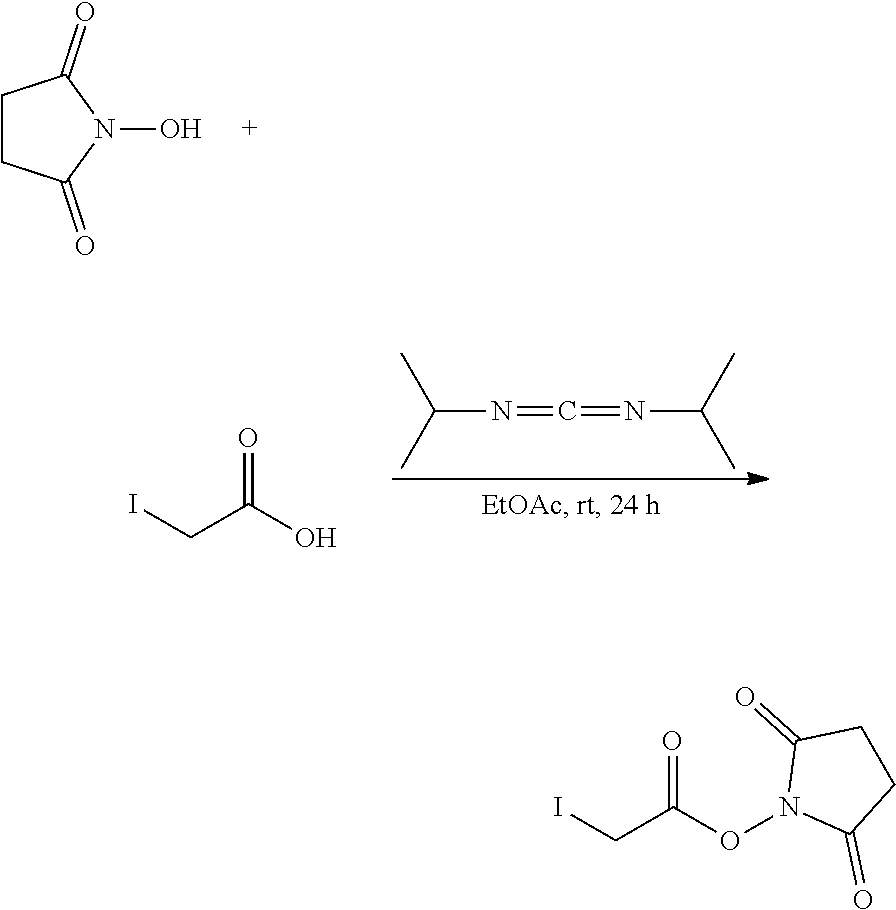




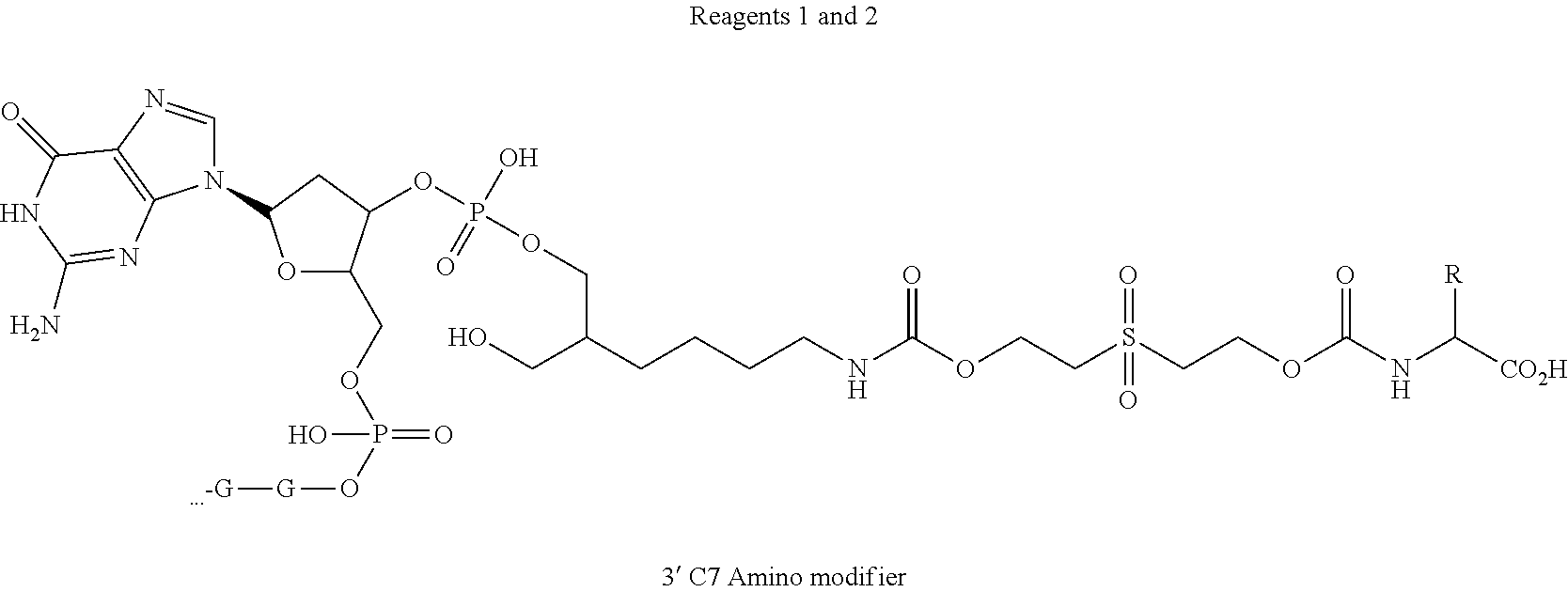

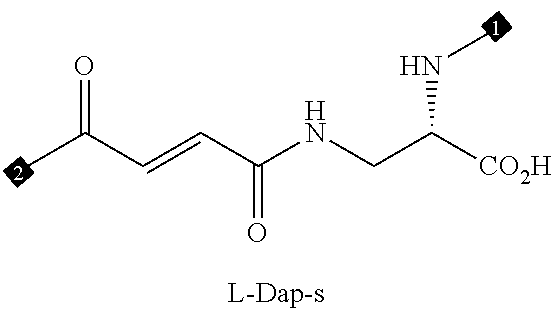
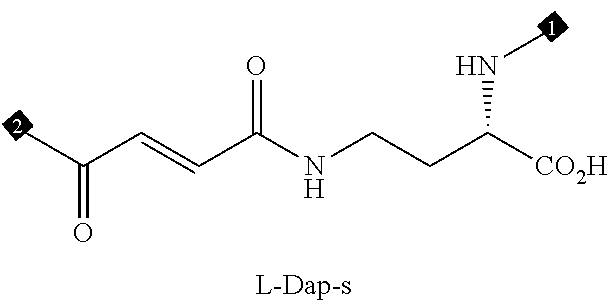

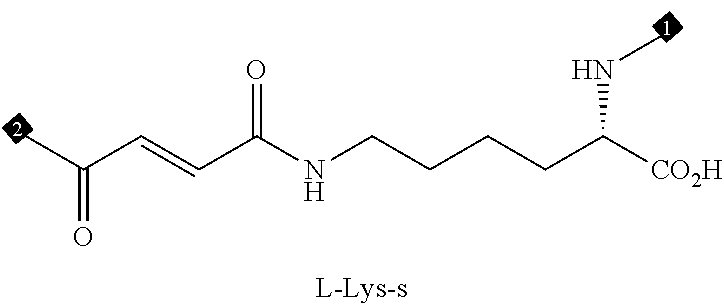



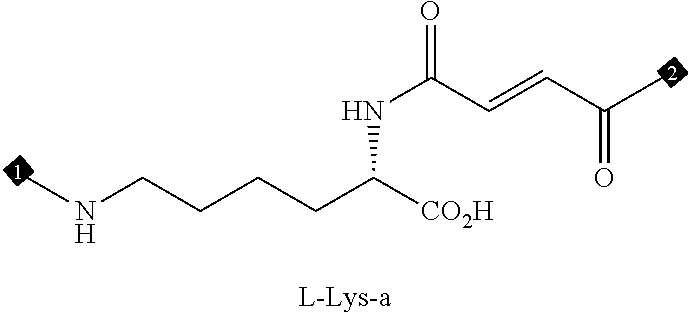


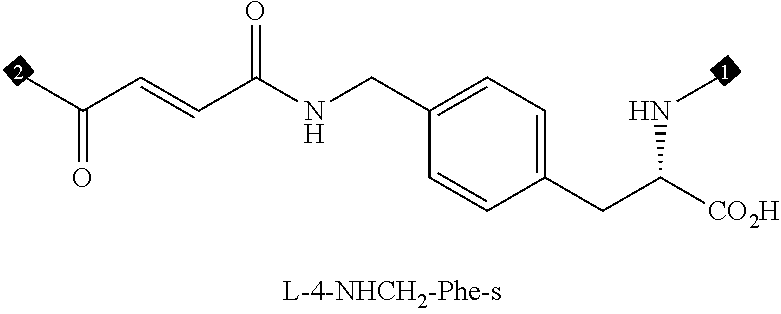


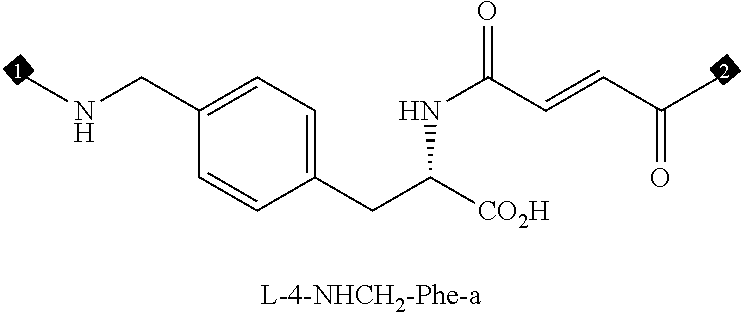


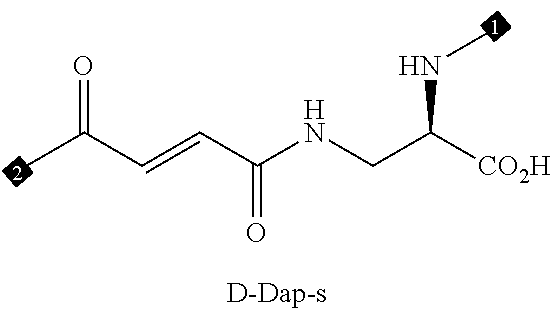
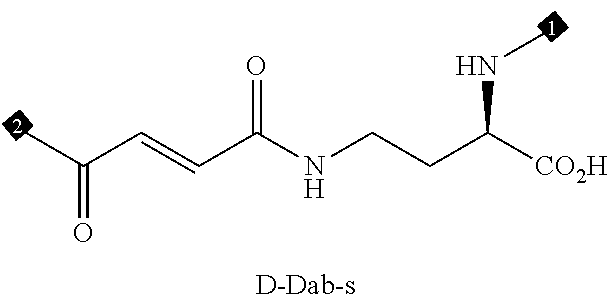
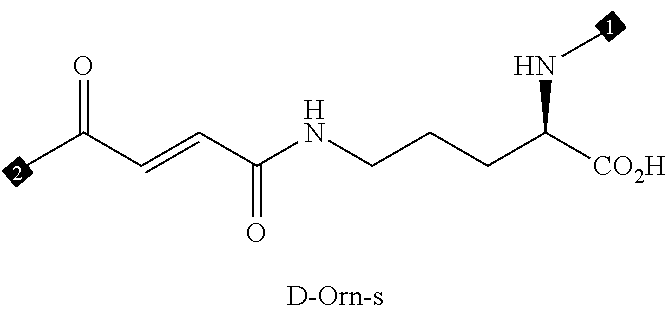
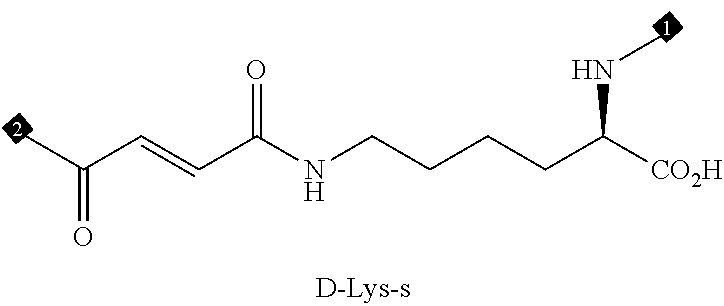




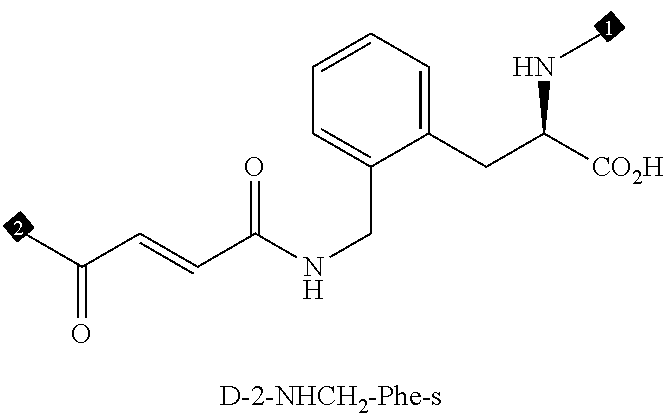

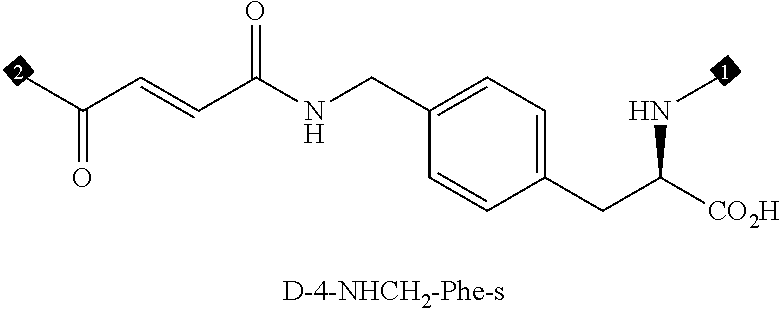
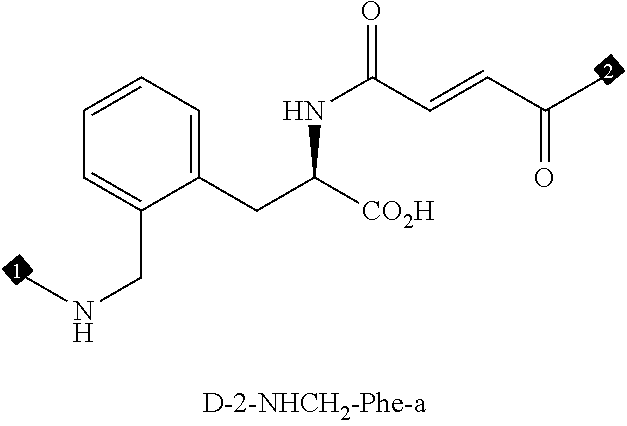
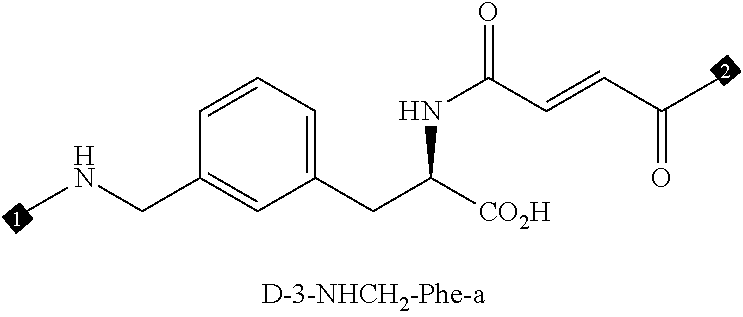

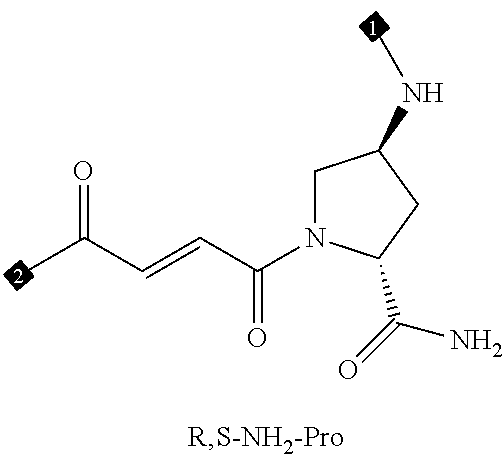
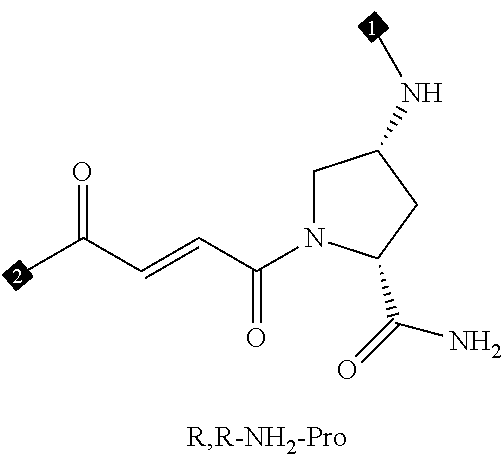



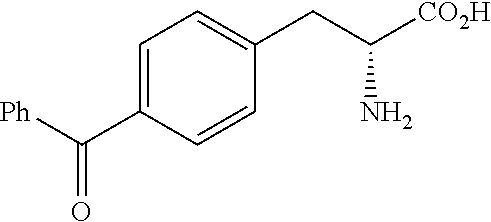
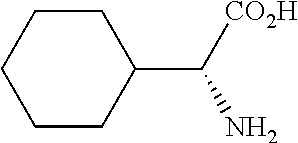
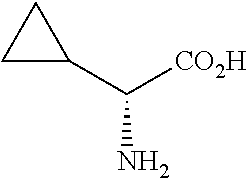


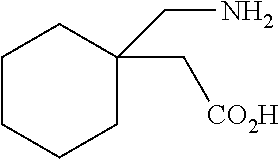
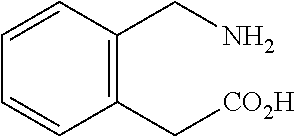
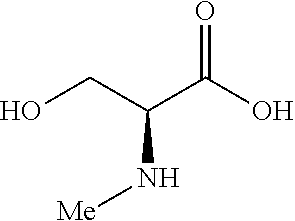
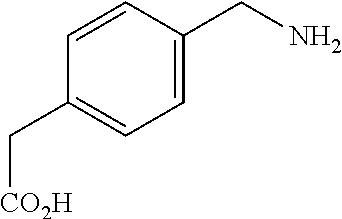
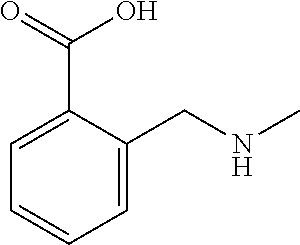
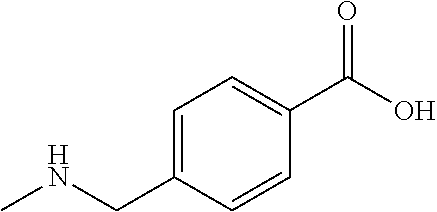
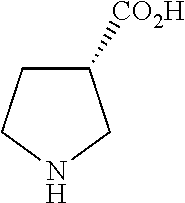

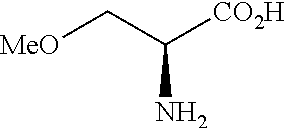

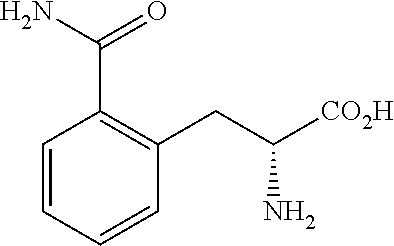

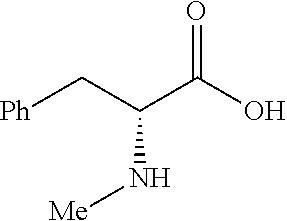


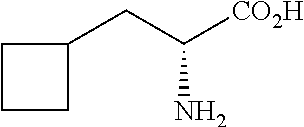
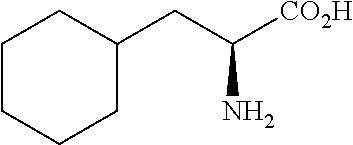

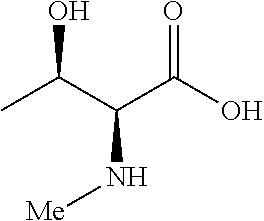

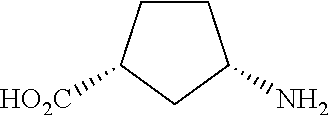
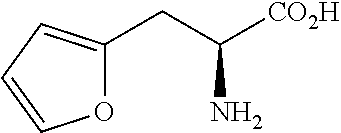
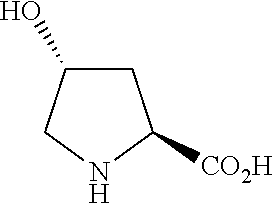
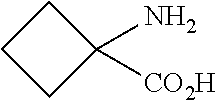
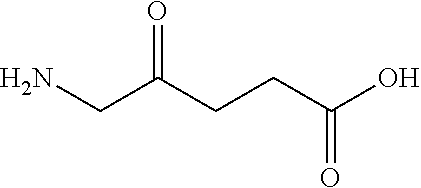
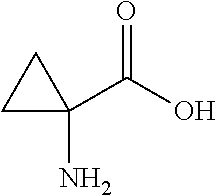

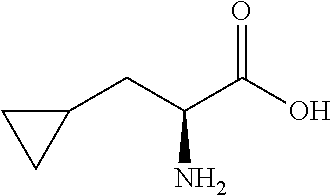
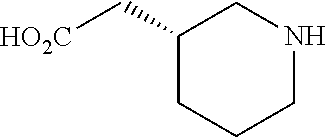
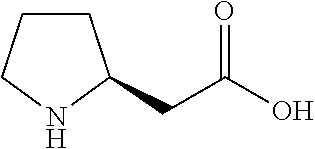




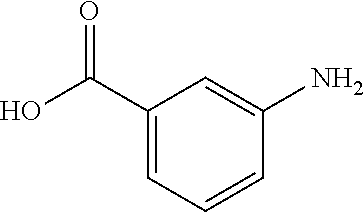
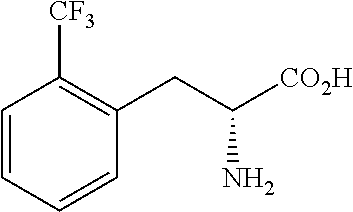





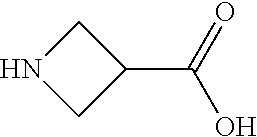
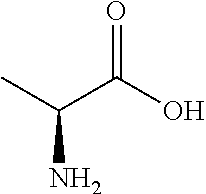
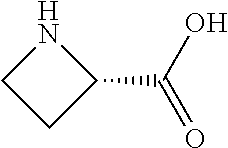
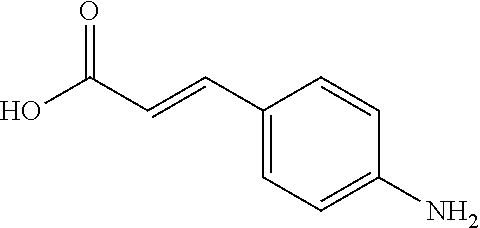

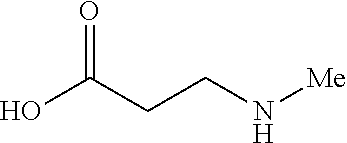
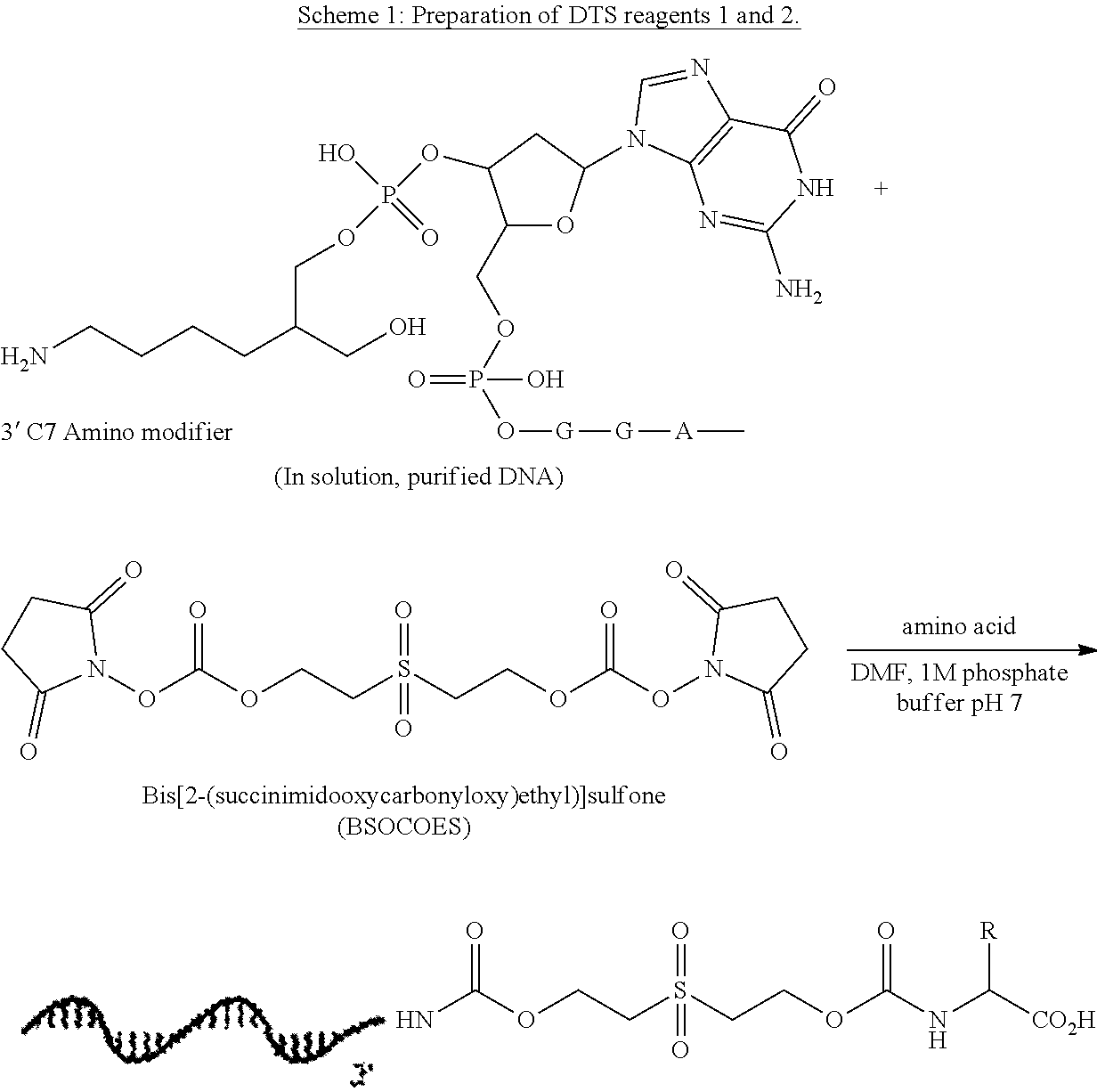
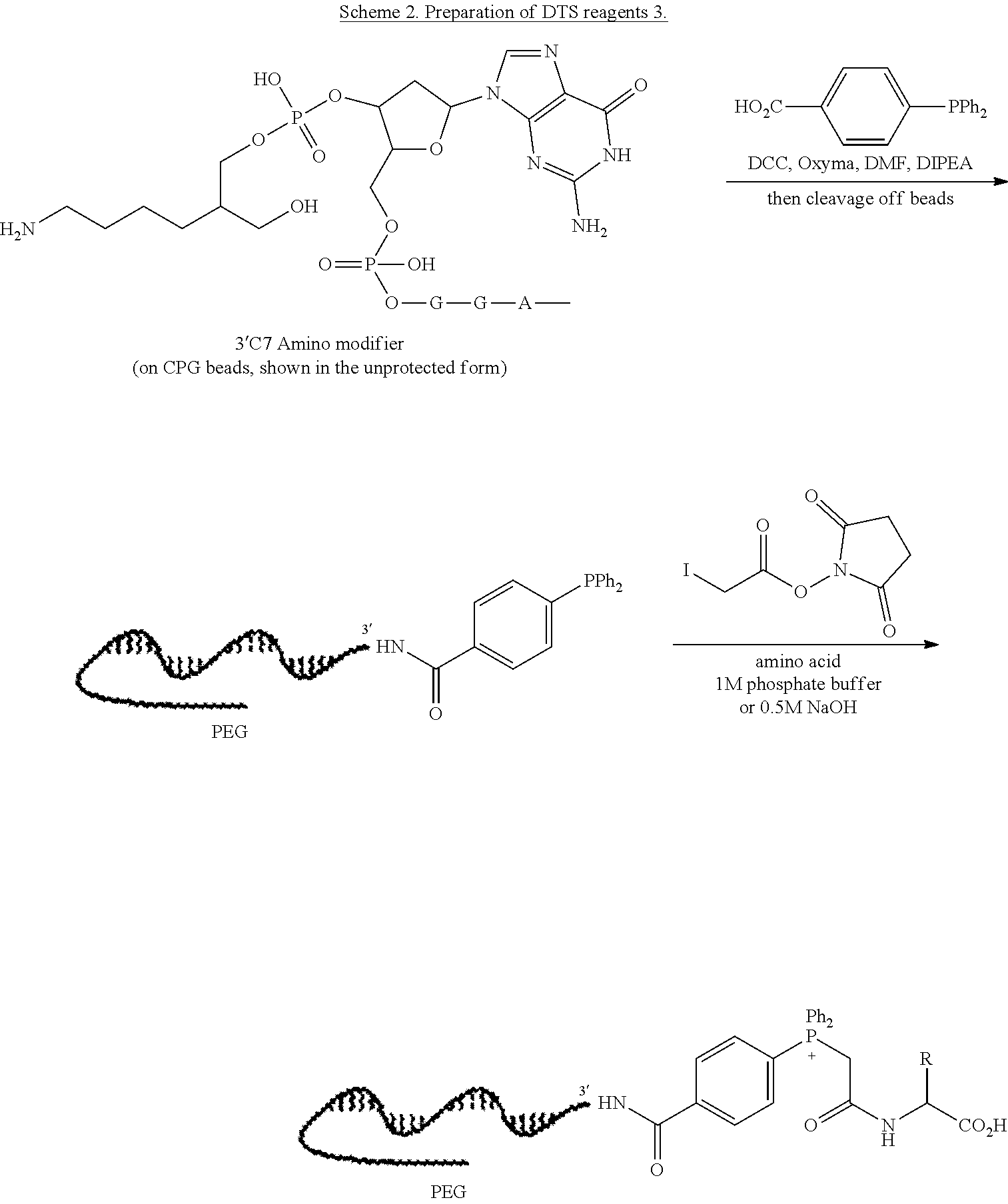


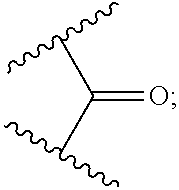
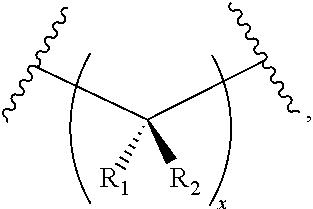
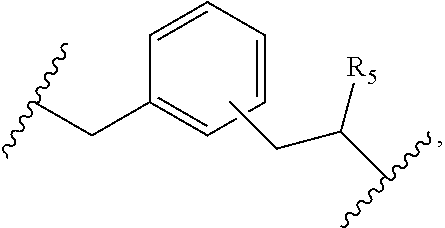
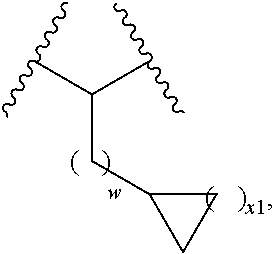
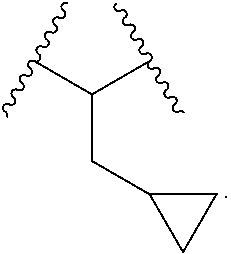
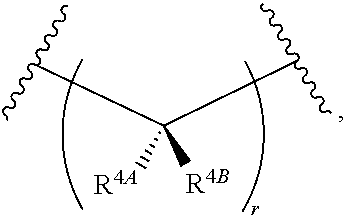


D00001
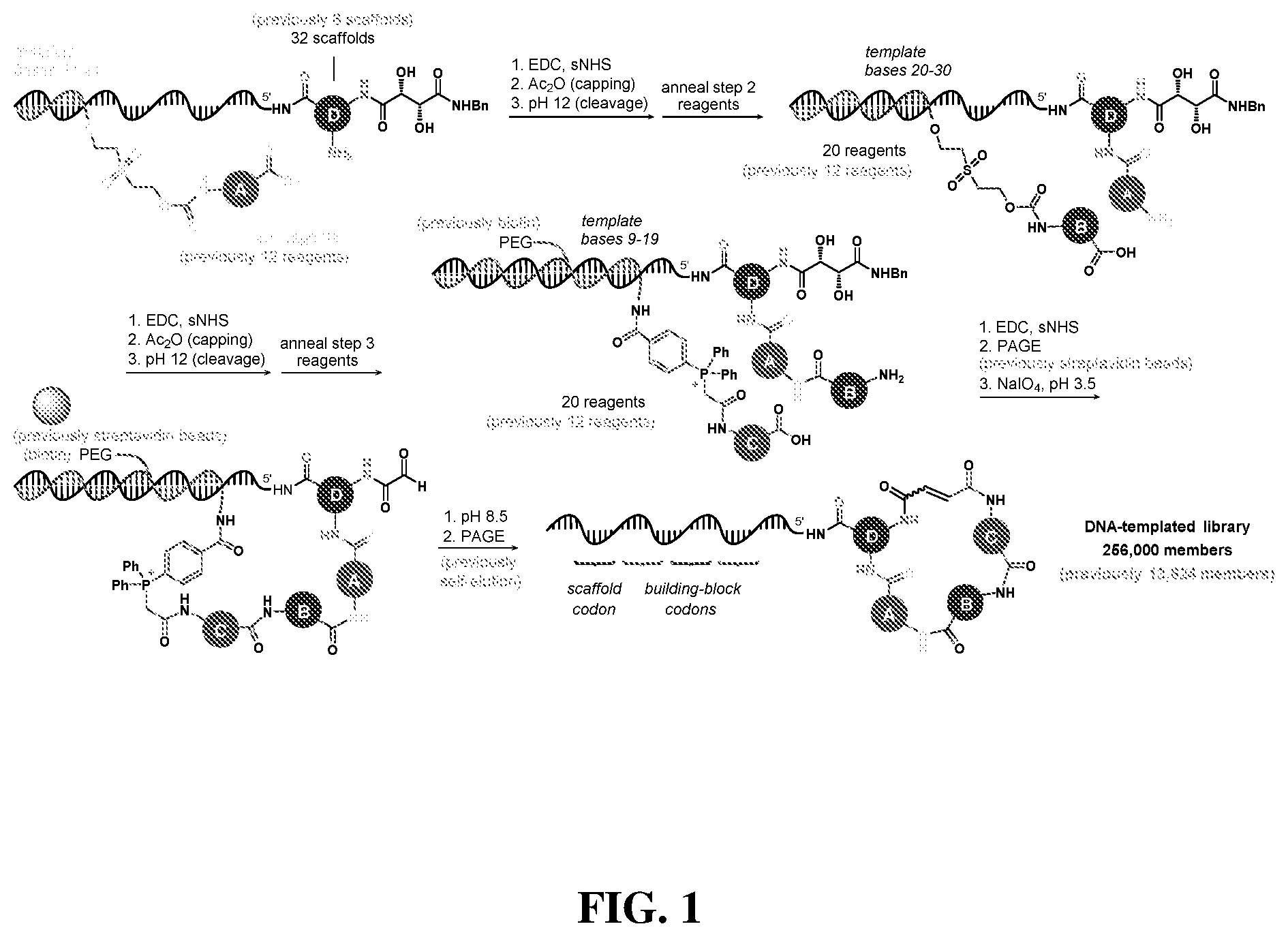
D00002
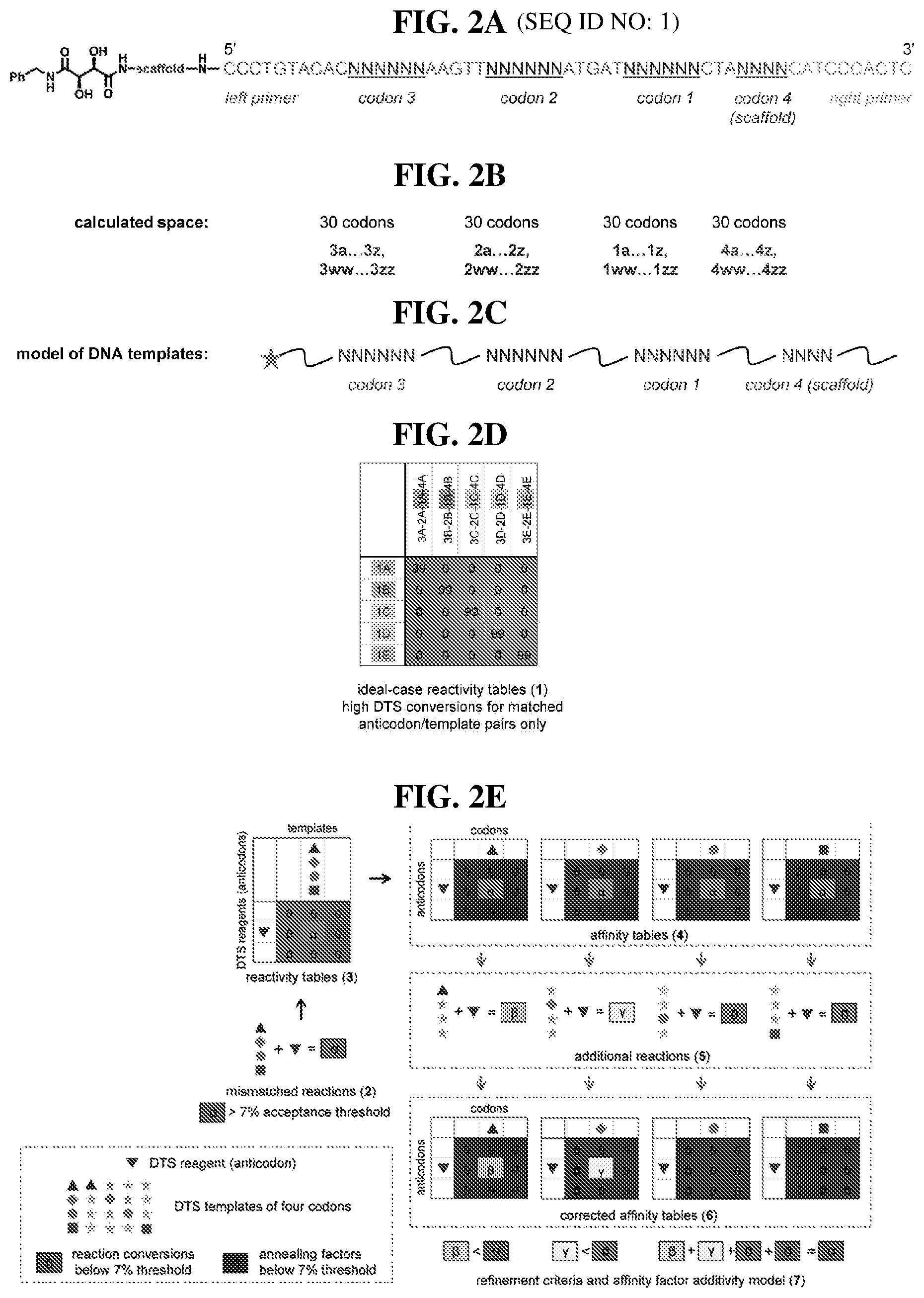
D00003

D00004
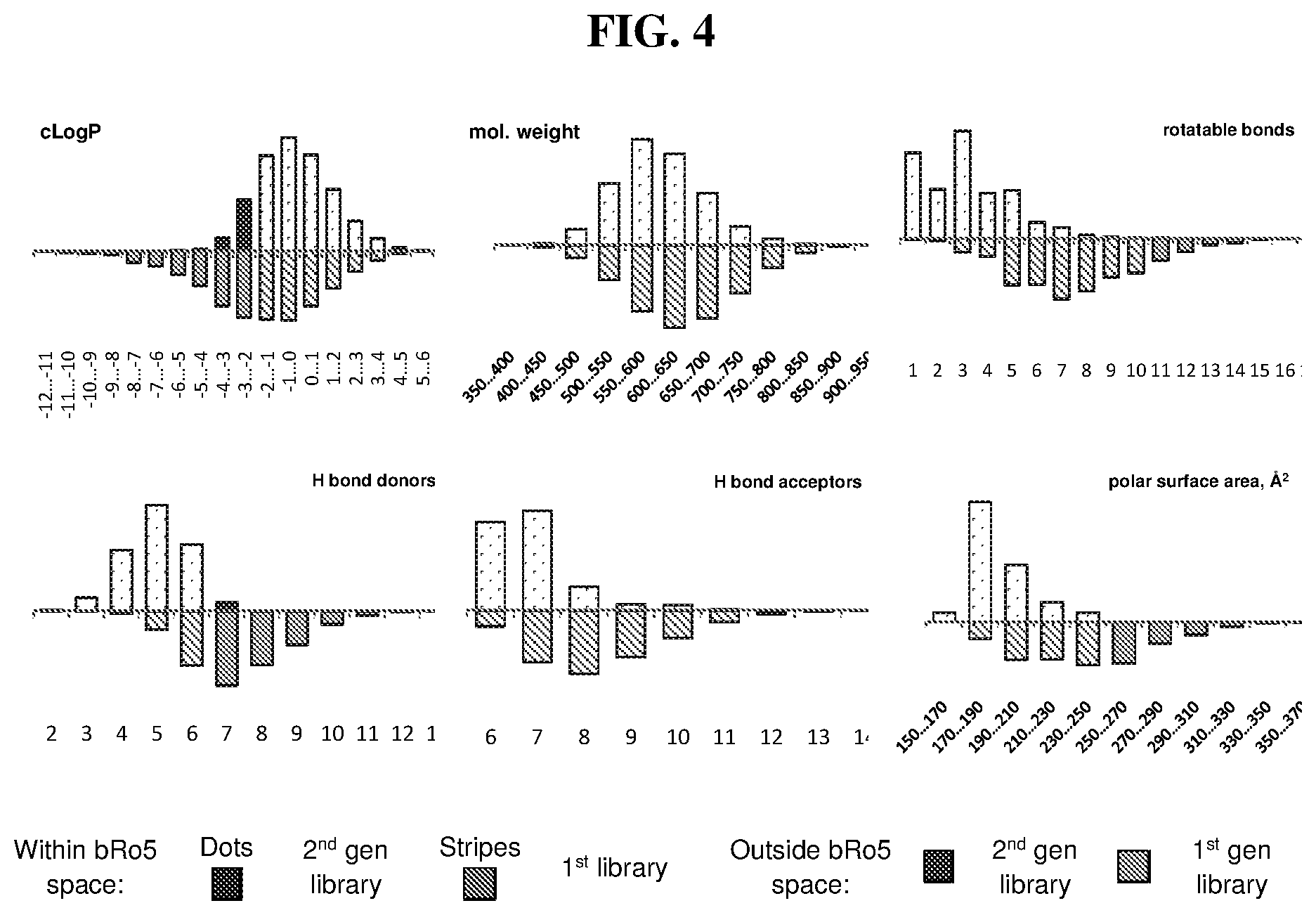
D00005

D00006
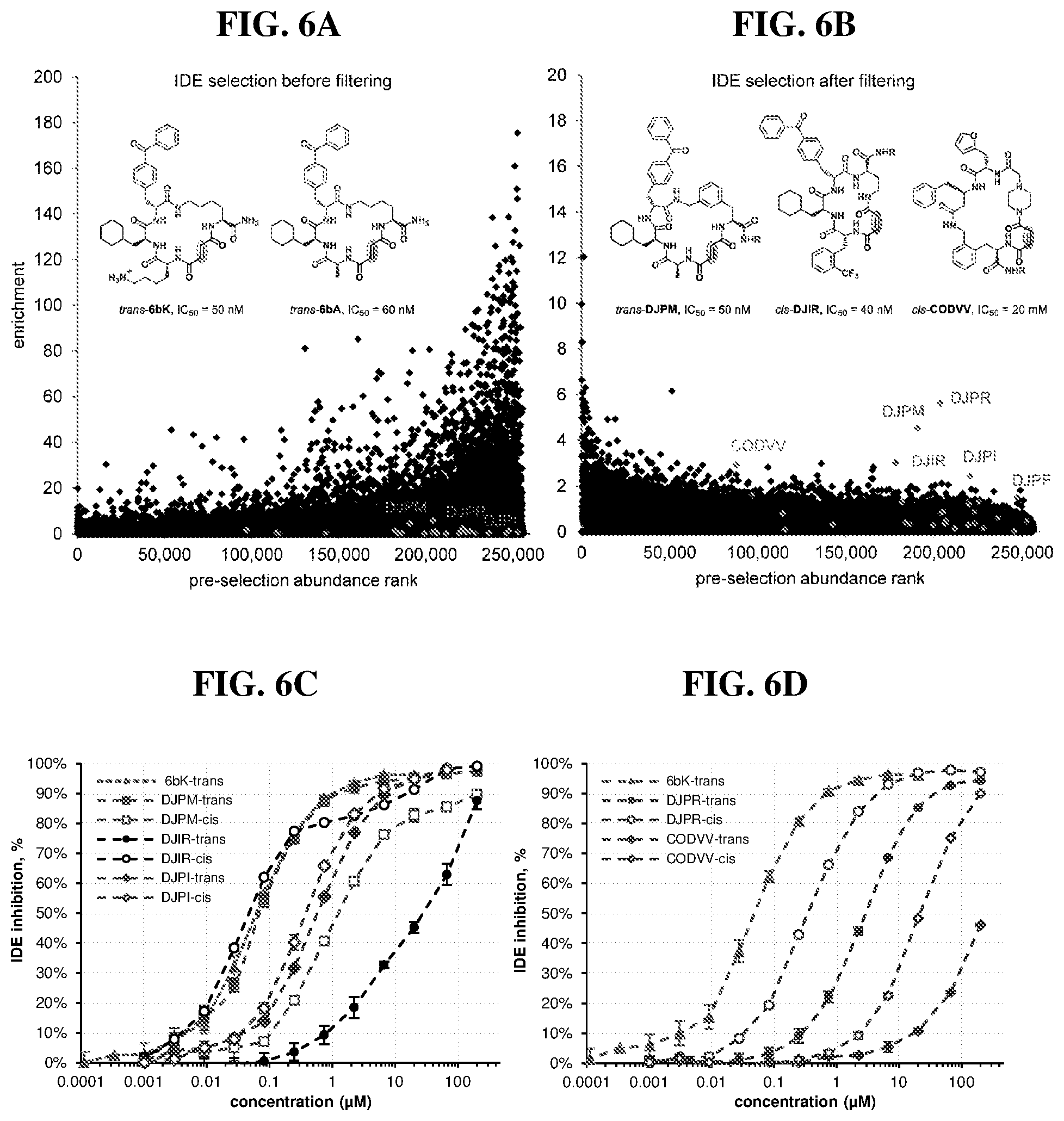
D00007
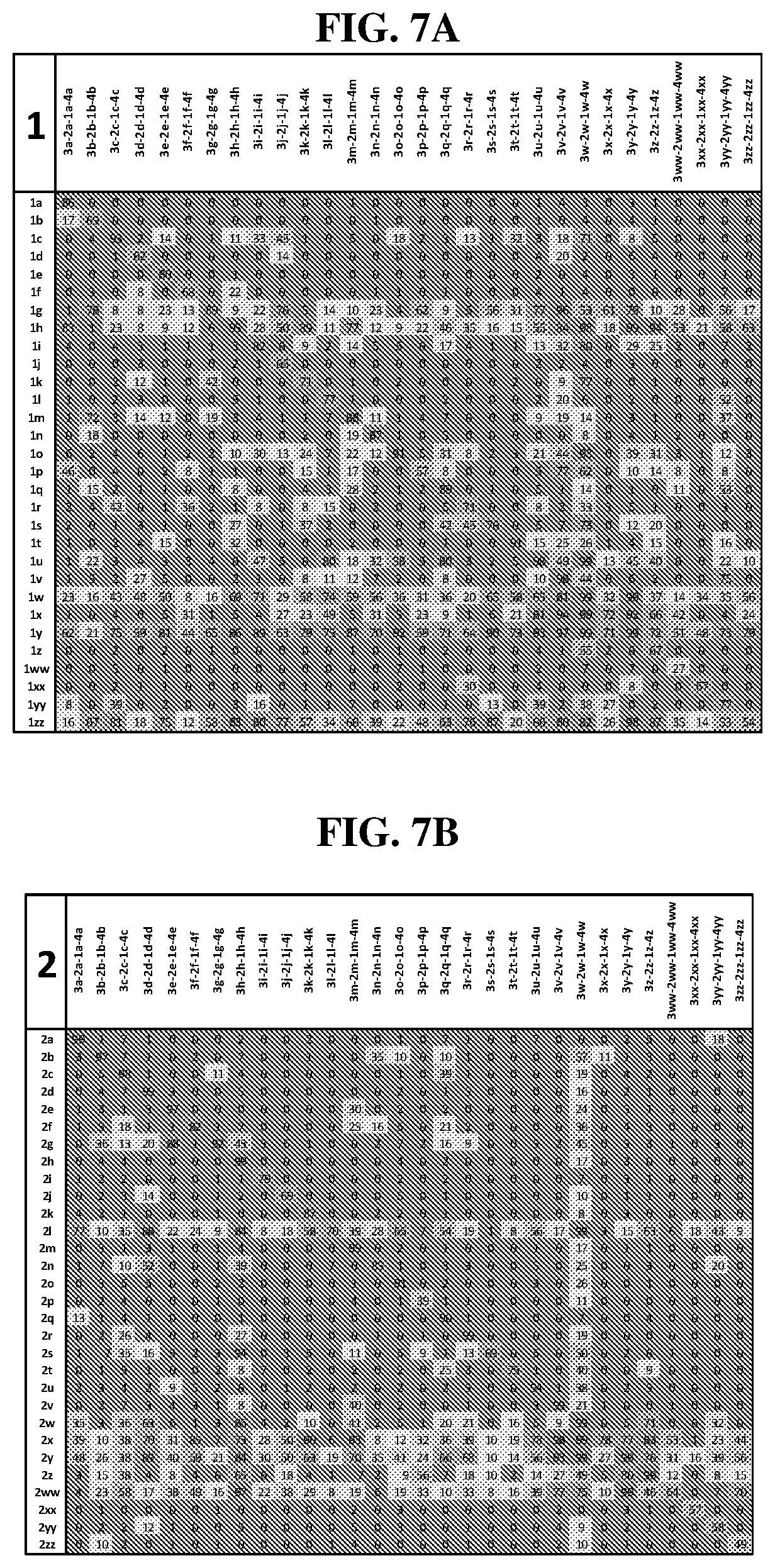
D00008
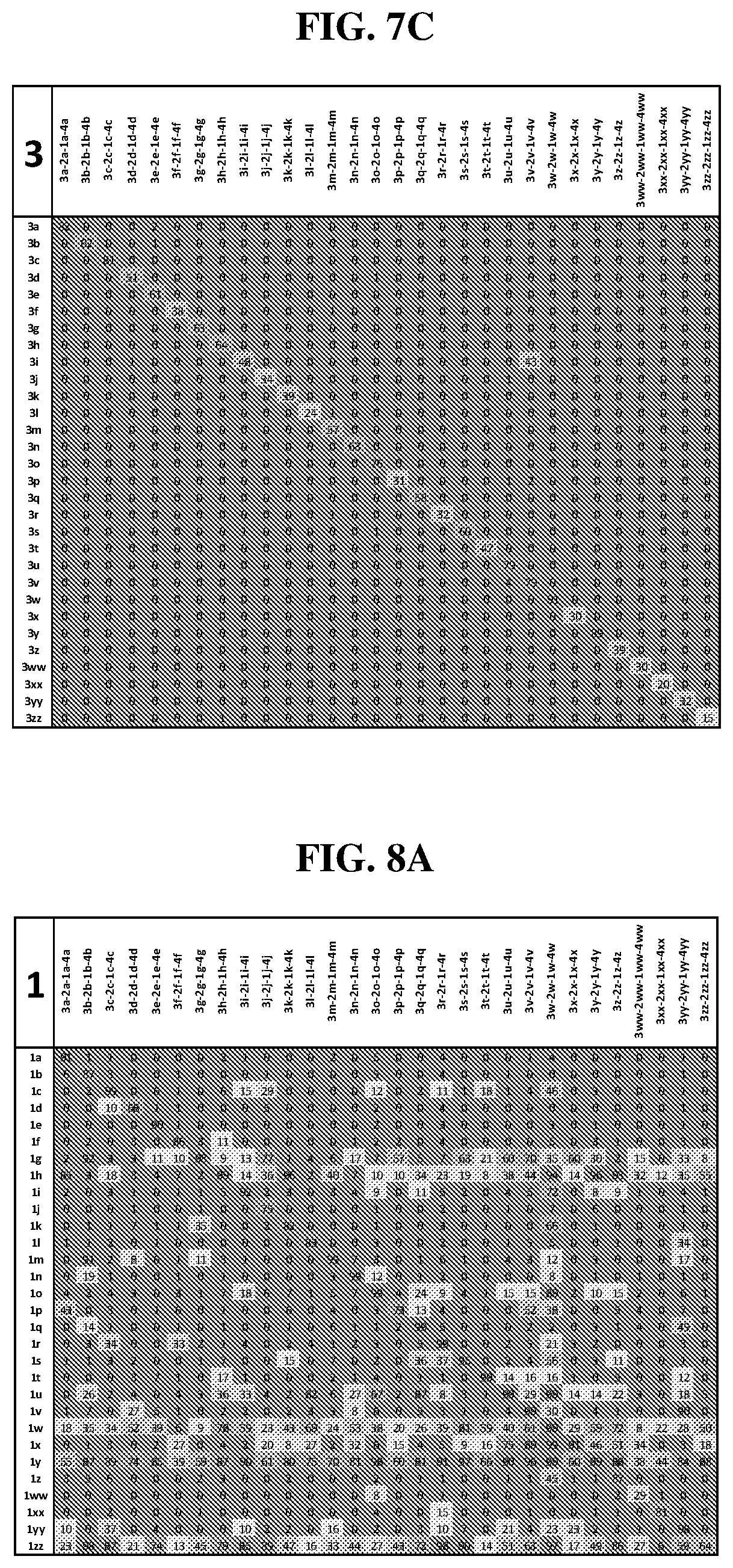
D00009

D00010
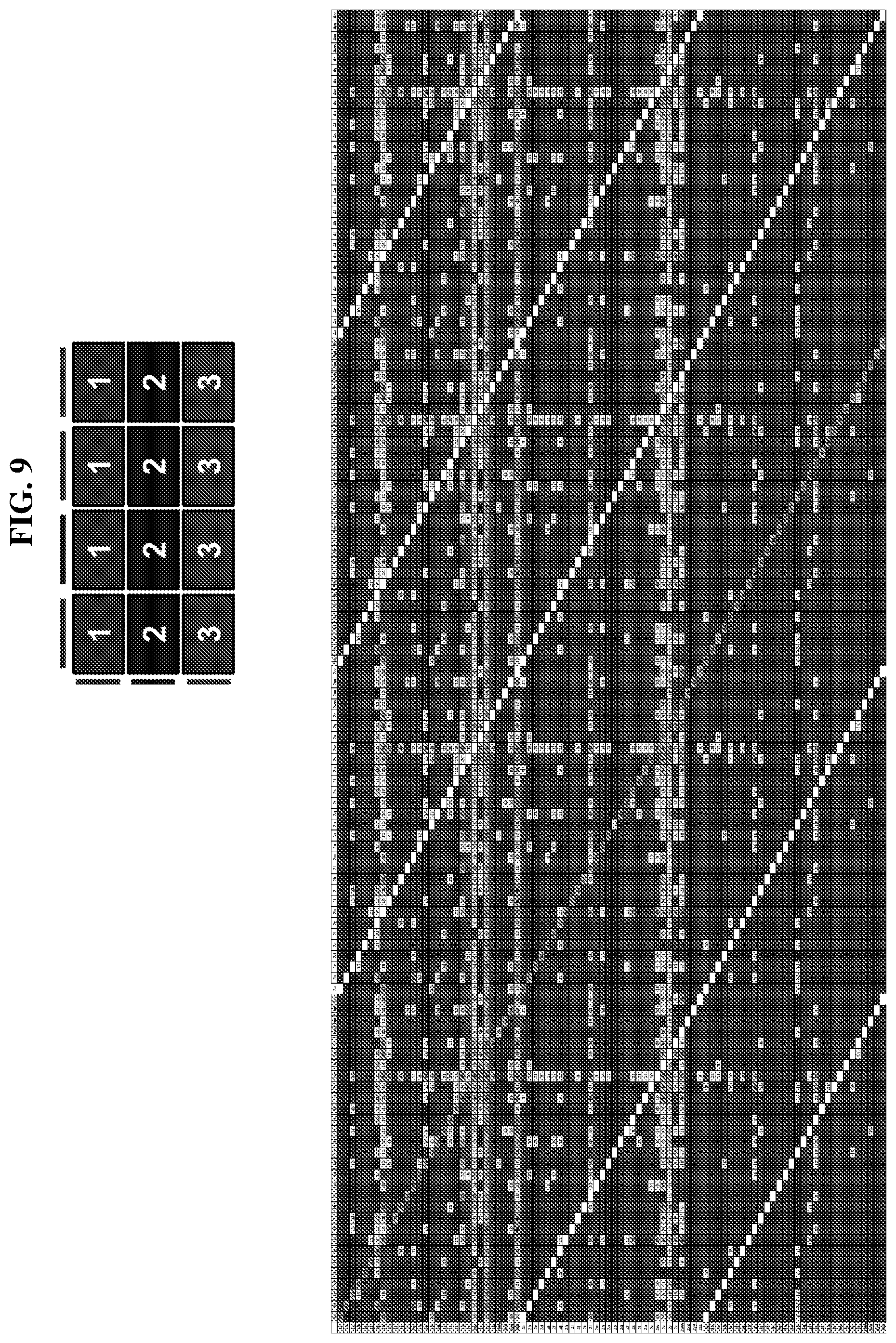
D00011

D00012

D00013
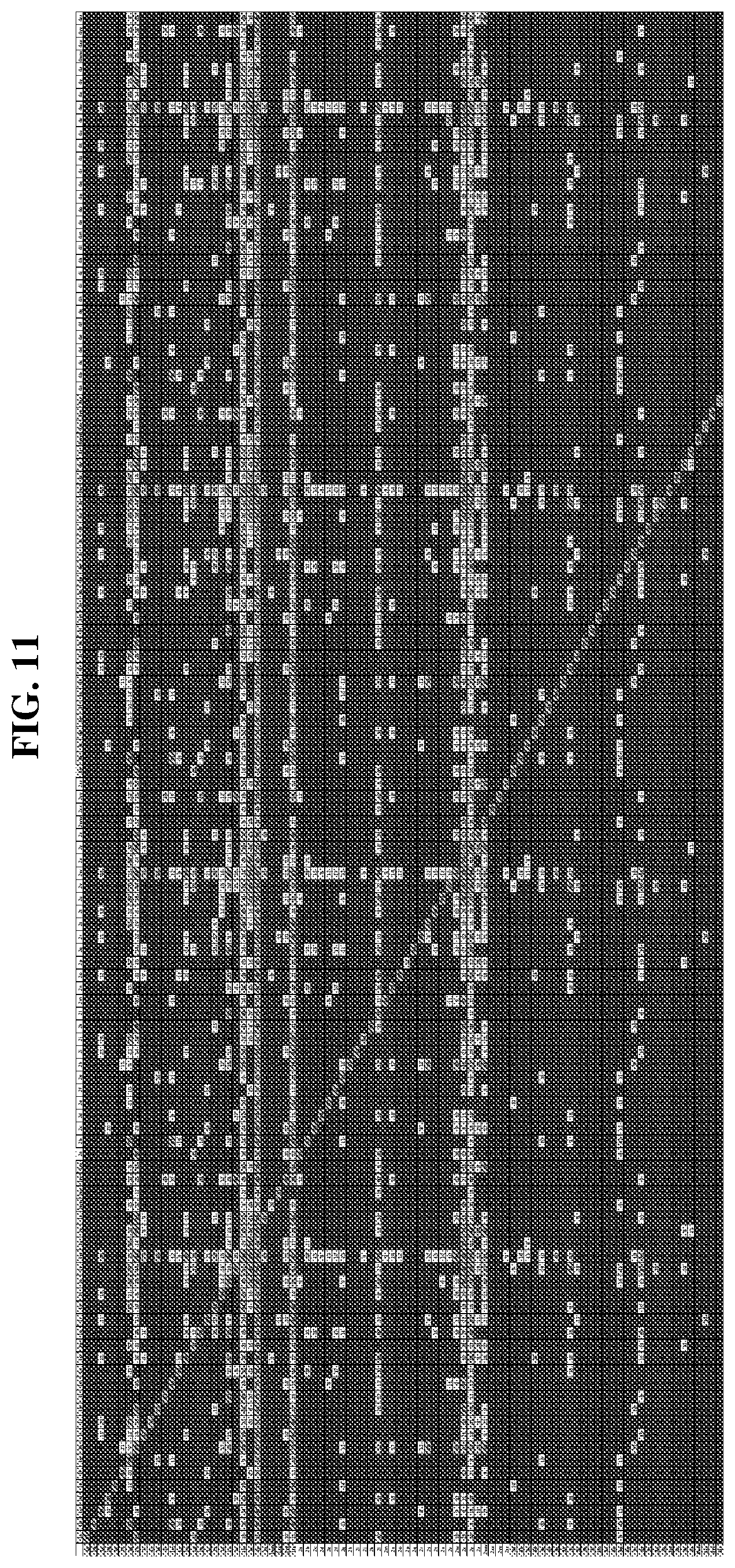
D00014
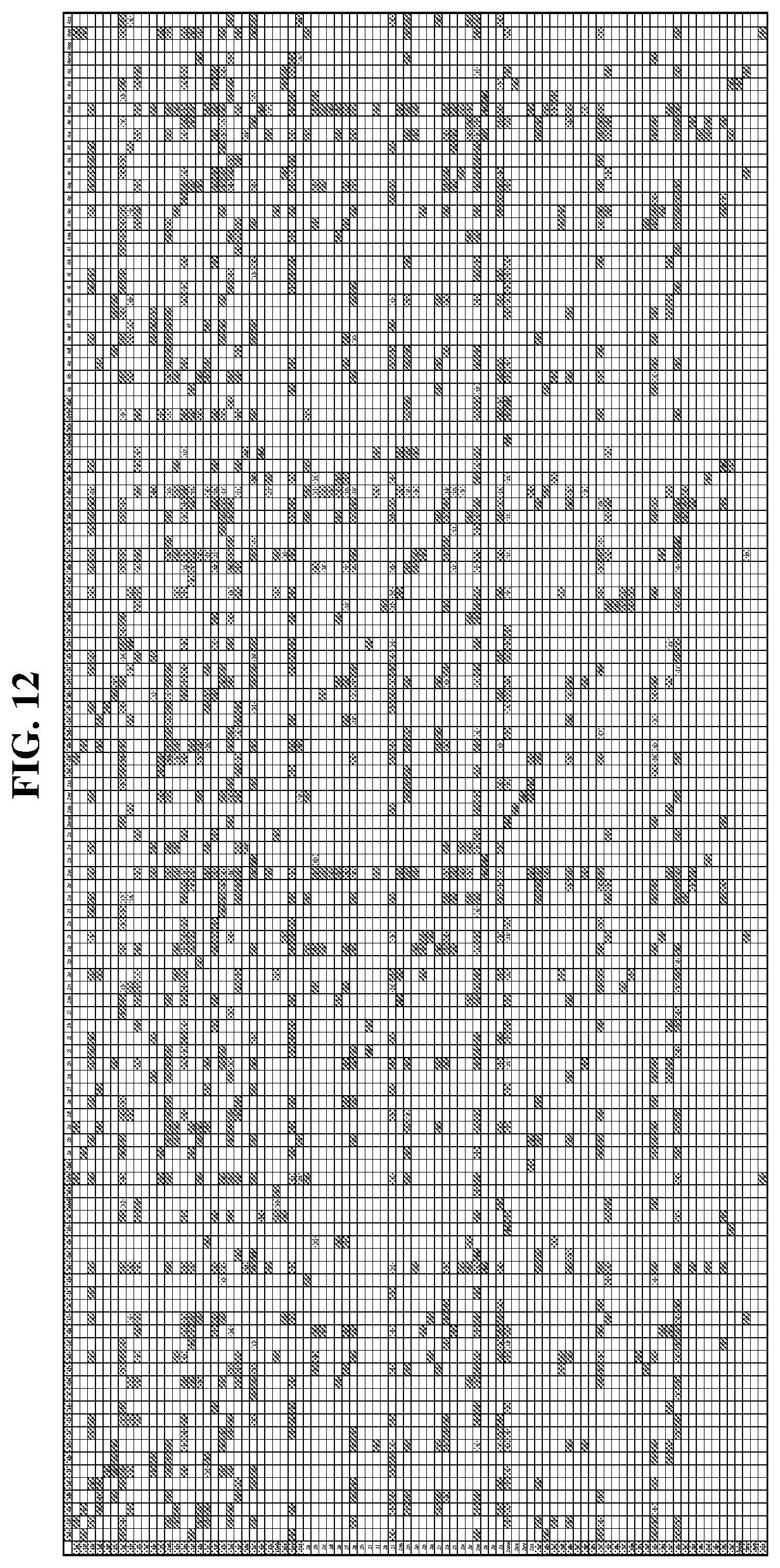
D00015
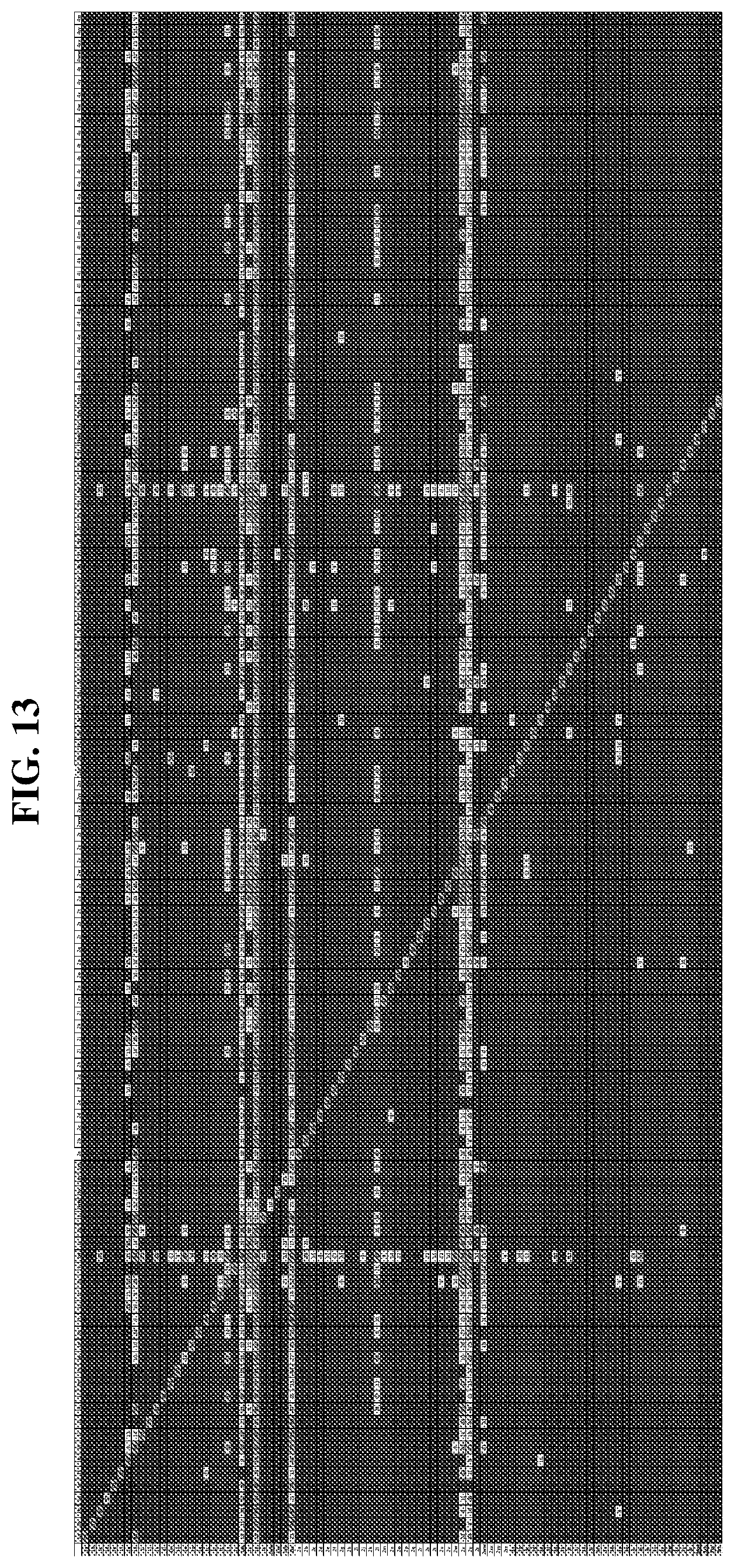
D00016
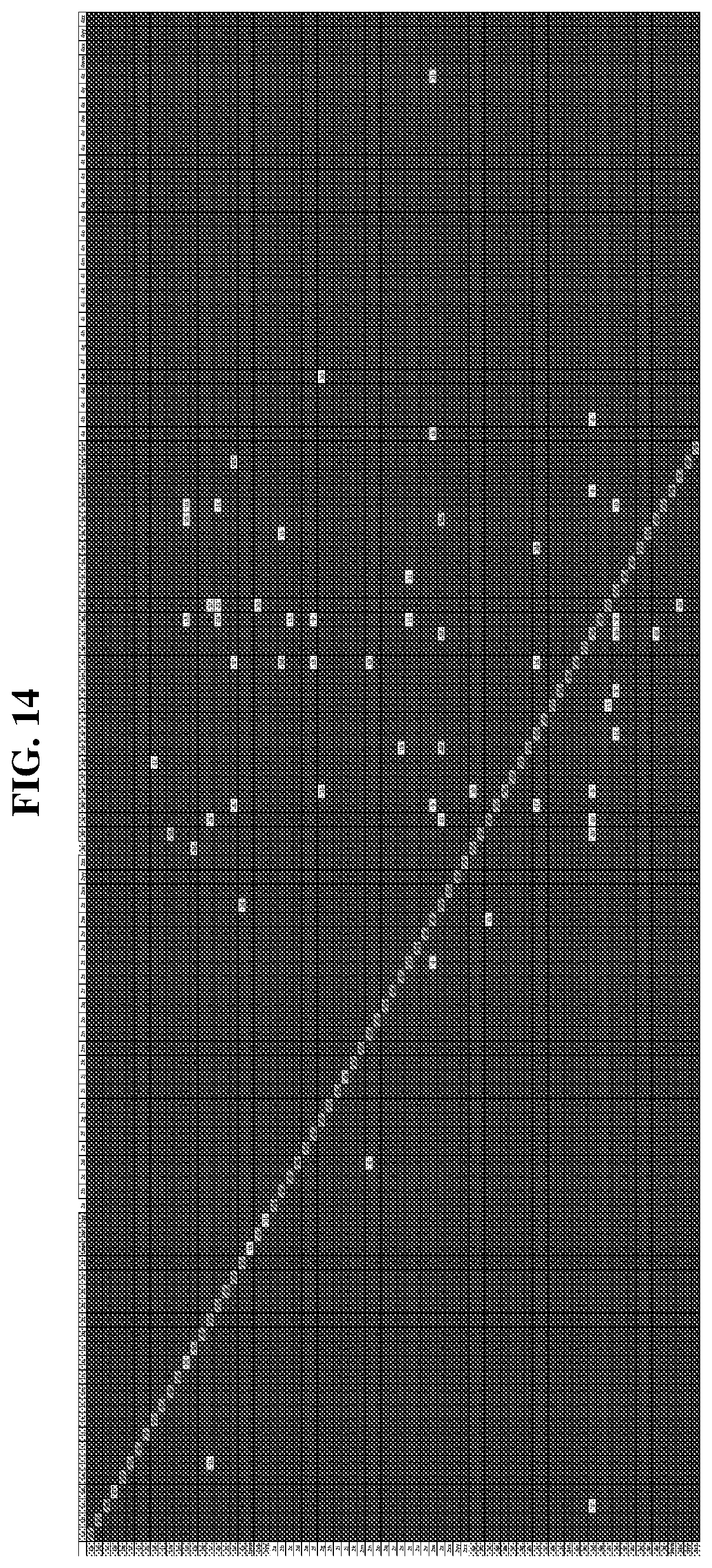
D00017
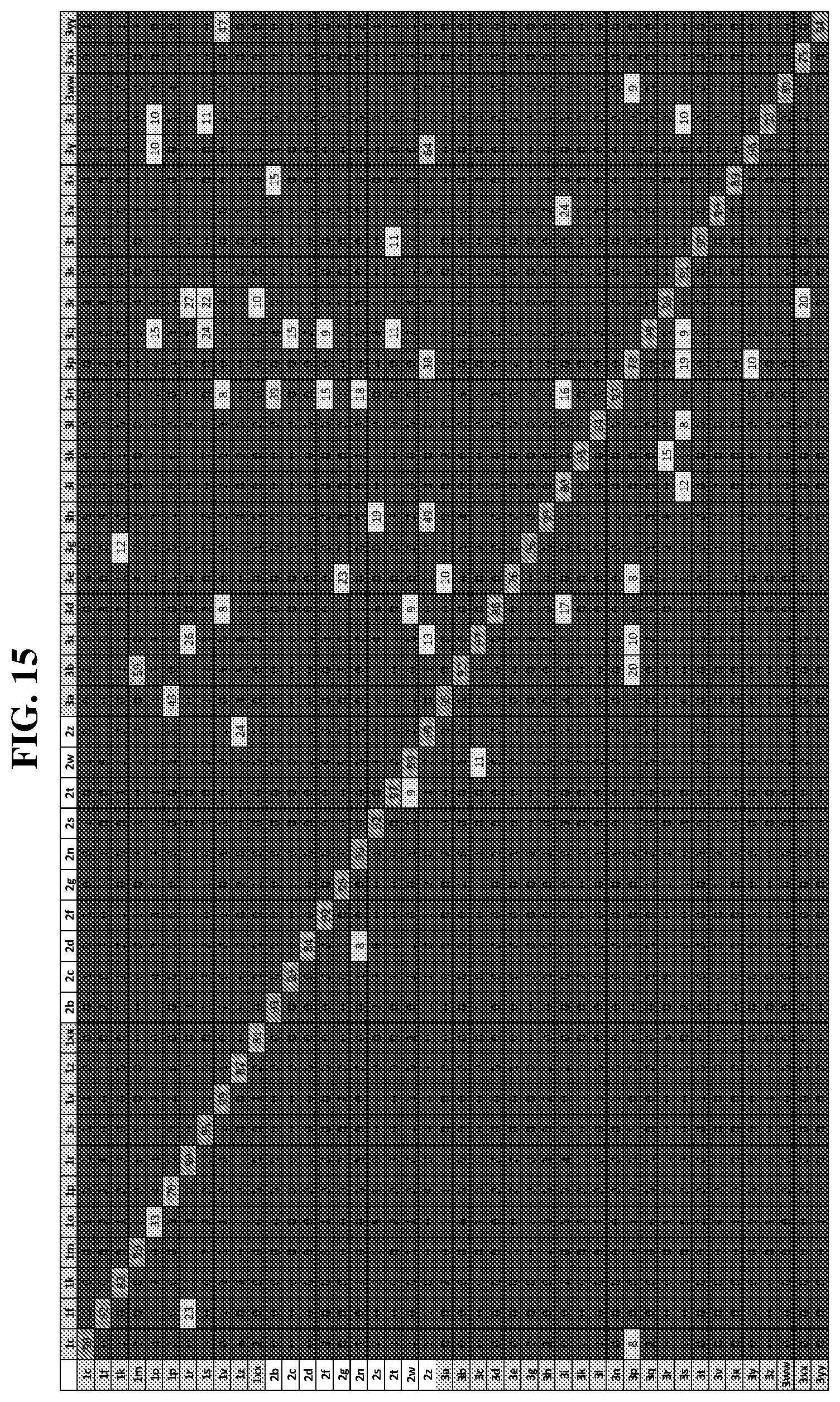
D00018

D00019
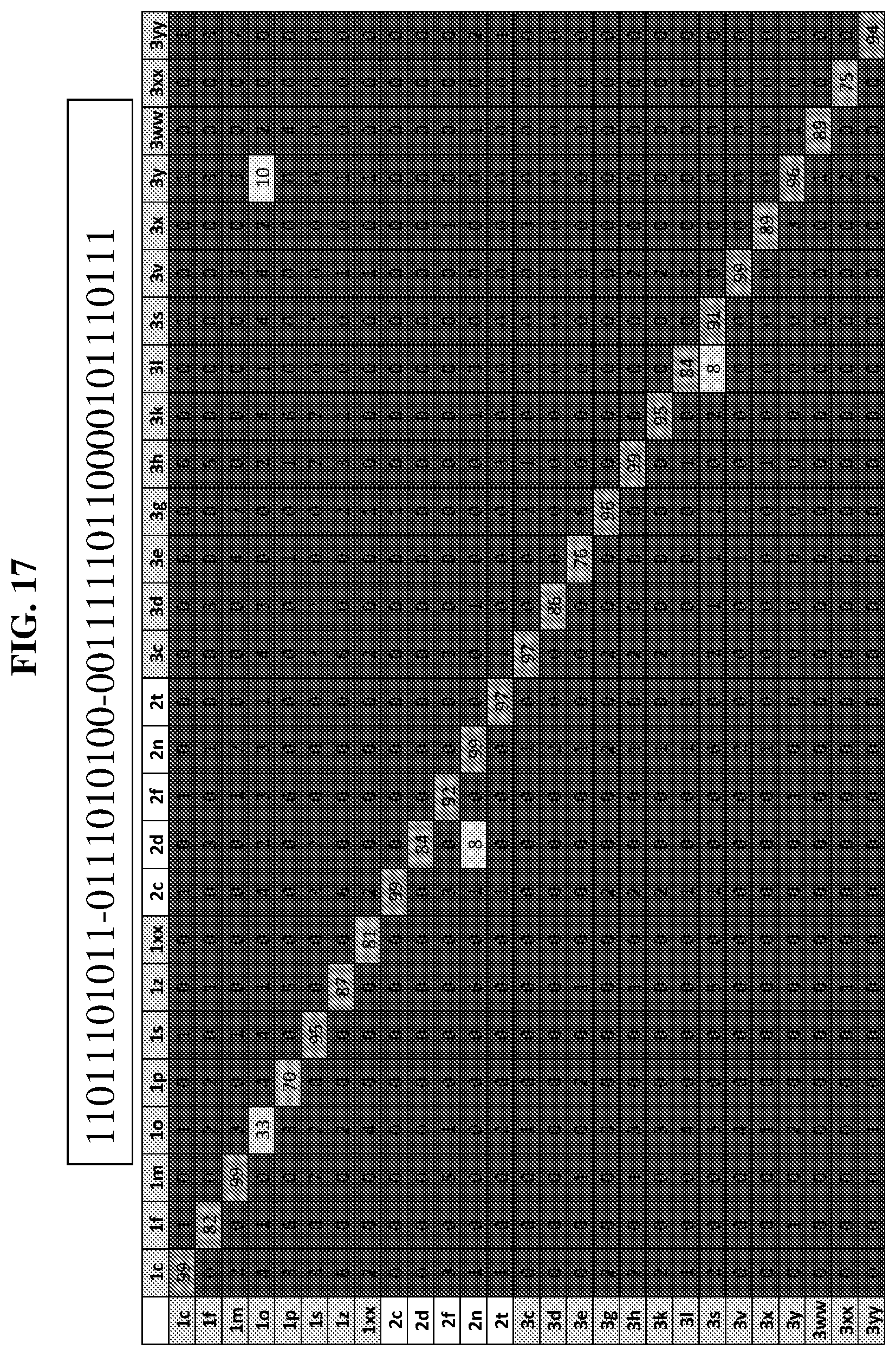
D00020

D00021
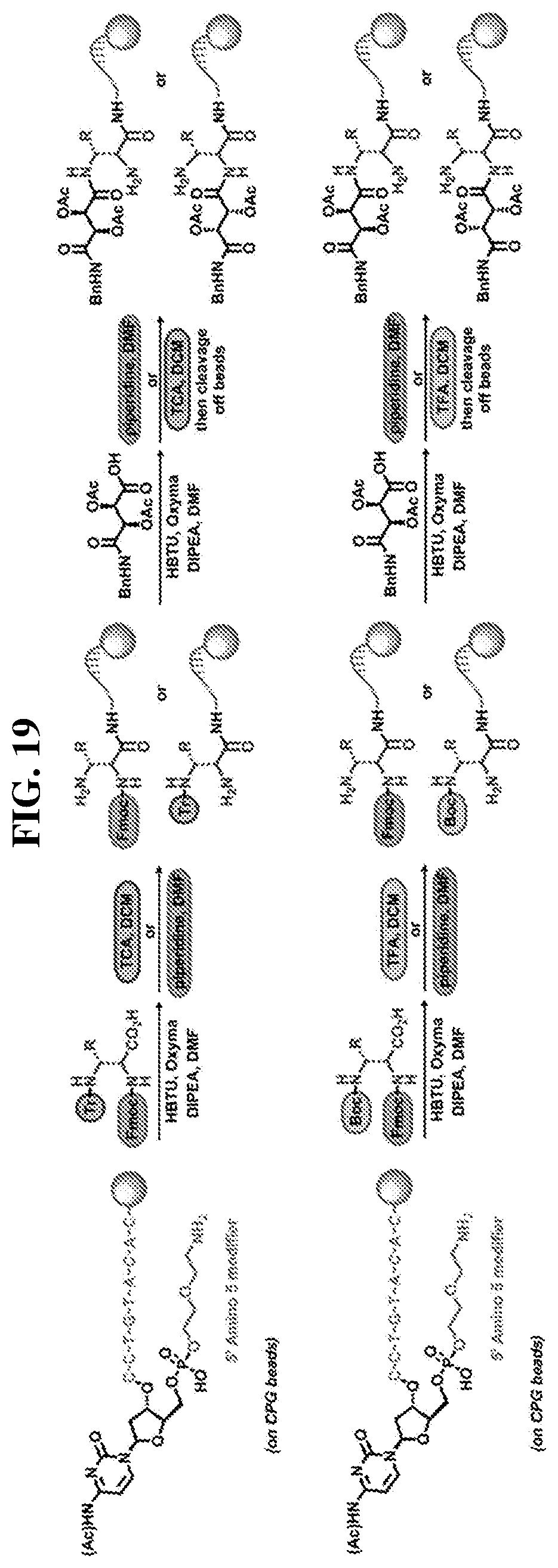
D00022
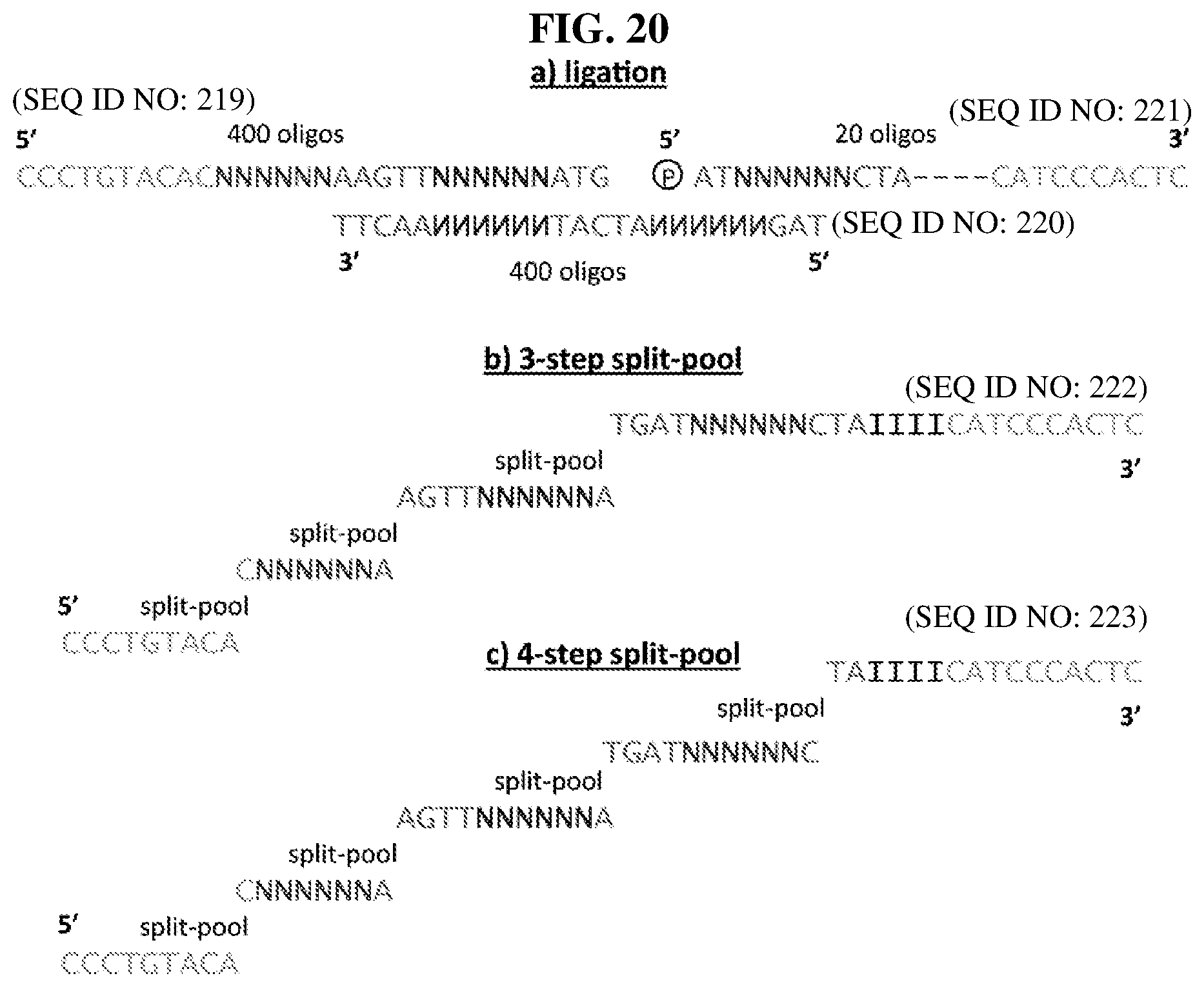
D00023
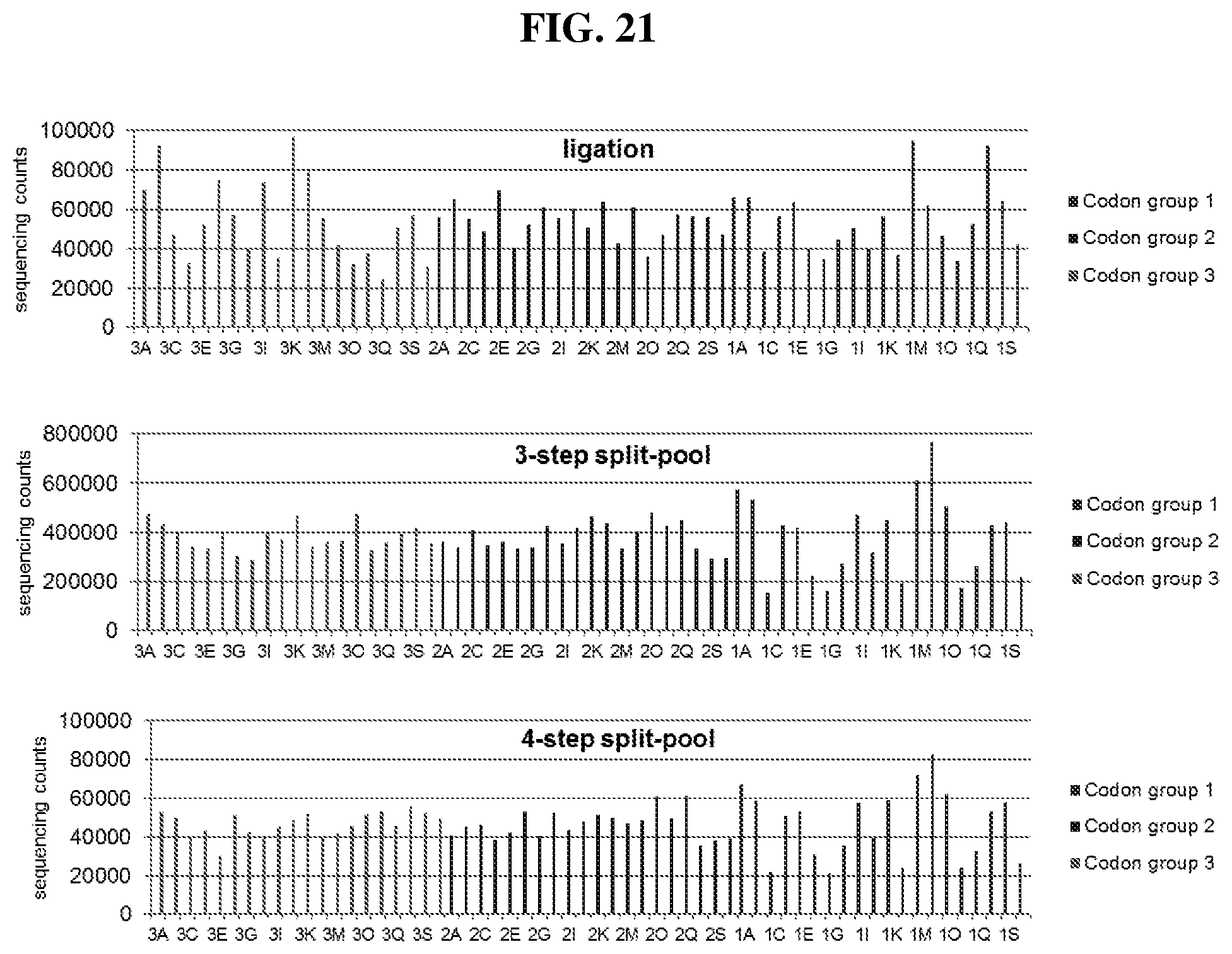
D00024
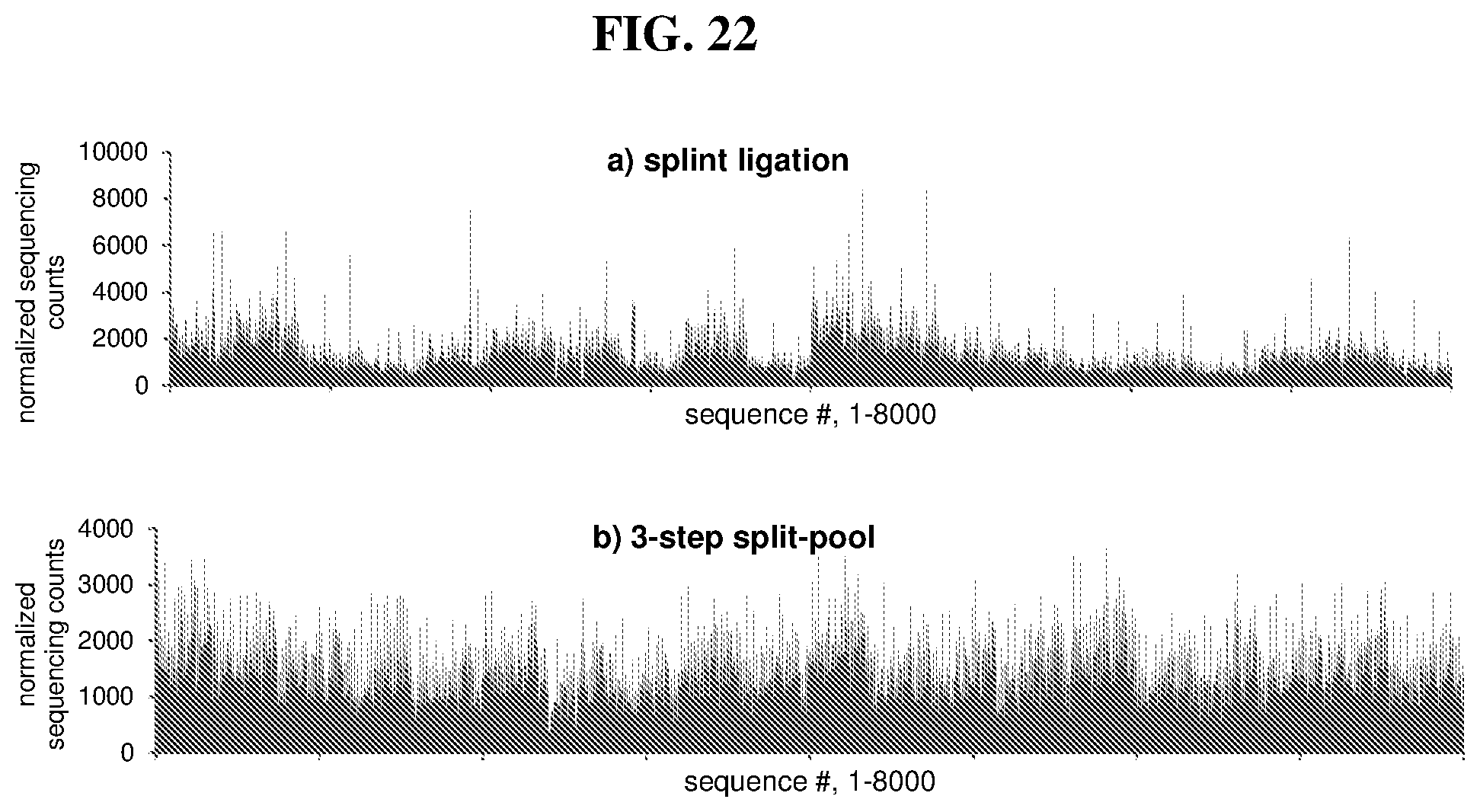
D00025
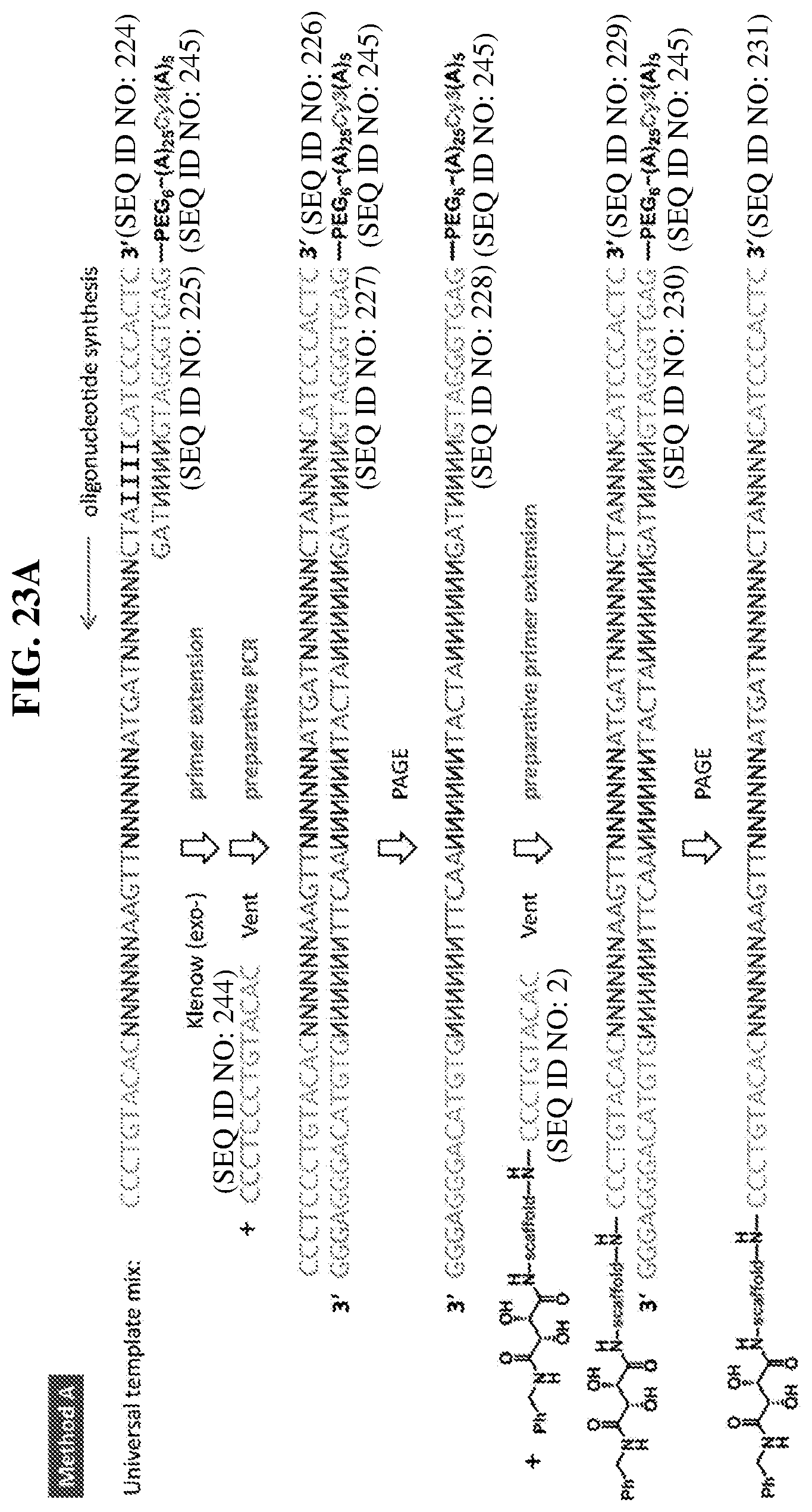
D00026

D00027
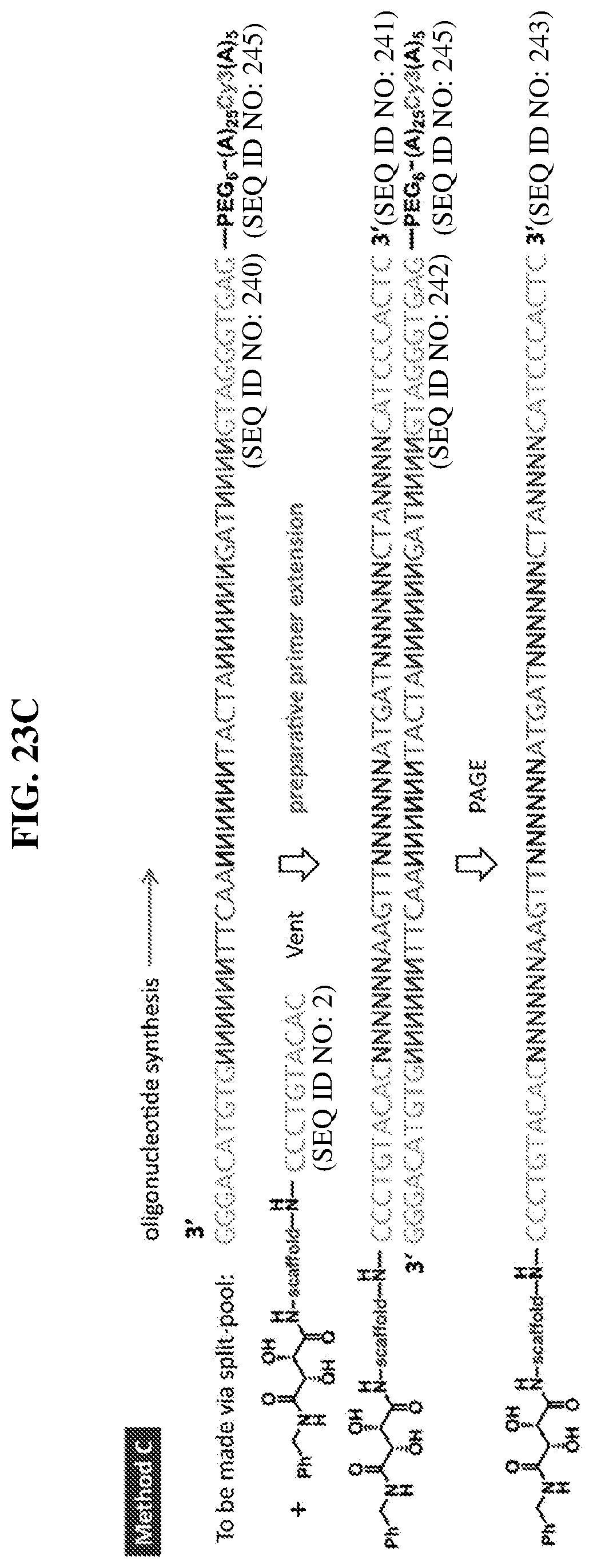
D00028

D00029

D00030
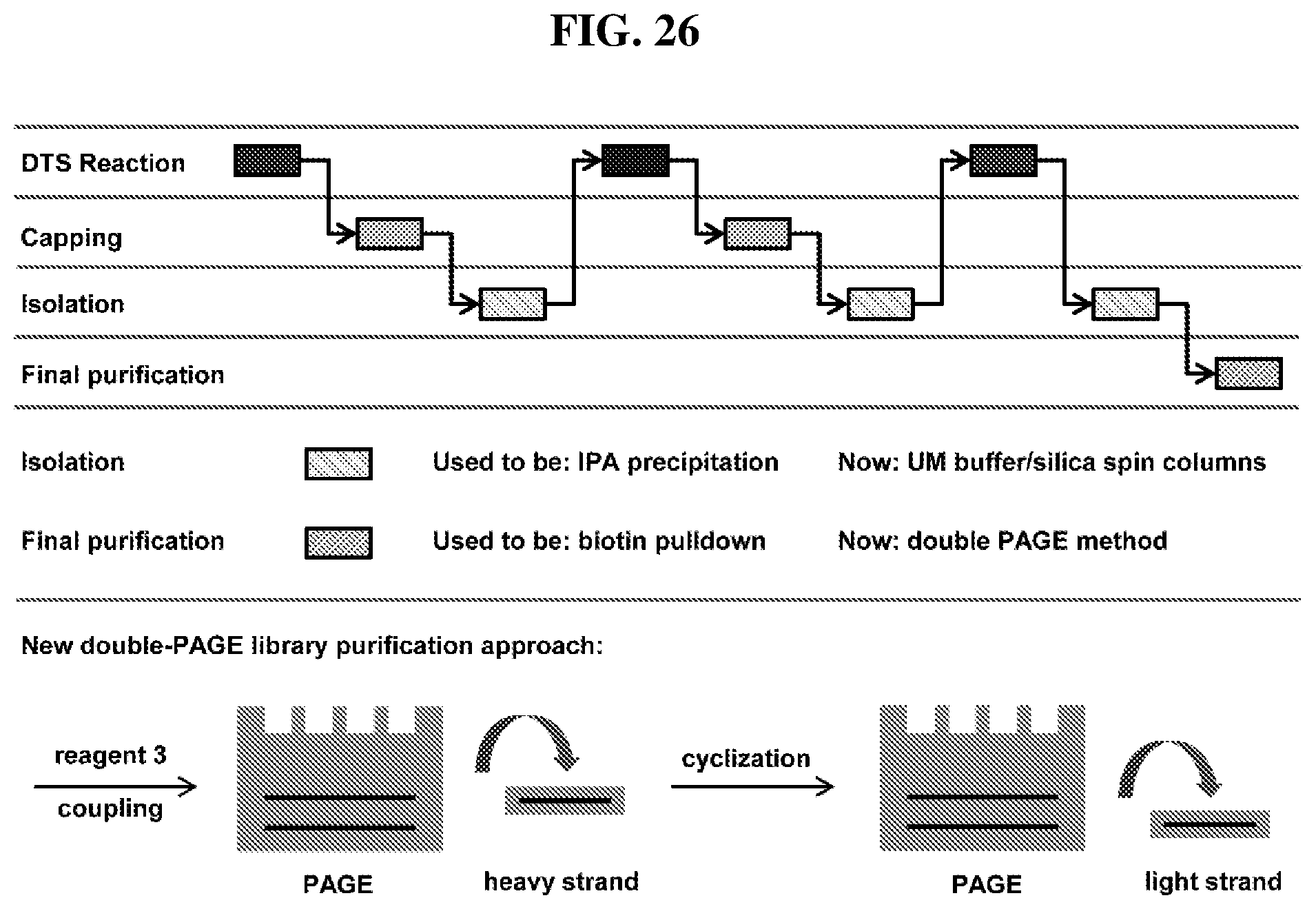
D00031

D00032

D00033

D00034
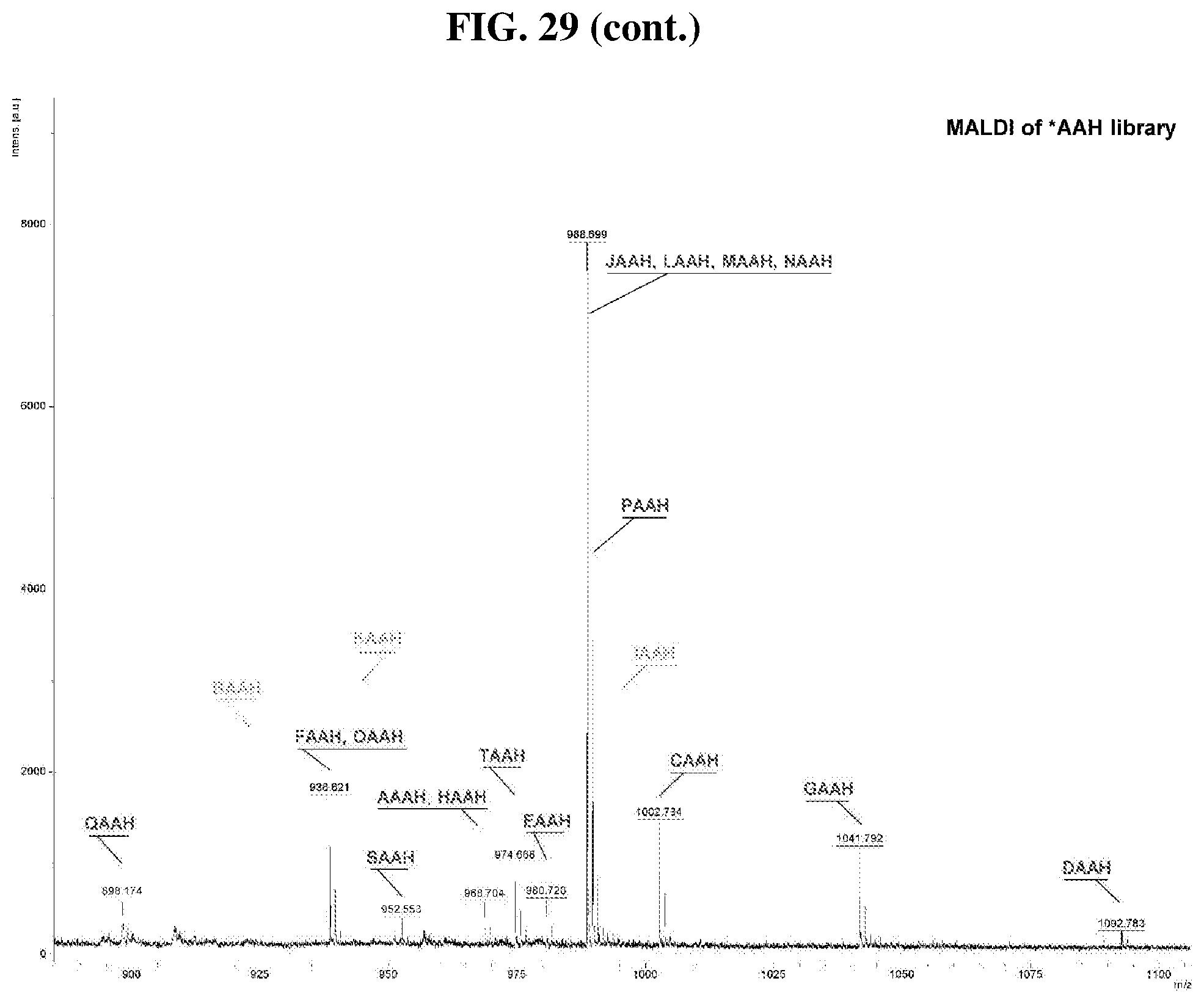
D00035
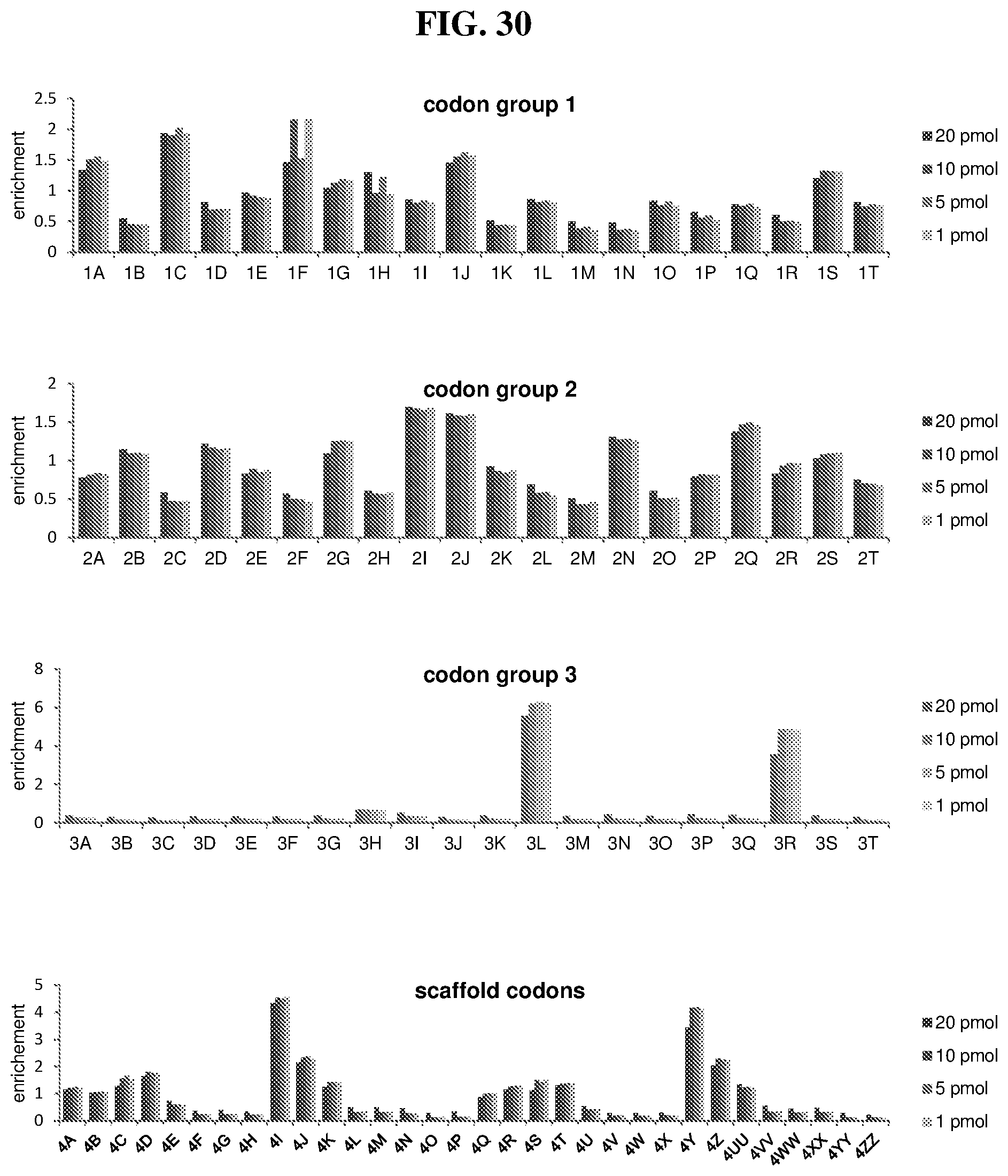
D00036

D00037
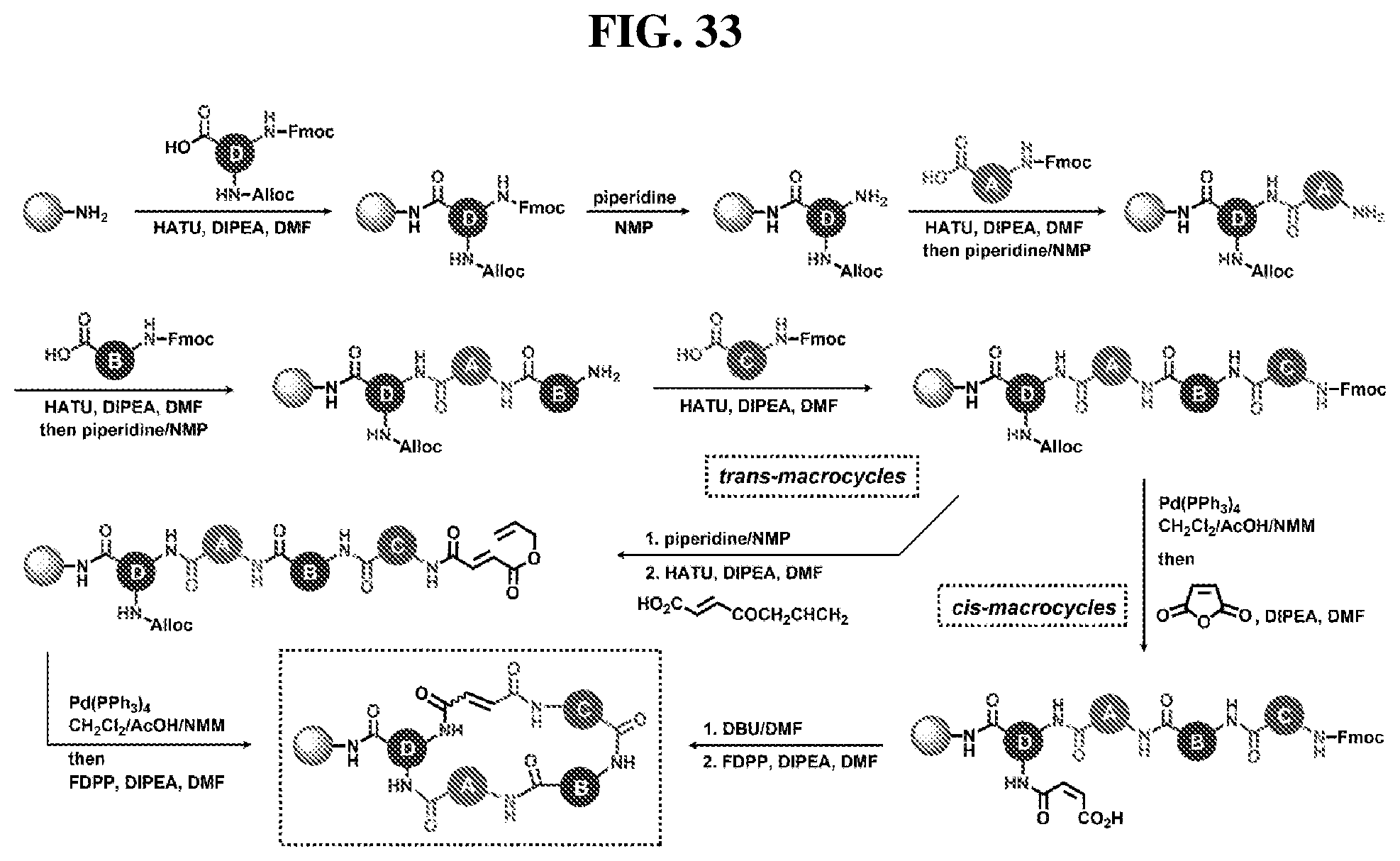
D00038
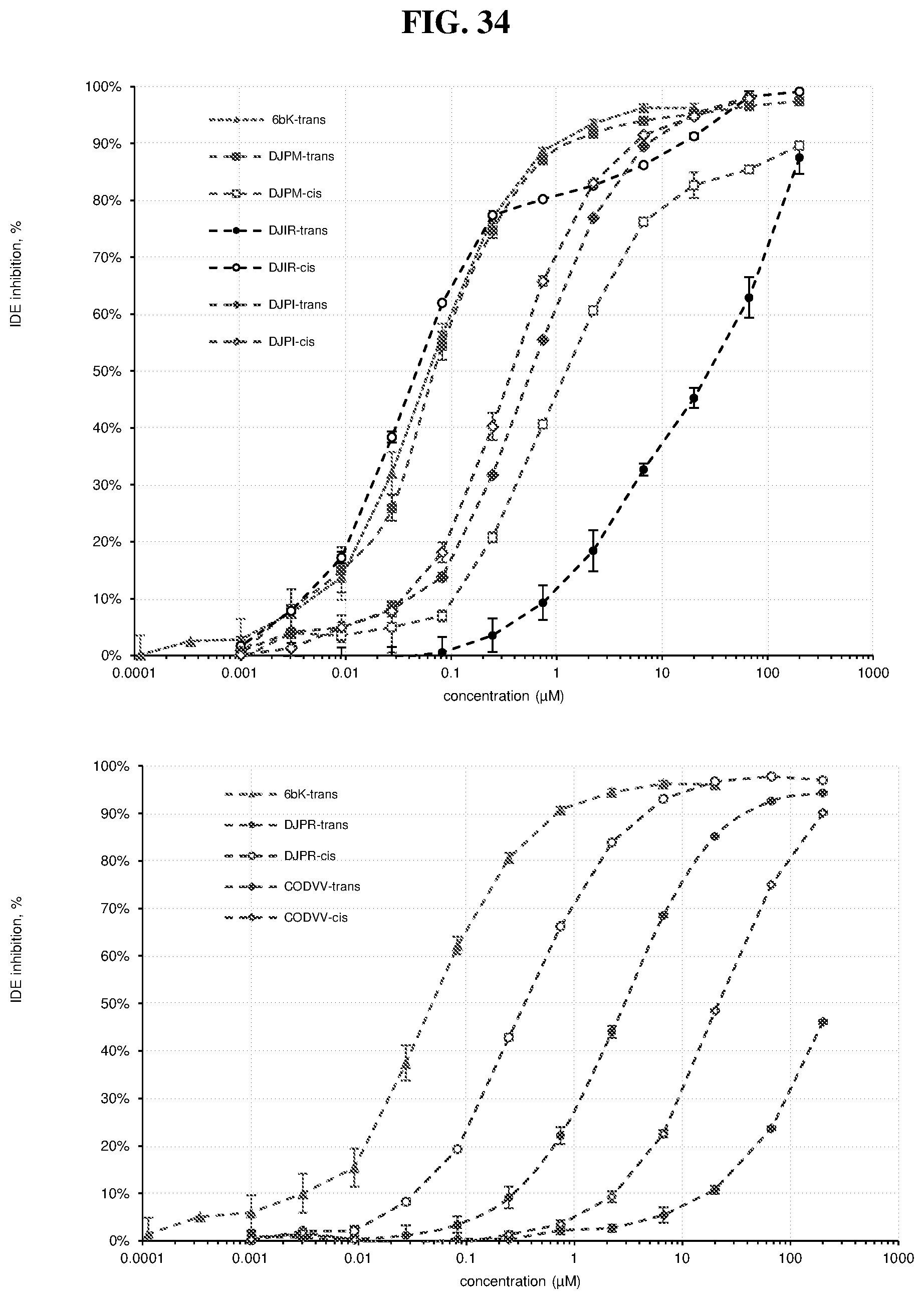
D00039

D00040

D00041
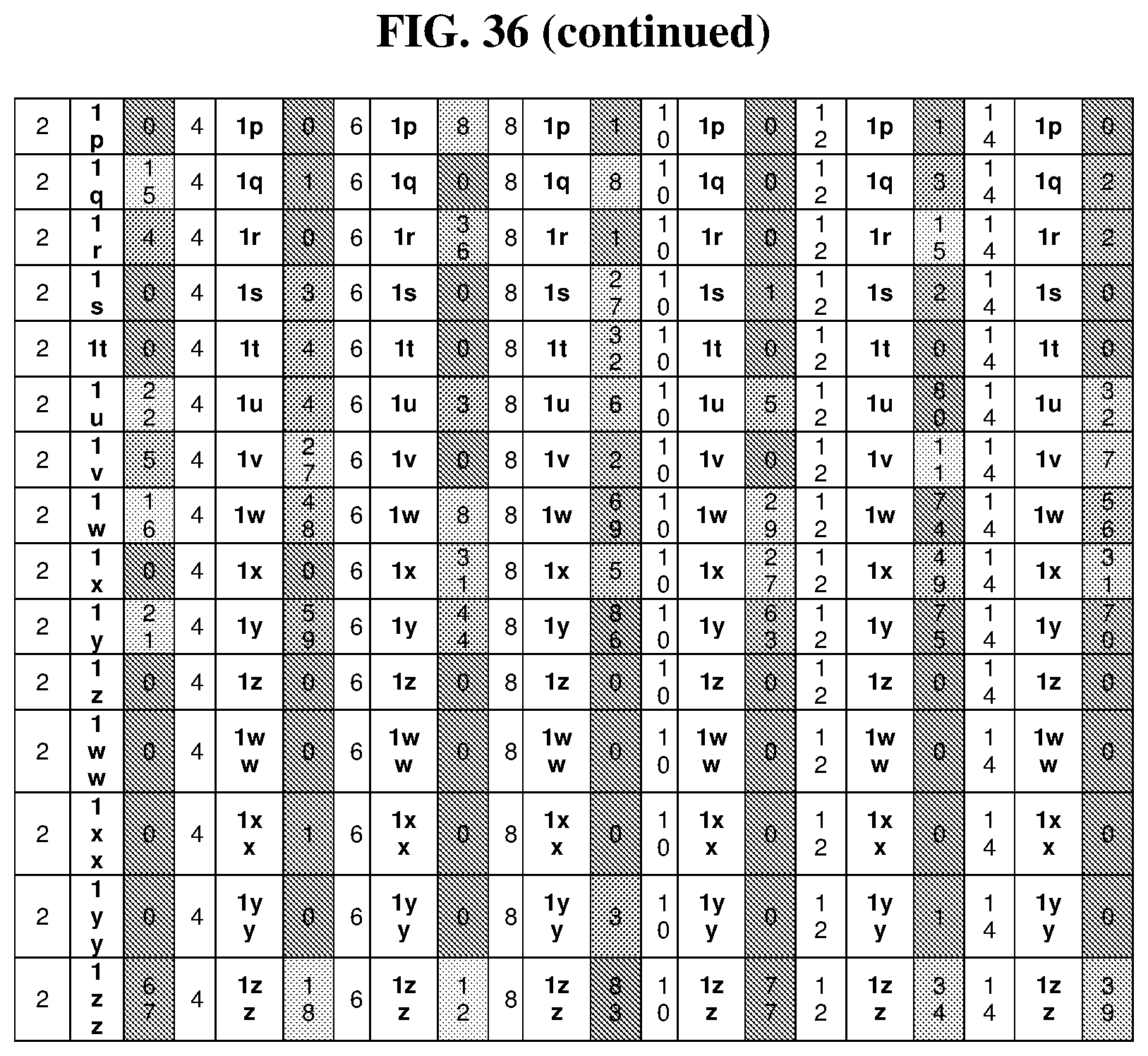
D00042
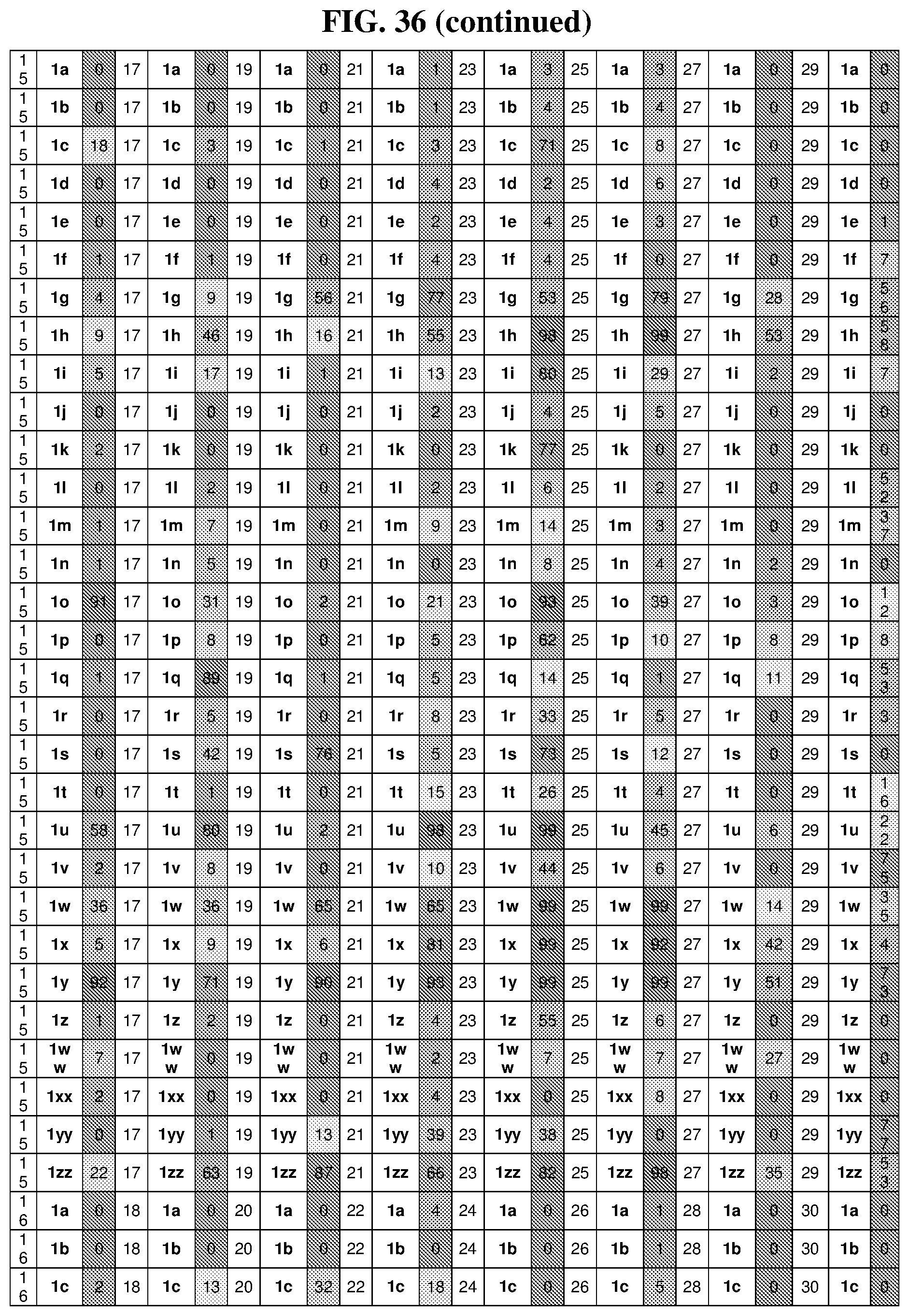
D00043

D00044
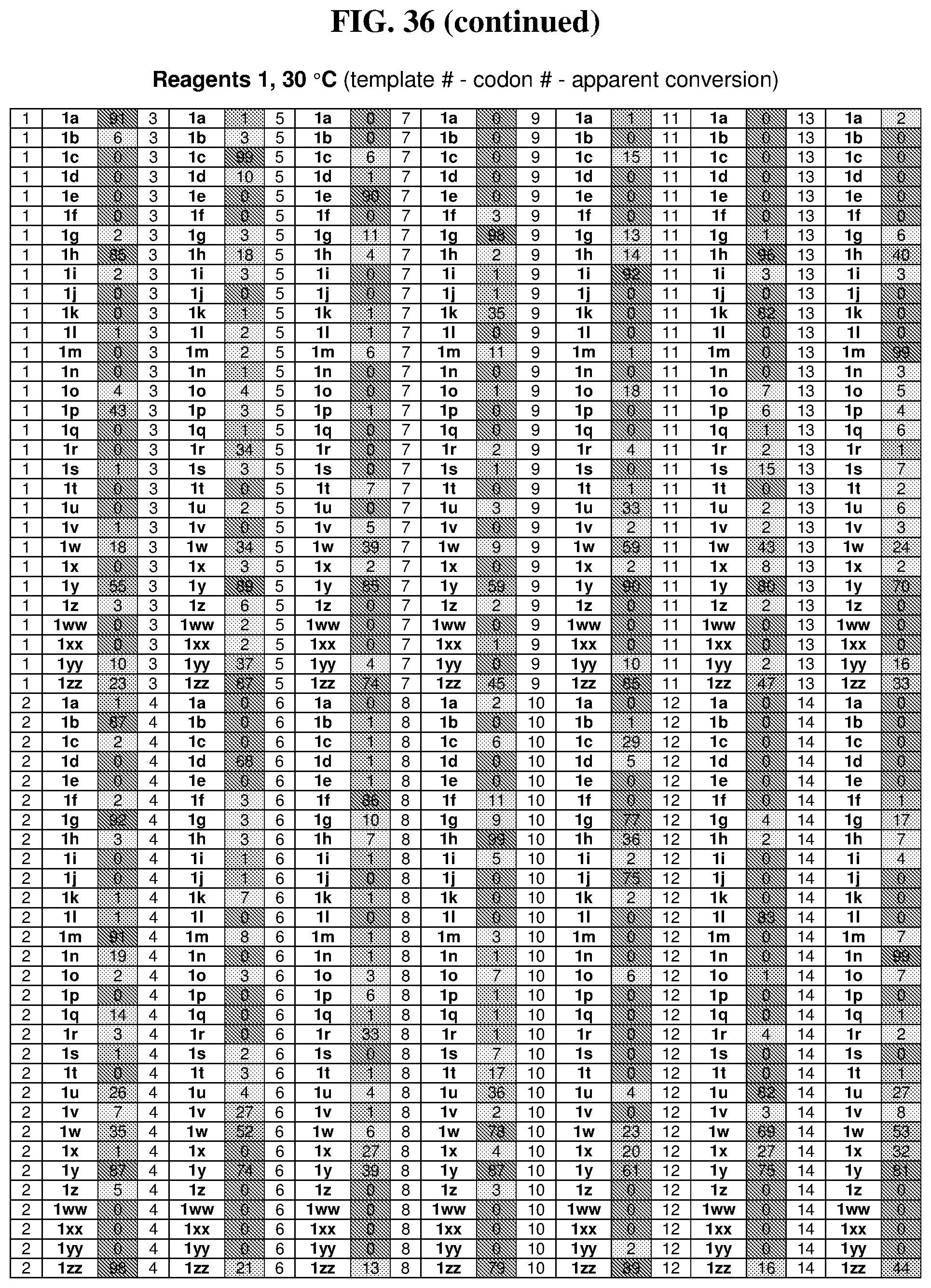
D00045

D00046
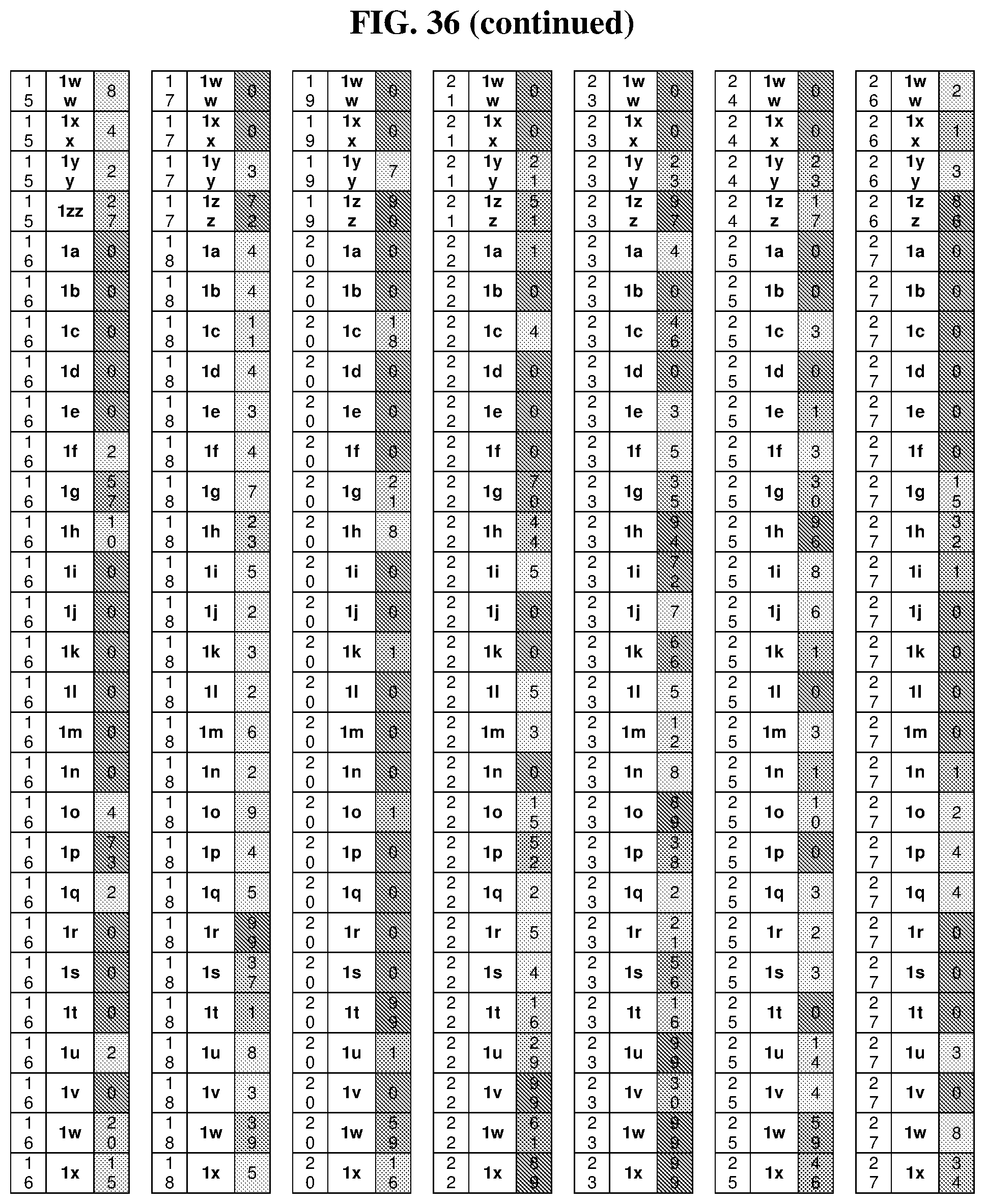
D00047

D00048

D00049

D00050
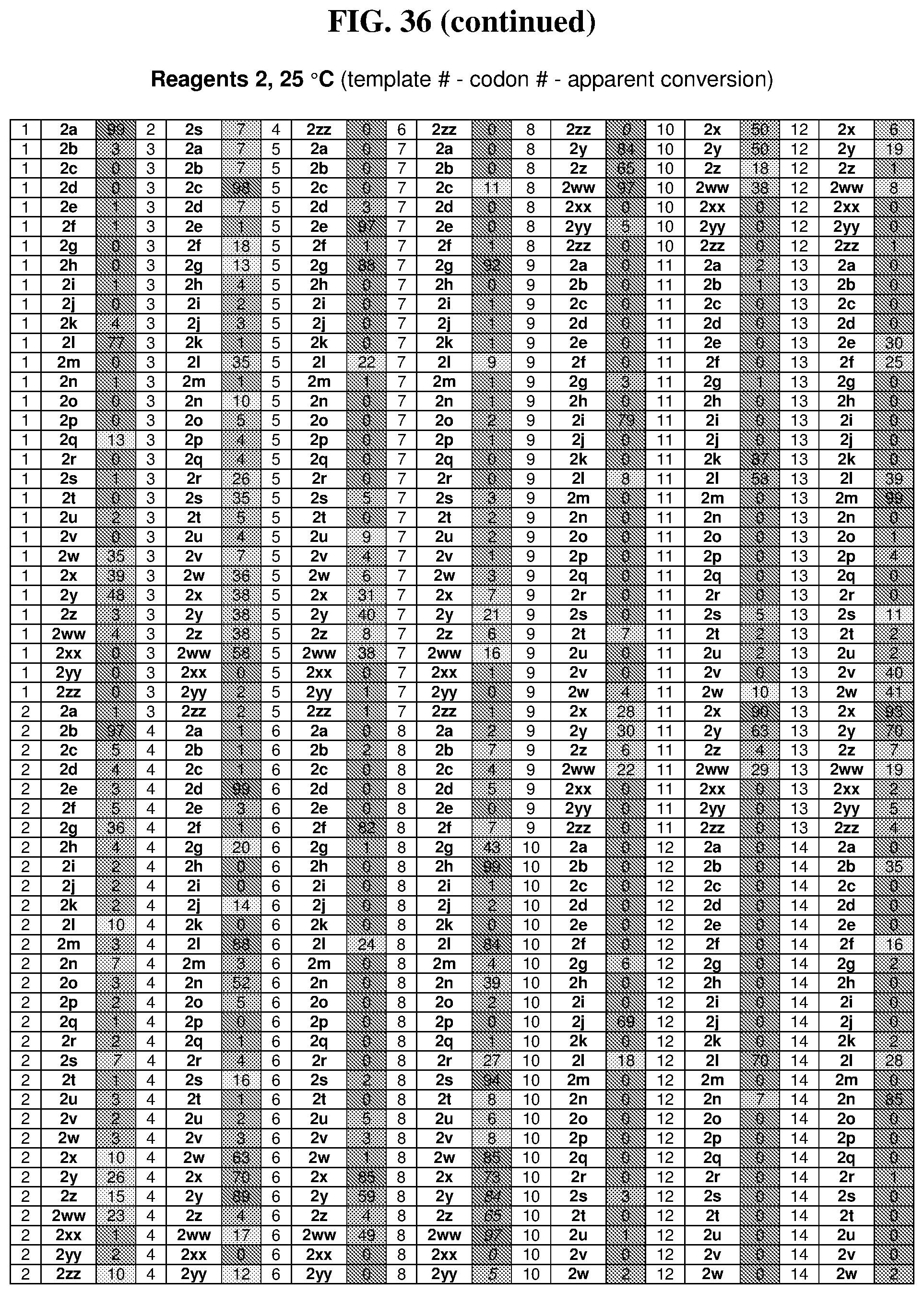
D00051
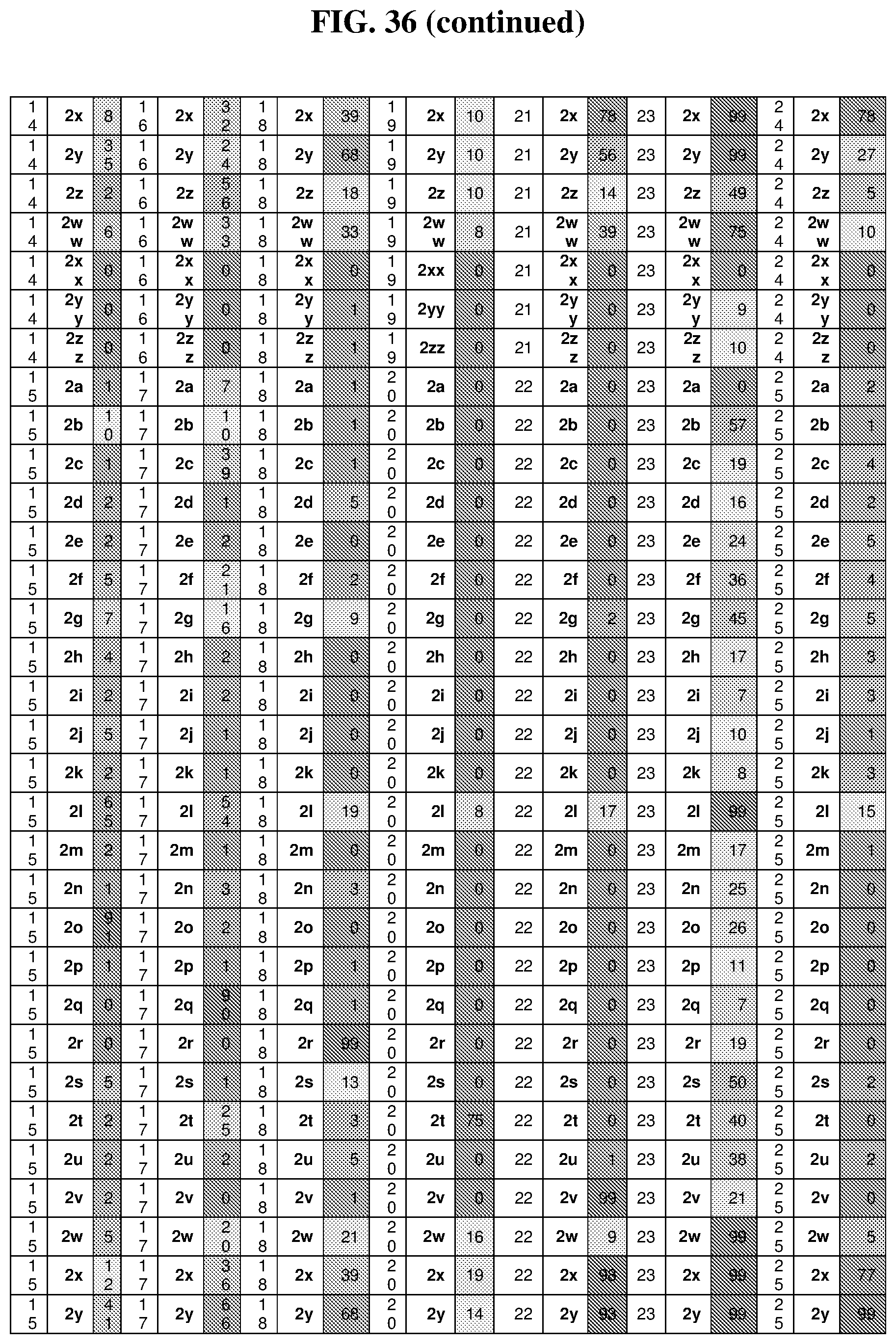
D00052
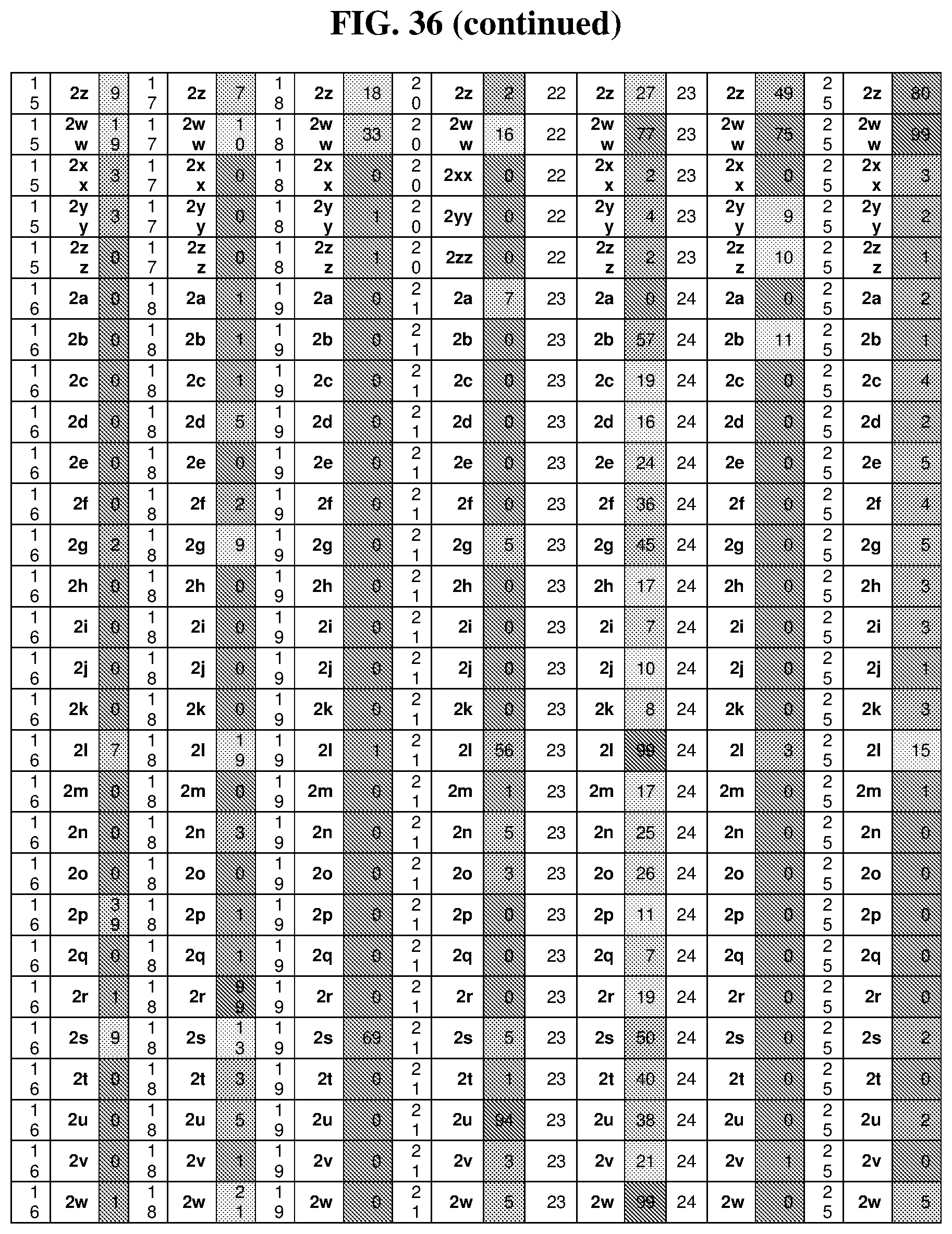
D00053

D00054
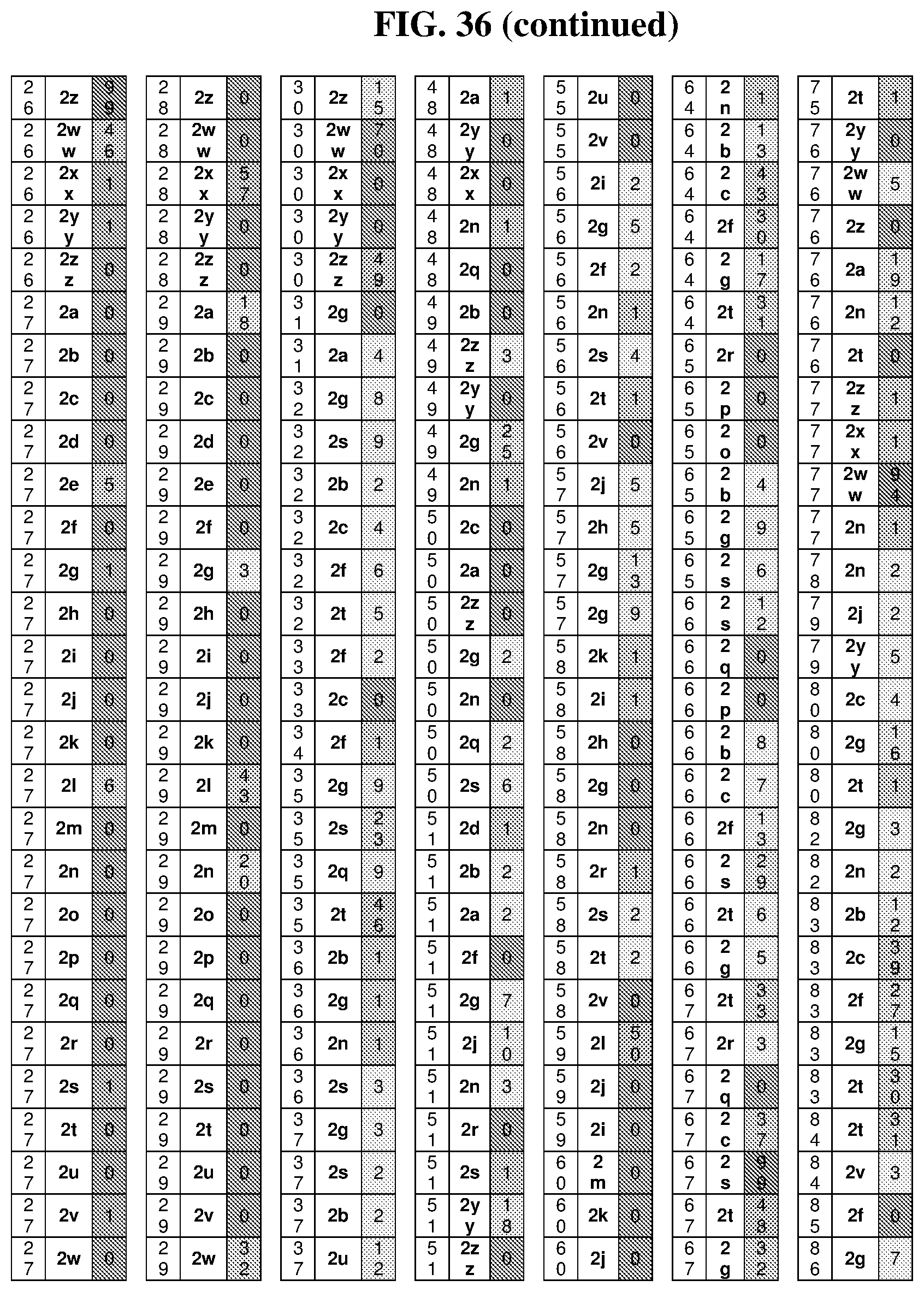
D00055
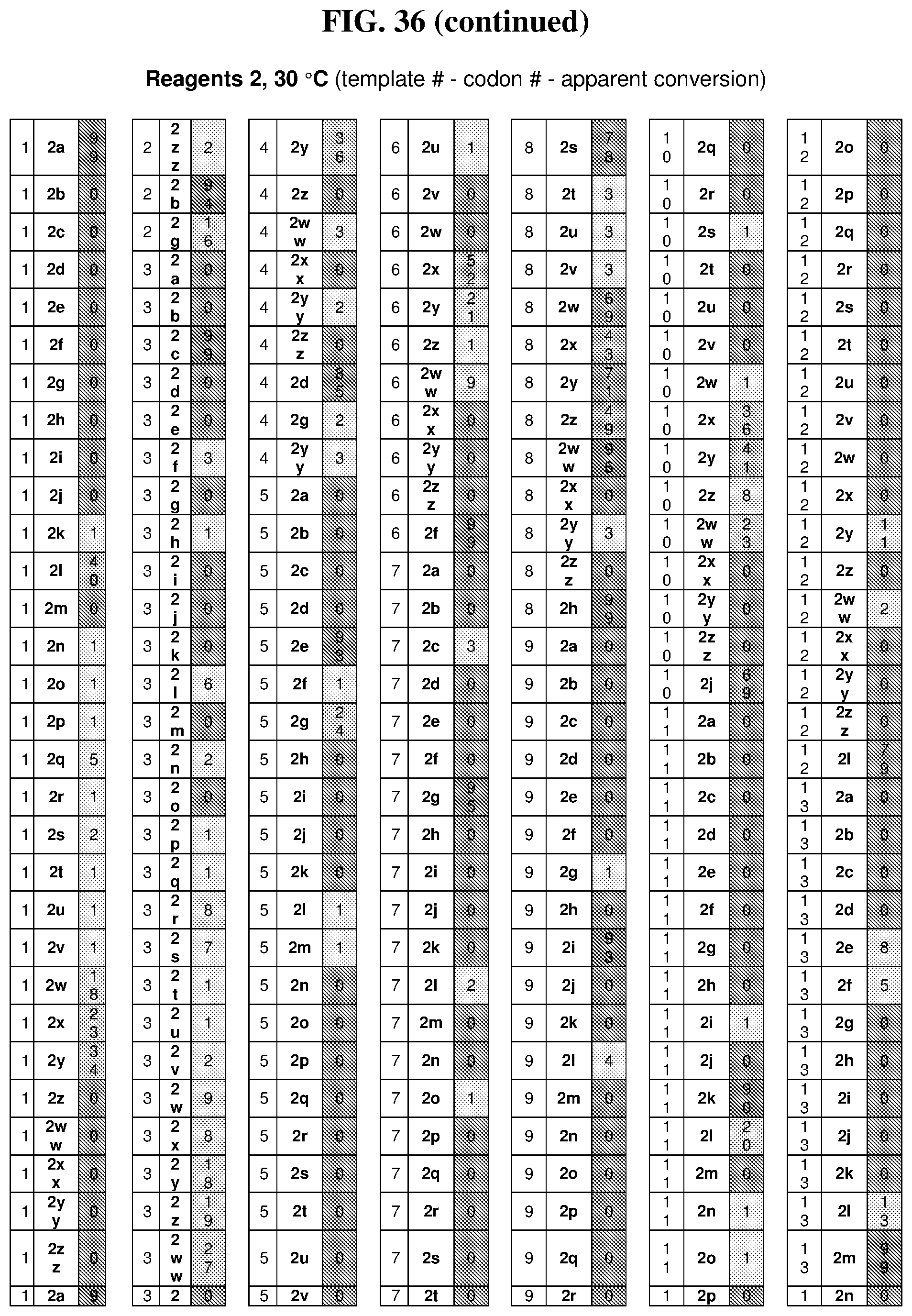
D00056
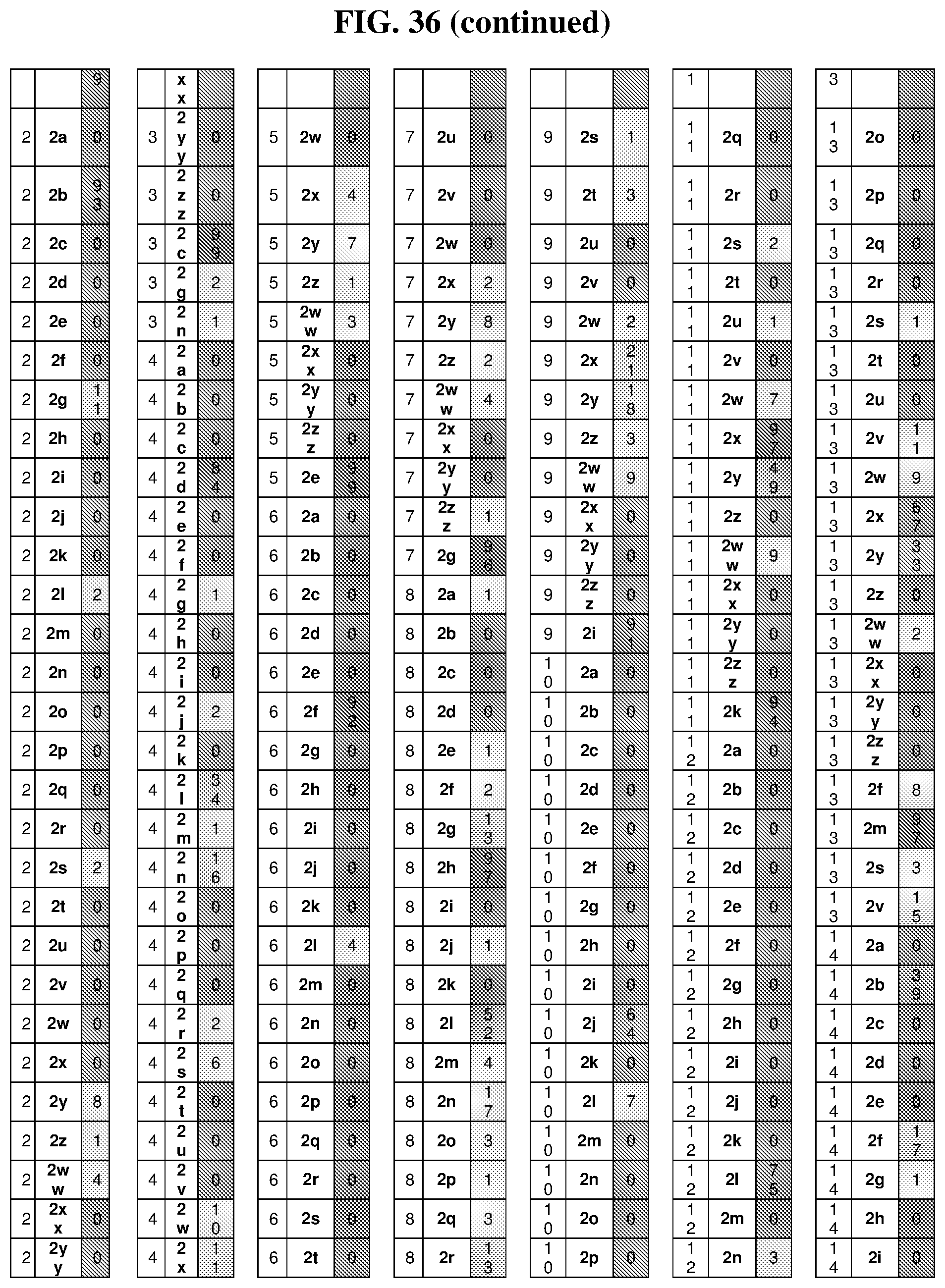
D00057
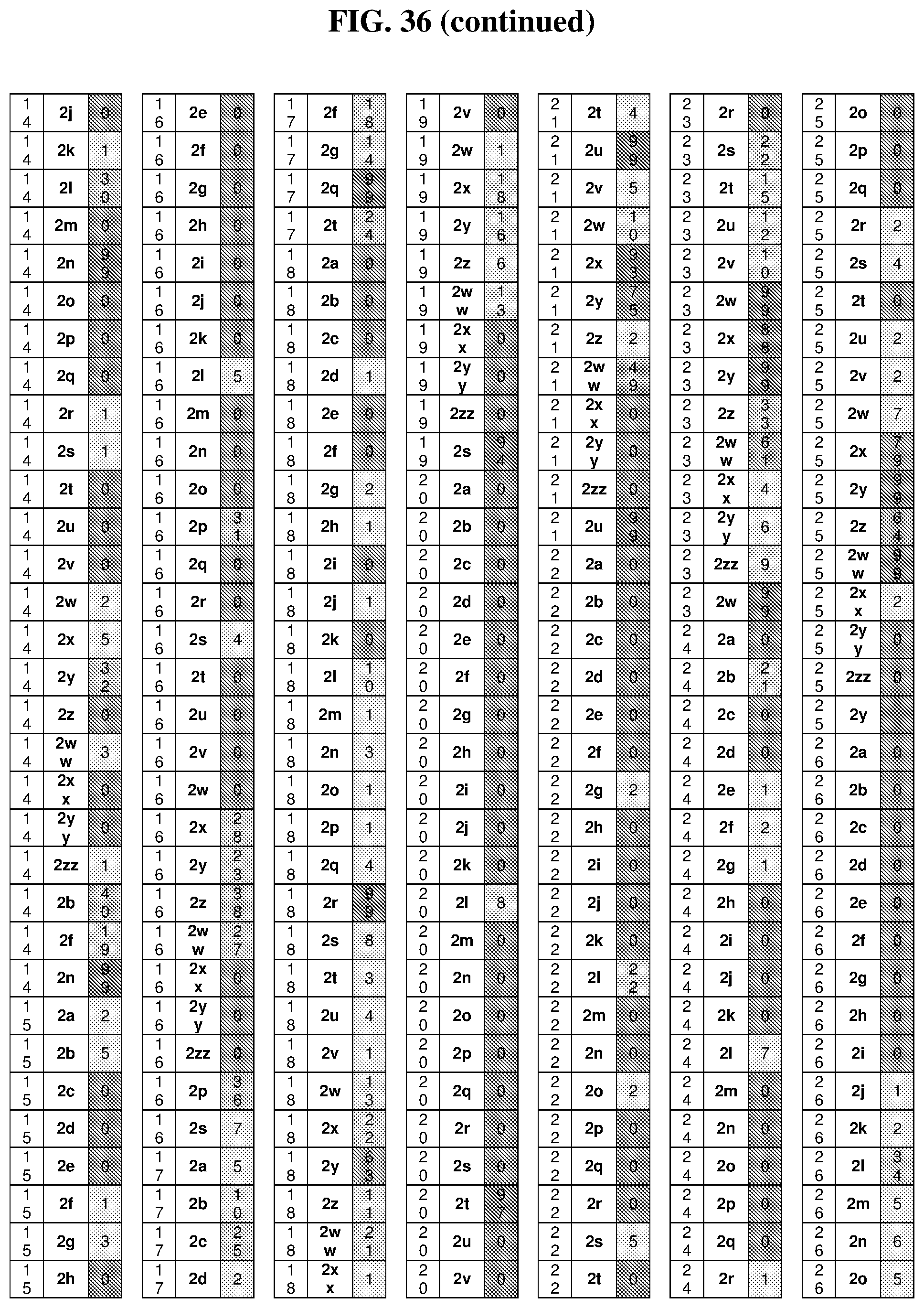
D00058

D00059
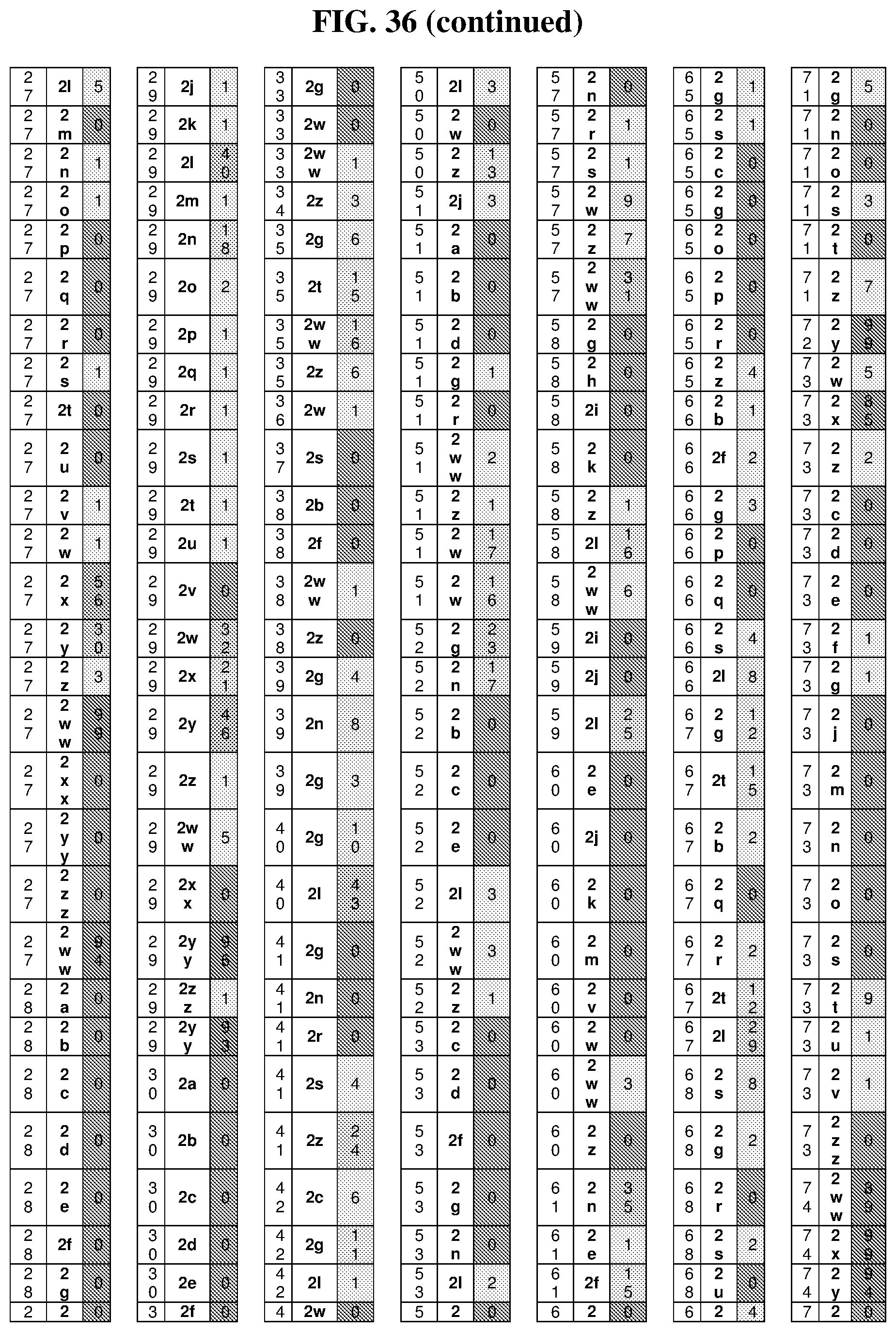
D00060
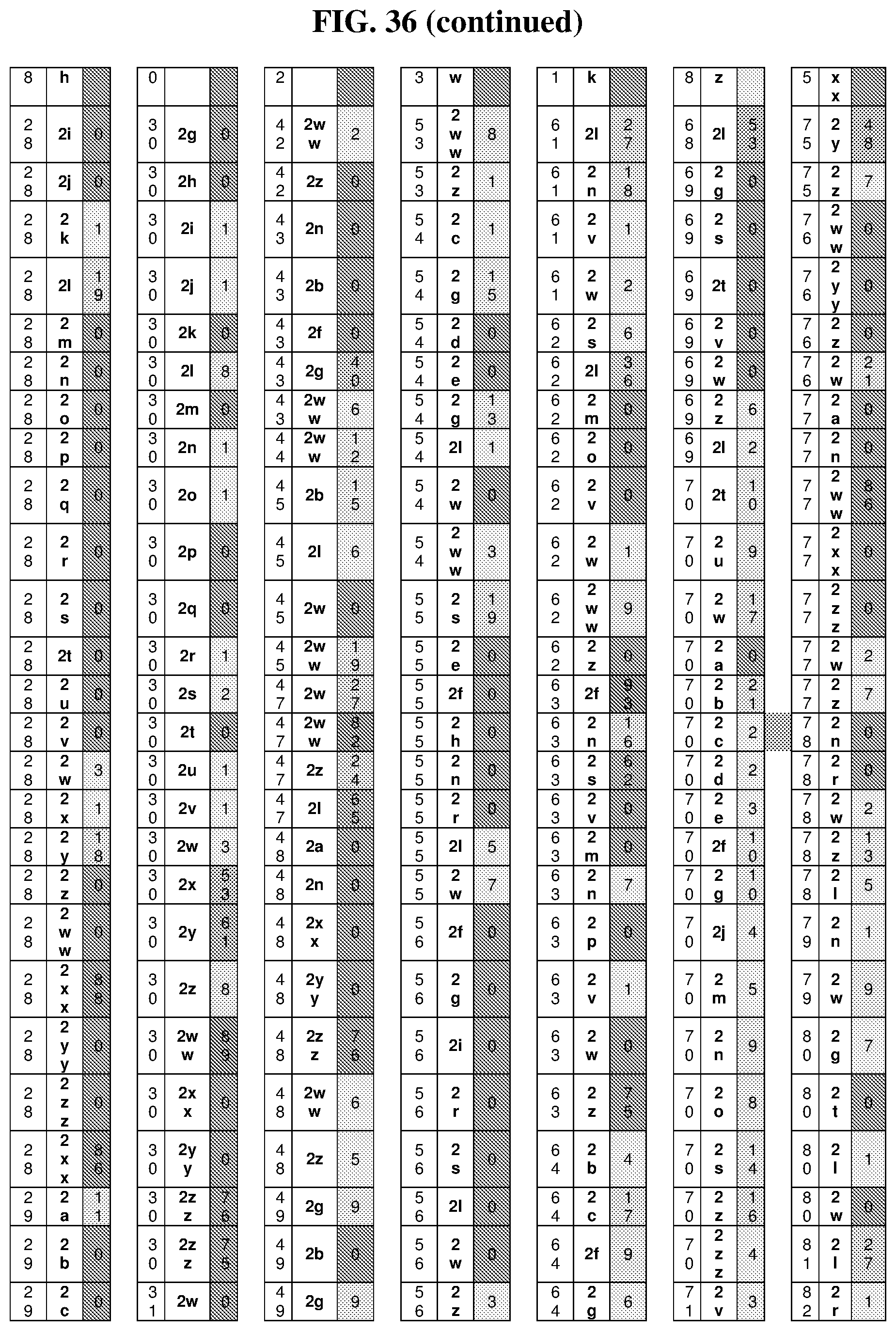
D00061

D00062

D00063

D00064

D00065

D00066

D00067
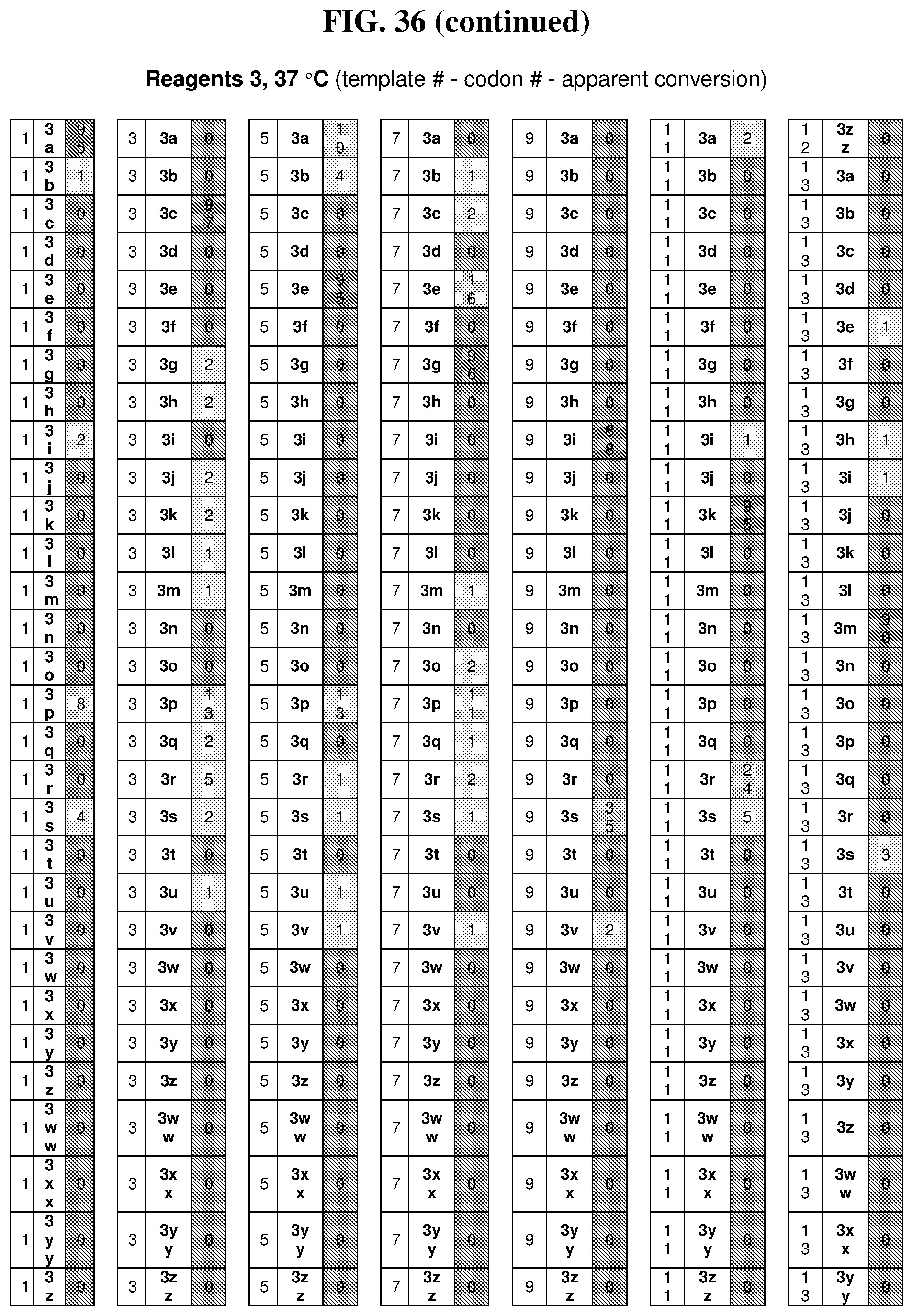
D00068
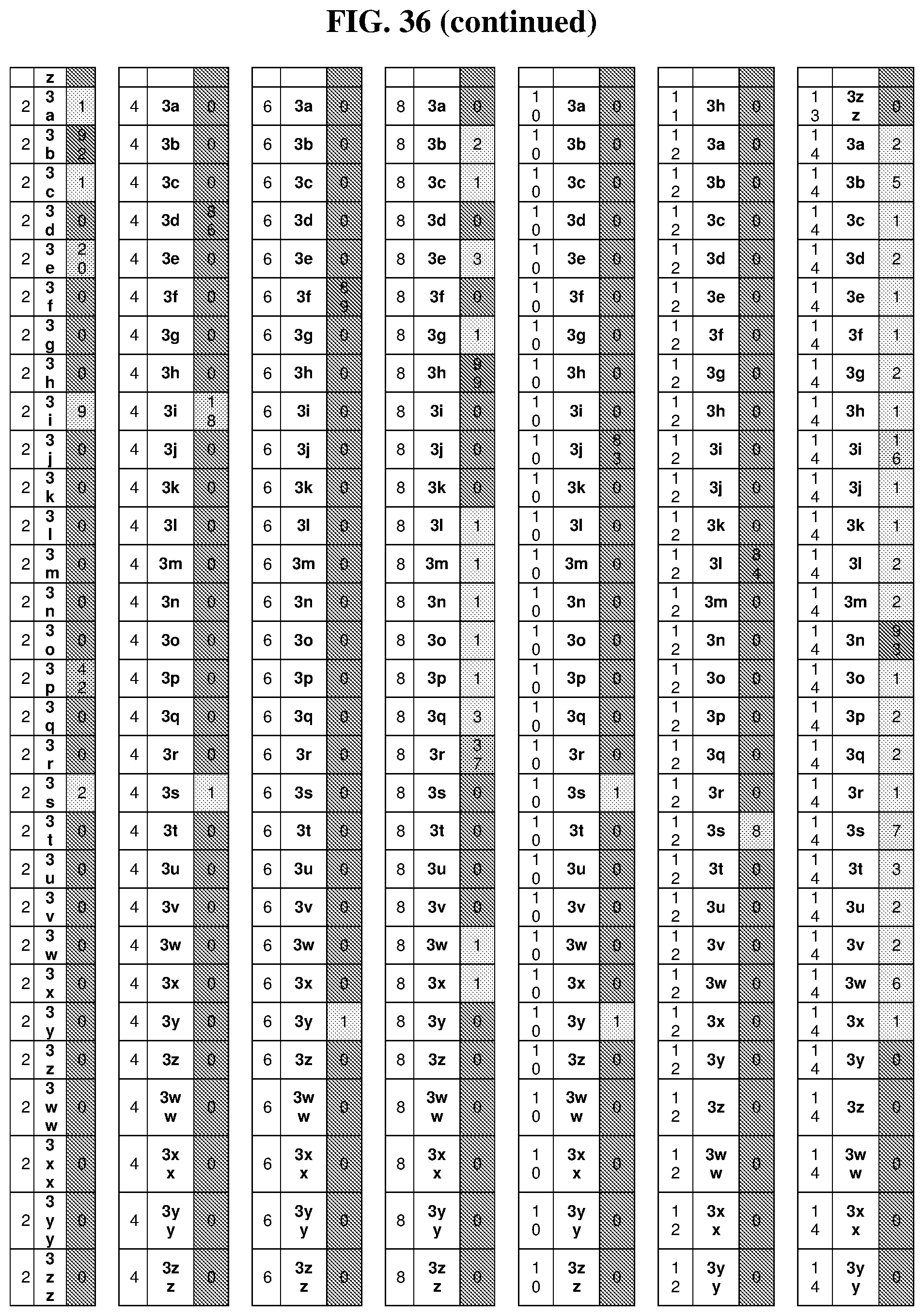
D00069
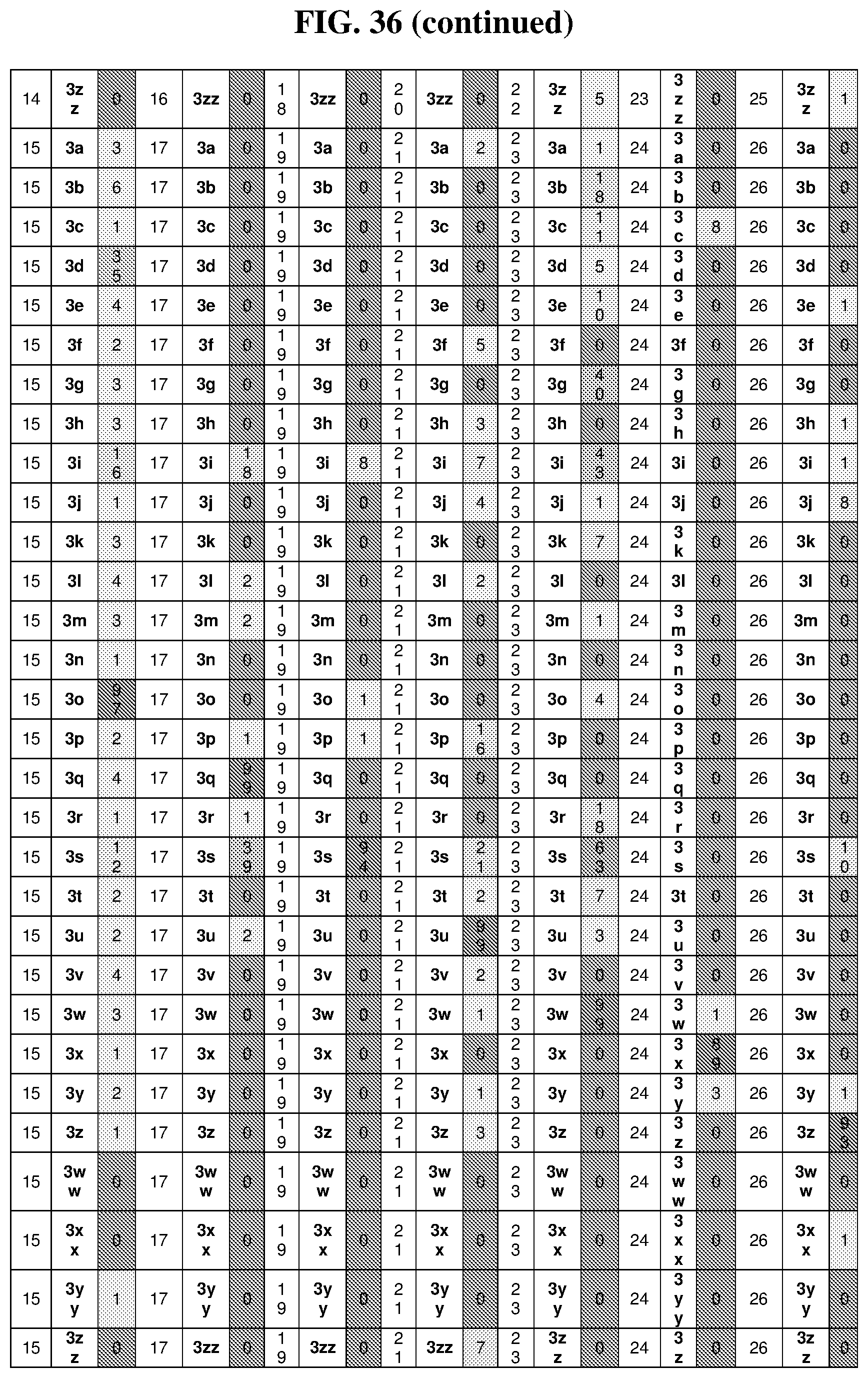
D00070
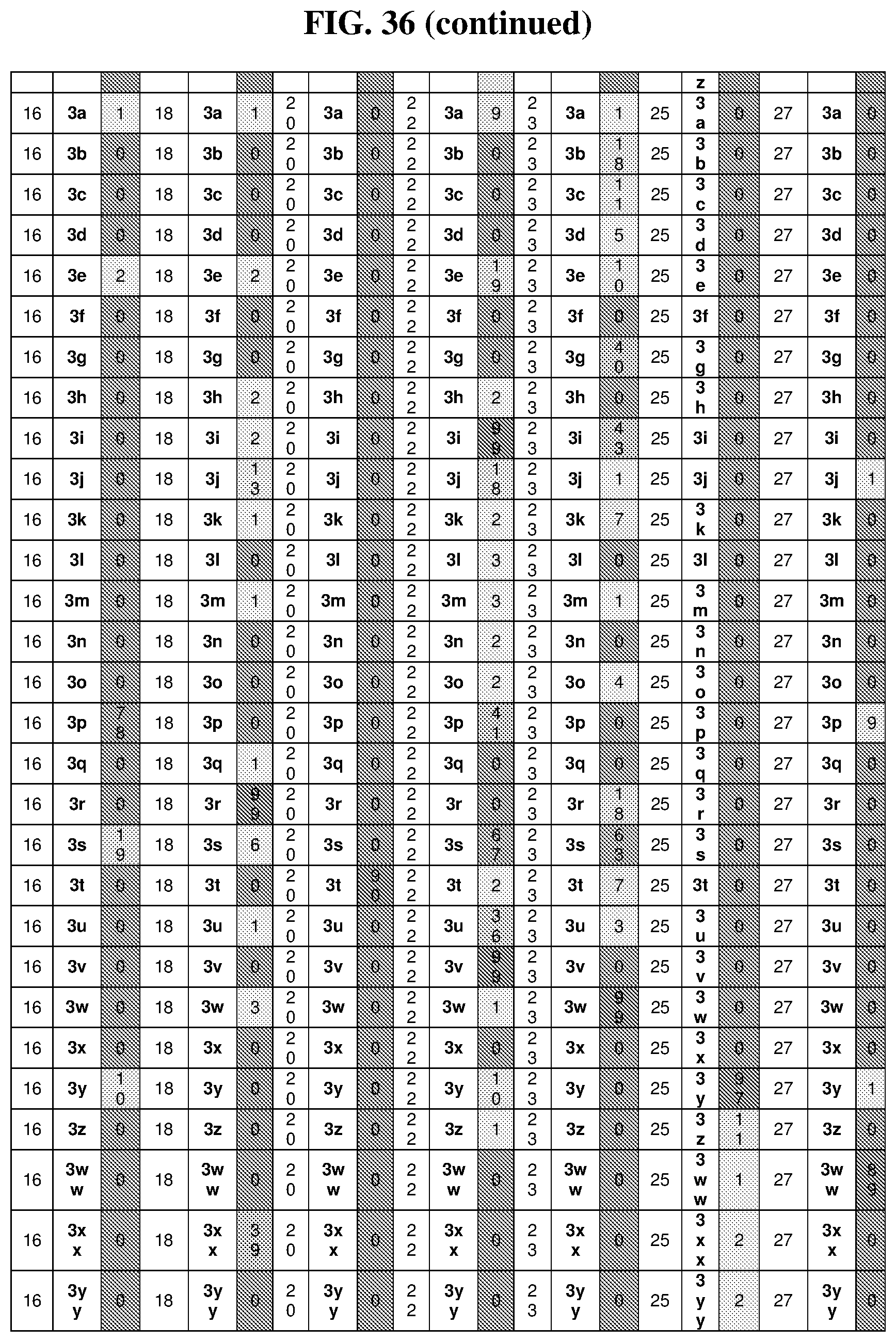
D00071
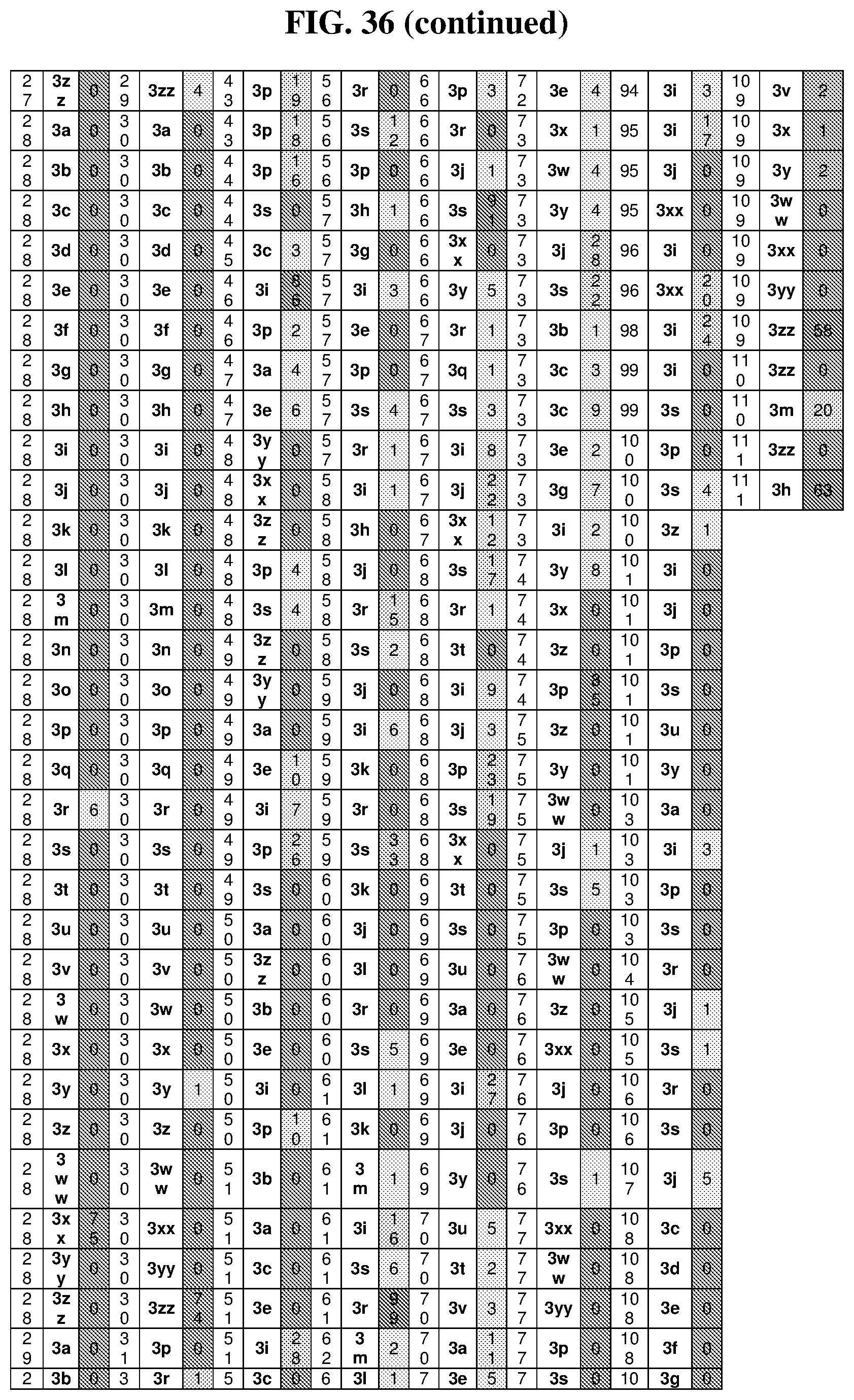
D00072
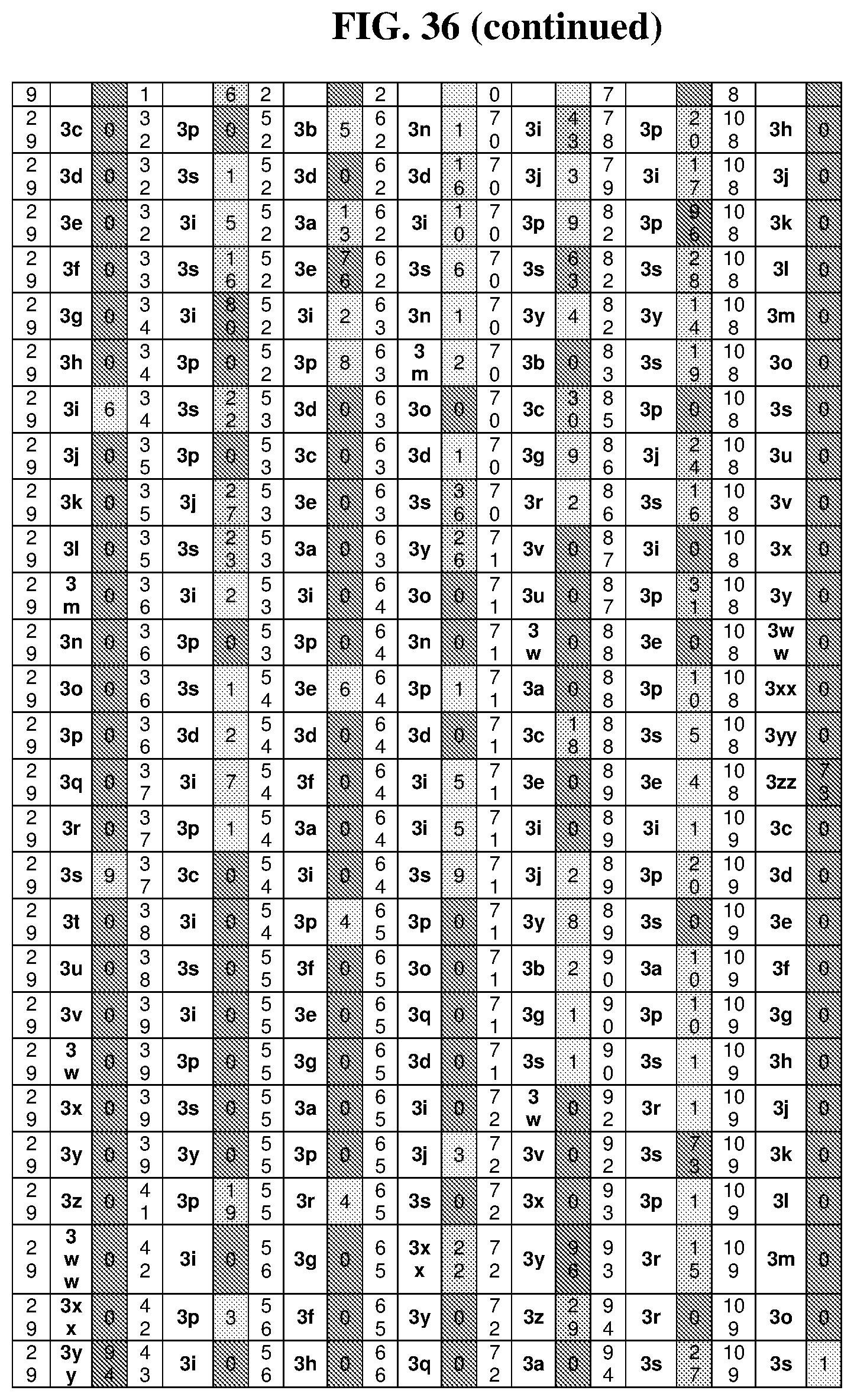
D00073

P00001

P00002

P00003
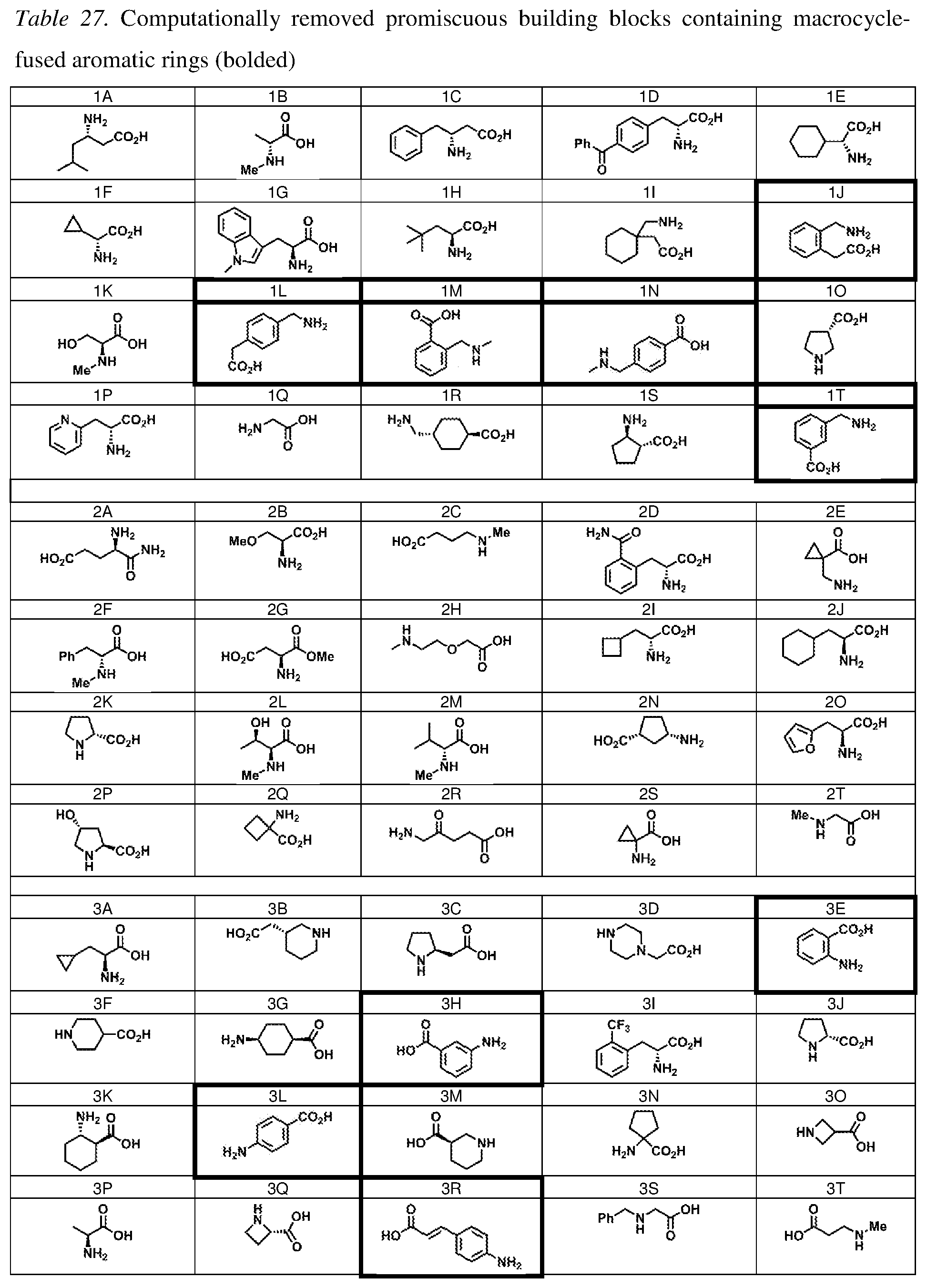
S00001
XML
uspto.report is an independent third-party trademark research tool that is not affiliated, endorsed, or sponsored by the United States Patent and Trademark Office (USPTO) or any other governmental organization. The information provided by uspto.report is based on publicly available data at the time of writing and is intended for informational purposes only.
While we strive to provide accurate and up-to-date information, we do not guarantee the accuracy, completeness, reliability, or suitability of the information displayed on this site. The use of this site is at your own risk. Any reliance you place on such information is therefore strictly at your own risk.
All official trademark data, including owner information, should be verified by visiting the official USPTO website at www.uspto.gov. This site is not intended to replace professional legal advice and should not be used as a substitute for consulting with a legal professional who is knowledgeable about trademark law.